Intel 533ANH Intel WiFi Link 5300 User Manual Contents
Intel Mobile Communications Intel WiFi Link 5300 Contents
Intel >
Contents
- 1. XP User Guide 1 of 2
- 2. XP User Guide 2 of 2
- 3. User Manual 1
- 4. User Manual 2
- 5. User Manual
XP User Guide 2 of 2
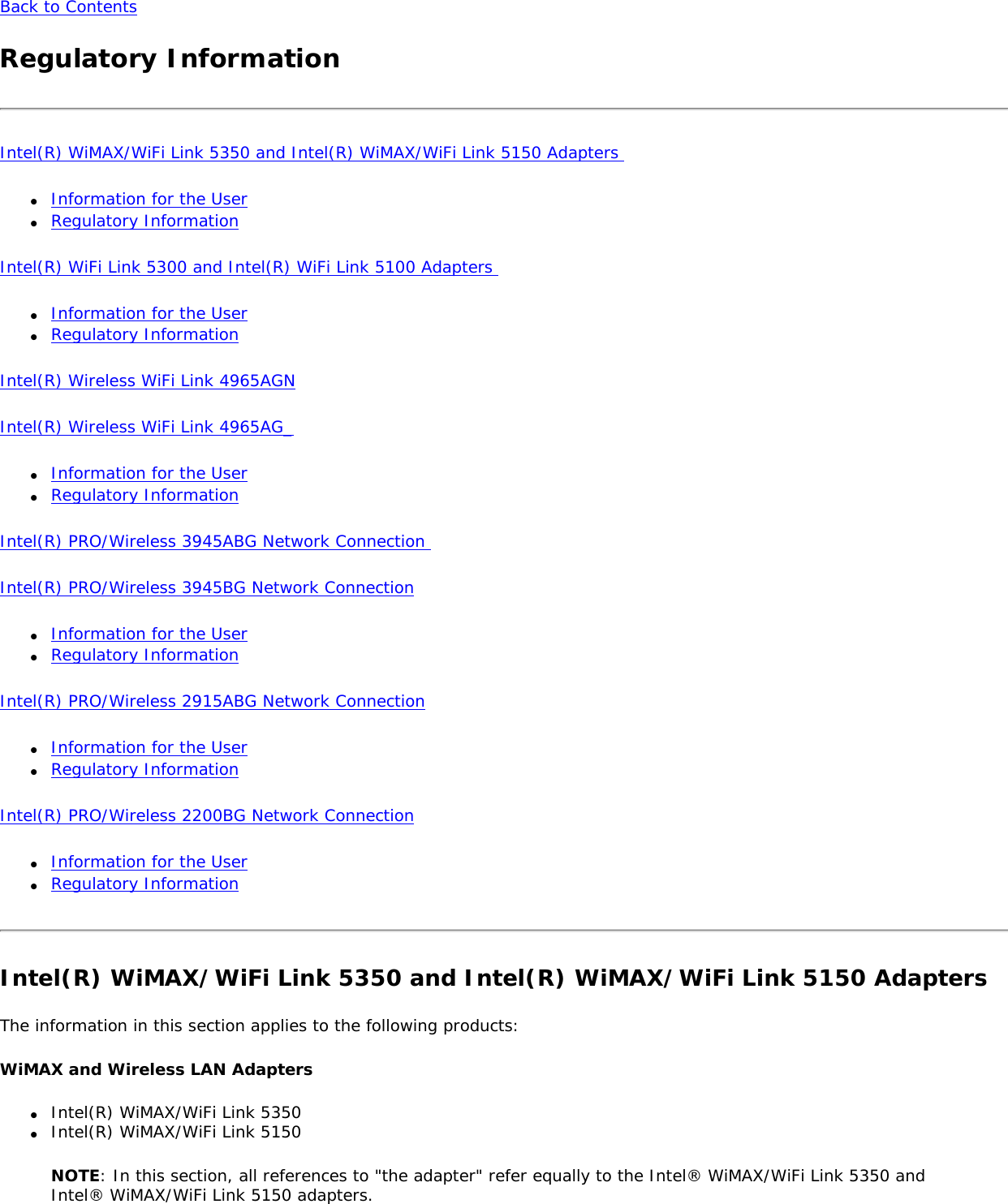
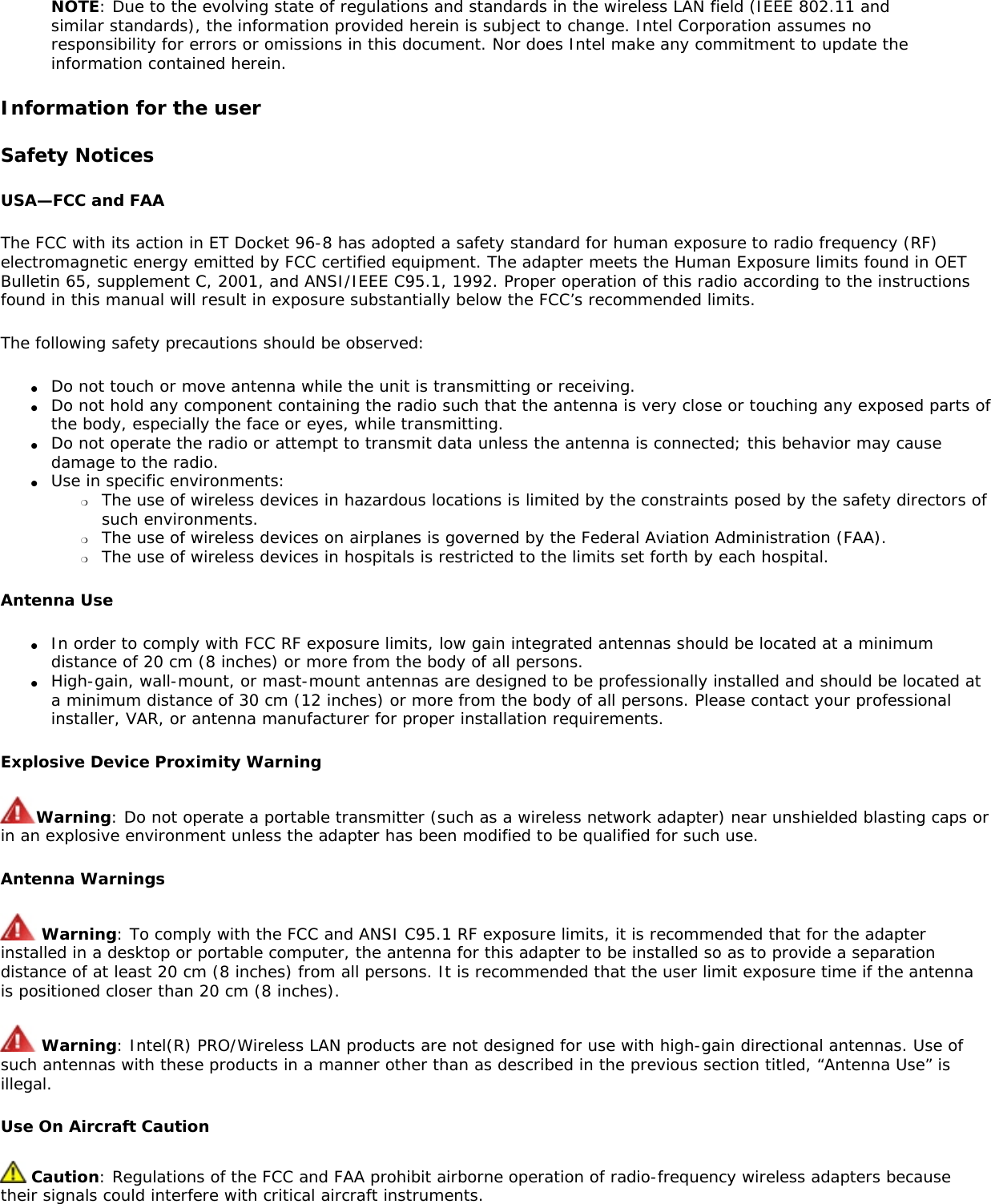
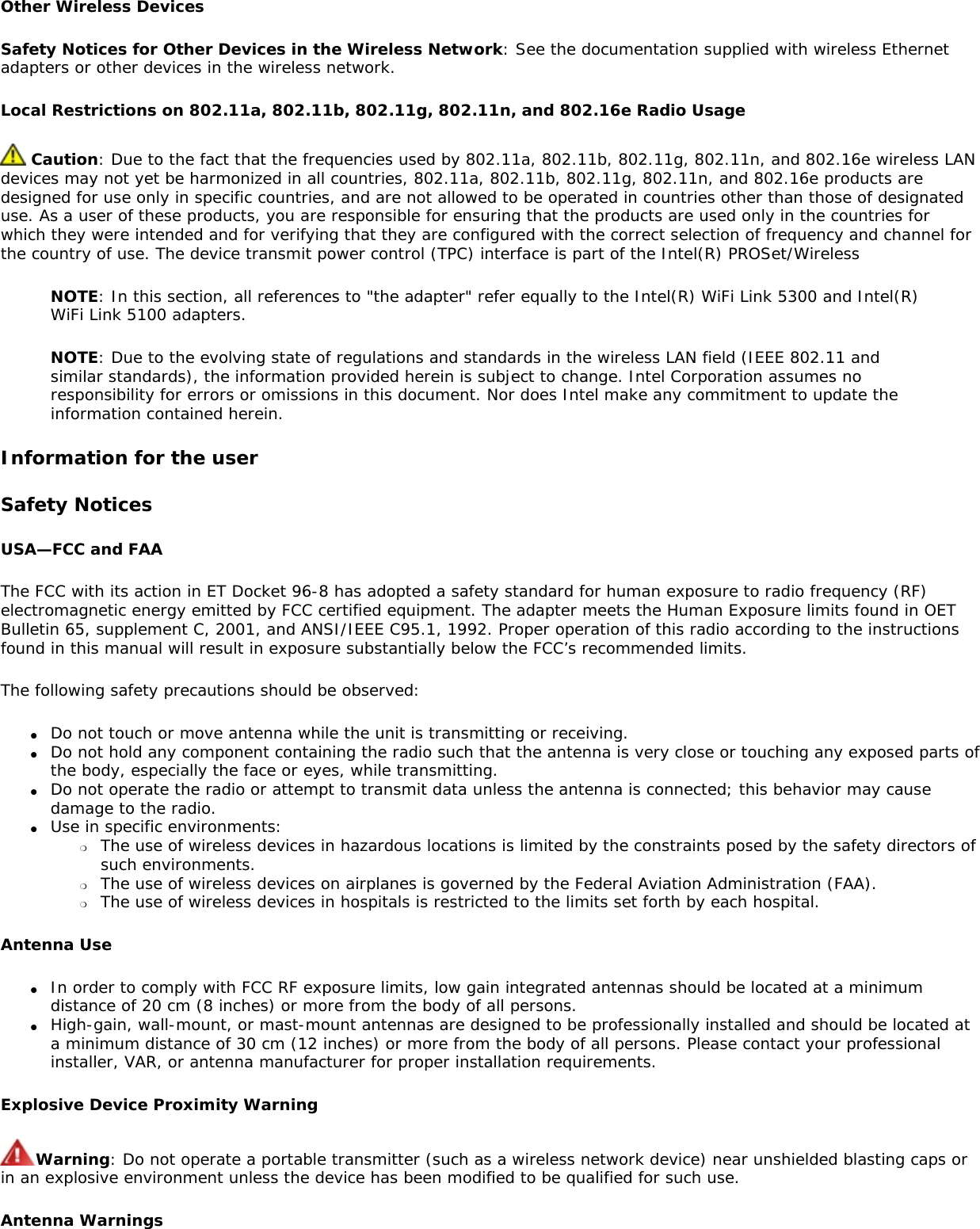
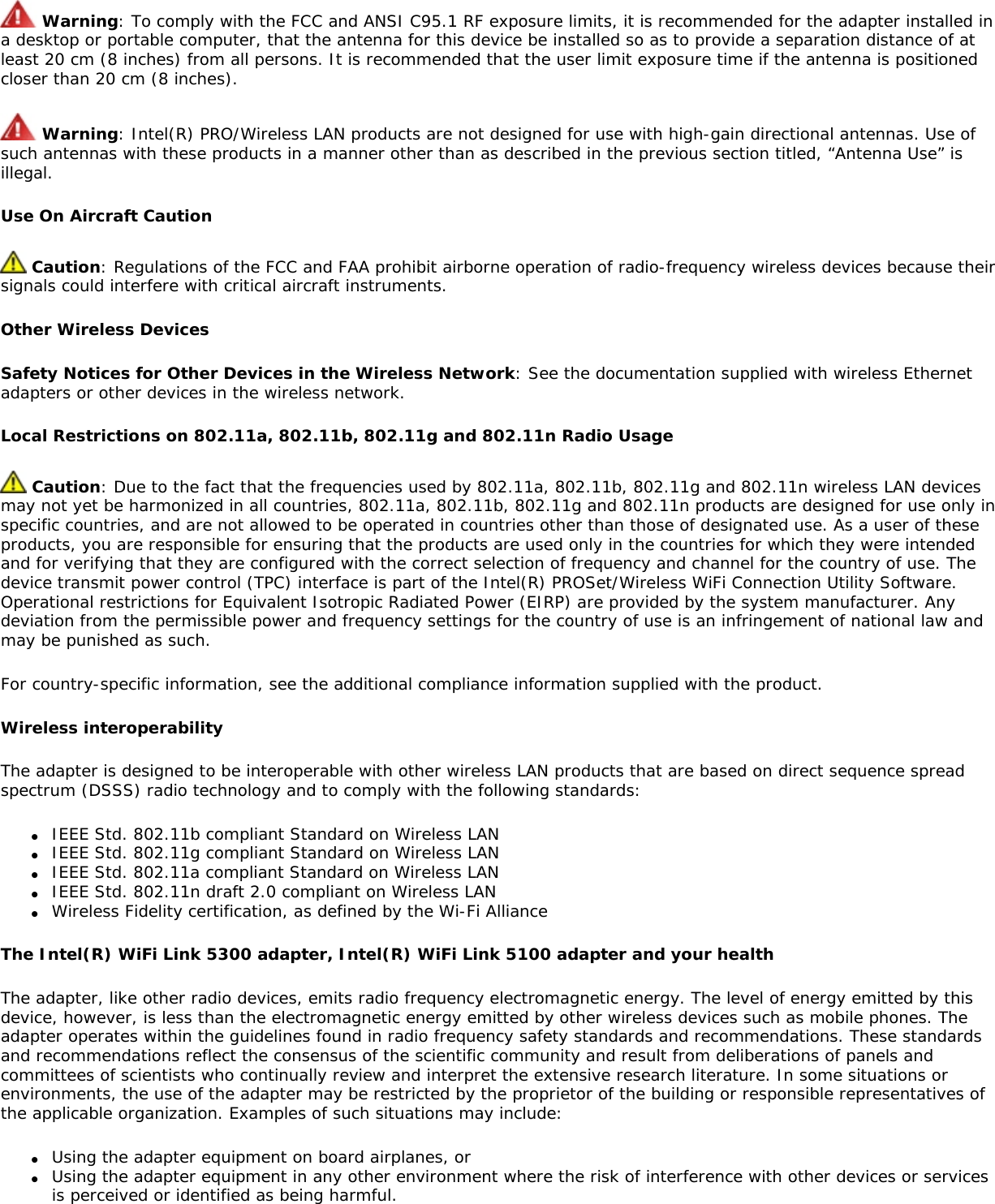
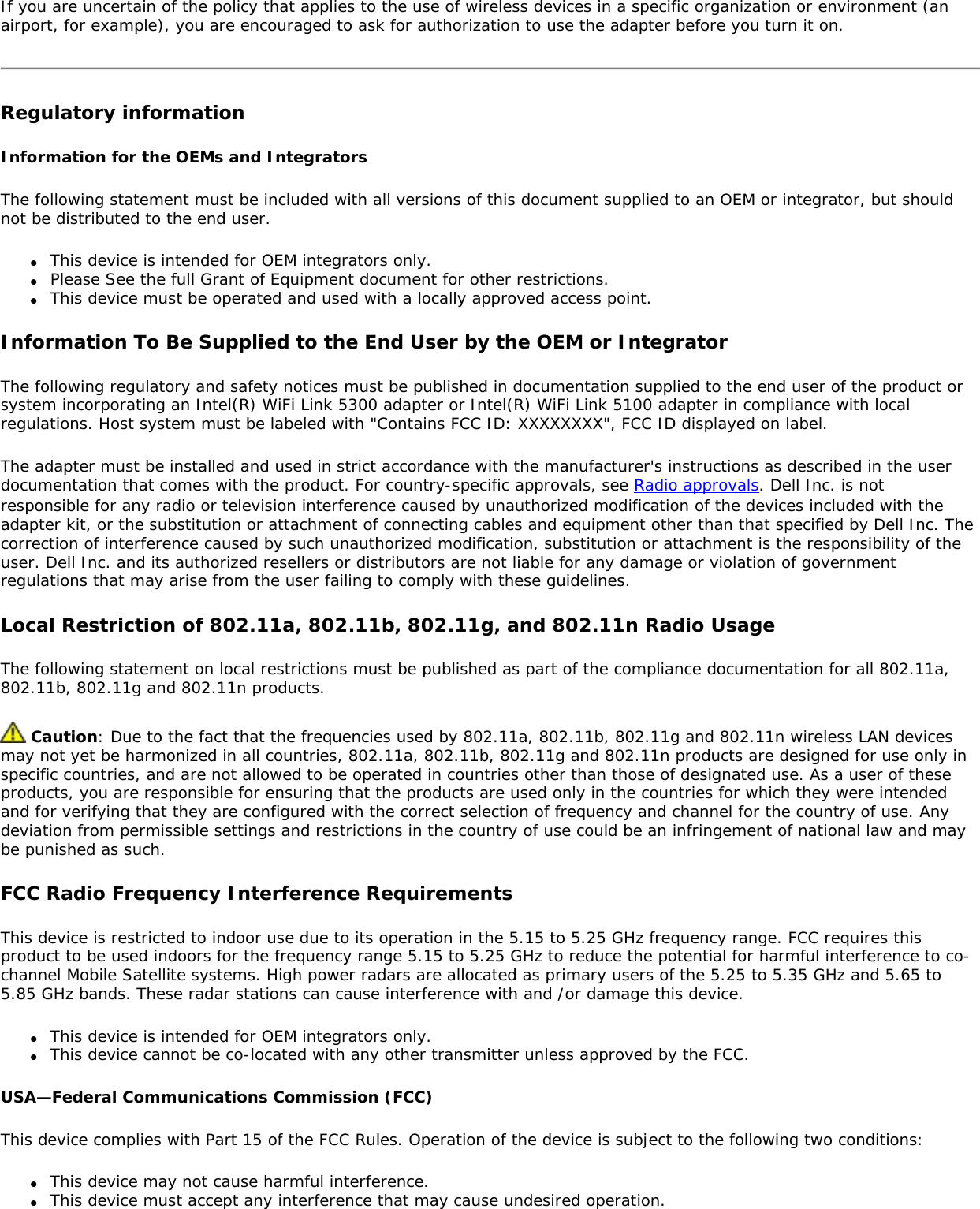
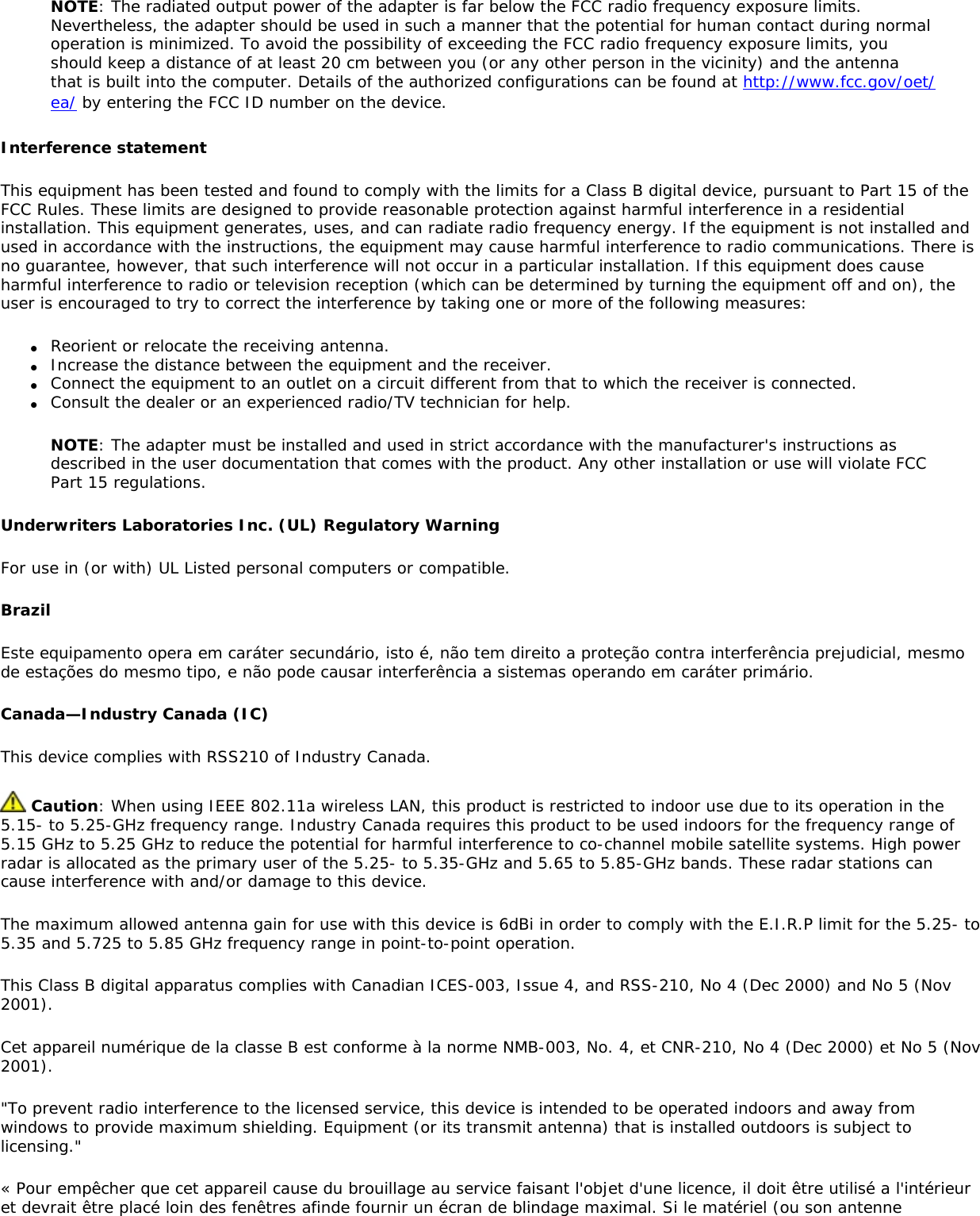
![d'émission) est installé à l'extérieur, il doit faire l'objet d'une licence. » European Union The low band 5.15 -5.35 GHz is for indoor use only. Intel(R) WiFi Link 5300 Adapter Declaration of ConformityThe European Declaration of Conformity is available at the following site:http://www.intel.com/support/go/wireless/wlan/wf_reg.htmThis equipment complies with the essential requirements of the European Union directive 1999/5/EC.•esky [Czech] Intel(R) Corporation tímto prohlašuje, že tento Intel(R) WiFi Link 5300 je ve shod• se základními požadavky a dalšími p•íslušnými ustanoveními sm•rnice 1999/5/ES.Dansk [Danish] Undertegnede Intel(R) Corporation erklærer herved, at følgende udstyr Intel(R) WiFi Link 5300 overholder de væsentlige krav og øvrige relevante krav i direktiv 1999/5/EF.Deutsch [German] Hiermit erklärt Intel(R) Corporation, dass sich das Gerät Intel(R) WiFi Link 5300 in Übereinstimmung mit den grundlegenden Anforderungen und den übrigen einschlägigen Bestimmungen der Richtlinie 1999/5/EG befindet. Esti [Estonian] Käesolevaga kinnitab Intel(R) Corporation seadme Intel(R) WiFi Link 5300 vastavust direktiivi 1999/5/EÜ põhinõuetele ja nimetatud direktiivist tulenevatele teistele asjakohastele sätetele.English Hereby, Intel(R) Corporation, declares that this Intel(R) WiFi Link 5300 is in compliance with the essential requirements and other relevant provisions of Directive 1999/5/EC.Español [Spanish] Por medio de la presente Intel(R) Corporation declara que el Intel(R) WiFi Link 5300 cumple con los requisitos esenciales y cualesquiera otras disposiciones aplicables o exigibles de la Directiva 1999/5/CE. Ελληνικ• [Greek] ΜΕ ΤΗΝ ΠΑΡΟΥΣΑ Intel(R) Corporation ∆ΗΛΩΝΕΙ ΟΤΙ Intel(R) WiFi Link 5300 ΣΥΜΜΟΡΦΩΝΕΤΑΙ ΠΡΟΣ ΤΙΣ ΟΥΣΙΩ∆ΕΙΣ ΑΠΑΙΤΗΣΕΙΣ ΚΑΙ ΤΙΣ ΛΟΙΠΕΣ ΣΧΕΤΙΚΕΣ ∆ΙΑΤΑΞΕΙΣ ΤΗΣ Ο∆ΗΓΙΑΣ 1999/5/ΕΚ.Français [French] Par la présente Intel(R) Corporation déclare que l'appareil Intel(R) WiFi Link 5300 est conforme aux exigences essentielles et aux autres dispositions pertinentes de la directive 1999/5/CE. Italiano [Italian] Con la presente Intel(R) Corporation dichiara che questo Intel(R) WiFi Link 5300 è conforme ai requisiti essenziali ed alle altre disposizioni pertinenti stabilite dalla direttiva 1999/5/CE. Latviski [Latvian] Ar šo Intel(R) Corporation deklar•, ka Intel(R) WiFi Link 5300 atbilst Direkt•vas 1999/5/EK b•tiskaj•m pras•b•m un citiem ar to saist•tajiem noteikumiem.Lietuvi• [Lithuanian] Šiuo Intel(R) Corporation deklaruoja, kad šis Intel(R) WiFi Link 5300 atitinka esminius reikalavimus ir kitas 1999/5/EB Direktyvos nuostatas.Nederlands [Dutch] Hierbij verklaart Intel(R) Corporation dat het toestel Intel(R) WiFi Link 5300 in overeenstemming is met de essentiële eisen en de andere relevante bepalingen van richtlijn 1999/5/EG. Malti [Maltese] Hawnhekk, Intel(R) Corporation, jiddikjara li dan Intel(R) WiFi Link 5300 jikkonforma mal-•ti•ijiet essenzjali u ma provvedimenti o•rajn relevanti li hemm fid-Dirrettiva 1999/5/EC.Magyar [Hungarian] Alulírott, Intel(R) Corporation nyilatkozom, hogy a Intel(R) WiFi Link 5300 megfelel a vonatkozó alapvetõ követelményeknek és az 1999/5/EC irányelv egyéb elõírásainak.Norsk [Norwegian] Intel Corporation erklærer herved at utstyret Intel(R) WiFi Link 5300 er i samsvar med de grunnleggende krav og øvrige relevante krav i direktiv 1999/5/EF.Polski [Polish] Niniejszym, Intel(R) Corporation, o•wiadcza, •e Intel(R) WiFi Link 5300 jest zgodne z zasadniczymi wymaganiami oraz innymi stosownymi postanowieniami Dyrektywy 1999/5/WE.Português [Portuguese] Intel(R) Corporation declara que este Intel(R) WiFi Link 5300 está conforme com os requisitos essenciais e outras disposições da Directiva 1999/5/CE. Slovensko [Slovenian] Šiuo Intel(R) Corporation izjavlja, da je ta Intel(R) WiFi Link 5300 v skladu z bistvenimi zahtevami in ostalimi relevantnimi dolo•ili direktive 1999/5/ES.Slovensky [Slovak] Intel(R) Corporation týmto vyhlasuje, že Intel(R) WiFi Link 5300 sp••a základné požiadavky a všetky príslušné ustanovenia Smernice 1999/5/ES.Suomi [Finnish] Intel(R) Corporation vakuuttaa täten että Intel (R) WiFi Link 5300 tyyppinen laite on direktiivin 1999/5/EY oleellisten vaatimusten ja sitä koskevien direktiivin muiden ehtojen mukainen.](https://usermanual.wiki/Intel/533ANH.XP-User-Guide-2-of-2/User-Guide-964561-Page-7.png)
![Svenska [Swedish] Härmed intygar Intel(R) Corporation att denna Intel(R) WiFi Link 5300 står I överensstämmelse med de väsentliga egenskapskrav och övriga relevanta bestämmelser som framgår av direktiv 1999/5/EG.Íslenska [Icelandic] Hér með lýsir Intel(R) Corporation yfir því að Intel(R) WiFi Link 5300 er í samræmi við grunnkröfur og aðrar kröfur, sem gerðar eru í tilskipun 1999/5/EC. Intel(R) WiFi Link 5100 Adapter Declaration of ConformityThe European Declaration of Conformity is available at the following site:http://www.intel.com/support/go/wireless/wlan/wf_reg.htmThis equipment complies with the essential requirements of the European Union directive 1999/5/EC.•esky [Czech] Intel(R) Corporation tímto prohlašuje, že tento Intel(R) WiFi Link 5100 je ve shod• se základními požadavky a dalšími p•íslušnými ustanoveními sm•rnice 1999/5/ES.Dansk [Danish] Undertegnede Intel(R) Corporation erklærer herved, at følgende udstyr Intel(R) WiFi Link 5100 overholder de væsentlige krav og øvrige relevante krav i direktiv 1999/5/EF.Deutsch [German] Hiermit erklärt Intel(R) Corporation, dass sich das Gerät Intel(R) WiFi Link 5100 in Übereinstimmung mit den grundlegenden Anforderungen und den übrigen einschlägigen Bestimmungen der Richtlinie 1999/5/EG befindet. Esti [Estonian] Käesolevaga kinnitab Intel(R) Corporation seadme Intel(R) WiFi Link 5100 vastavust direktiivi 1999/5/EÜ põhinõuetele ja nimetatud direktiivist tulenevatele teistele asjakohastele sätetele.English Hereby, Intel(R) Corporation, declares that this Intel(R) WiFi Link 5100 is in compliance with the essential requirements and other relevant provisions of Directive 1999/5/EC.Español [Spanish] Por medio de la presente Intel(R) Corporation declara que el Intel(R) WiFi Link 5100 cumple con los requisitos esenciales y cualesquiera otras disposiciones aplicables o exigibles de la Directiva 1999/5/CE. Ελληνικ• [Greek] ΜΕ ΤΗΝ ΠΑΡΟΥΣΑ Intel(R) Corporation ∆ΗΛΩΝΕΙ ΟΤΙ Intel(R) WiFi Link 5100 ΣΥΜΜΟΡΦΩΝΕΤΑΙ ΠΡΟΣ ΤΙΣ ΟΥΣΙΩ∆ΕΙΣ ΑΠΑΙΤΗΣΕΙΣ ΚΑΙ ΤΙΣ ΛΟΙΠΕΣ ΣΧΕΤΙΚΕΣ ∆ΙΑΤΑΞΕΙΣ ΤΗΣ Ο∆ΗΓΙΑΣ 1999/5/ΕΚ.Français [French] Par la présente Intel(R) Corporation déclare que l'appareil Intel(R) WiFi Link 5100 est conforme aux exigences essentielles et aux autres dispositions pertinentes de la directive 1999/5/CE. Italiano [Italian] Con la presente Intel(R) Corporation dichiara che questo Intel(R) WiFi Link 5100 è conforme ai requisiti essenziali ed alle altre disposizioni pertinenti stabilite dalla direttiva 1999/5/CE. Latviski [Latvian] Ar šo Intel(R) Corporation deklar•, ka Intel(R) WiFi Link 5100 atbilst Direkt•vas 1999/5/EK b•tiskaj•m pras•b•m un citiem ar to saist•tajiem noteikumiem.Lietuvi• [Lithuanian] Šiuo Intel(R) Corporation deklaruoja, kad šis Intel(R) WiFi Link 5100 atitinka esminius reikalavimus ir kitas 1999/5/EB Direktyvos nuostatas.Nederlands [Dutch] Hierbij verklaart Intel(R) Corporation dat het toestel Intel(R) WiFi Link 5100 in overeenstemming is met de essentiële eisen en de andere relevante bepalingen van richtlijn 1999/5/EG. Malti [Maltese] Hawnhekk, Intel(R) Corporation, jiddikjara li dan Intel(R) WiFi Link 5100 jikkonforma mal-•ti•ijiet essenzjali u ma provvedimenti o•rajn relevanti li hemm fid-Dirrettiva 1999/5/EC.Magyar [Hungarian] Alulírott, Intel(R) Corporation nyilatkozom, hogy a Intel(R) WiFi Link 5100 megfelel a vonatkozó alapvetõ követelményeknek és az 1999/5/EC irányelv egyéb elõírásainak.Norsk [Norwegian] Intel Corporation erklærer herved at utstyret Intel(R) WiFi Link 5100 er i samsvar med de grunnleggende krav og øvrige relevante krav i direktiv 1999/5/EF.Polski [Polish] Niniejszym, Intel(R) Corporation, o•wiadcza, •e Intel(R) WiFi Link 5100 jest zgodne z zasadniczymi wymaganiami oraz innymi stosownymi postanowieniami Dyrektywy 1999/5/WE.Português [Portuguese] Intel(R) Corporation declara que este Intel(R) WiFi Link 5100 está conforme com os requisitos essenciais e outras disposições da Directiva 1999/5/CE. Slovensko [Slovenian] Šiuo Intel(R) Corporation izjavlja, da je ta Intel(R) WiFi Link 5100 v skladu z bistvenimi zahtevami in ostalimi relevantnimi dolo•ili direktive 1999/5/ES.Slovensky [Slovak] Intel(R) Corporation týmto vyhlasuje, že Intel(R) WiFi Link 5100 sp••a základné požiadavky a všetky príslušné ustanovenia Smernice 1999/5/ES.](https://usermanual.wiki/Intel/533ANH.XP-User-Guide-2-of-2/User-Guide-964561-Page-8.png)
![Suomi [Finnish] Intel(R) Corporation vakuuttaa täten että Intel(R) WiFi Link 5100 tyyppinen laite on direktiivin 1999/5/EY oleellisten vaatimusten ja sitä koskevien direktiivin muiden ehtojen mukainen. Svenska [Swedish] Härmed intygar Intel(R) Corporation att denna Intel(R) WiFi Link 5100 står I överensstämmelse med de väsentliga egenskapskrav och övriga relevanta bestämmelser som framgår av direktiv 1999/5/EG.Íslenska [Icelandic] Hér með lýsir Intel(R) Corporation yfir því að Intel(R) WiFi Link 5100 er í samræmi við grunnkröfur og aðrar kröfur, sem gerðar eru í tilskipun 1999/5/EC. ItalyThe use of these equipments is regulated by:1. D.L.gs 1.8.2003, n. 259, article 104 (activity subject to general authorization) for outdoor use and article 105 (free use) for indoor use, in both cases for private use.2. D.M. 28.5.03, for supply to public of RLAN access to networks and telecom services.L’uso degli apparati è regolamentato da:1. D.L.gs 1.8.2003, n. 259, articoli 104 (attività soggette ad autorizzazione generale) se utilizzati al di fuori del proprio fondo e 105 (libero uso) se utilizzati entro il proprio fondo, in entrambi i casi per uso private. 2. D.M. 28.5.03, per la fornitura al pubblico dell’accesso R-LAN alle reti e ai servizi di telecomunicazioni.JapanIndoor use only.Korea Taiwan Radio approvalsTo determine whether you are allowed to use your wireless network device in a specific country, please check to see if the radio type number that is printed on the identification label of your device is listed in the manufacturer's OEM Regulatory Guidance document.Intel(R) Wireless WiFi Link 4965AGN and Intel(R) Wireless WiFi Link 4965AG_The information in this document applies to the following products:](https://usermanual.wiki/Intel/533ANH.XP-User-Guide-2-of-2/User-Guide-964561-Page-9.png)
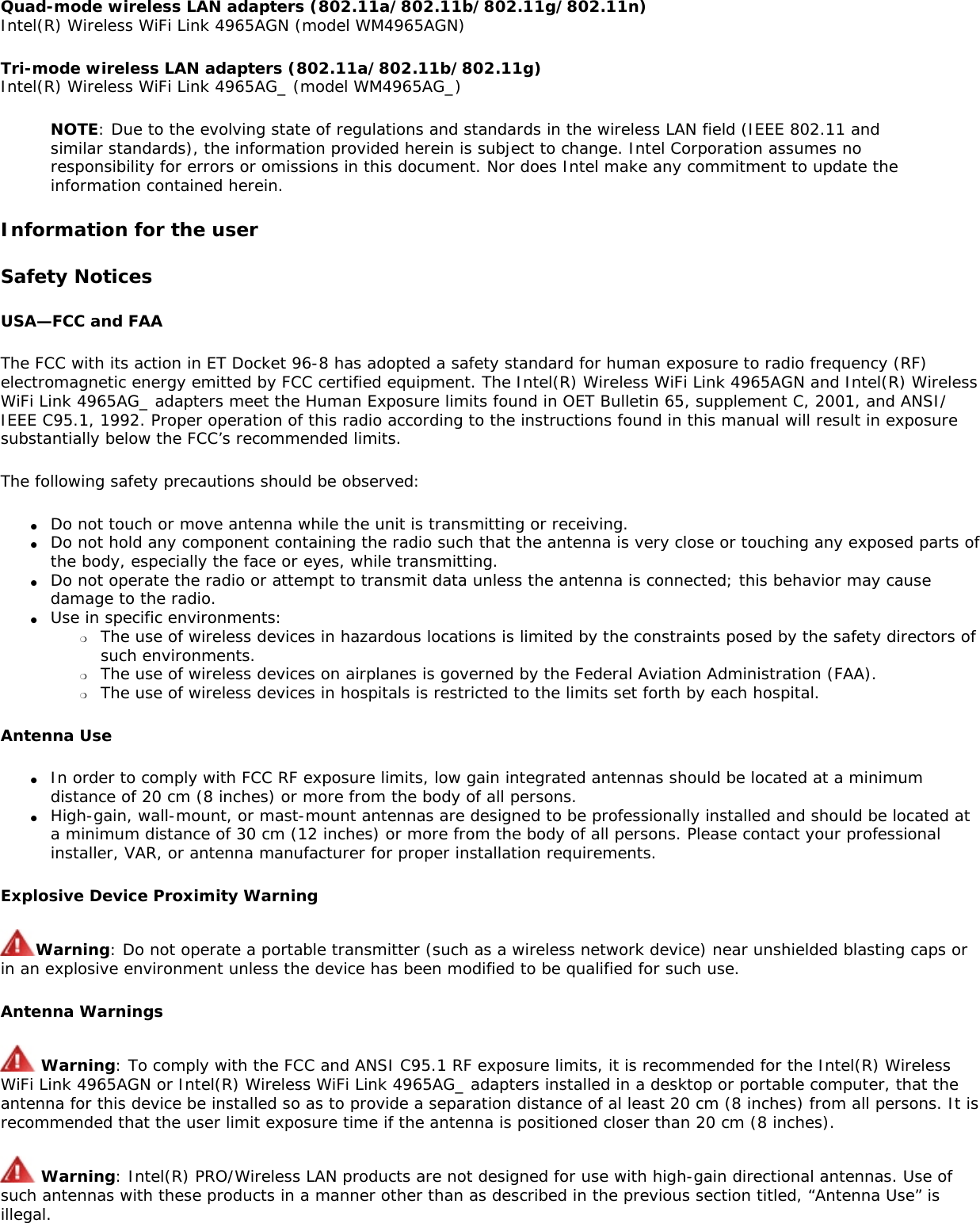
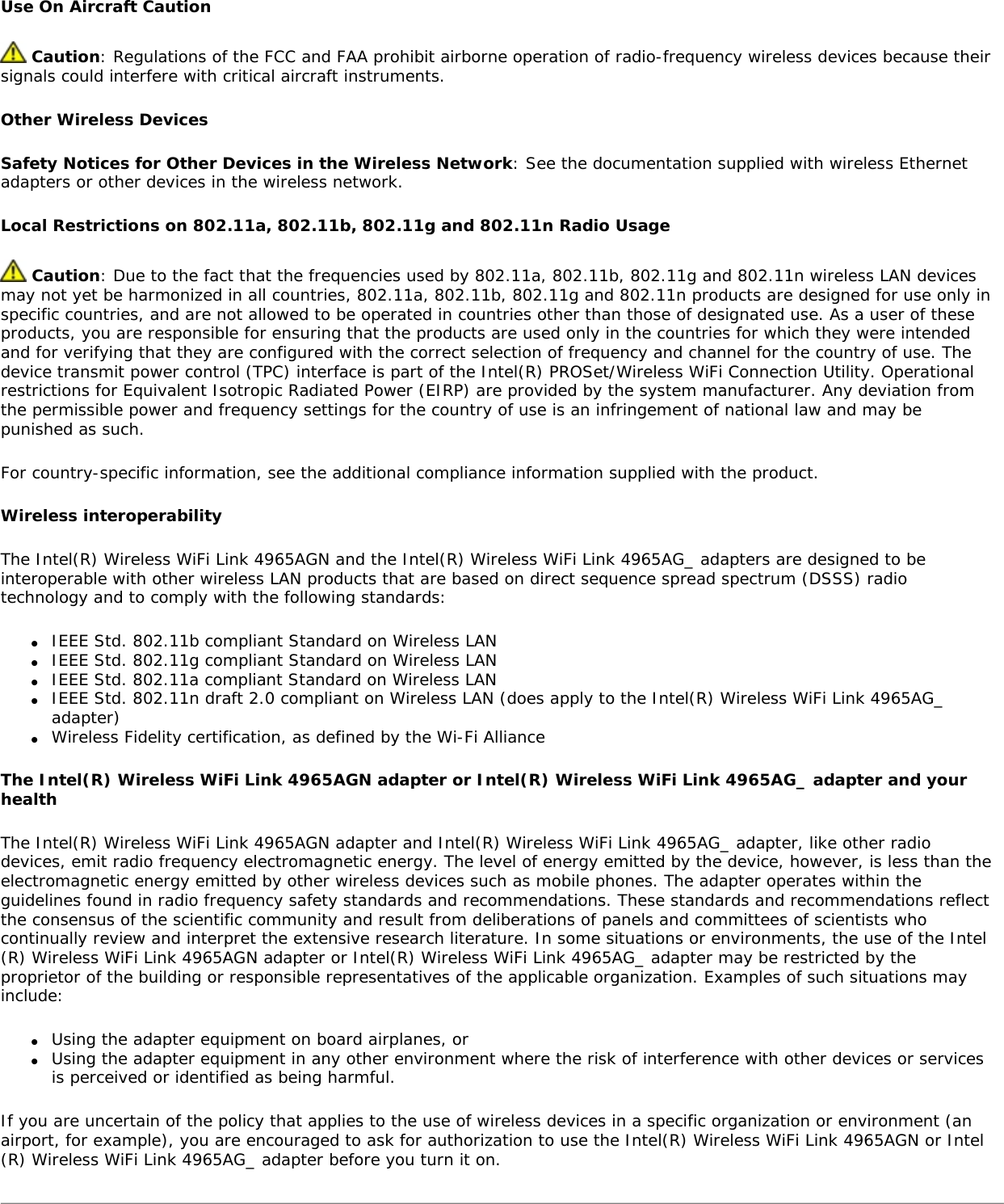
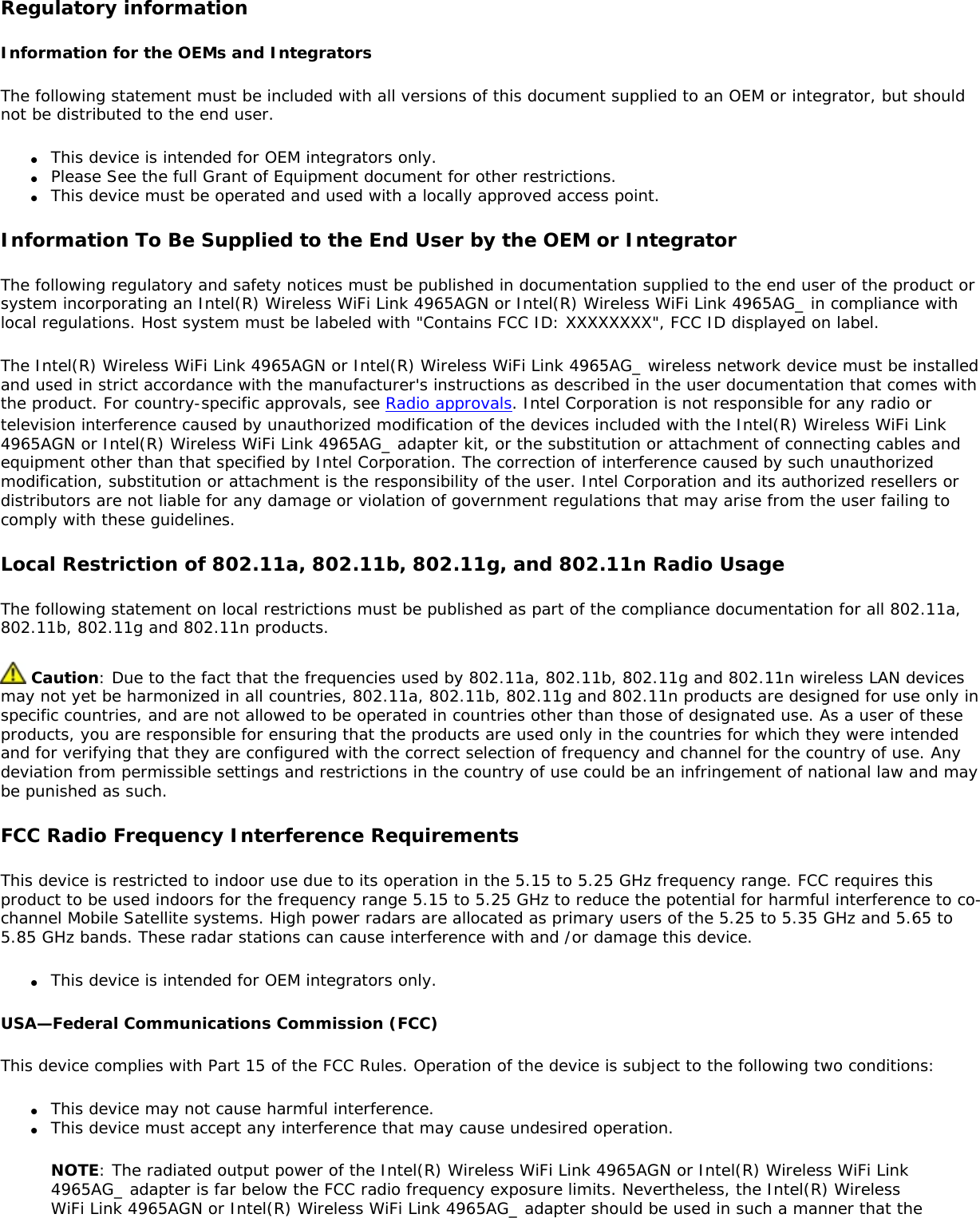
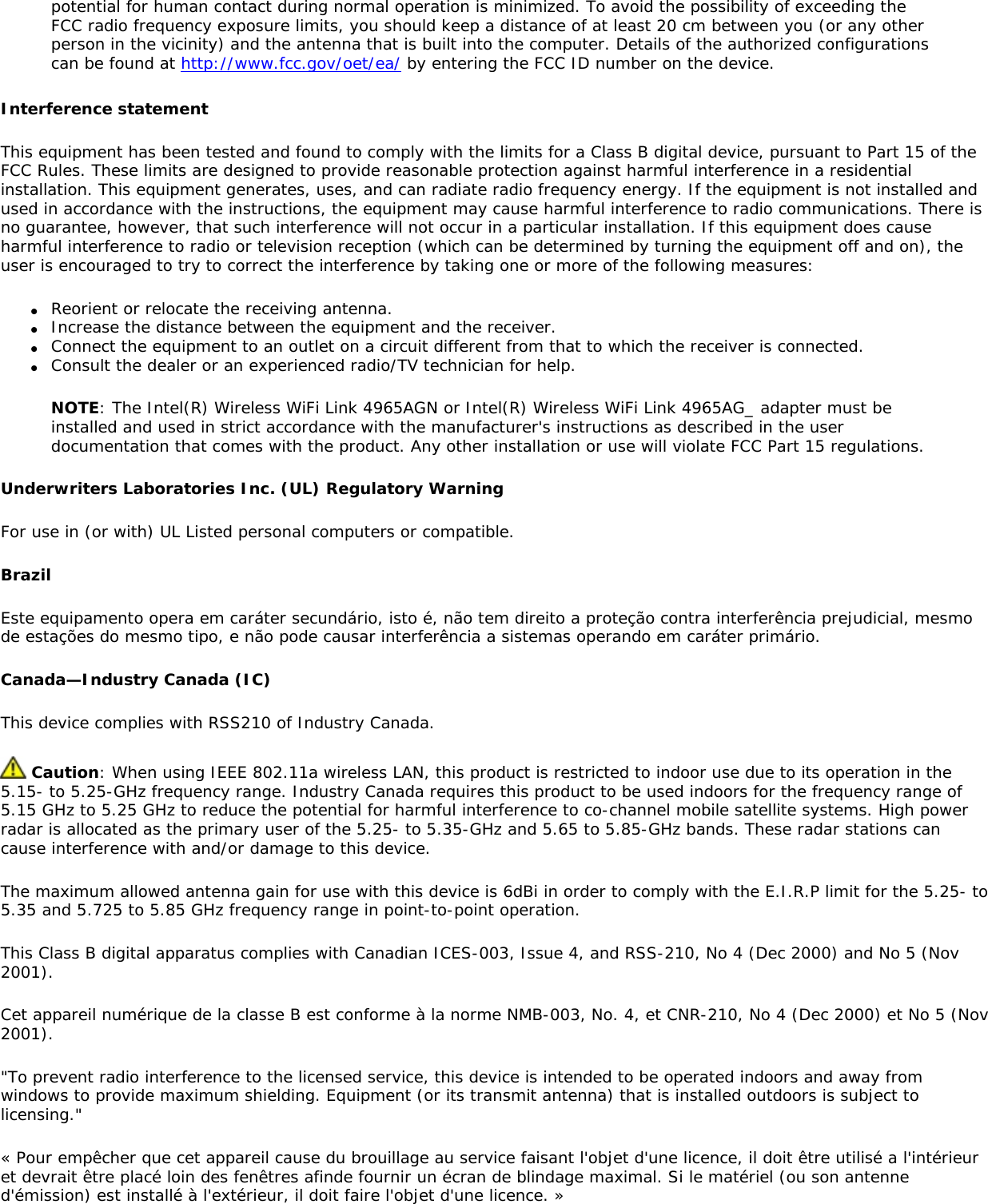
![European Union The low band 5.15 -5.35 GHz is for indoor use only. Declaration of ConformityThe European Declaration of Conformity is available at the following site:http://download.intel.com/support/wireless/wlan/4965agn/sb/eudoc4965_combined1.pdfThis equipment complies with the essential requirements of the European Union directive 1999/5/EC. •esky [Czech] Intel(R) Corporation tímto prohlašuje, že tento Intel(R) Wireless WiFi Link 4965AGN or Intel(R) Wireless WiFi Link 4965AG_ je ve shod• se základními požadavky a dalšími p•íslušnými ustanoveními sm•rnice 1999/5/ES.Dansk [Danish] Undertegnede Intel(R) Corporation erklærer herved, at følgende udstyr Intel(R) Wireless WiFi Link 4965AGN or Intel(R) Wireless WiFi Link 4965AG_ overholder de væsentlige krav og øvrige relevante krav i direktiv 1999/5/EF.Deutsch [German] Hiermit erklärt Intel(R) Corporation, dass sich das Gerät Intel(R) Wireless WiFi Link 4965AGN or Intel(R) Wireless WiFi Link 4965AG_ in Übereinstimmung mit den grundlegenden Anforderungen und den übrigen einschlägigen Bestimmungen der Richtlinie 1999/5/EG befindet.Esti [Estonian] Käesolevaga kinnitab Intel(R) Corporation seadme Intel(R) Wireless WiFi Link 4965AGN or Intel(R) Wireless WiFi Link 4965AG_ vastavust direktiivi 1999/5/EÜ põhinõuetele ja nimetatud direktiivist tulenevatele teistele asjakohastele sätetele.English Hereby, Intel(R) Corporation, declares that this Intel(R) Wireless WiFi Link 4965AGN or Intel(R) Wireless WiFi Link 4965AG_ is in compliance with the essential requirements and other relevant provisions of Directive 1999/5/EC.Español [Spanish] Por medio de la presente Intel(R) Corporation declara que el Intel(R) Wireless WiFi Link 4965AGN or Intel(R) Wireless WiFi Link 4965AG_ cumple con los requisitos esenciales y cualesquiera otras disposiciones aplicables o exigibles de la Directiva 1999/5/CE.Ελληνικ• [Greek] ΜΕ ΤΗΝ ΠΑΡΟΥΣΑ Intel(R) Corporation ∆ΗΛΩΝΕΙ ΟΤΙ Intel(R) Wireless WiFi Link 4965AGN or Intel(R) Wireless WiFi Link 4965AG_ ΣΥΜΜΟΡΦΩΝΕΤΑΙ ΠΡΟΣ ΤΙΣ ΟΥΣΙΩ∆ΕΙΣ ΑΠΑΙΤΗΣΕΙΣ ΚΑΙ ΤΙΣ ΛΟΙΠΕΣ ΣΧΕΤΙΚΕΣ ∆ΙΑΤΑΞΕΙΣ ΤΗΣ Ο∆ΗΓΙΑΣ 1999/5/ΕΚ.Français [French] Par la présente Intel(R) Corporation déclare que l'appareil Intel(R) Wireless WiFi Link 4965AGN or Intel(R) Wireless WiFi Link 4965AG_ est conforme aux exigences essentielles et aux autres dispositions pertinentes de la directive 1999/5/CE.Italiano [Italian] Con la presente Intel(R) Corporation dichiara che questo Intel(R) Wireless WiFi Link 4965AGN or Intel(R) Wireless WiFi Link 4965AG_ è conforme ai requisiti essenziali ed alle altre disposizioni pertinenti stabilite dalla direttiva 1999/5/CE.Latviski [Latvian] Ar šo Intel(R) Corporationdeklar•, ka Intel(R) Wireless WiFi Link 4965AGN or Intel(R) Wireless WiFi Link 4965AG_ atbilst Direkt•vas 1999/5/EK b•tiskaj•m pras•b•m un citiem ar to saist•tajiem noteikumiem.Lietuvi• [Lithuanian] Šiuo Intel(R) Corporation deklaruoja, kad šis Intel(R) Wireless WiFi Link 4965AGN or Intel(R) Wireless WiFi Link 4965AG_ atitinka esminius reikalavimus ir kitas 1999/5/EB Direktyvos nuostatas.Nederlands [Dutch] Hierbij verklaart Intel(R) Corporation dat het toestel Intel(R) Wireless WiFi Link 4965AGN or Intel(R) Wireless WiFi Link 4965AG_ in overeenstemming is met de essentiële eisen en de andere relevante bepalingen van richtlijn 1999/5/EG.Malti [Maltese] Hawnhekk, Intel(R) Corporation, jiddikjara li dan Intel(R) Wireless WiFi Link 4965AGN or Intel(R) Wireless WiFi Link 4965AG_ jikkonforma mal-•ti•ijiet essenzjali u ma provvedimenti o•rajn relevanti li hemm fid-Dirrettiva 1999/5/EC.Magyar [Hungarian] Alulírott, Intel(R) Corporation nyilatkozom, hogy a Intel(R) Wireless WiFi Link 4965AGN or Intel(R) Wireless WiFi Link 4965AG_ megfelel a vonatkozó alapvetõ követelményeknek és az 1999/5/EC irányelv egyéb elõírásainak.Norsk [Norwegian] Intel Corporation erklærer herved at utstyretIntel(R) Wireless WiFi Link 4965AGN or Intel(R) Wireless WiFi Link 4965AG_ er i samsvar med de grunnleggende krav og øvrige relevante krav i direktiv 1999/5/EF.](https://usermanual.wiki/Intel/533ANH.XP-User-Guide-2-of-2/User-Guide-964561-Page-14.png)
![Polski [Polish] Niniejszym, Intel(R) Corporation, o•wiadcza, •e Intel(R) Wireless WiFi Link 4965AGN or Intel(R) Wireless WiFi Link 4965AG_ jest zgodne z zasadniczymi wymaganiami oraz innymi stosownymi postanowieniami Dyrektywy 1999/5/WE.Português [Portuguese] Intel(R) Corporation declara que este Intel(R) Wireless WiFi Link 4965AGN or Intel(R) Wireless WiFi Link 4965AG_ está conforme com os requisitos essenciais e outras disposições da Directiva 1999/5/CE.Slovensko [Slovenian] Šiuo Intel(R) Corporation izjavlja, da je ta Intel(R) Wireless WiFi Link 4965AGN or Intel(R) Wireless WiFi Link 4965AG_ v skladu z bistvenimi zahtevami in ostalimi relevantnimi dolo•ili direktive 1999/5/ES.Slovensky [Slovak] Intel(R) Corporation týmto vyhlasuje, že Intel(R) Wireless WiFi Link 4965AGN or Intel(R) Wireless WiFi Link 4965AG_ sp••a základné požiadavky a všetky príslušné ustanovenia Smernice 1999/5/ES.Suomi [Finnish] Intel(R) Corporation vakuuttaa täten että Intel (R) Wireless WiFi Link 4965AGN or Intel(R) Wireless WiFi Link 4965AG_ tyyppinen laite on direktiivin 1999/5/EY oleellisten vaatimusten ja sitä koskevien direktiivin muiden ehtojen mukainen.Svenska [Swedish] Härmed intygar Intel(R) Corporation att denna Intel(R) Wireless WiFi Link 4965AGN or Intel(R) Wireless WiFi Link 4965AG_ står I överensstämmelse med de väsentliga egenskapskrav och övriga relevanta bestämmelser som framgår av direktiv 1999/5/EG.Íslenska [Icelandic] Hér með lýsir Intel(R) Corporation yfir því að Intel(R) Wireless WiFi Link 4965AGN or Intel(R) Wireless WiFi Link 4965AG_ er í samræmi við grunnkröfur og aðrar kröfur, sem gerðar eru í tilskipun 1999/5/EC.ItalyThe use of these equipments is regulated by:1. D.L.gs 1.8.2003, n. 259, article 104 (activity subject to general authorization) for outdoor use and article 105 (free use) for indoor use, in both cases for private use.2. D.M. 28.5.03, for supply to public of RLAN access to networks and telecom services.L’uso degli apparati è regolamentato da:1. D.L.gs 1.8.2003, n. 259, articoli 104 (attività soggette ad autorizzazione generale) se utilizzati al di fuori del proprio fondo e 105 (libero uso) se utilizzati entro il proprio fondo, in entrambi i casi per uso private. 2. D.M. 28.5.03, per la fornitura al pubblico dell’accesso R-LAN alle reti e ai servizi di telecomunicazioni.JapanIndoor use only.KoreaTaiwan](https://usermanual.wiki/Intel/533ANH.XP-User-Guide-2-of-2/User-Guide-964561-Page-15.png)
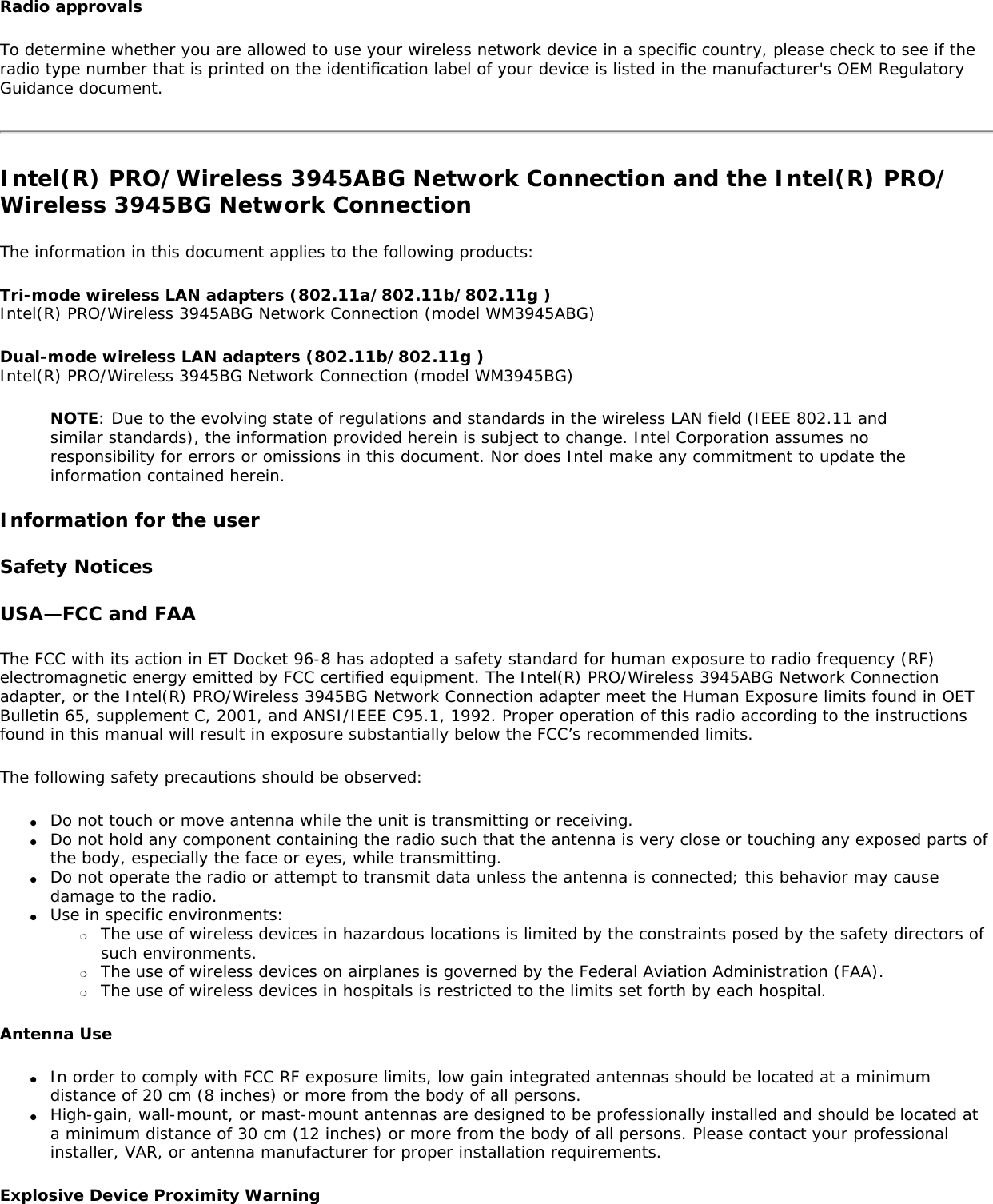
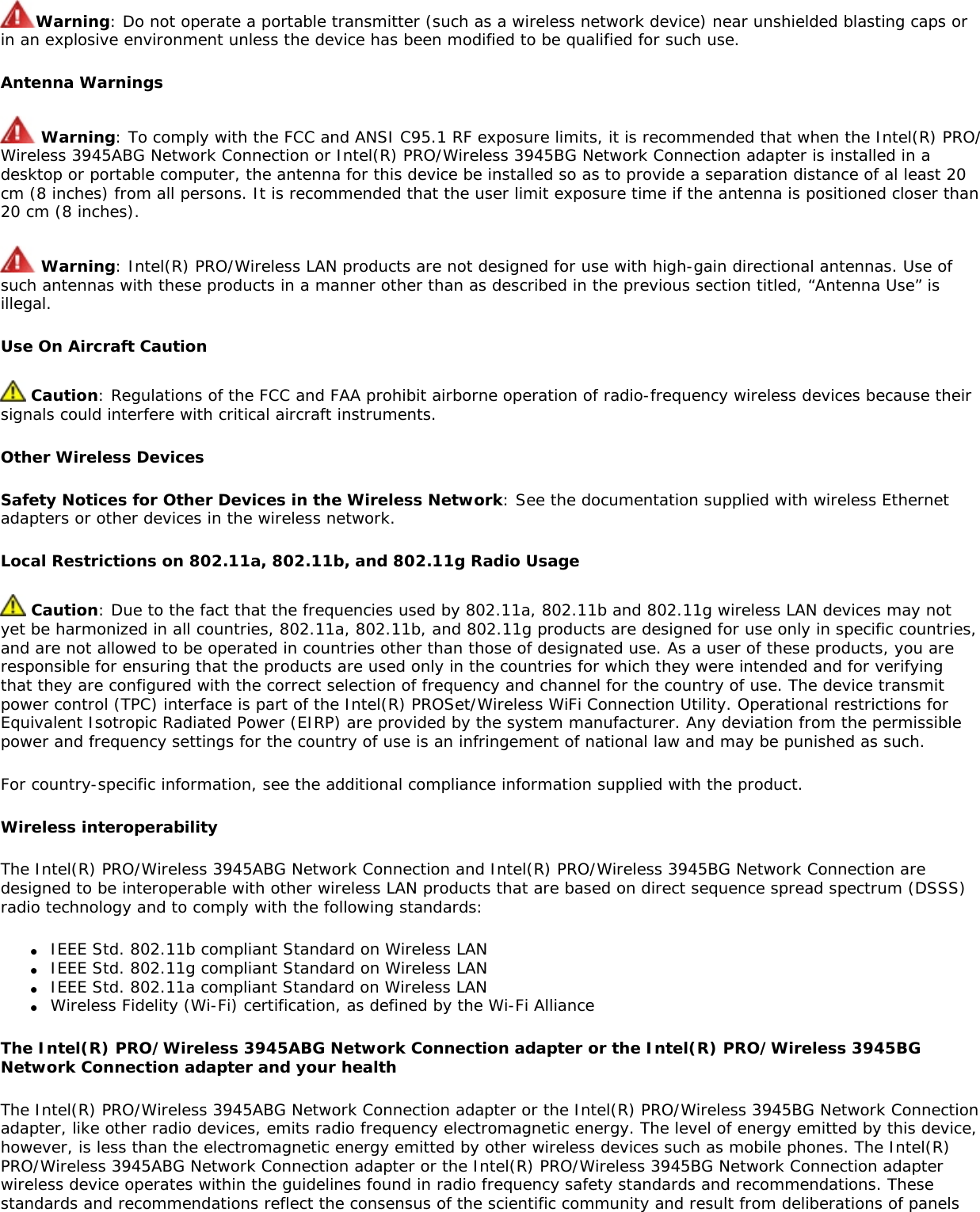
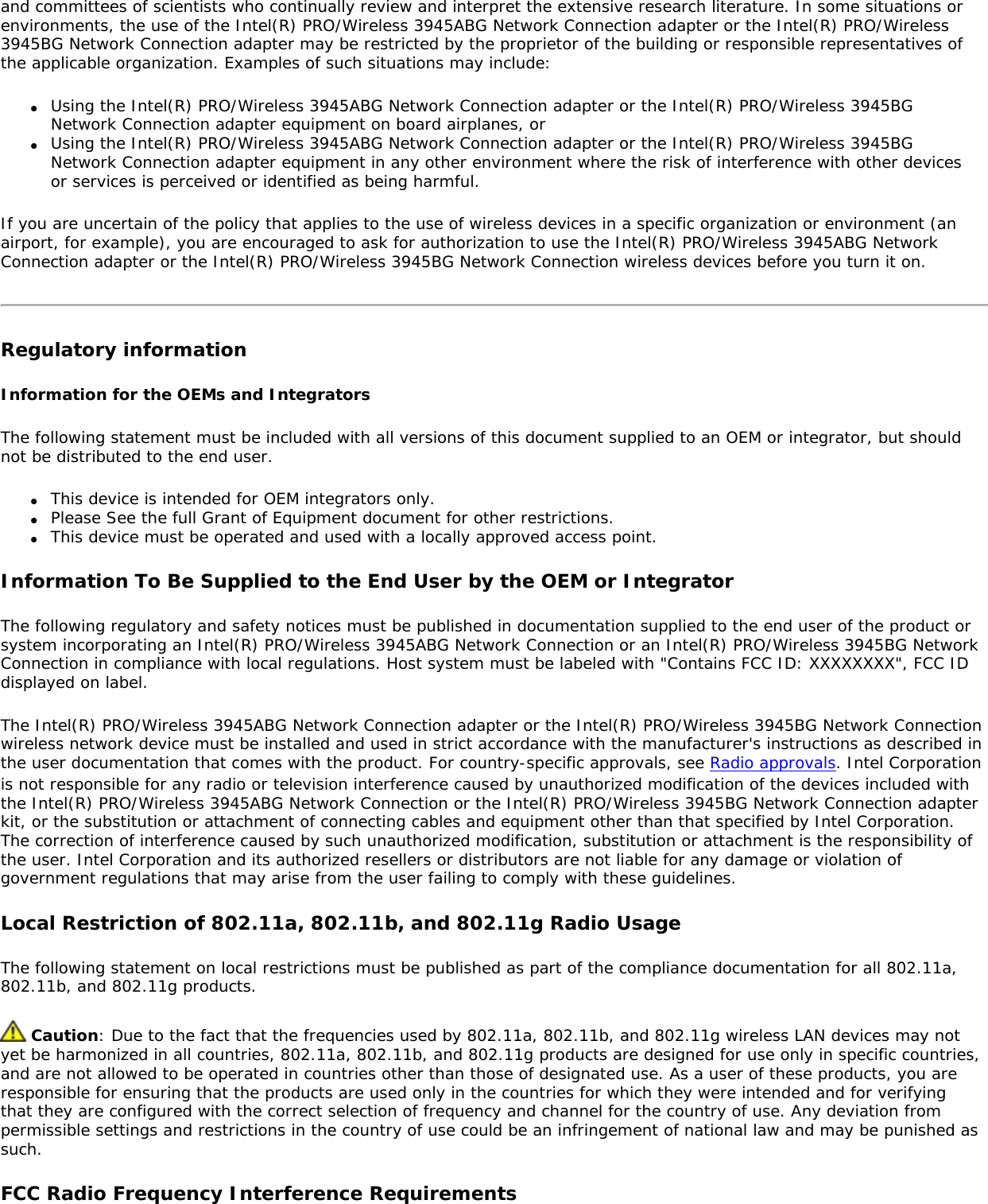
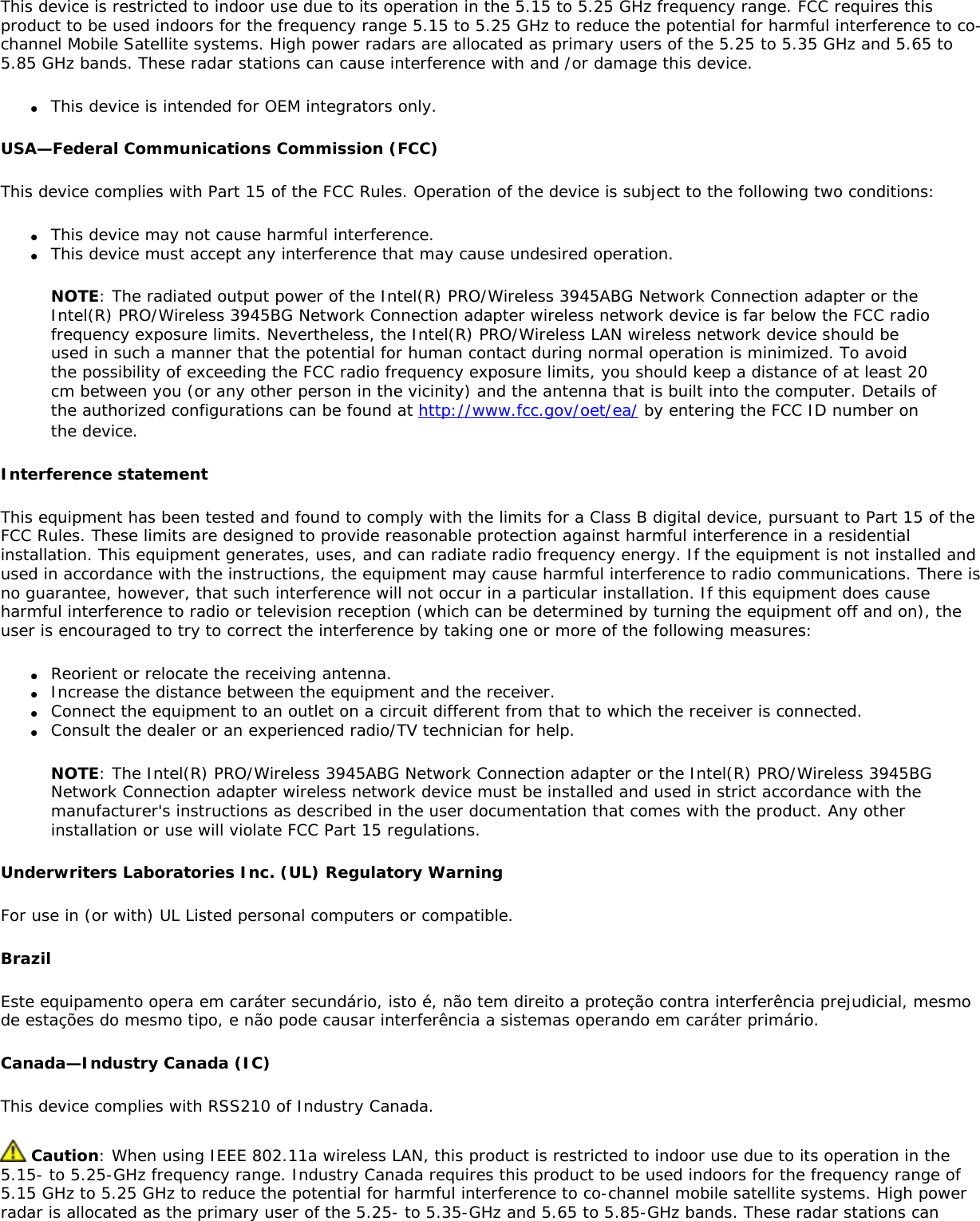
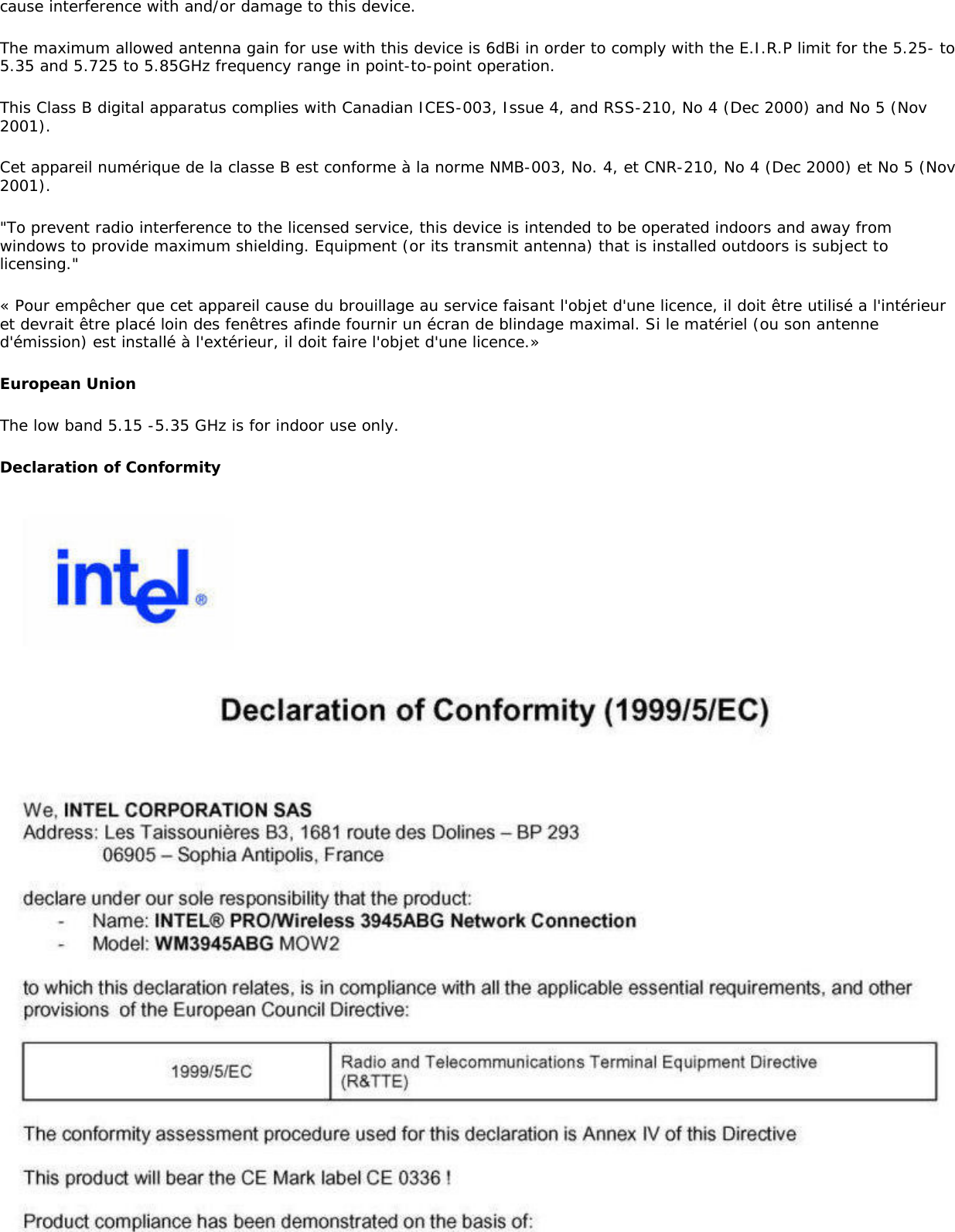
![This equipment complies with the essential requirements of the European Union directive 1999/5/EC.•esky [Czech] Intel(R) Corporation tímto prohlašuje, že tento Intel(R) PRO/Wireless 3945ABG Network Connection or Intel(R) PRO/Wireless 3945BG Network Connection je ve shod• se základními požadavky a dalšími p•íslušnými ustanoveními sm•rnice 1999/5/ES.Dansk [Danish] Undertegnede Intel(R) Corporation erklærer herved, at følgende udstyr Intel(R) PRO/Wireless 3945ABG Network Connection or Intel(R) PRO/Wireless 3945BG Network Connection overholder de væsentlige krav og øvrige relevante krav i direktiv 1999/5/EF.Deutsch [German] Hiermit erklärt Intel(R) Corporation, dass sich das Gerät Intel(R) PRO/Wireless 3945ABG Network Connection or Intel(R) PRO/Wireless 3945BG Network Connection in Übereinstimmung mit den grundlegenden Anforderungen und den übrigen einschlägigen Bestimmungen der Richtlinie 1999/5/EG befindet.Esti [Estonian] Käesolevaga kinnitab Intel(R) Corporation seadme Intel(R) PRO/Wireless 3945ABG Network Connection or Intel(R) PRO/Wireless 3945BG Network Connection vastavust direktiivi 1999/5/EÜ põhinõuetele ja nimetatud direktiivist tulenevatele teistele asjakohastele sätetele.English Hereby, Intel(R) Corporation, declares that this Intel(R) PRO/Wireless 3945ABG Network Connection or Intel(R) PRO/Wireless 3945BG Network Connection is in compliance with the essential requirements and other relevant provisions of Directive 1999/5/EC.](https://usermanual.wiki/Intel/533ANH.XP-User-Guide-2-of-2/User-Guide-964561-Page-21.png)
![Español [Spanish] Por medio de la presente Intel(R) Corporation declara que el Intel(R) PRO/Wireless 3945ABG Network Connection or Intel(R) PRO/Wireless 3945BG Network Connection cumple con los requisitos esenciales y cualesquiera otras disposiciones aplicables o exigibles de la Directiva 1999/5/CE.Ελληνικ• [Greek] ΜΕ ΤΗΝ ΠΑΡΟΥΣΑ Intel(R) Corporation ∆ΗΛΩΝΕΙ ΟΤΙ Intel(R) PRO/Wireless 3945ABG Network Connection or Intel(R) PRO/Wireless 3945BG Network Connection ΣΥΜΜΟΡΦΩΝΕΤΑΙ ΠΡΟΣ ΤΙΣ ΟΥΣΙΩ∆ΕΙΣ ΑΠΑΙΤΗΣΕΙΣ ΚΑΙ ΤΙΣ ΛΟΙΠΕΣ ΣΧΕΤΙΚΕΣ ∆ΙΑΤΑΞΕΙΣ ΤΗΣ Ο∆ΗΓΙΑΣ 1999/5/ΕΚ.Français [French] Par la présente Intel(R) Corporation déclare que l'appareil Intel(R) PRO/Wireless 3945ABG Network Connection or Intel(R) PRO/Wireless 3945BG Network Connection est conforme aux exigences essentielles et aux autres dispositions pertinentes de la directive 1999/5/CE.Italiano [Italian] Con la presente Intel(R) Corporation dichiara che questo Intel(R) PRO/Wireless 3945ABG Network Connection or Intel(R) PRO/Wireless 3945BG Network Connection è conforme ai requisiti essenziali ed alle altre disposizioni pertinenti stabilite dalla direttiva 1999/5/CE.Latviski [Latvian] Ar šo Intel(R) Corporationdeklar•, ka Intel(R) PRO/Wireless 3945ABG Network Connection or Intel(R) PRO/Wireless 3945BG Network Connection atbilst Direkt•vas 1999/5/EK b•tiskaj•m pras•b•m un citiem ar to saist•tajiem noteikumiem.Lietuvi• [Lithuanian] Šiuo Intel(R) Corporation deklaruoja, kad šis Intel(R) PRO/Wireless 3945ABG Network Connection or Intel(R) PRO/Wireless 3945BG Network Connection atitinka esminius reikalavimus ir kitas 1999/5/EB Direktyvos nuostatas.Nederlands [Dutch] Hierbij verklaart Intel(R) Corporation dat het toestel Intel(R) PRO/Wireless 3945ABG Network Connection or Intel(R) PRO/Wireless 3945BG Network Connection in overeenstemming is met de essentiële eisen en de andere relevante bepalingen van richtlijn 1999/5/EG.Malti [Maltese] Hawnhekk, Intel(R) Corporation, jiddikjara li dan Intel(R) PRO/Wireless 3945ABG Network Connection or Intel(R) PRO/Wireless 3945BG Network Connection jikkonforma mal-•ti•ijiet essenzjali u ma provvedimenti o•rajn relevanti li hemm fid-Dirrettiva 1999/5/EC.Magyar [Hungarian] Alulírott, Intel(R) Corporation nyilatkozom, hogy a Intel(R) PRO/Wireless 3945ABG Network Connection or Intel(R) PRO/Wireless 3945BG Network Connection megfelel a vonatkozó alapvetõ követelményeknek és az 1999/5/EC irányelv egyéb elõírásainak.Norsk [Norwegian] Intel Corporation erklærer herved at utstyret Intel(R) PRO/Wireless 3945ABG Network Connection or Intel(R) PRO/Wireless 3945BG Network Connection er i samsvar med de grunnleggende krav og øvrige relevante krav i direktiv 1999/5/EF.Polski [Polish] Niniejszym, Intel(R) Corporation, o•wiadcza, •e Intel(R) PRO/Wireless 3945ABG Network Connection or Intel(R) PRO/Wireless 3945BG Network Connection jest zgodne z zasadniczymi wymaganiami oraz innymi stosownymi postanowieniami Dyrektywy 1999/5/WE.Português [Portuguese] Intel(R) Corporation declara que este Intel(R) PRO/Wireless 3945ABG Network Connection or Intel(R) PRO/Wireless 3945BG Network Connection está conforme com os requisitos essenciais e outras disposições da Directiva 1999/5/CE.Slovensko [Slovenian] Šiuo Intel(R) Corporation izjavlja, da je ta Intel(R) PRO/Wireless 3945ABG Network Connection or Intel(R) PRO/Wireless 3945BG Network Connection v skladu z bistvenimi zahtevami in ostalimi relevantnimi dolo•ili direktive 1999/5/ES.Slovensky [Slovak] Intel(R) Corporation týmto vyhlasuje, že Intel(R) PRO/Wireless 3945ABG Network Connection or Intel(R) PRO/Wireless 3945BG Network Connection sp••a základné požiadavky a všetky príslušné ustanovenia Smernice 1999/5/ES.Suomi [Finnish] Intel(R) Corporation vakuuttaa täten että Intel(R) PRO/Wireless 3945ABG Network Connection or Intel(R) PRO/Wireless 3945BG Network Connection tyyppinen laite on direktiivin 1999/5/EY oleellisten vaatimusten ja sitä koskevien direktiivin muiden ehtojen mukainen.Svenska [Swedish] Härmed intygar Intel(R) Corporation att denna Intel(R) PRO/Wireless 3945ABG Network Connection or Intel(R) PRO/Wireless 3945BG Network Connection står I överensstämmelse med de väsentliga egenskapskrav och övriga relevanta bestämmelser som framgår av direktiv 1999/5/EG.Íslenska [Icelandic] Hér með lýsir Intel(R) Corporation yfir því að Intel(R) PRO/Wireless 3945ABG Network Connection or Intel(R) PRO/Wireless 3945BG Network Connection) er í samræmi við grunnkröfur og aðrar kröfur, sem gerðar eru í tilskipun 1999/5/EC.ItalyThe use of these equipments is regulated by:1. D.L.gs 1.8.2003, n. 259, article 104 (activity subject to general authorization) for outdoor use and article 105 (free](https://usermanual.wiki/Intel/533ANH.XP-User-Guide-2-of-2/User-Guide-964561-Page-22.png)
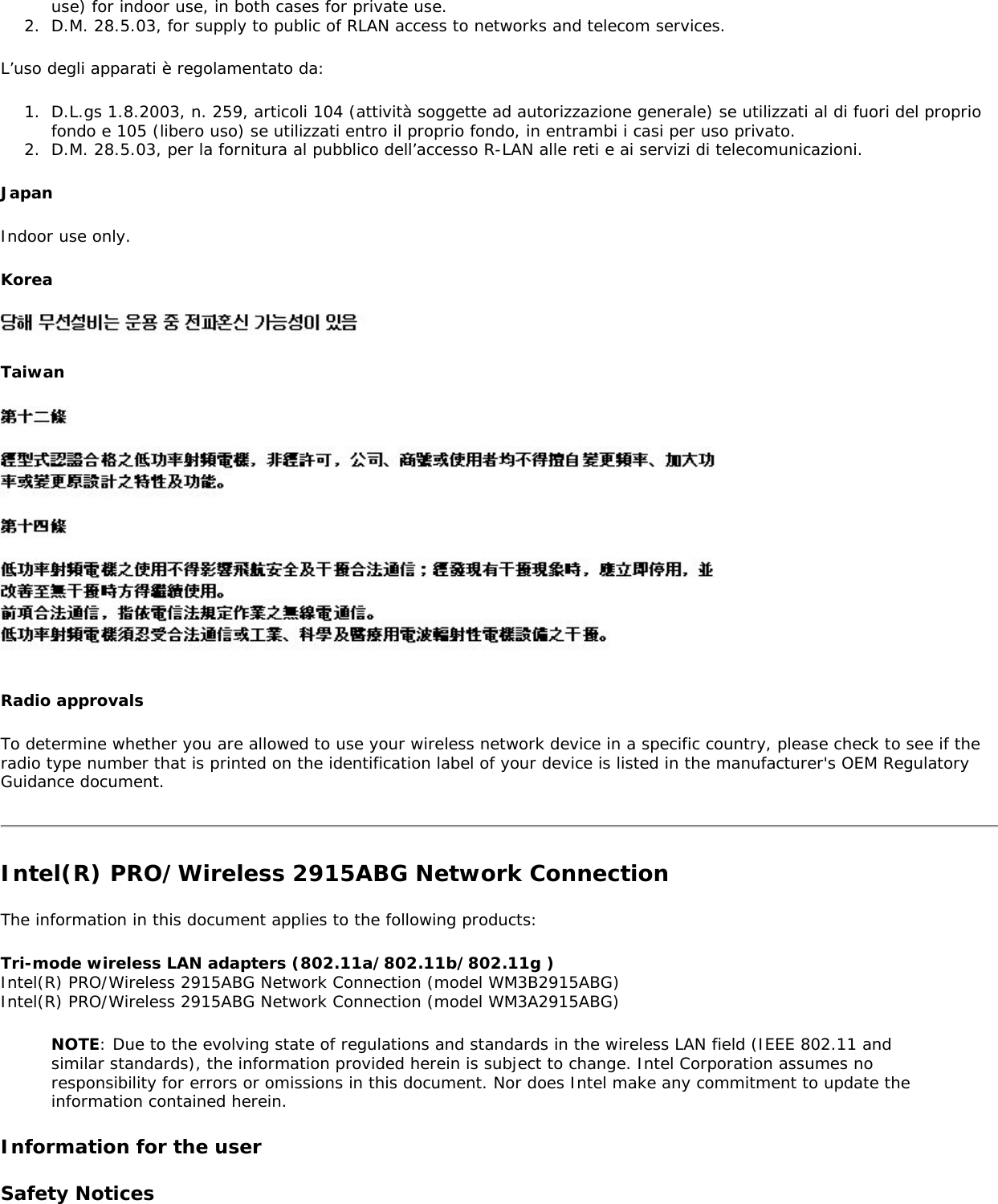
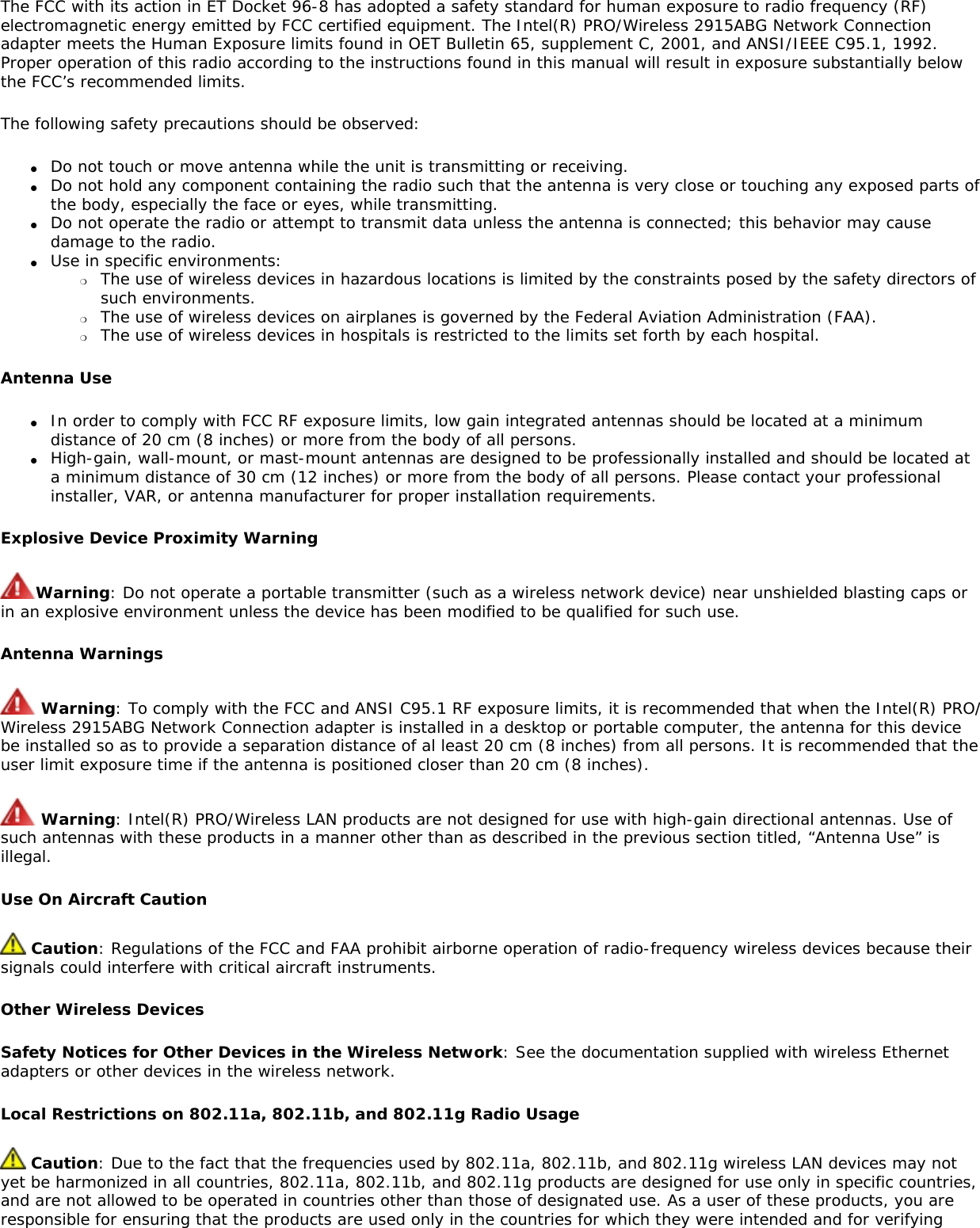
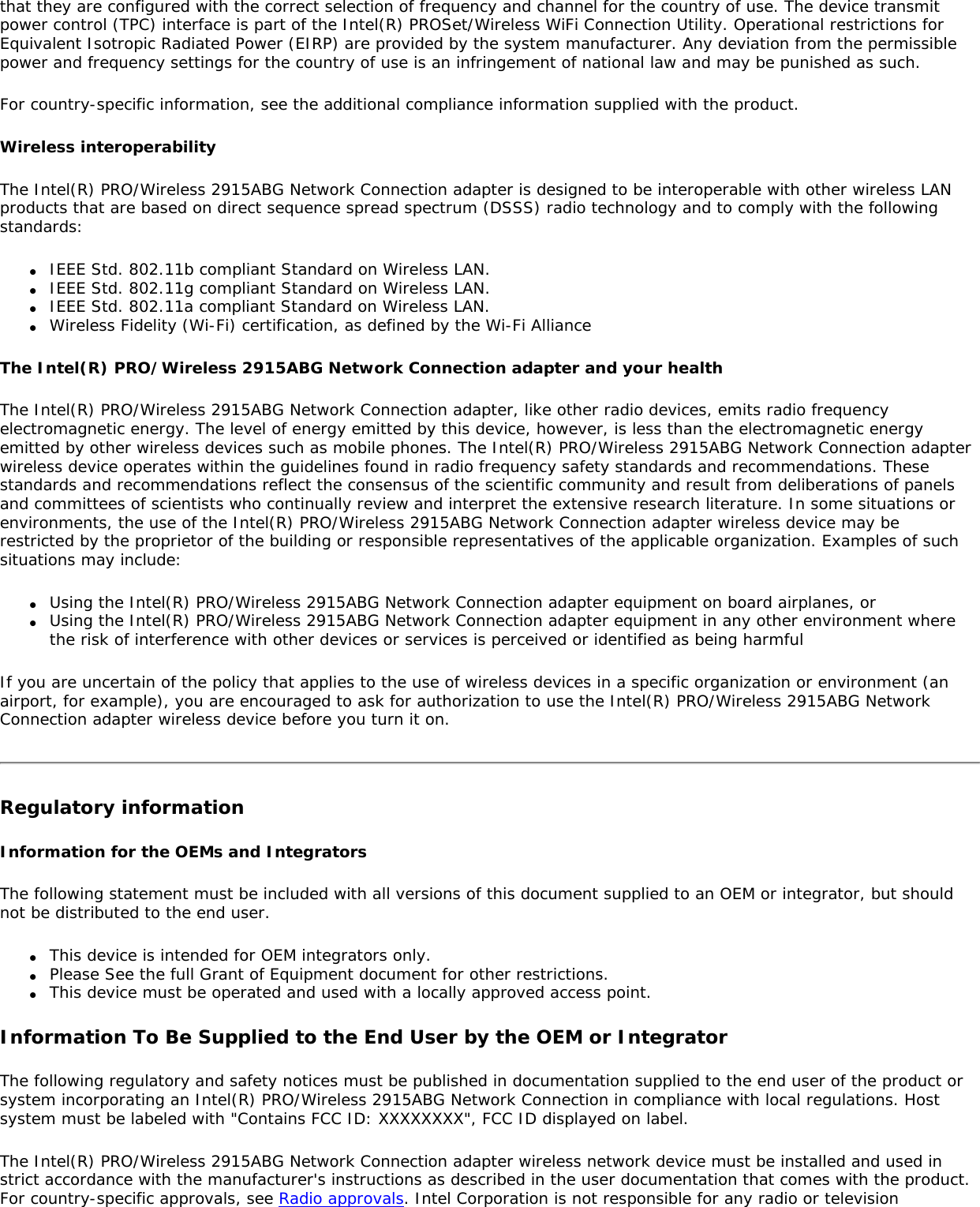
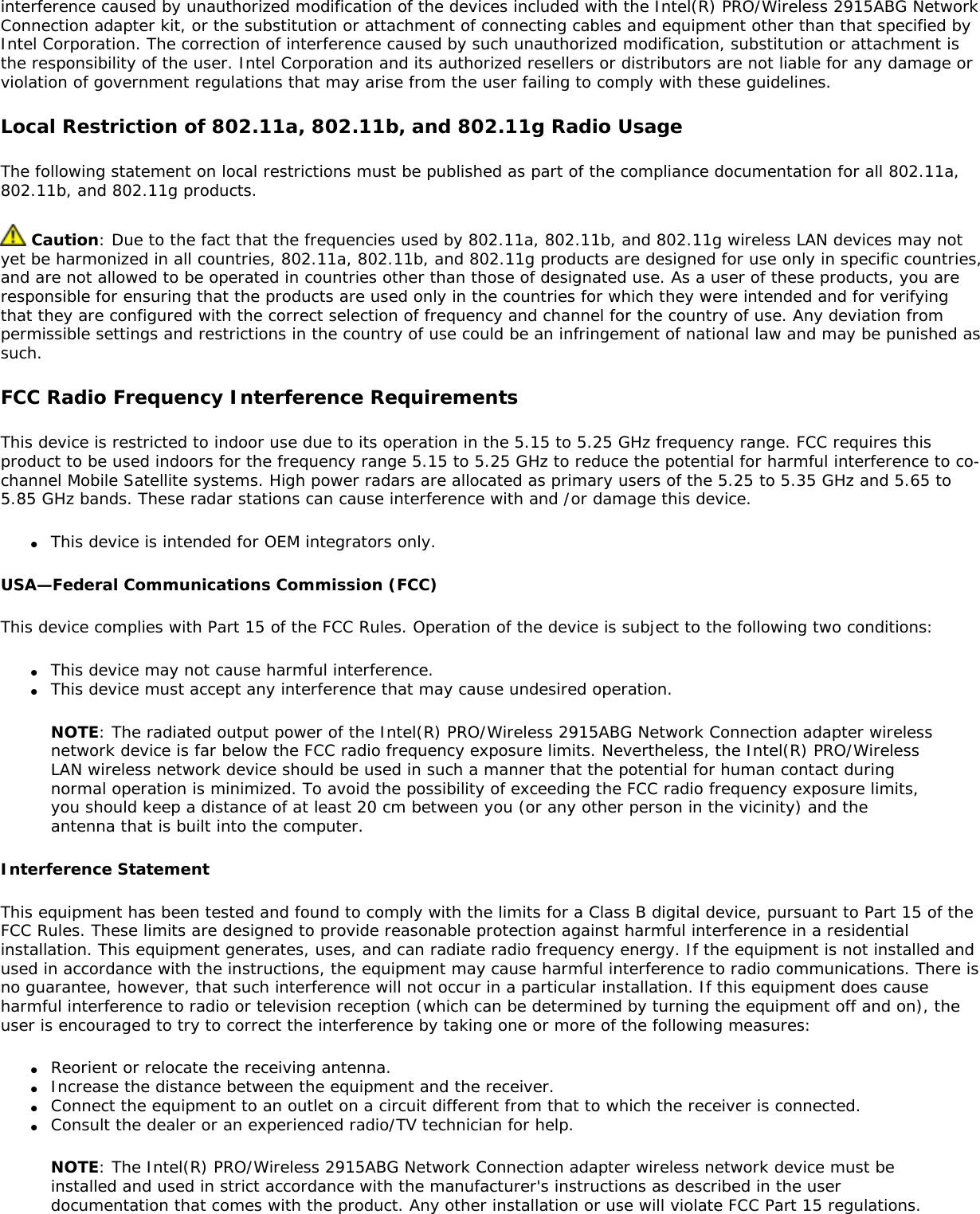
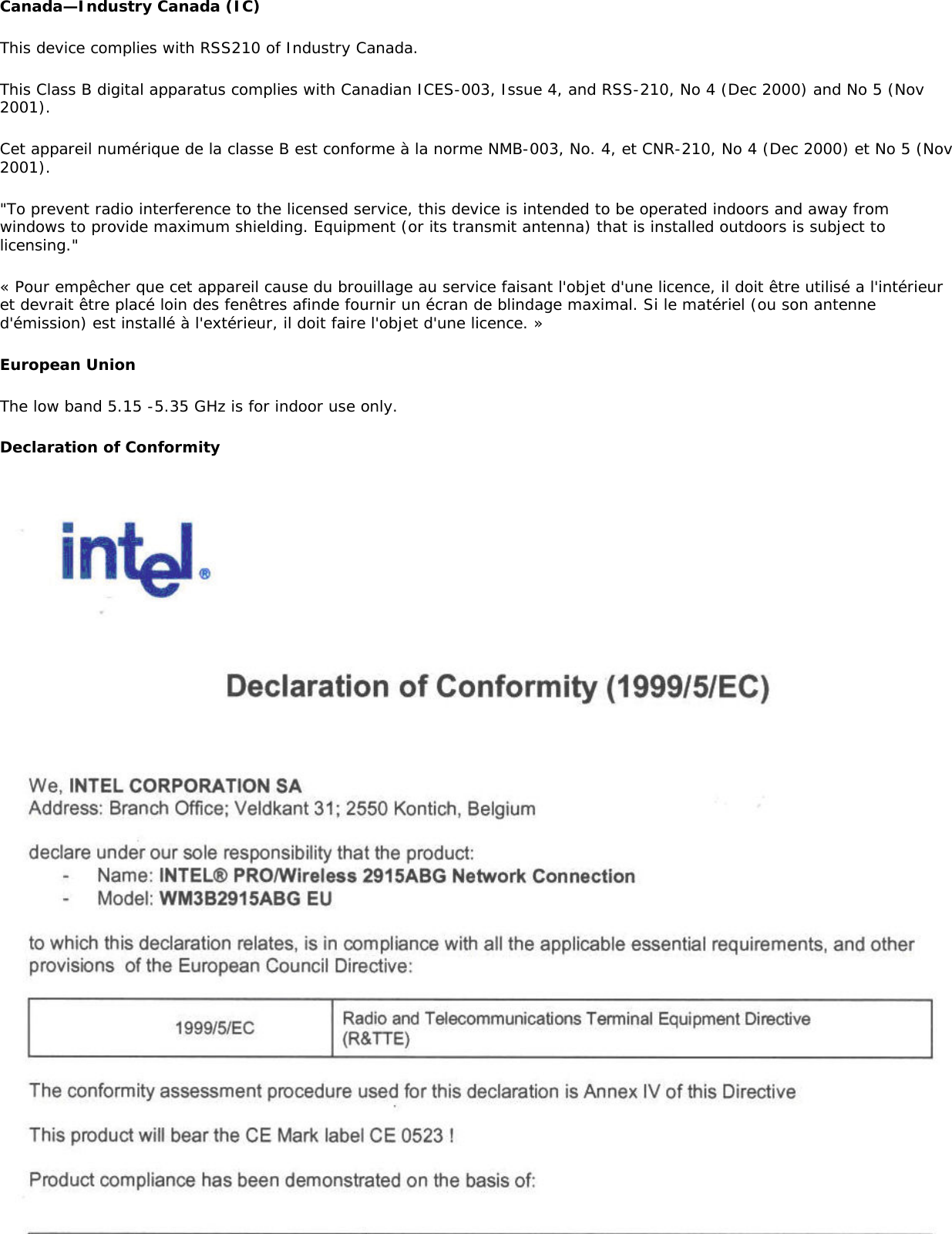
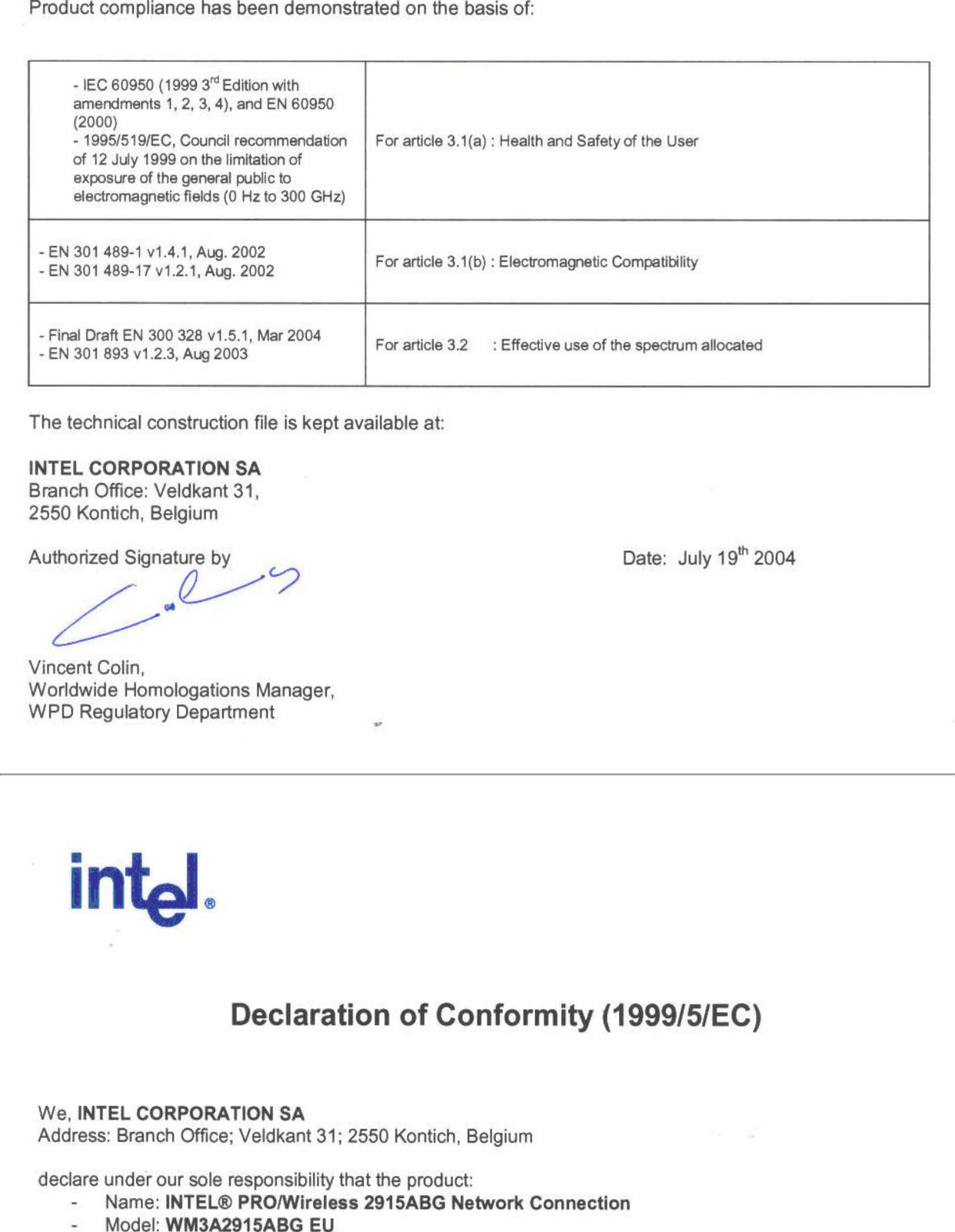
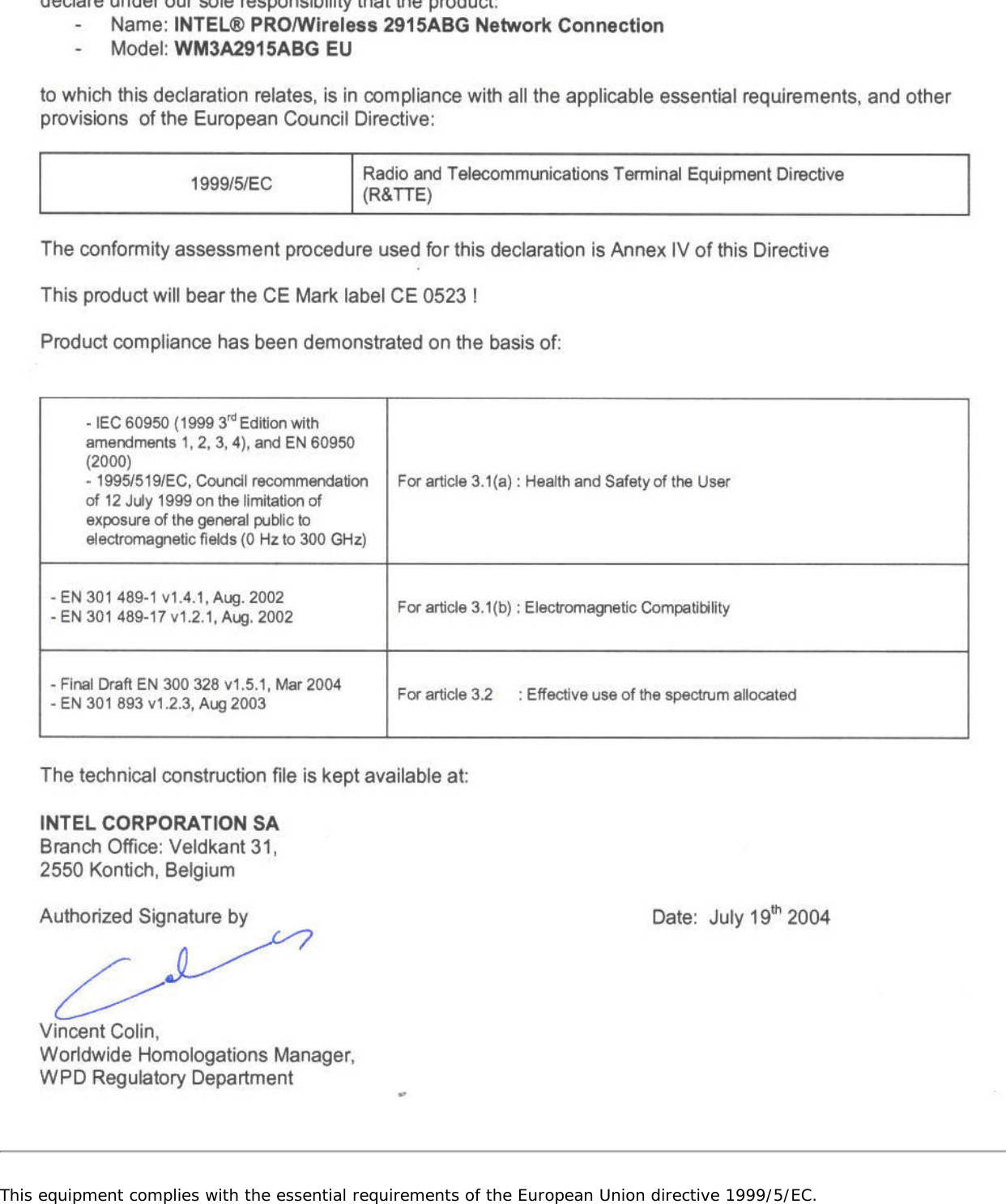
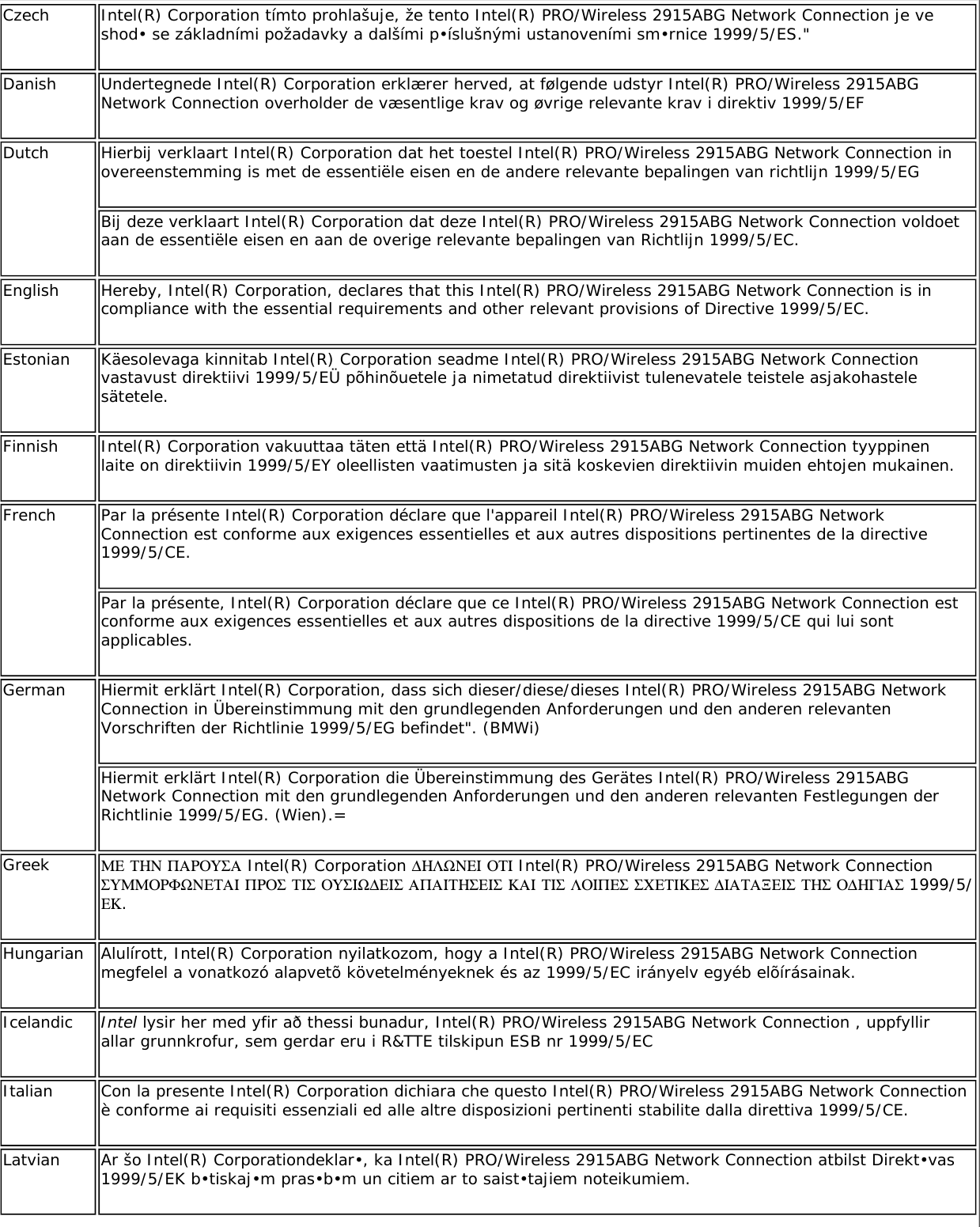
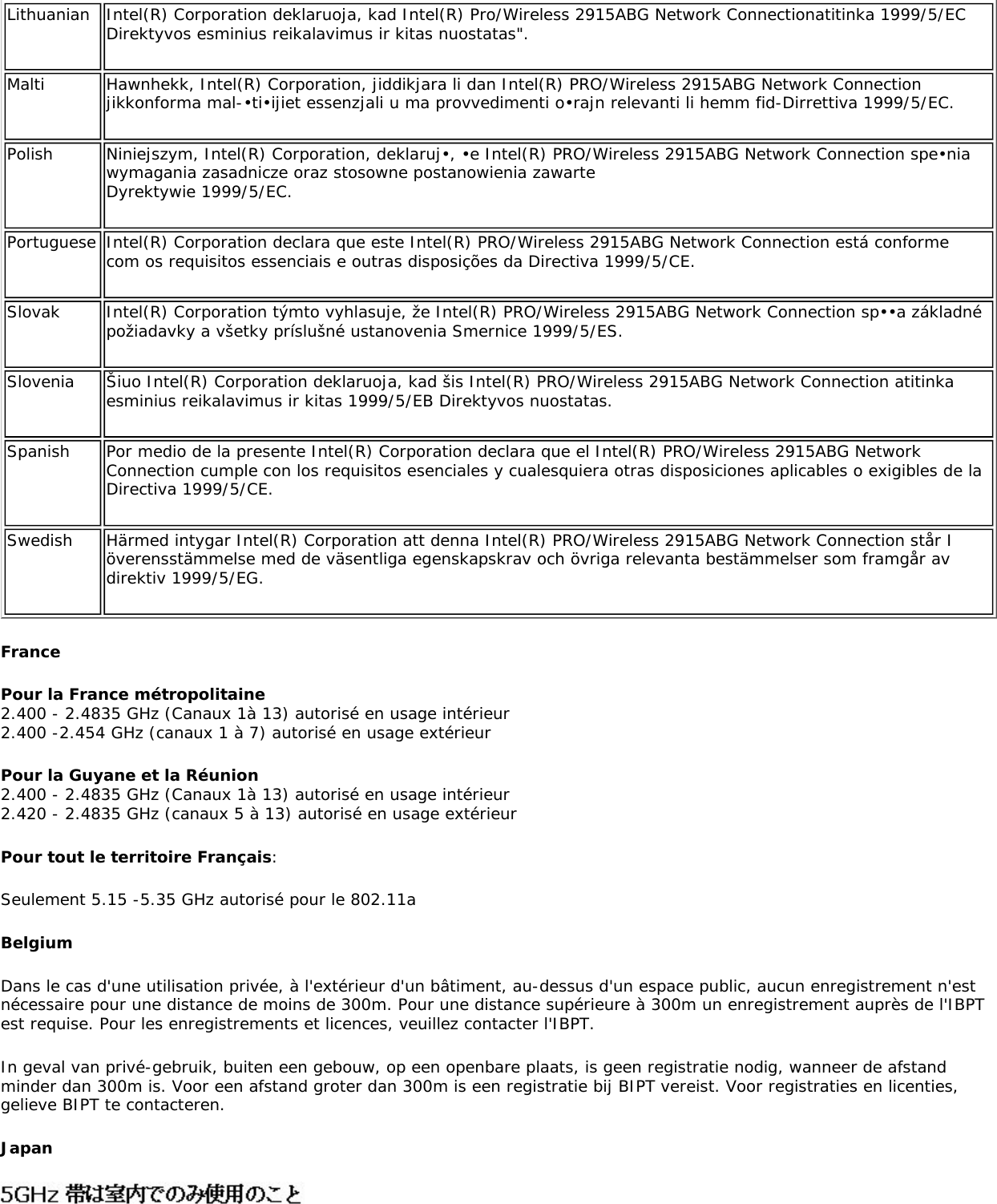
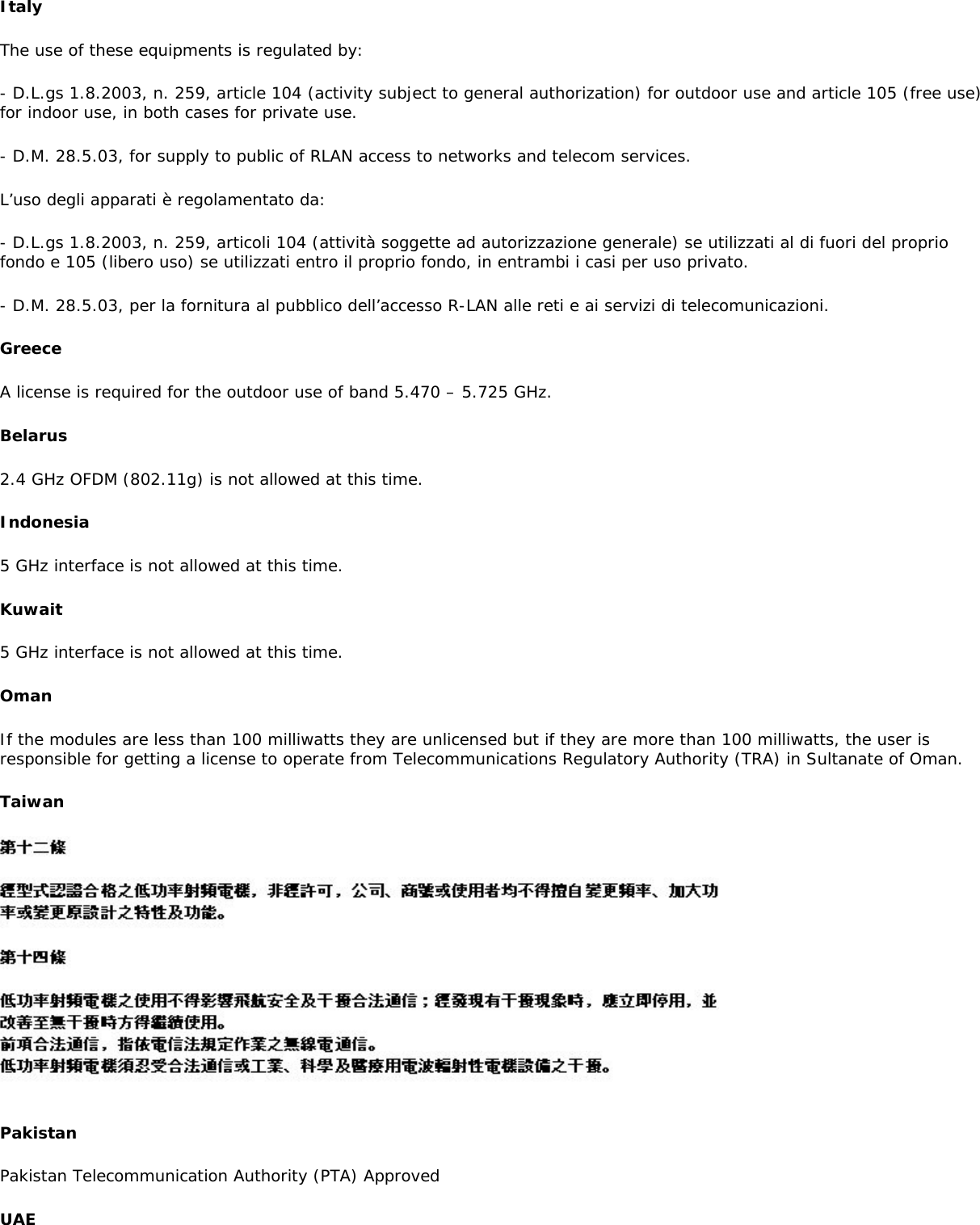
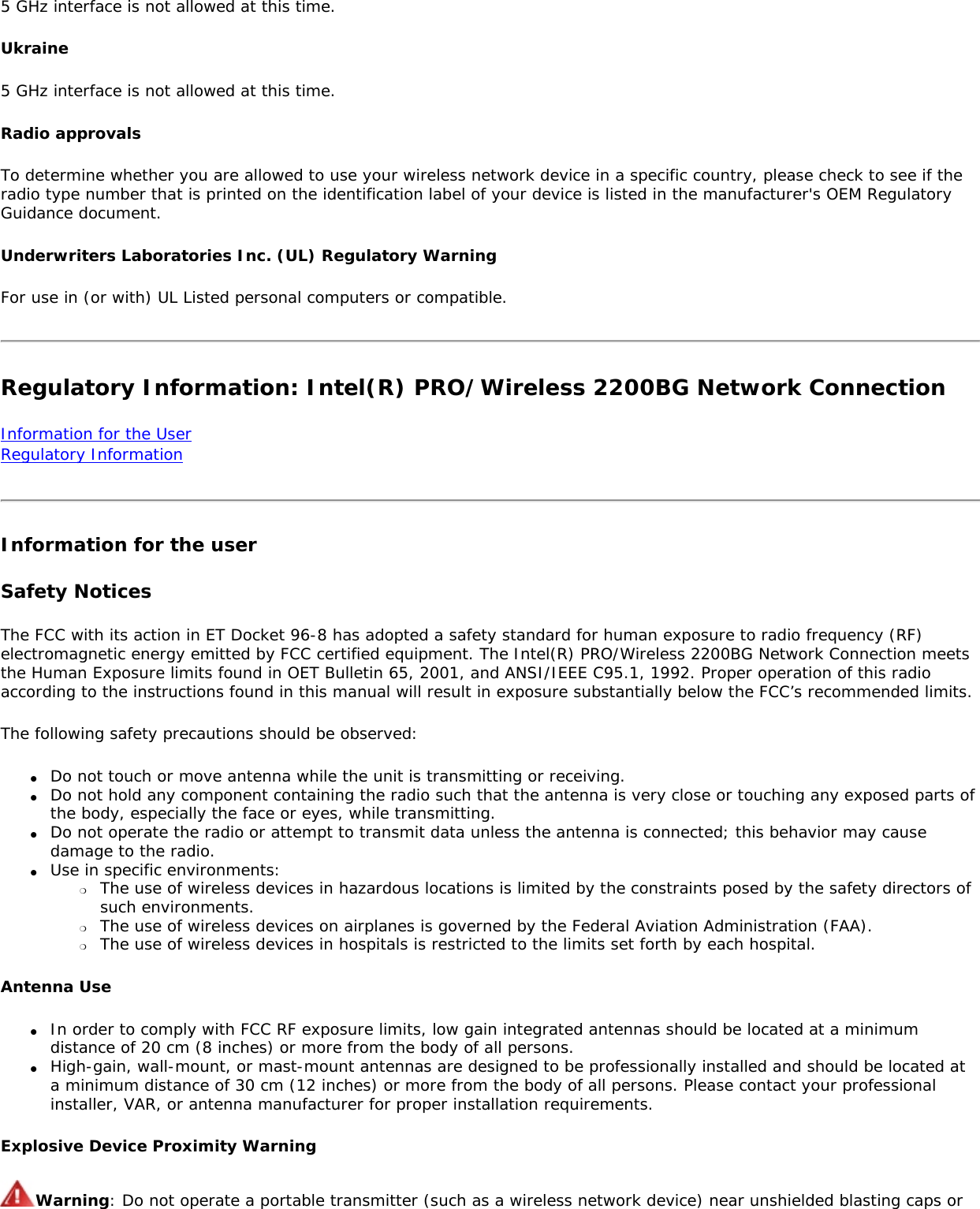
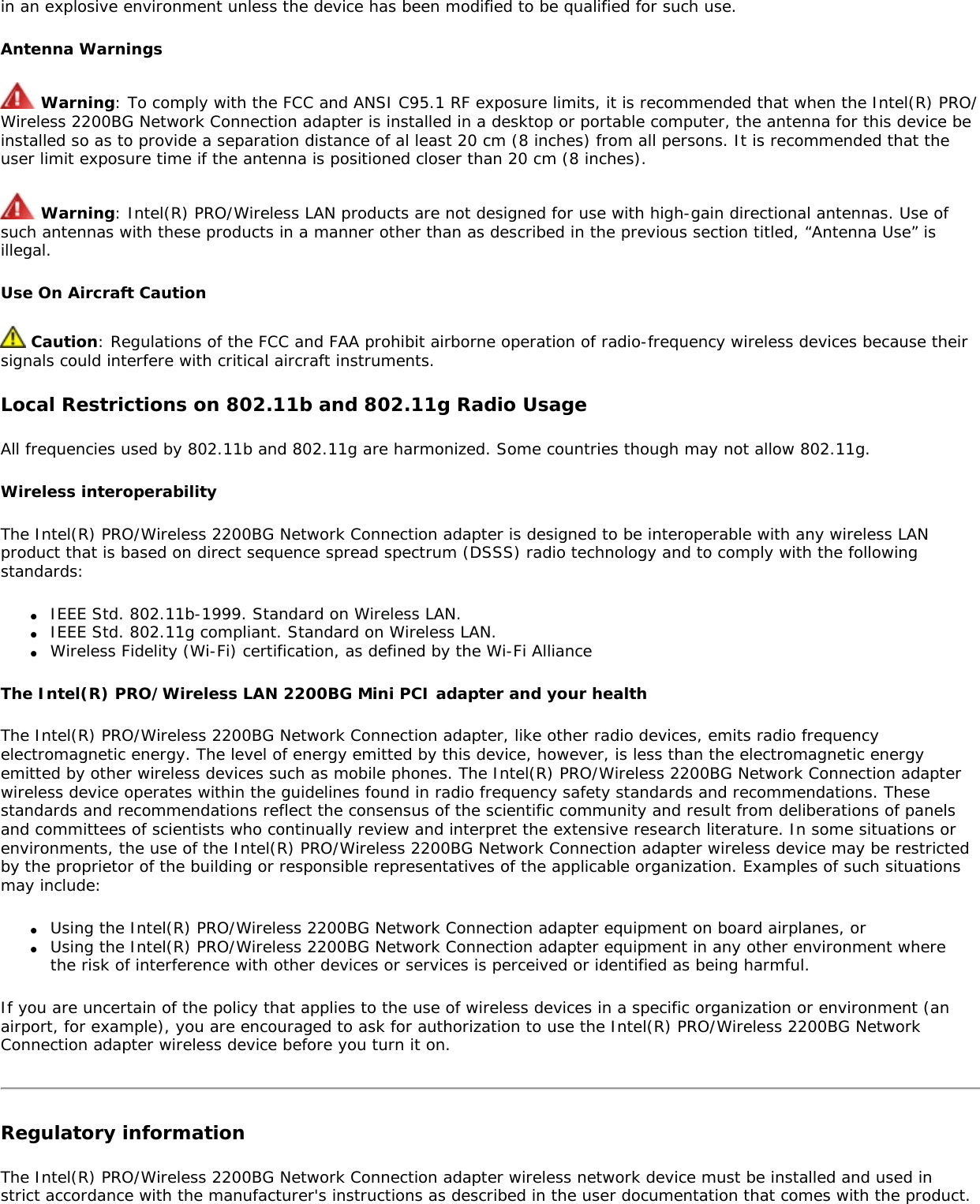
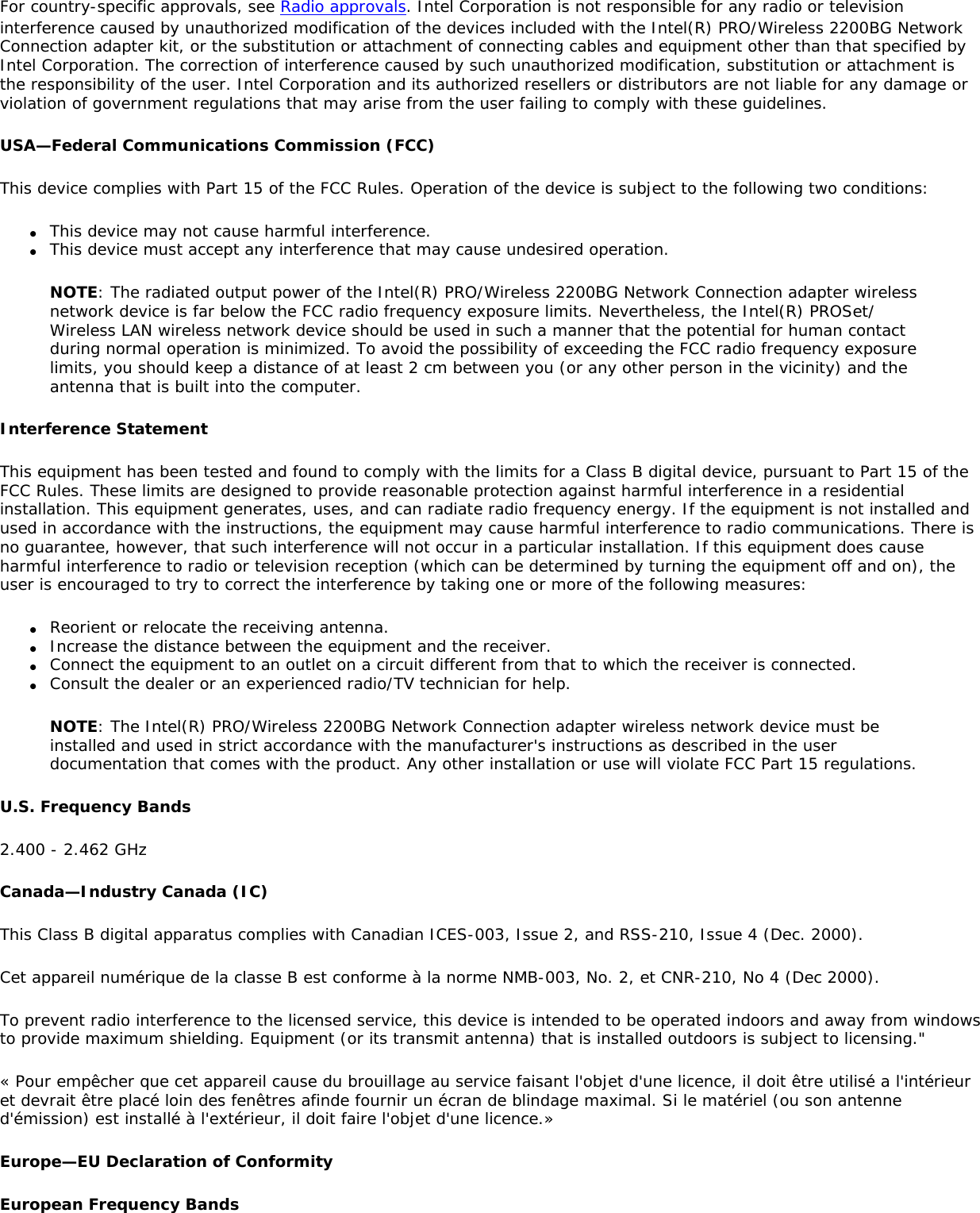
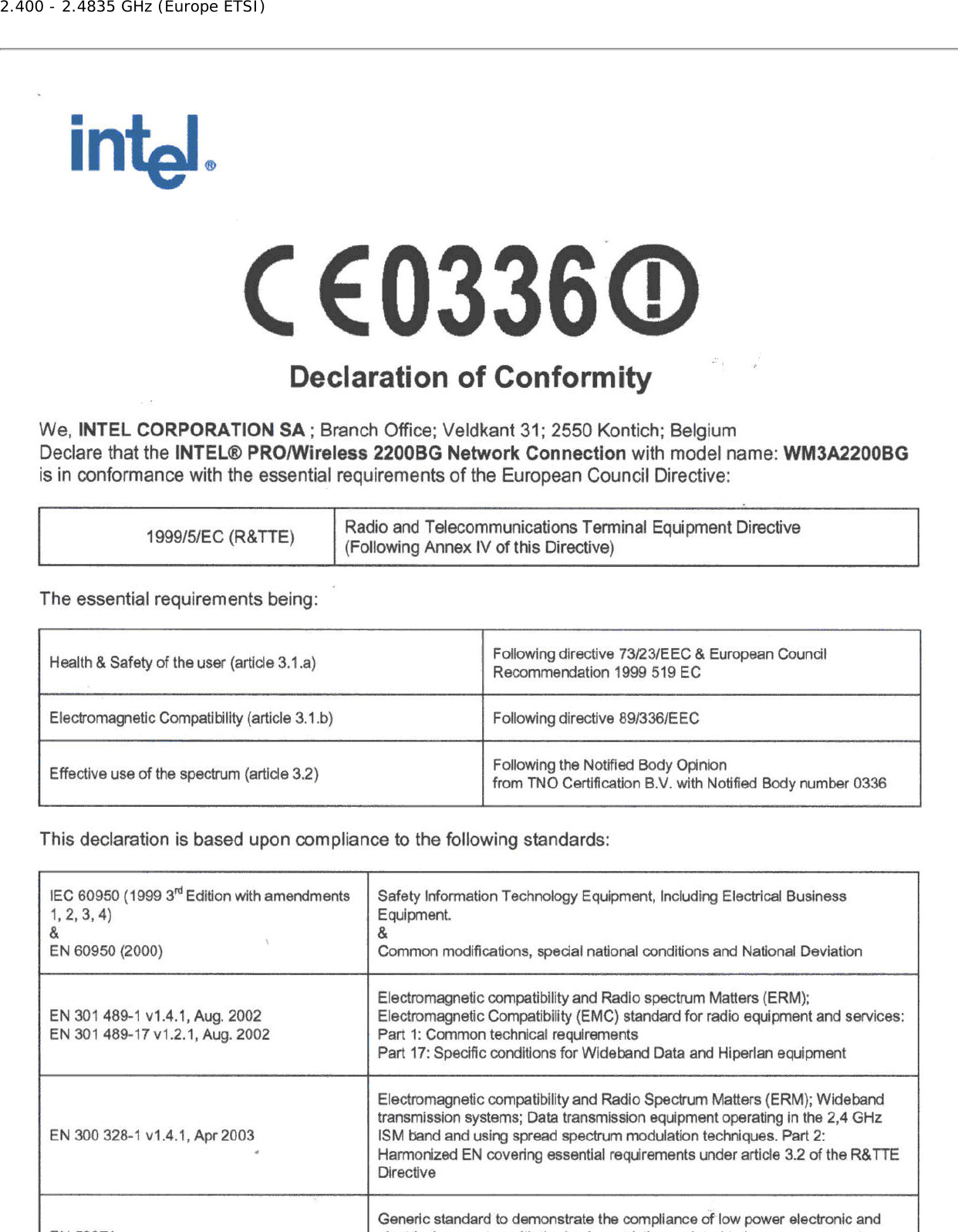
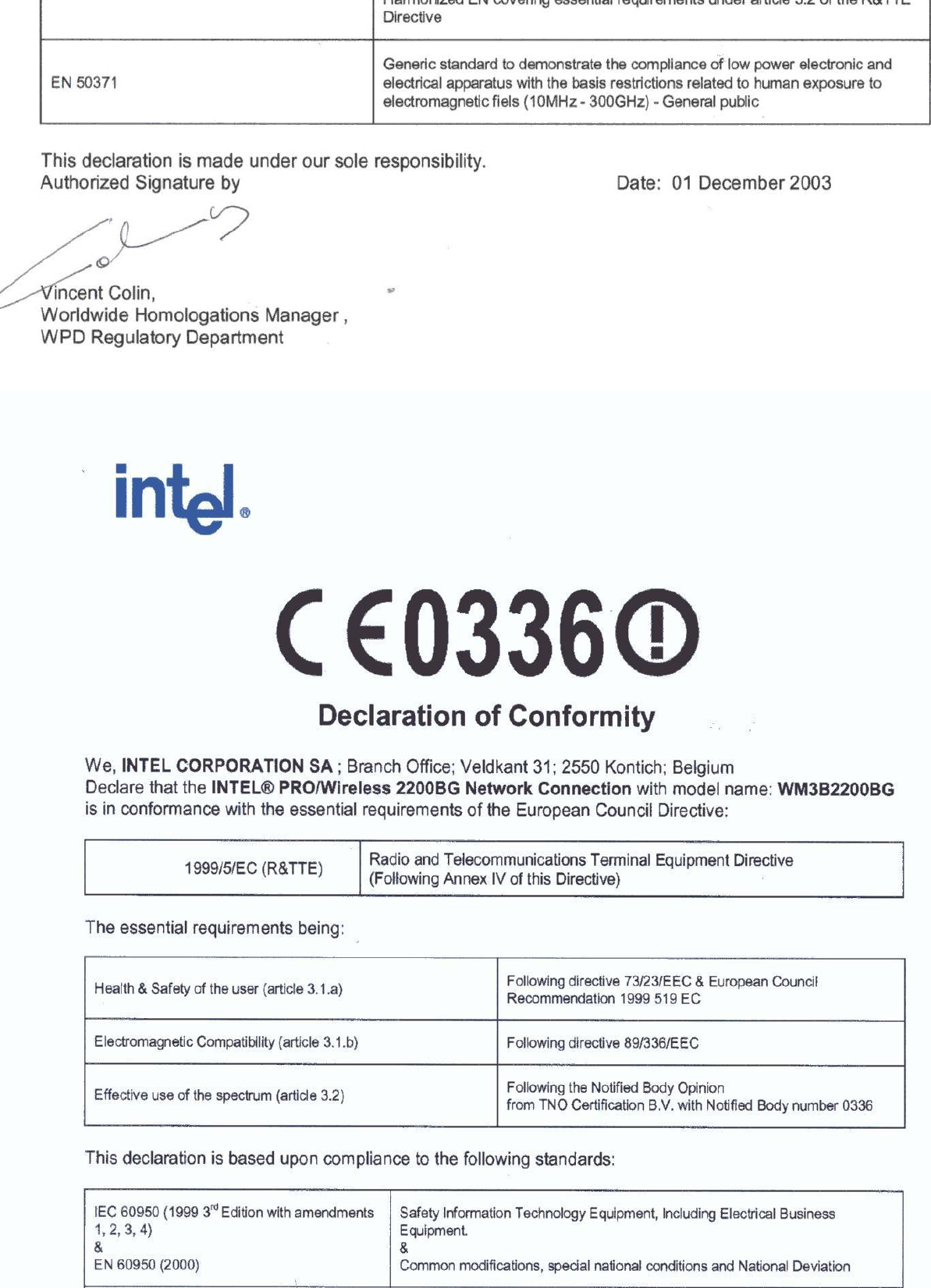
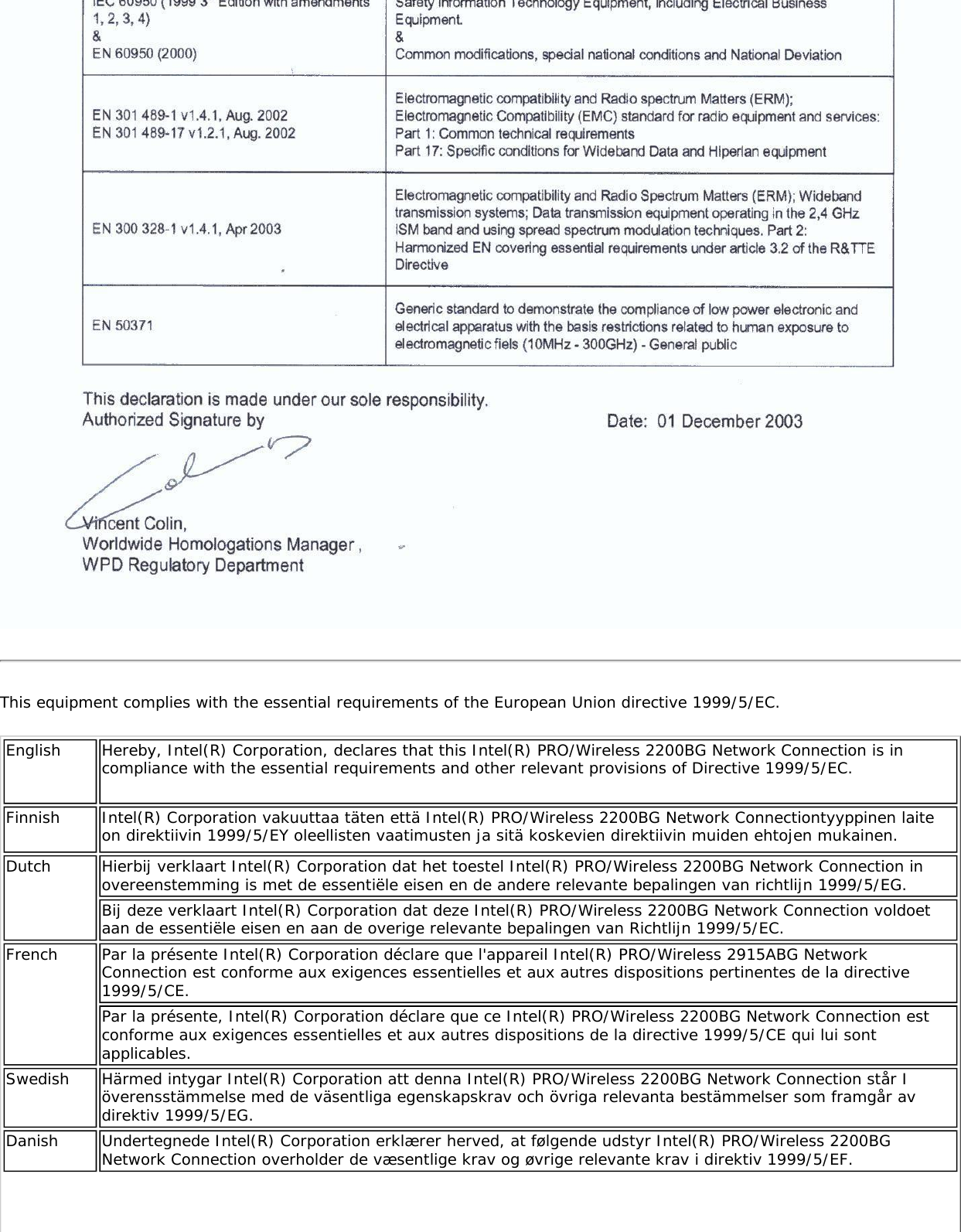
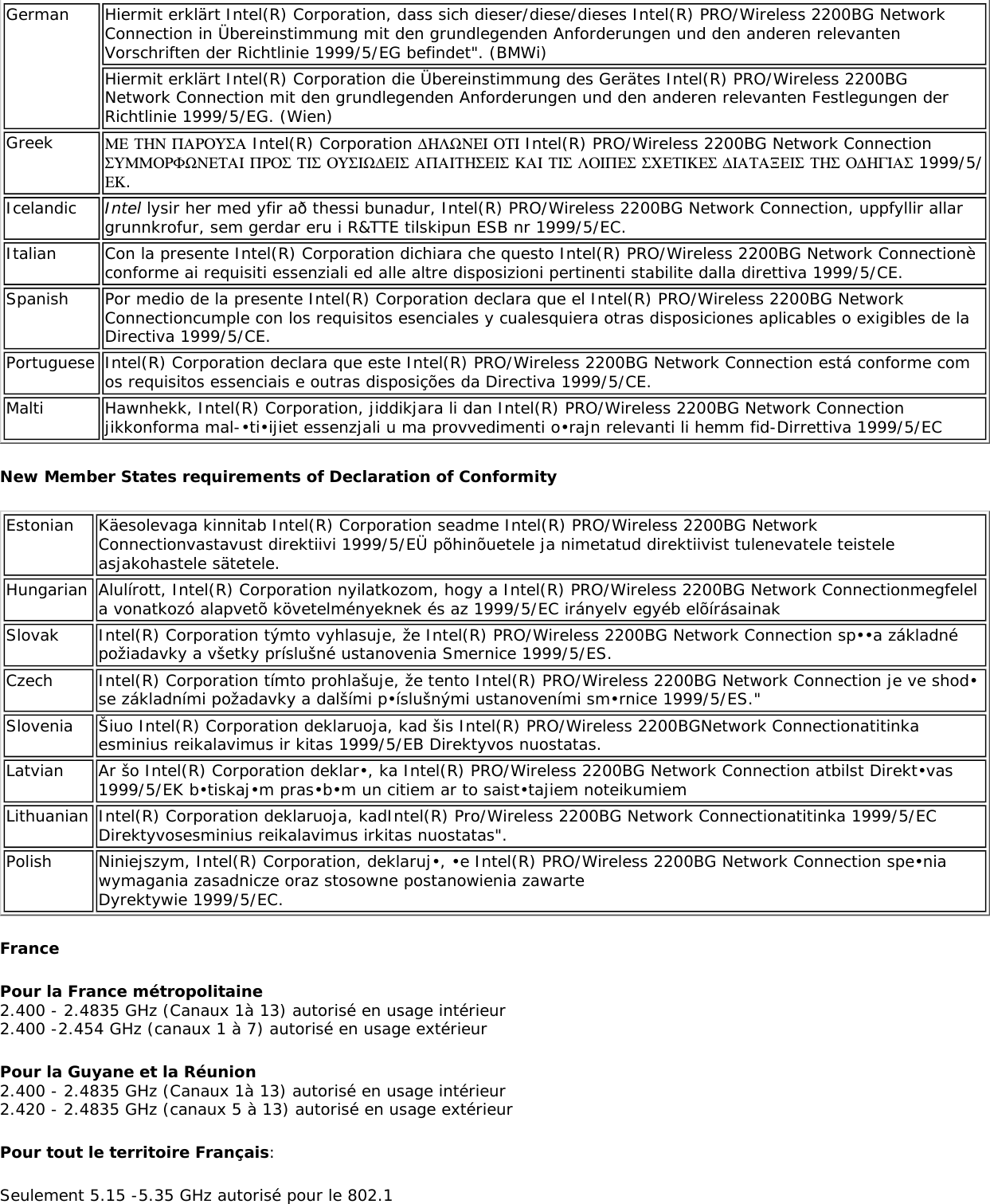
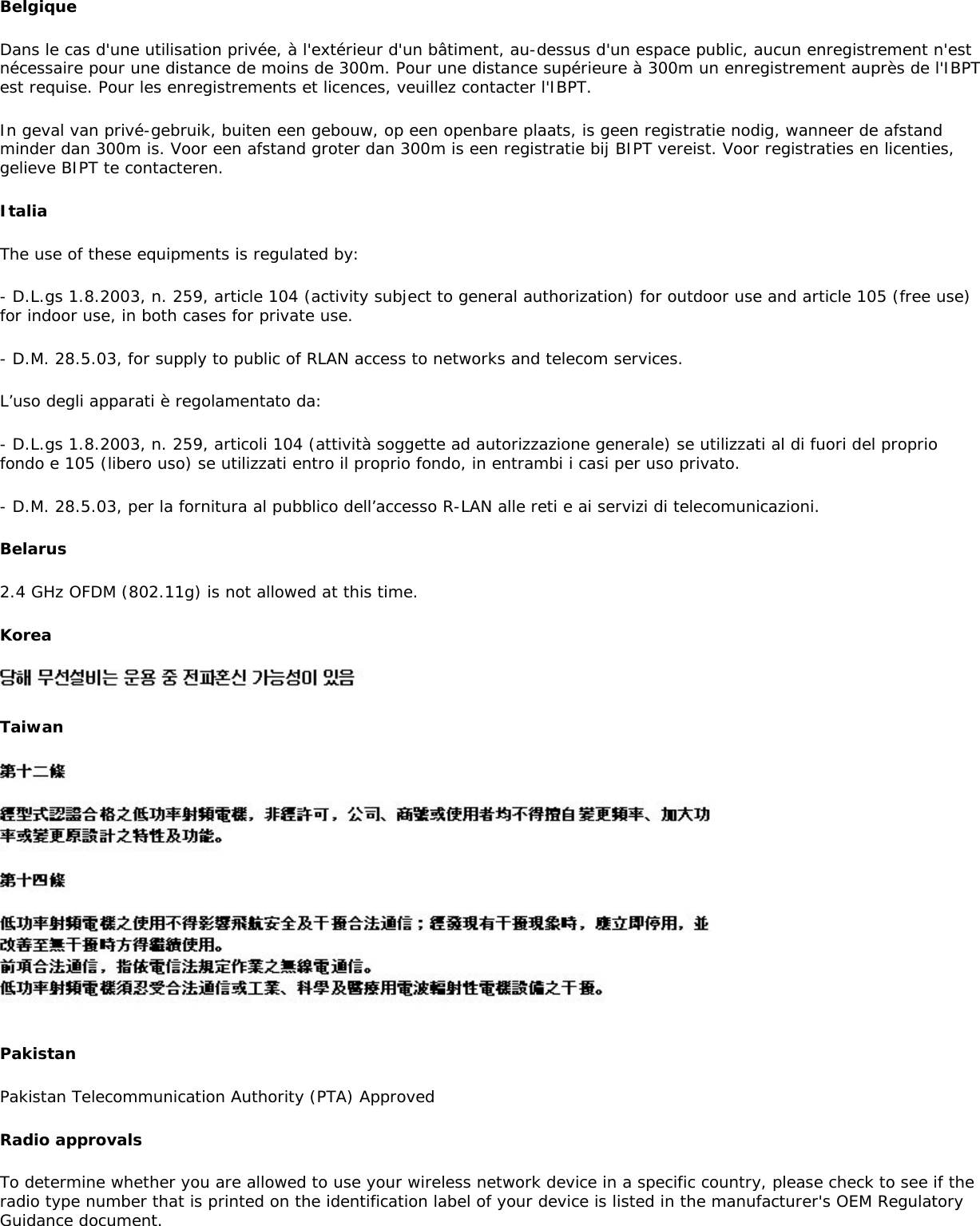
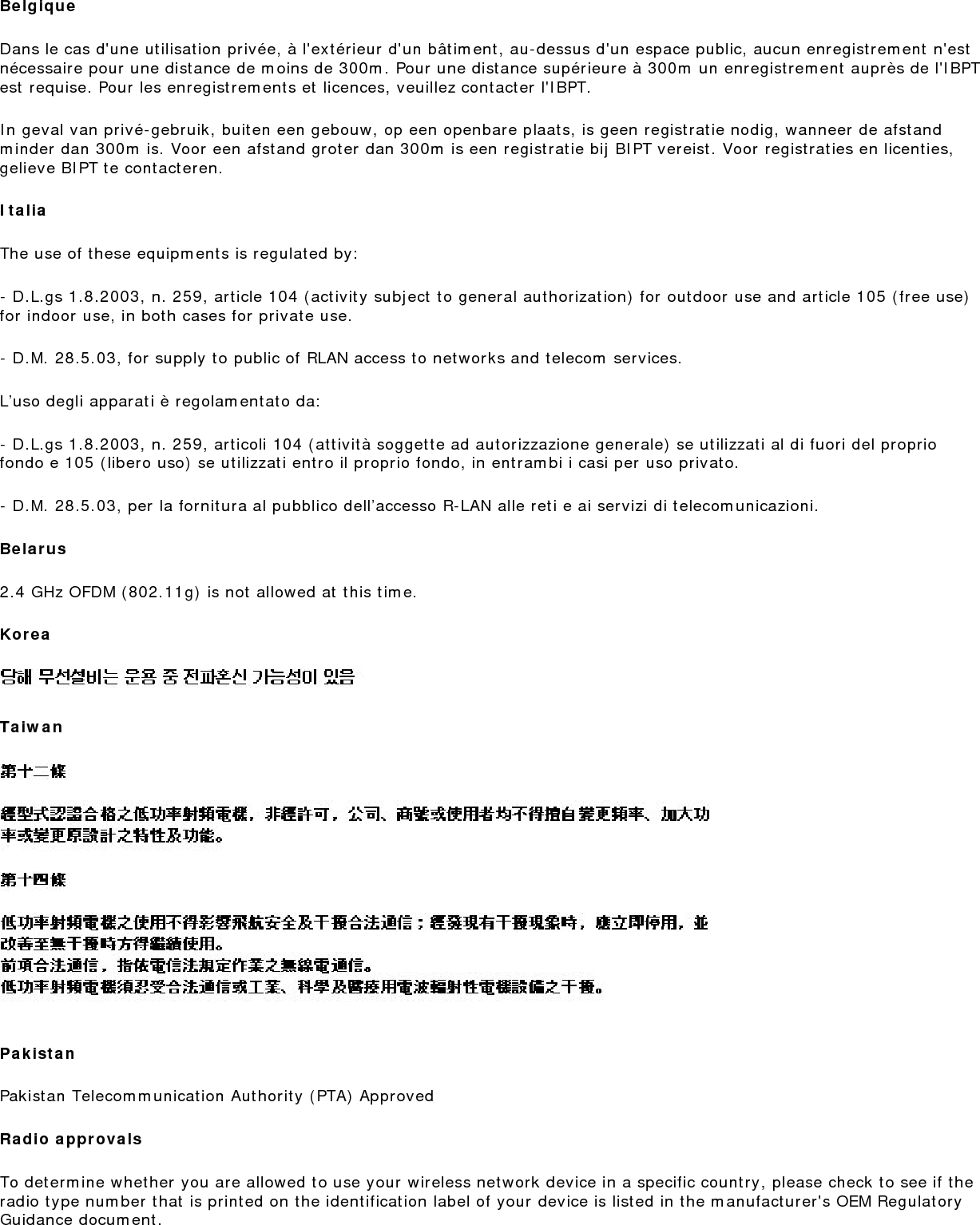
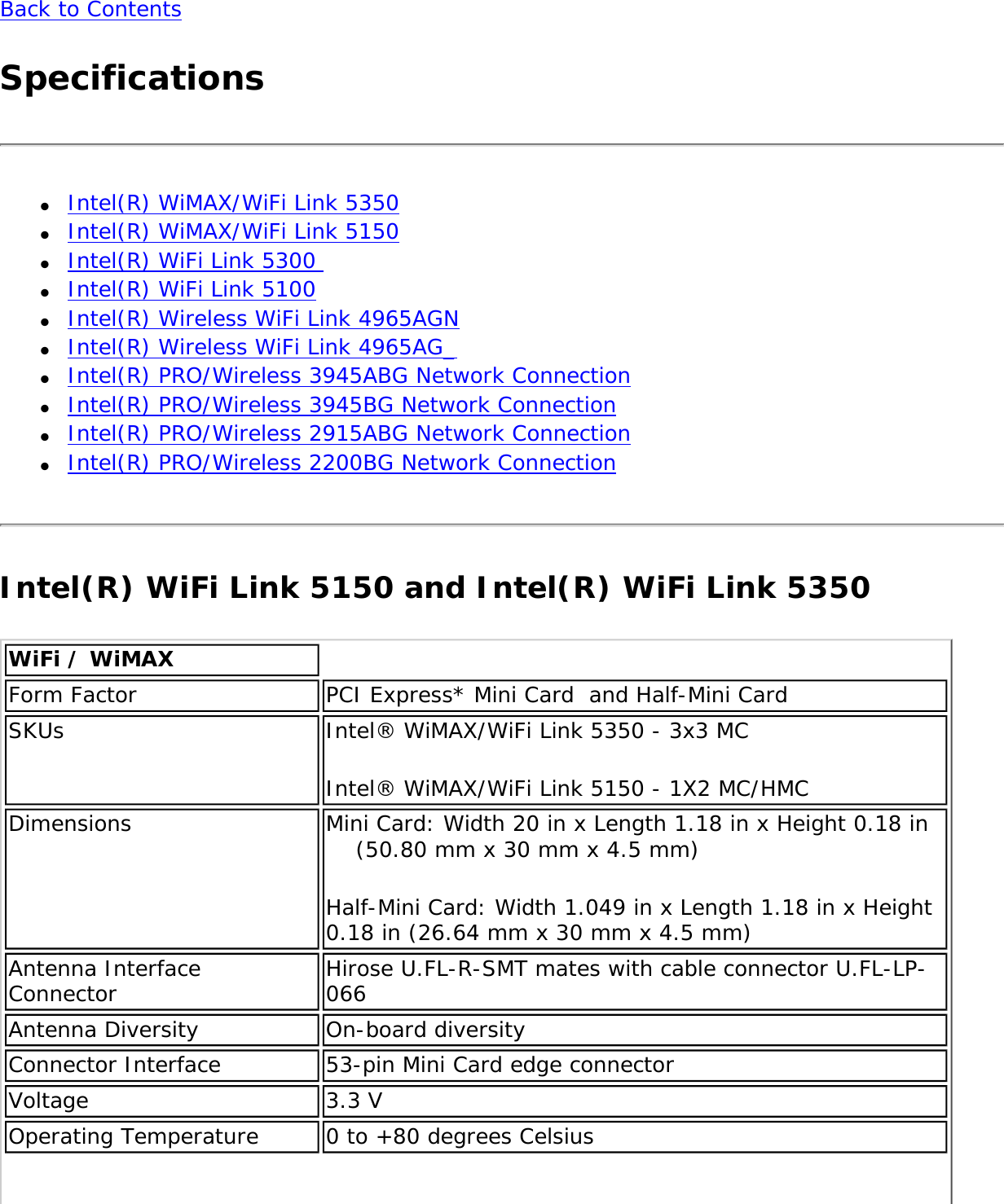
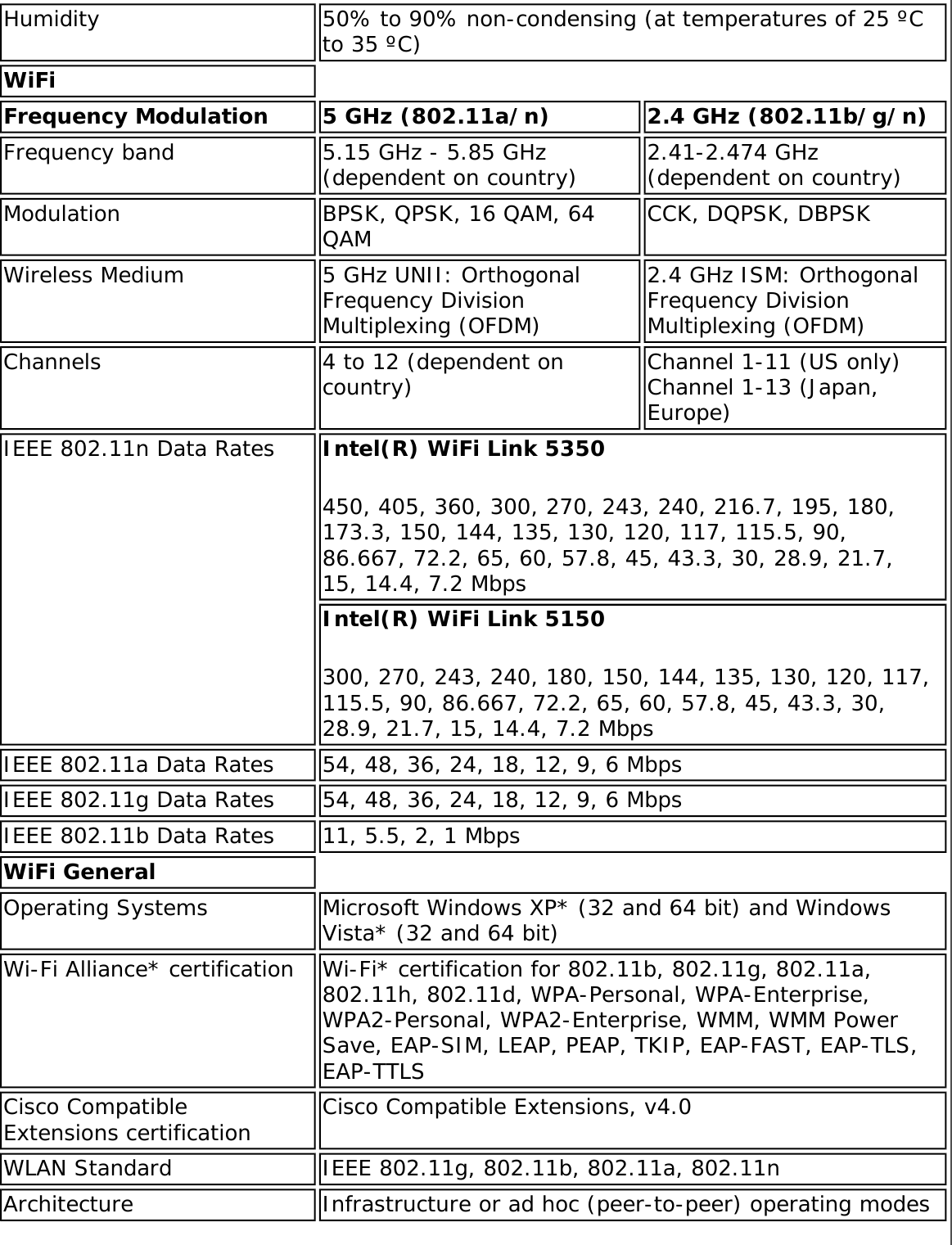
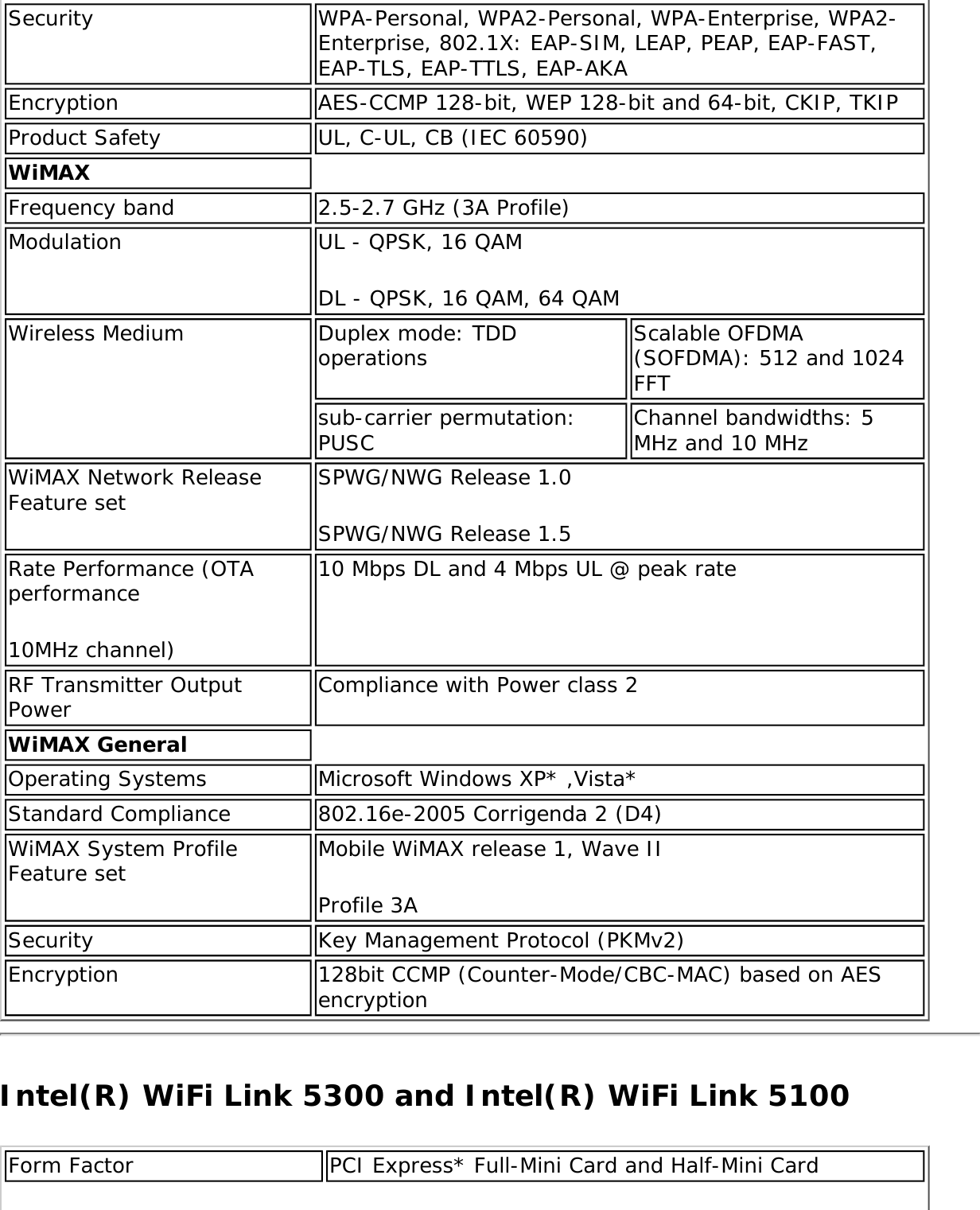
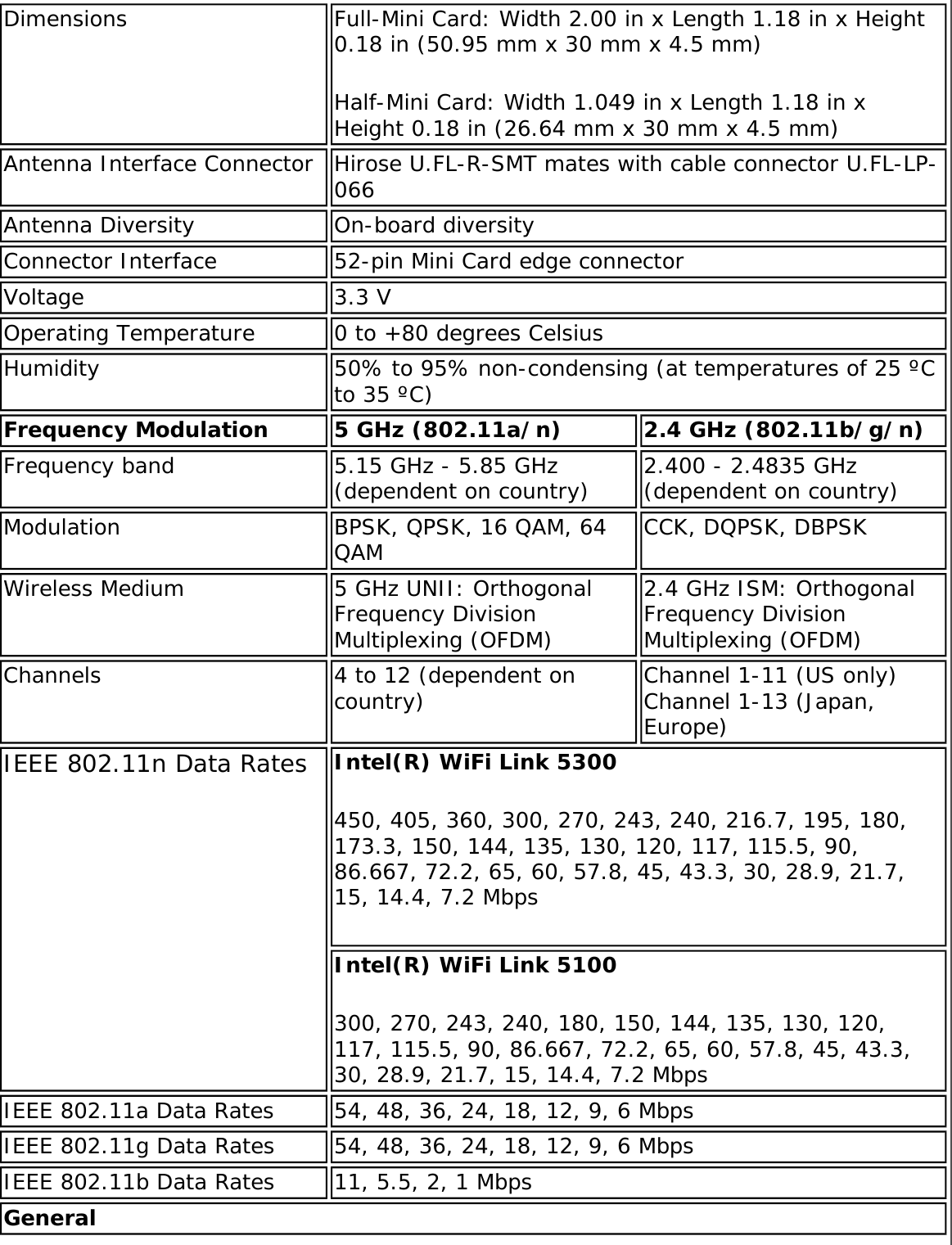
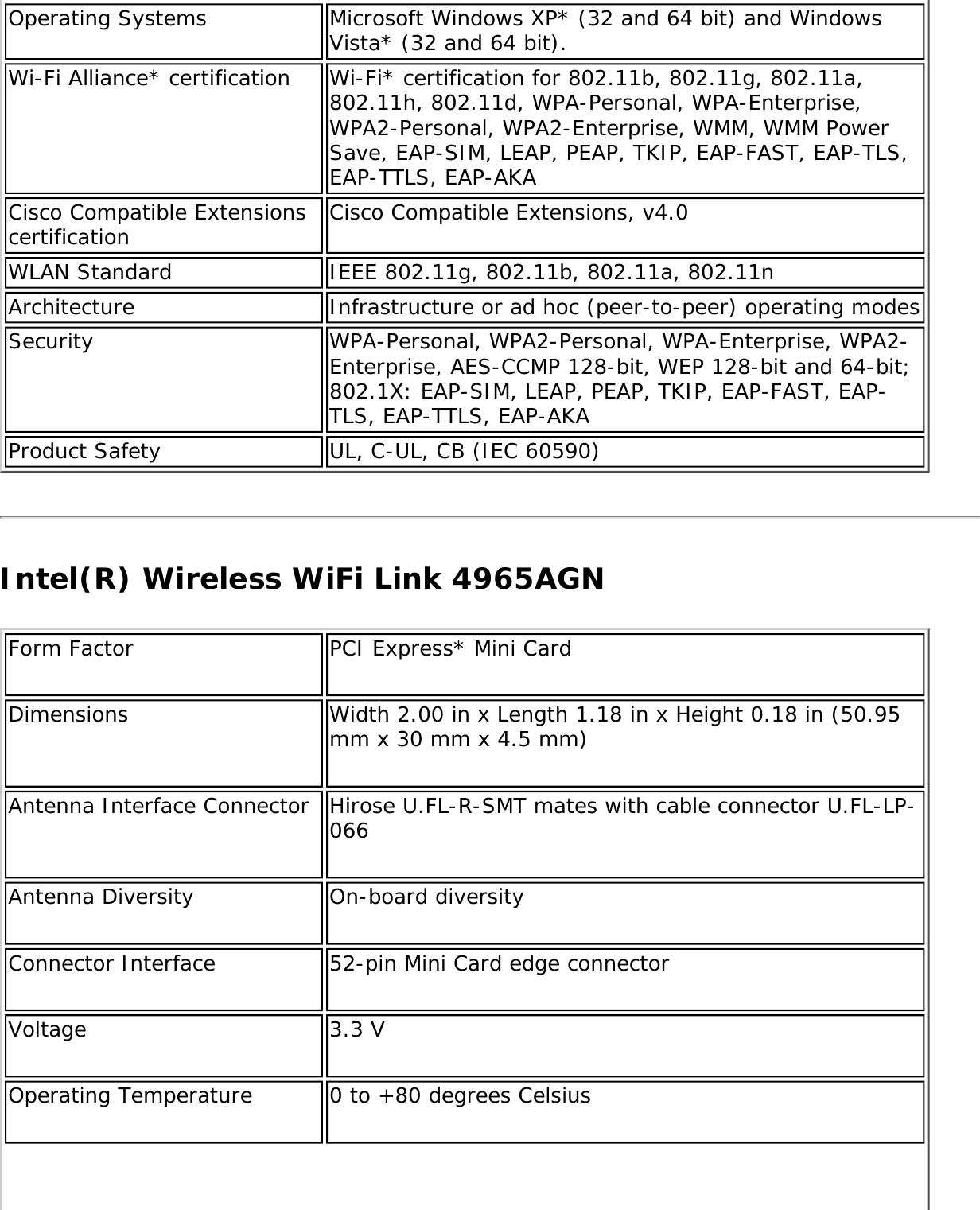
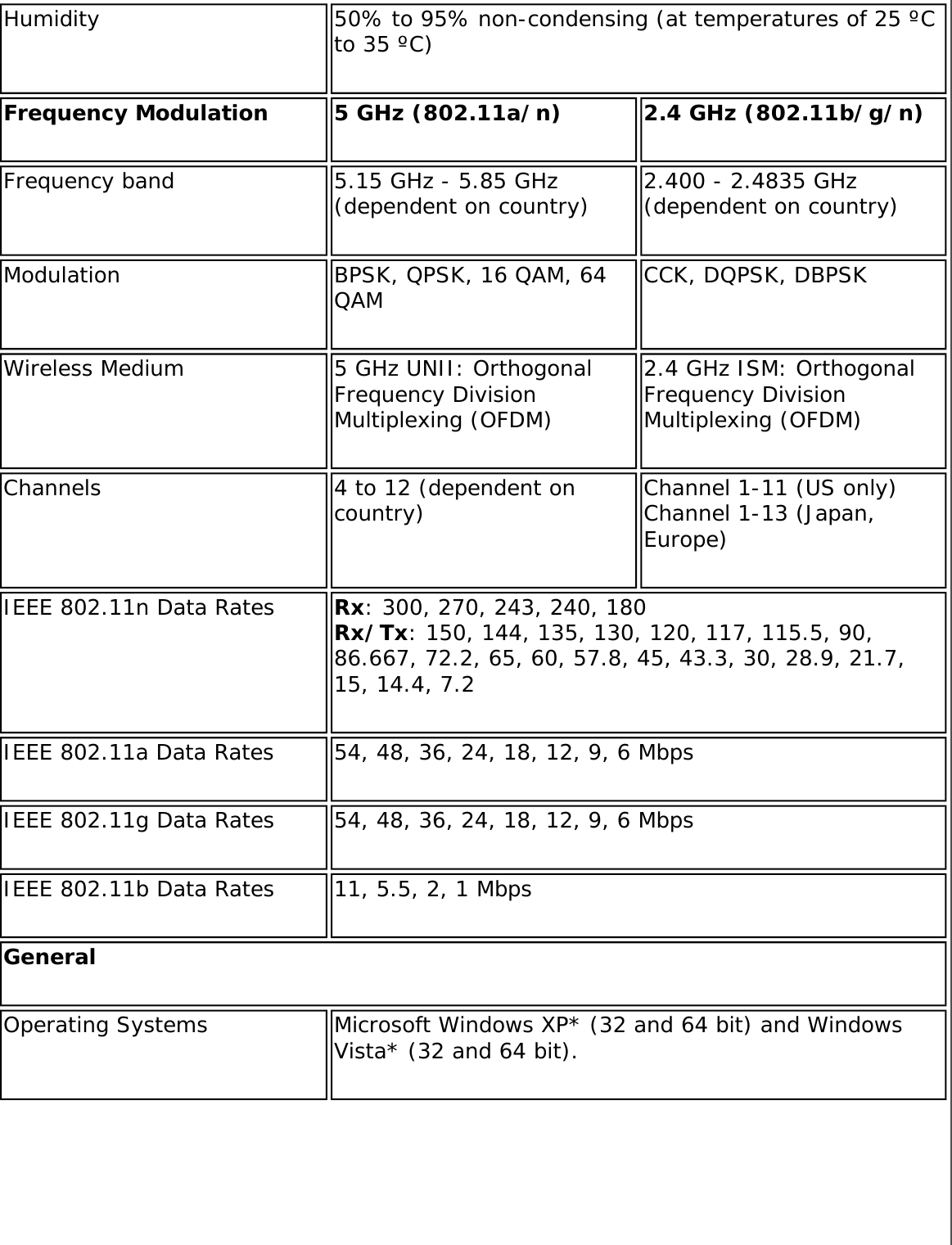
![Wi-Fi Alliance* certification Wi-Fi* certification for 802.11b, 802.11g, 802.11a, 802.11h, 802.11d, WPA-Personal, WPA-Enterprise, WPA2-Personal, WPA2-Enterprise, WMM, WMM Power Save, EAP-SIM, LEAP, PEAP, TKIP, EAP-FAST, EAP-TLS, EAP-TTLS, EAP-AKACisco Compatible Extensions certification Cisco Compatible Extensions, v4.0WLAN Standard IEEE 802.11g, 802.11b, 802.11a, 802.11nArchitecture Infrastructure or ad hoc (peer-to-peer) operating modesSecurity WPA-Personal, WPA2-Personal, WPA-Enterprise, WPA2-Enterprise, AES-CCMP 128-bit, WEP 128-bit and 64-bit; 802.1X: EAP-SIM, LEAP, PEAP, TKIP, EAP-FAST, EAP-TLS, EAP-TTLS, EAP-AKAProduct Safety UL, C-UL, CB (IEC 60590)Intel(R) Wireless WiFi Link 4965AG_This is a version of Intel Wireless WiFi 4965AGN with 8-2.11n capabilities disabled. 802.11n refers to: IEEE P802.11n / D2.0 Draft Amendment to STANDARD [FOR] Information Technology-Telecommunications and information exchange between systems-Local and Metropolitan networks-Specific requirements-Part 11: Wireless LAN Medium Access Control (MAC) and Physical Layer (PHY) specifications: Enhancements for Higher Throughput.Form Factor PCI Express Mini CardDimensions Width 2.00 in x Length 1.18 in x Height 0.18 in (50.95 mm x 30 mm x 4.5 mm)Antenna Interface Connector Hirose U.FL-R-SMT mates with cable connector U.FL-LP-066Antenna Diversity On-board diversityConnector Interface 52-pin Mini Card edge connectorVoltage 3.3 VOperating Temperature 0 to +80 degrees Celsius](https://usermanual.wiki/Intel/533ANH.XP-User-Guide-2-of-2/User-Guide-964561-Page-48.png)
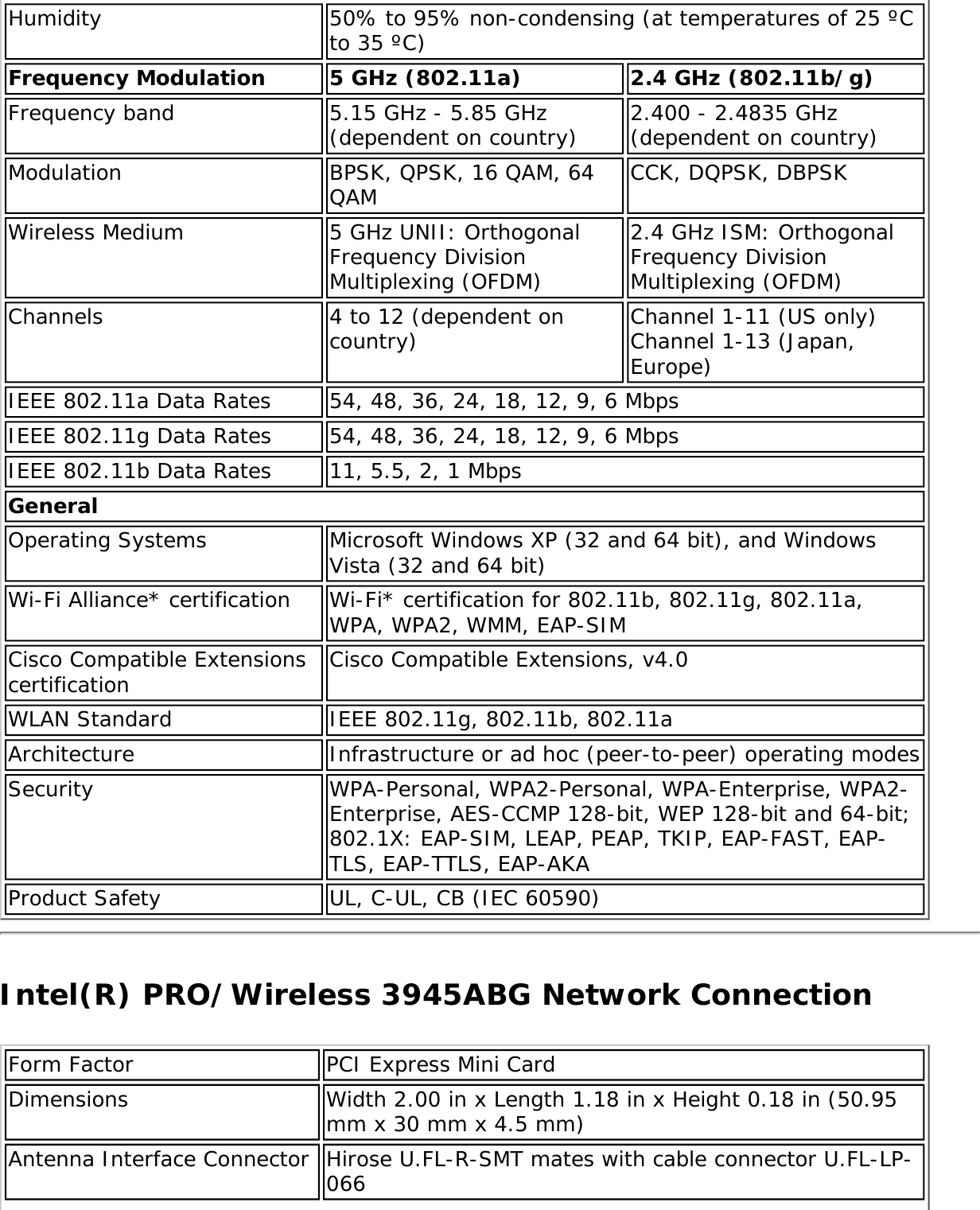
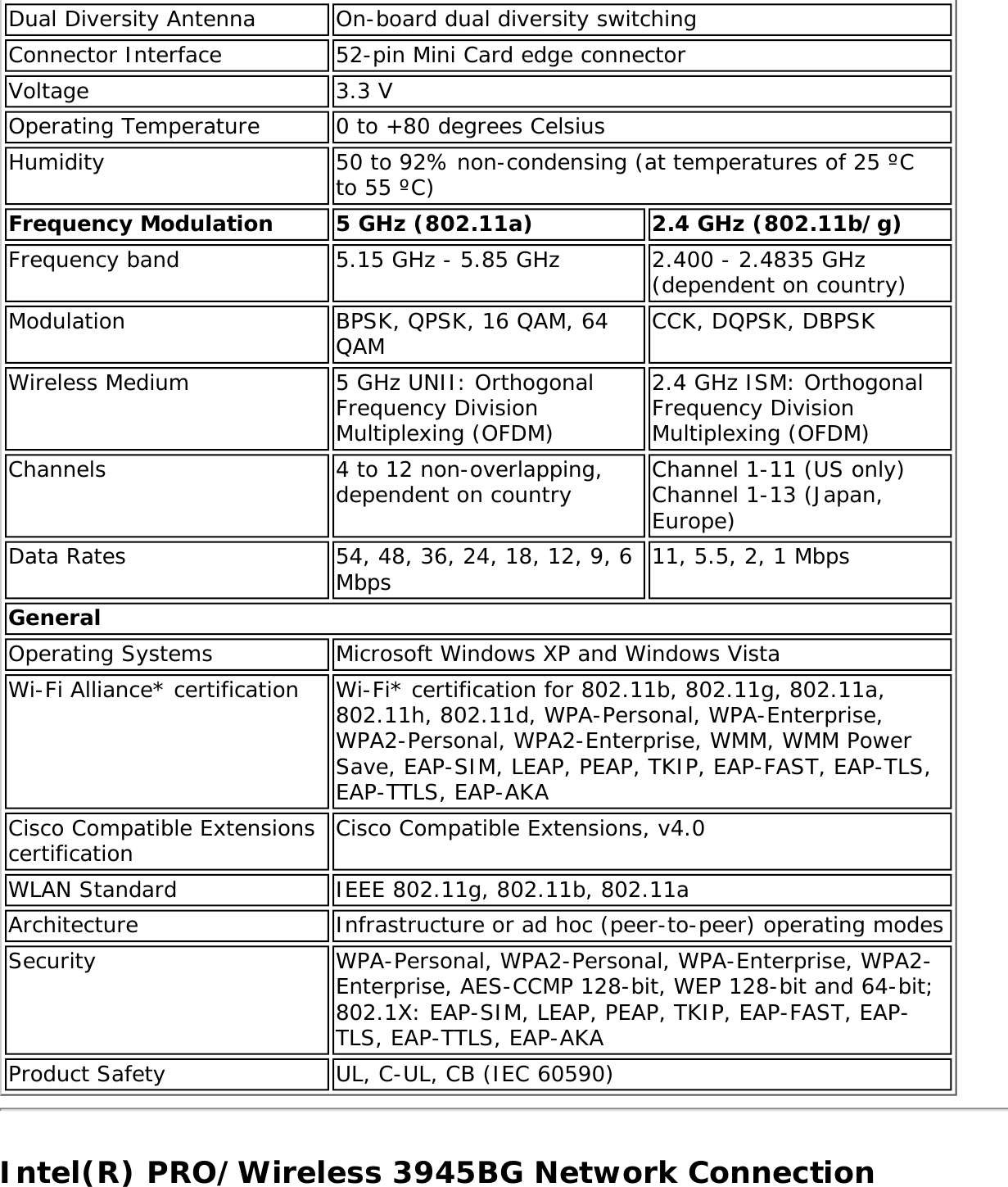
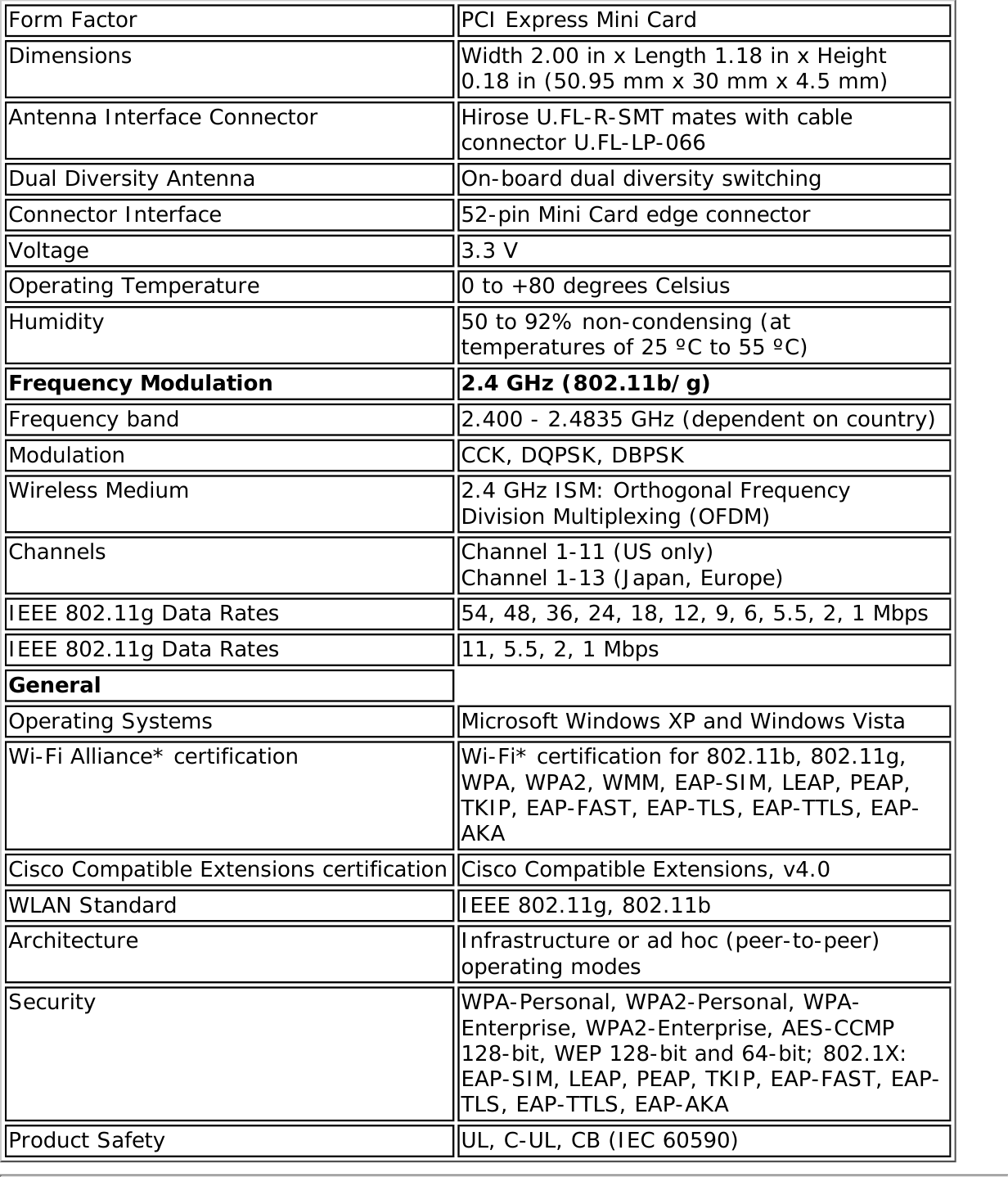
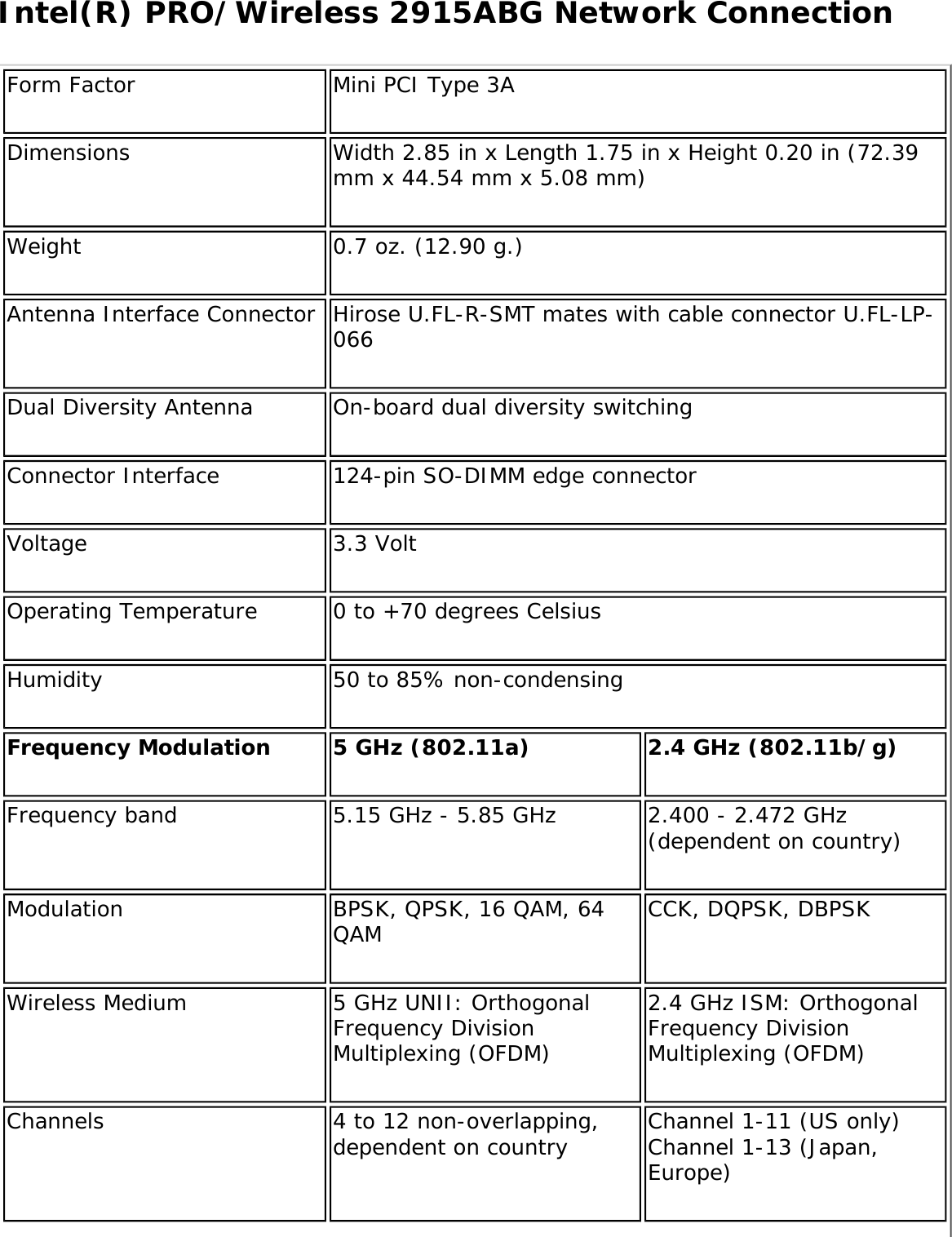
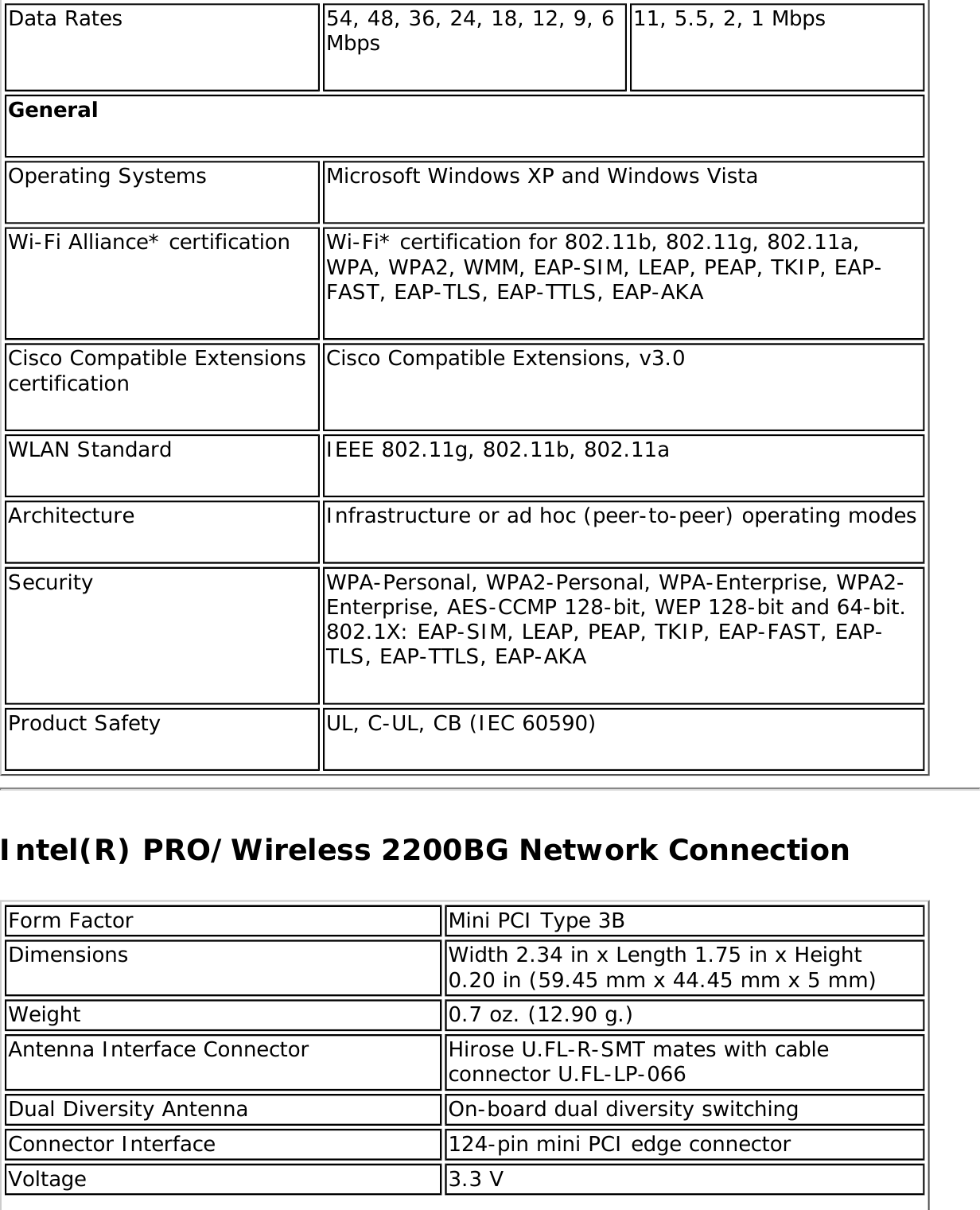
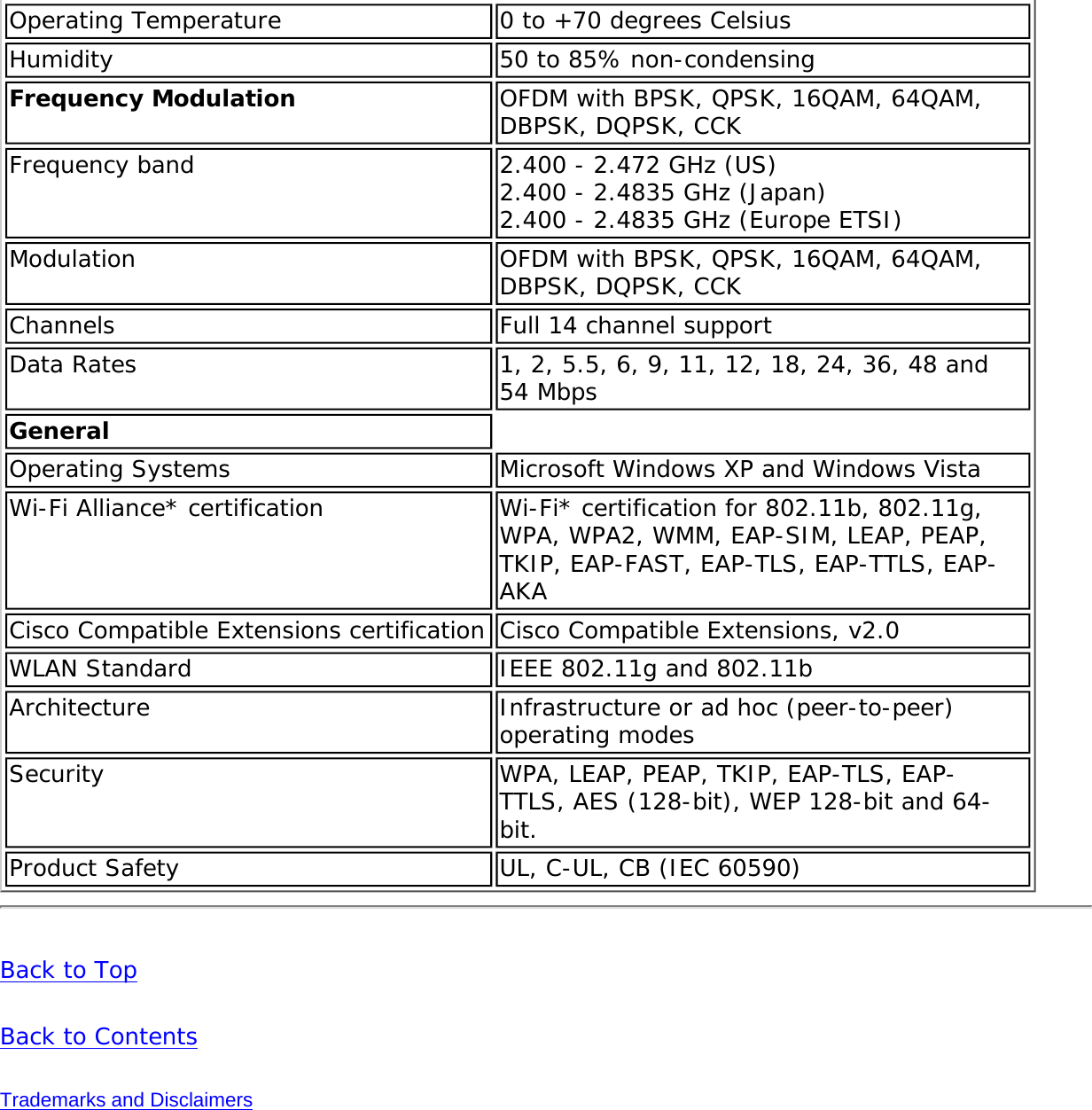
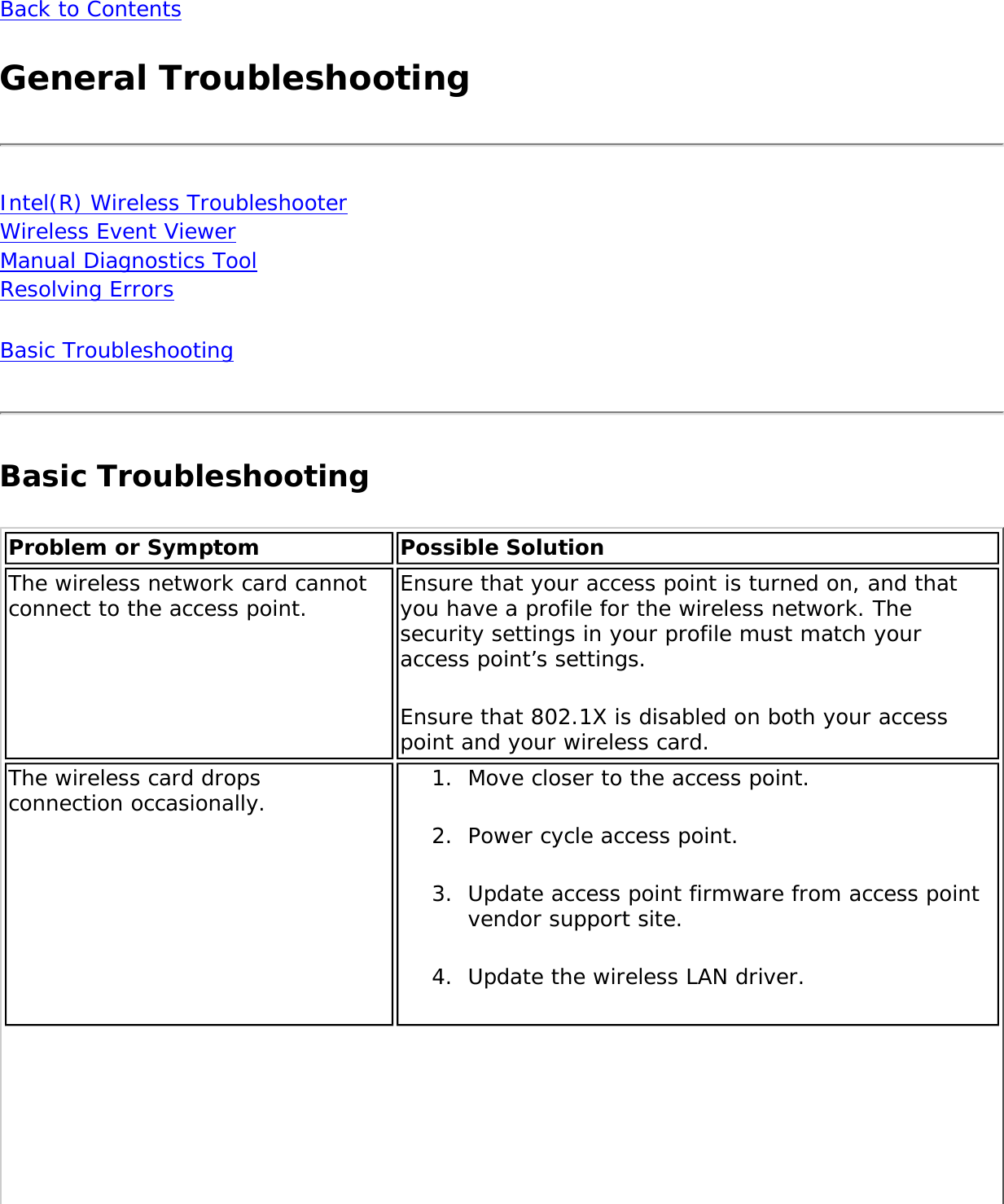
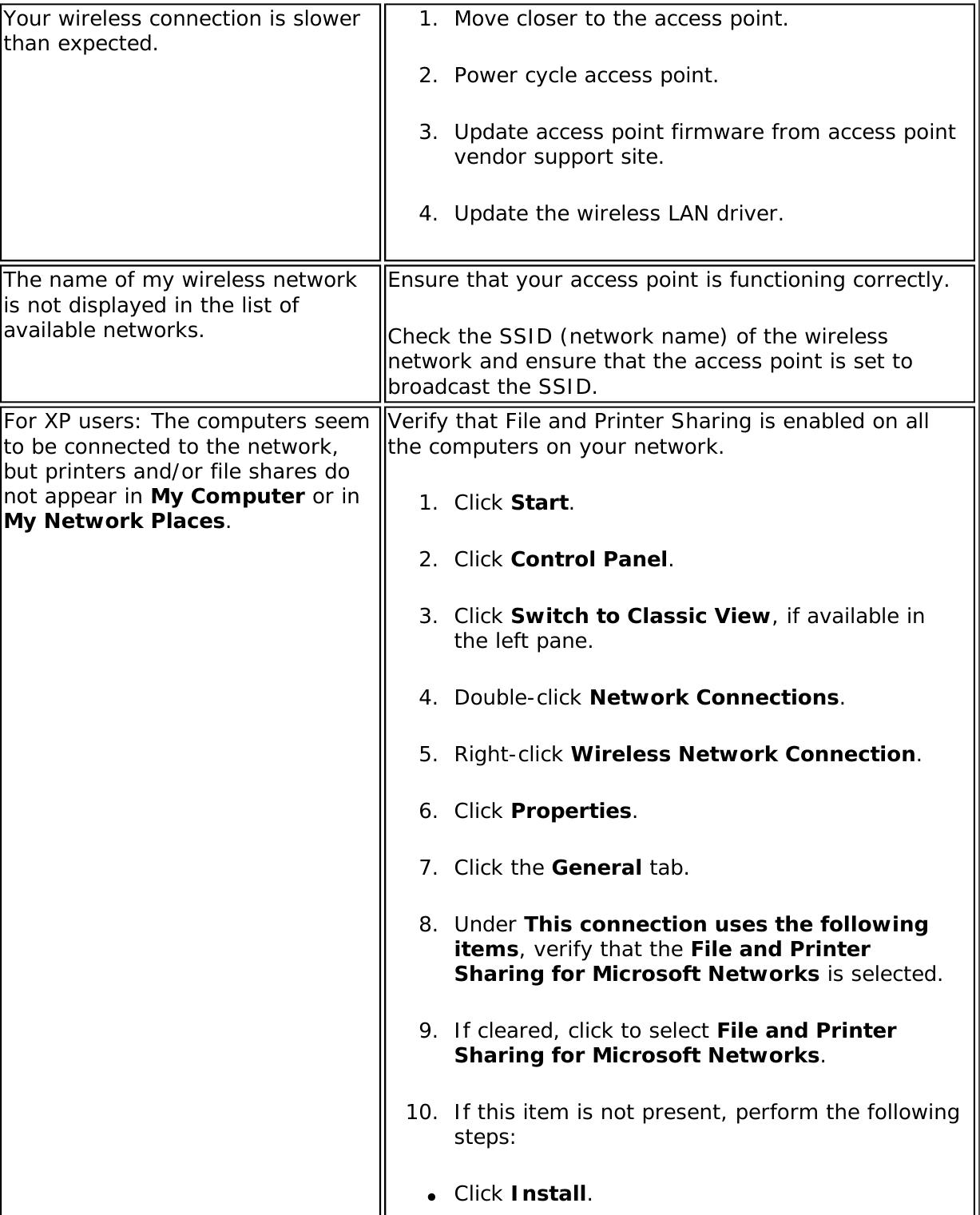
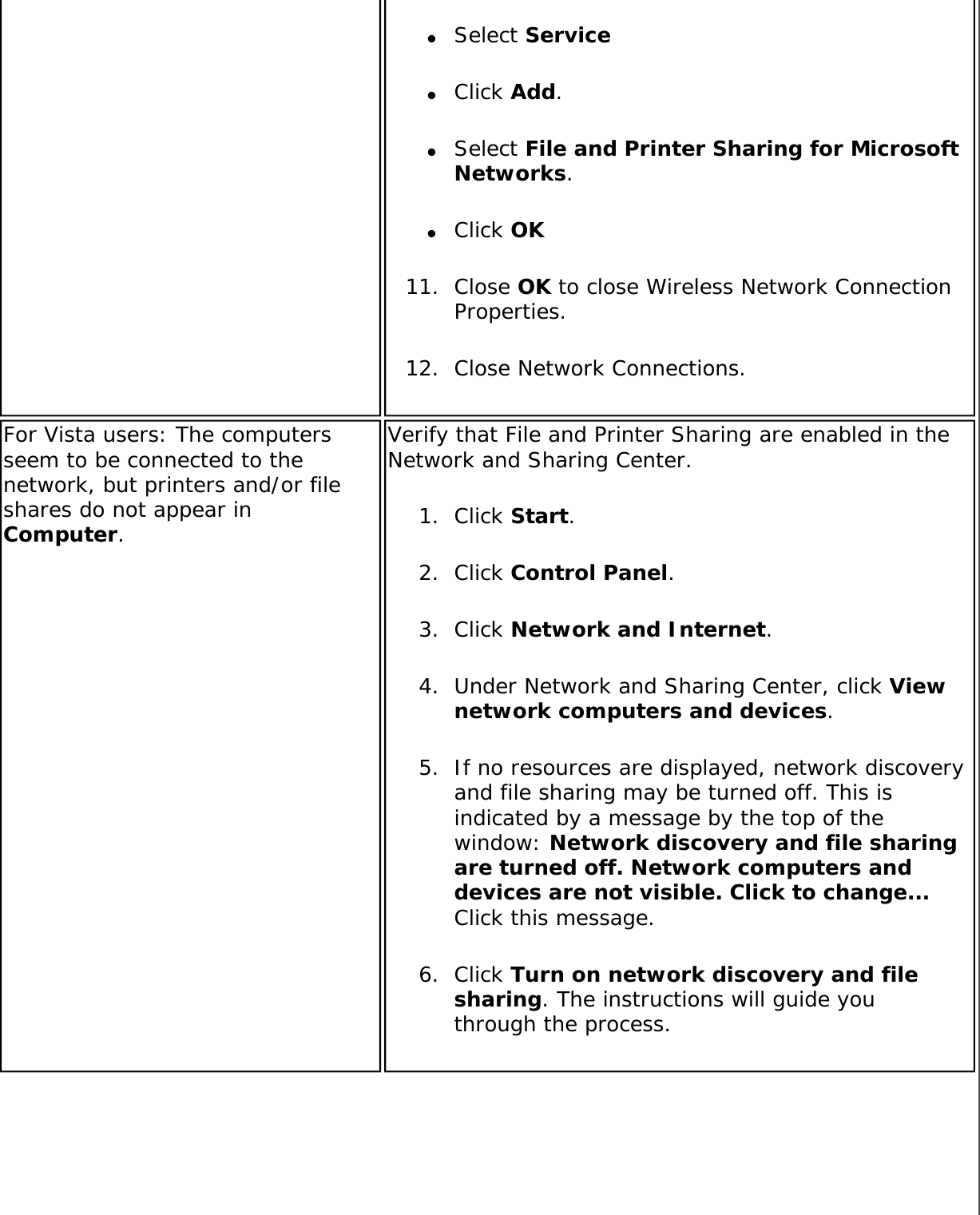
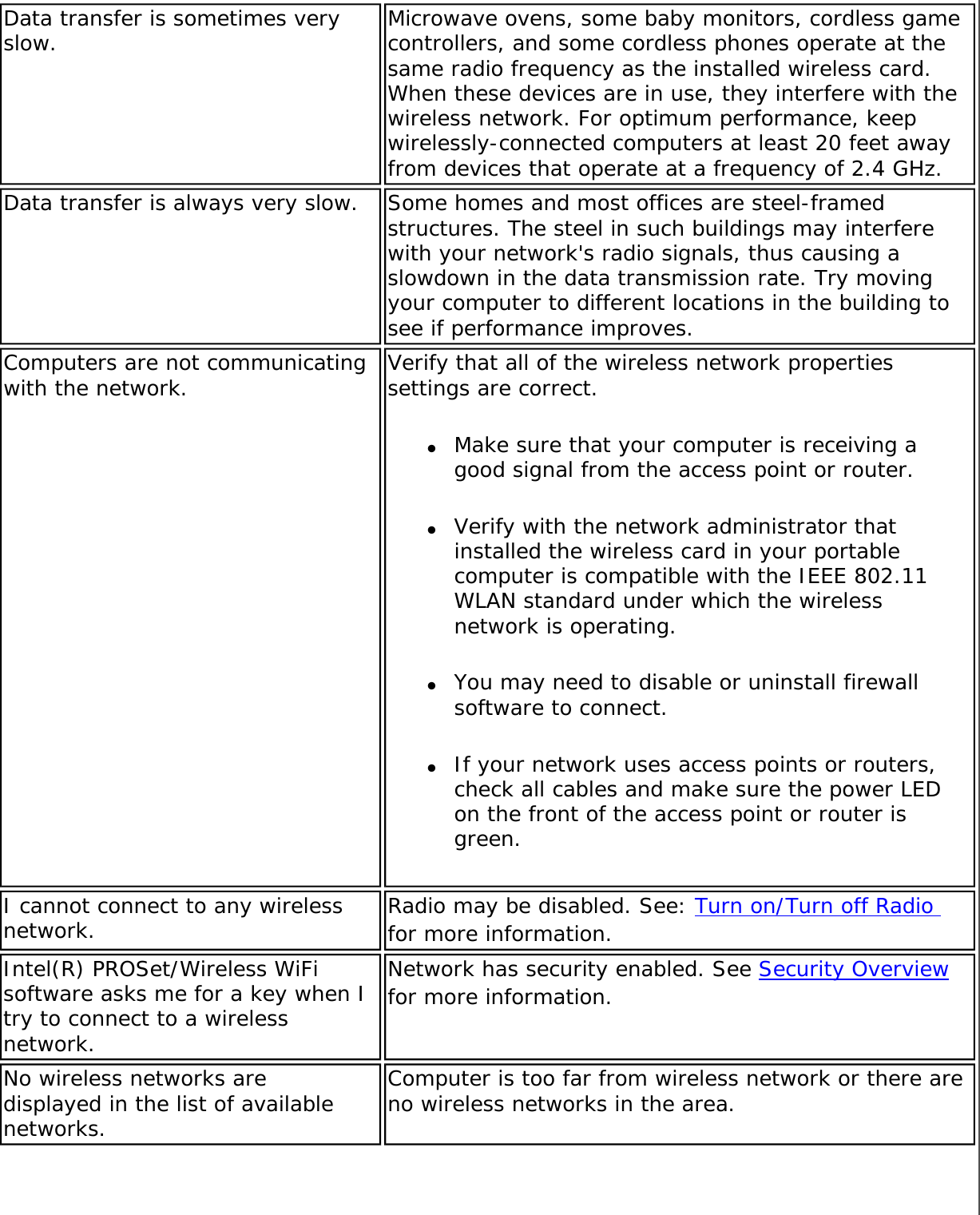
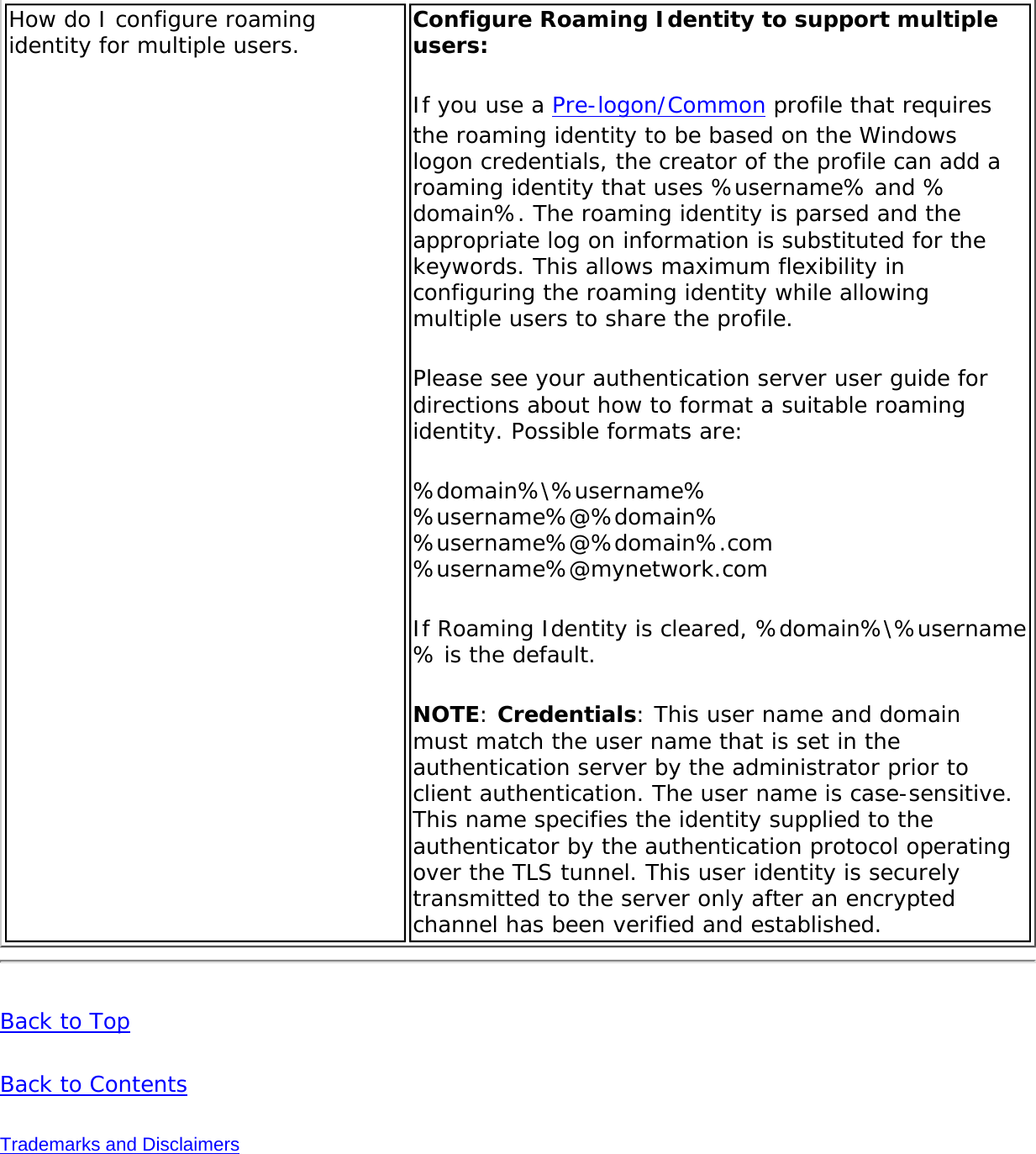
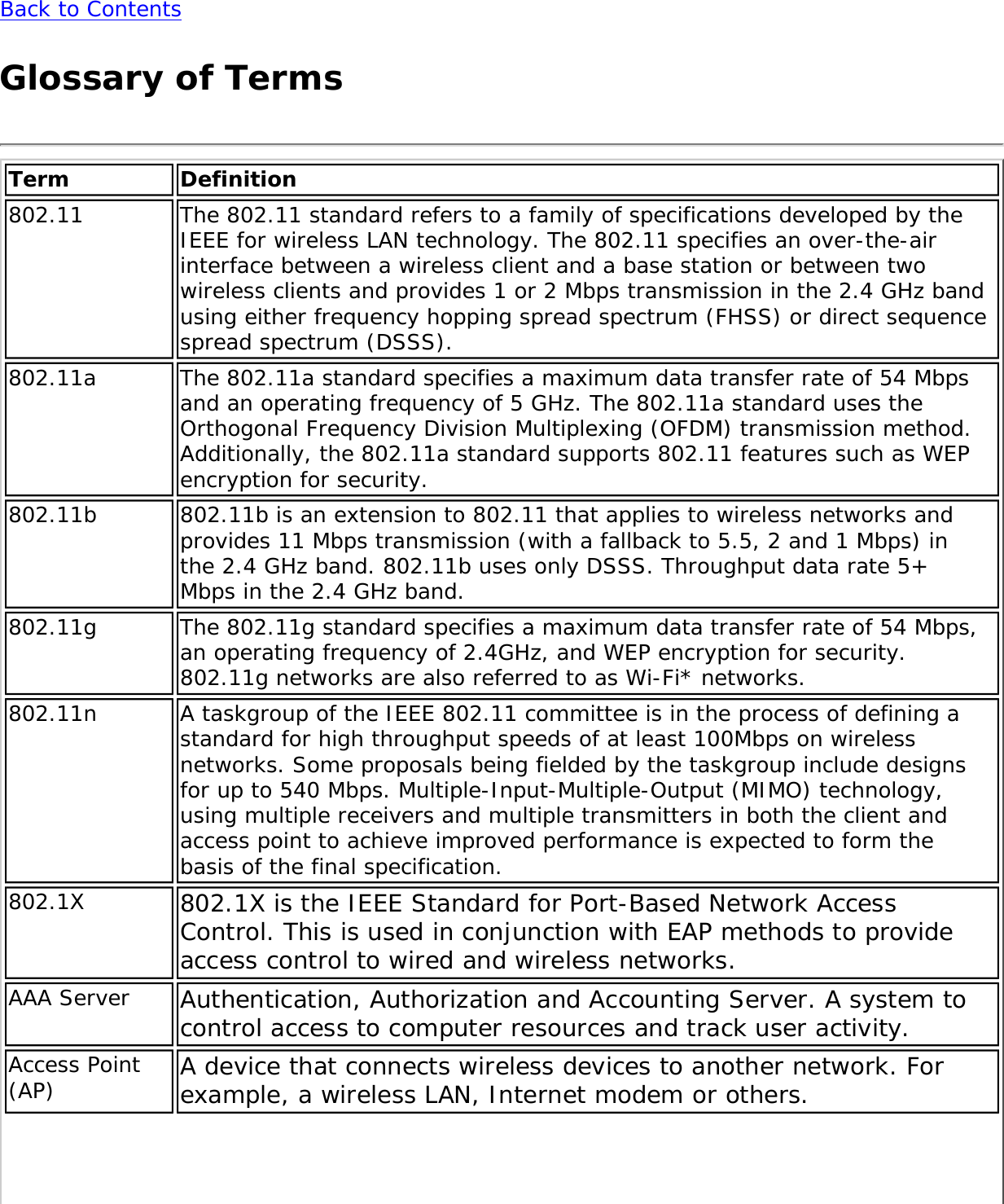
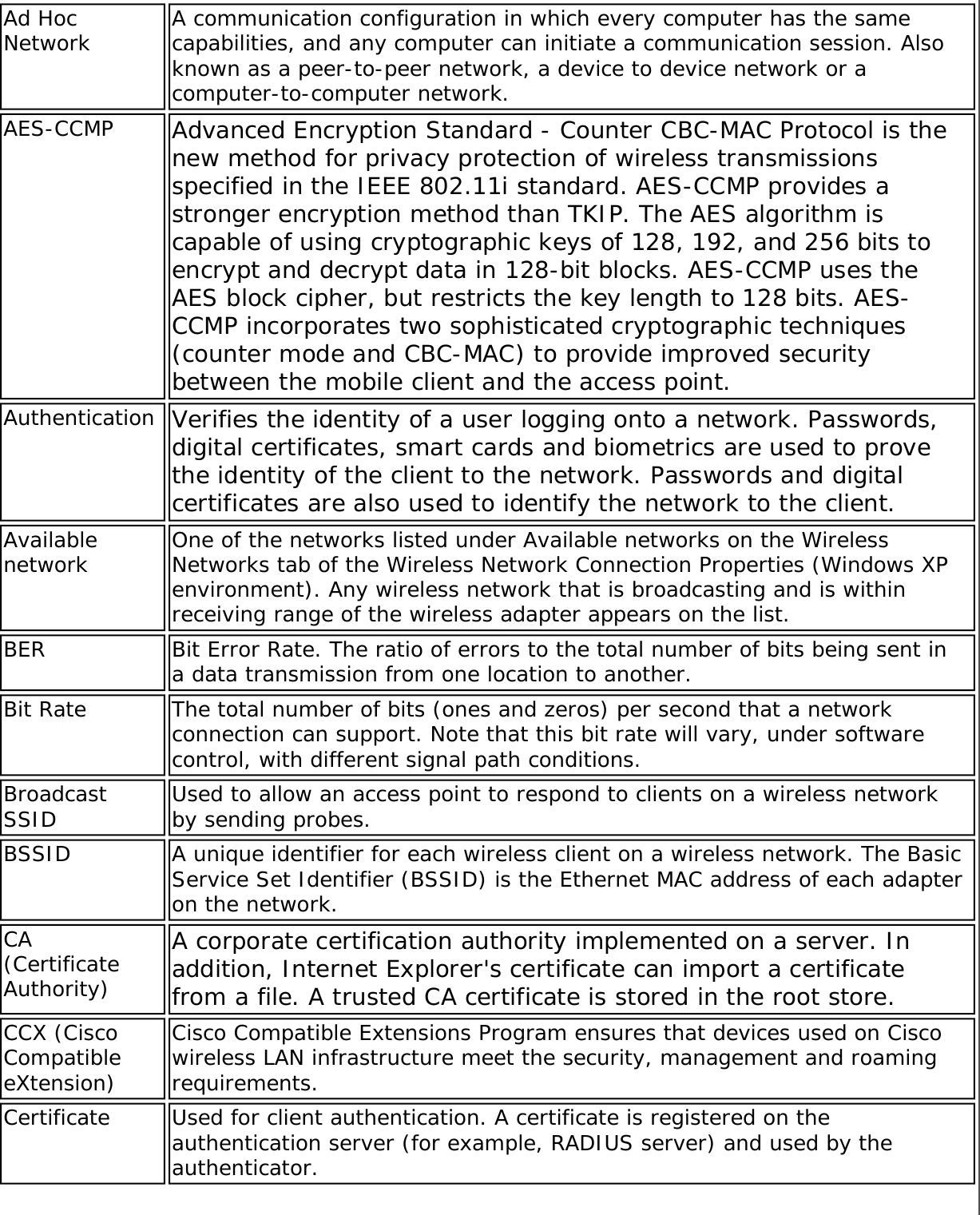
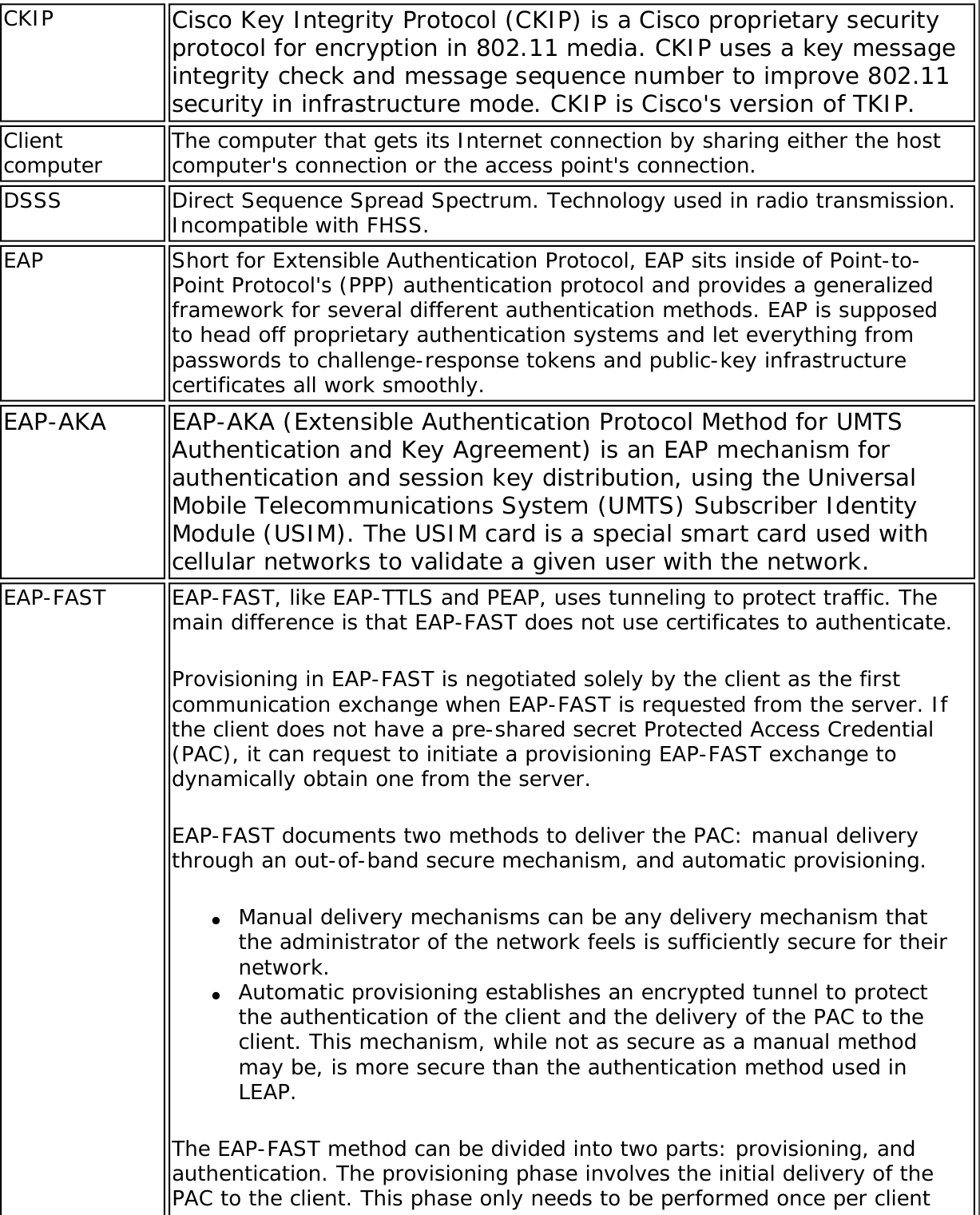
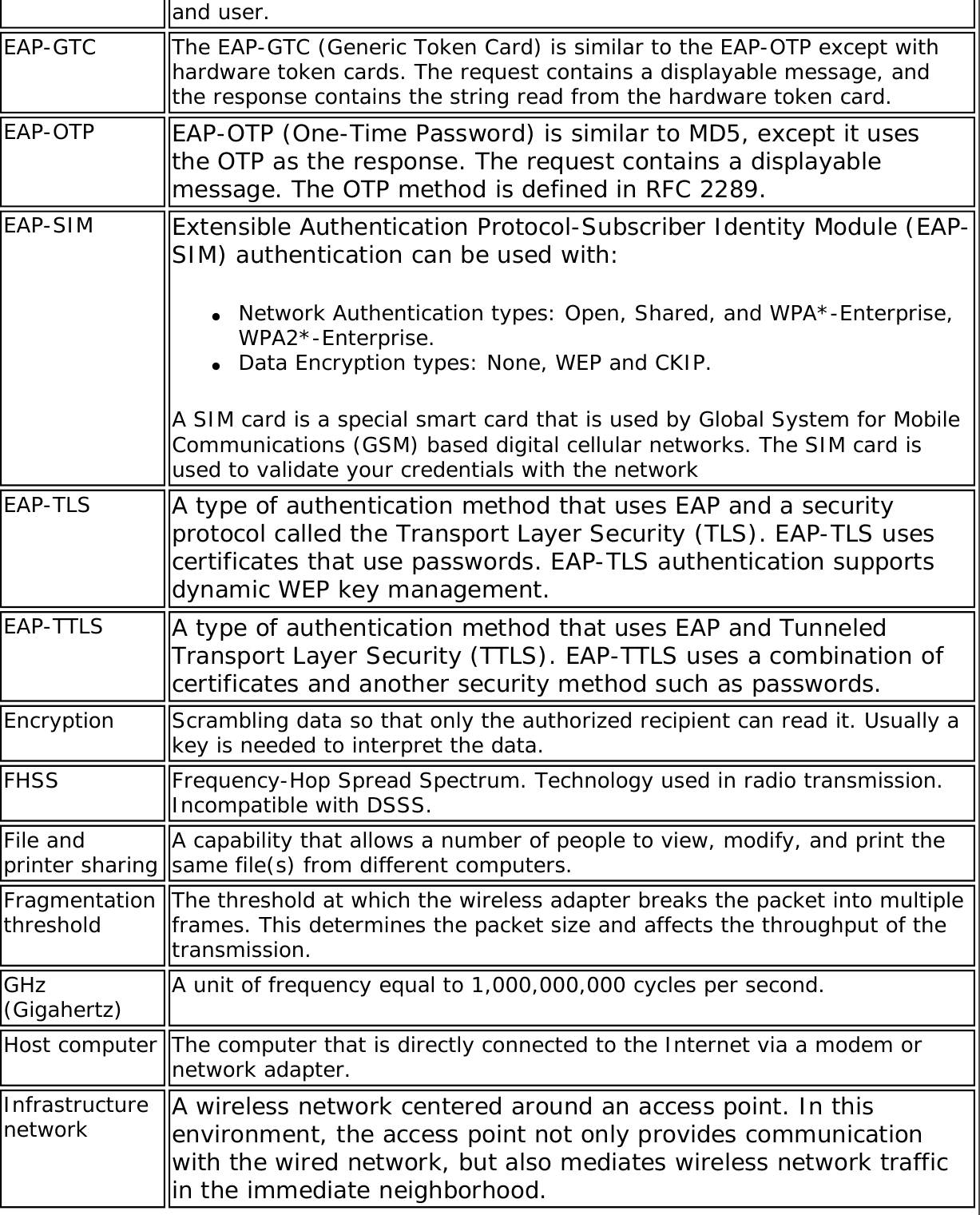
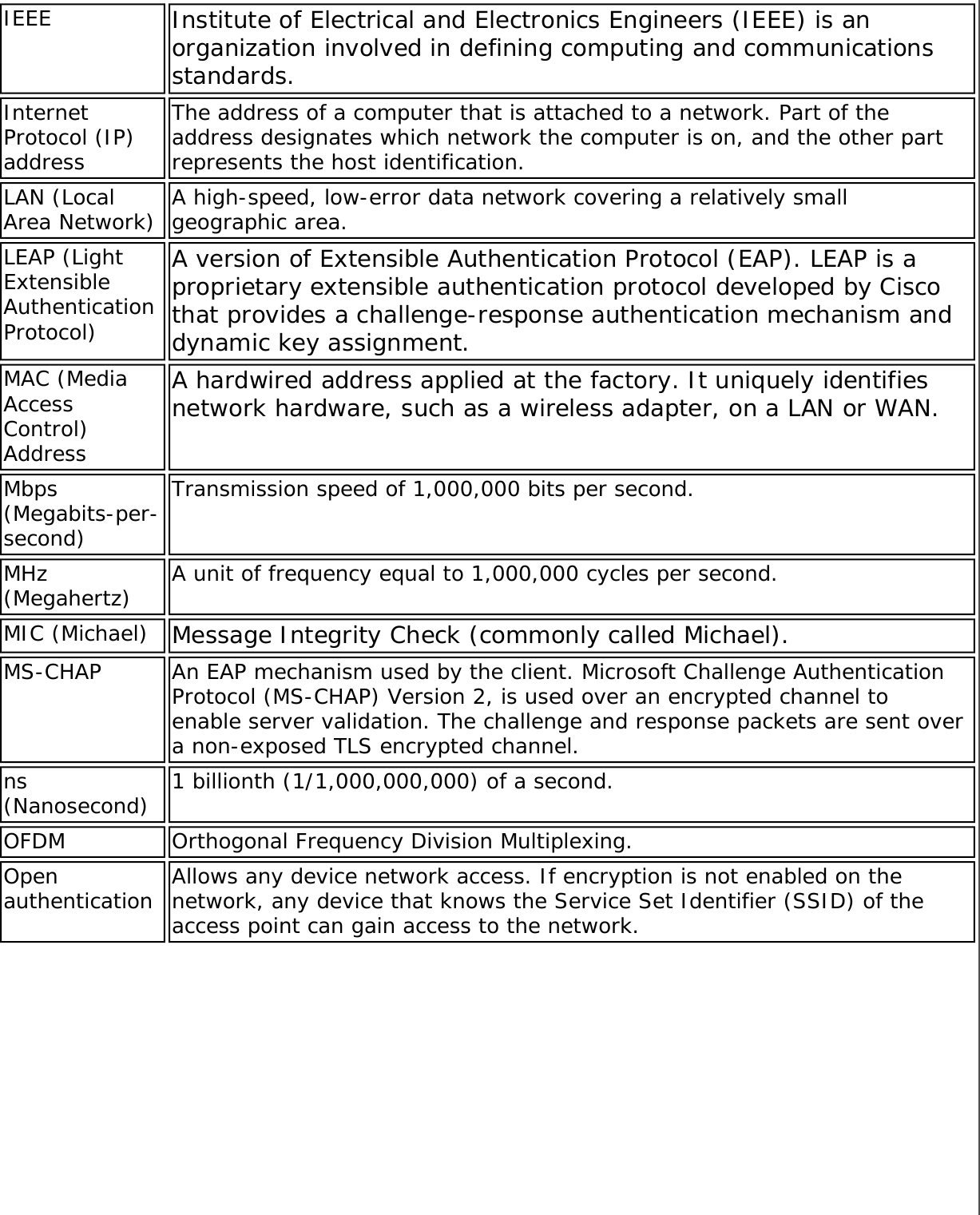
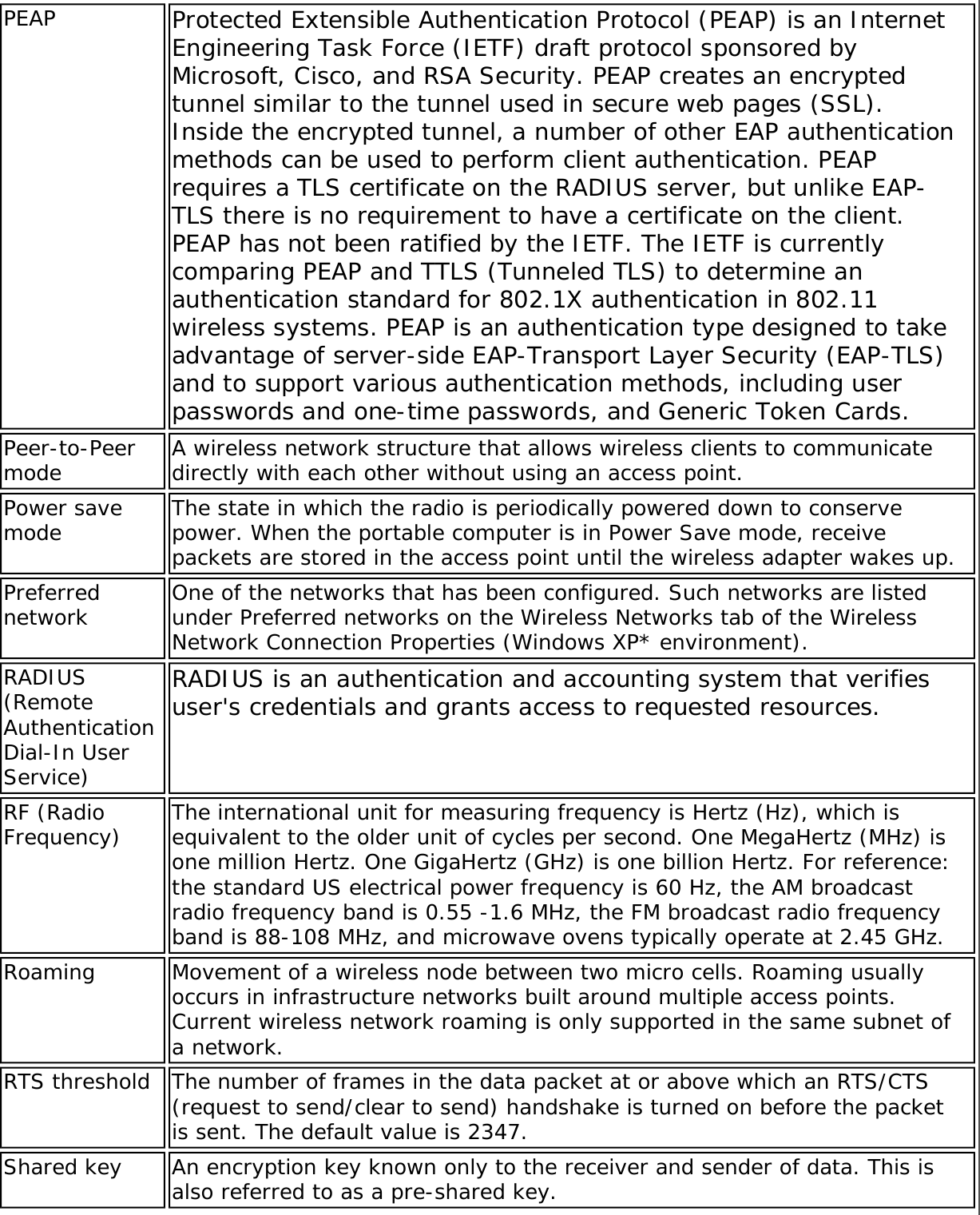
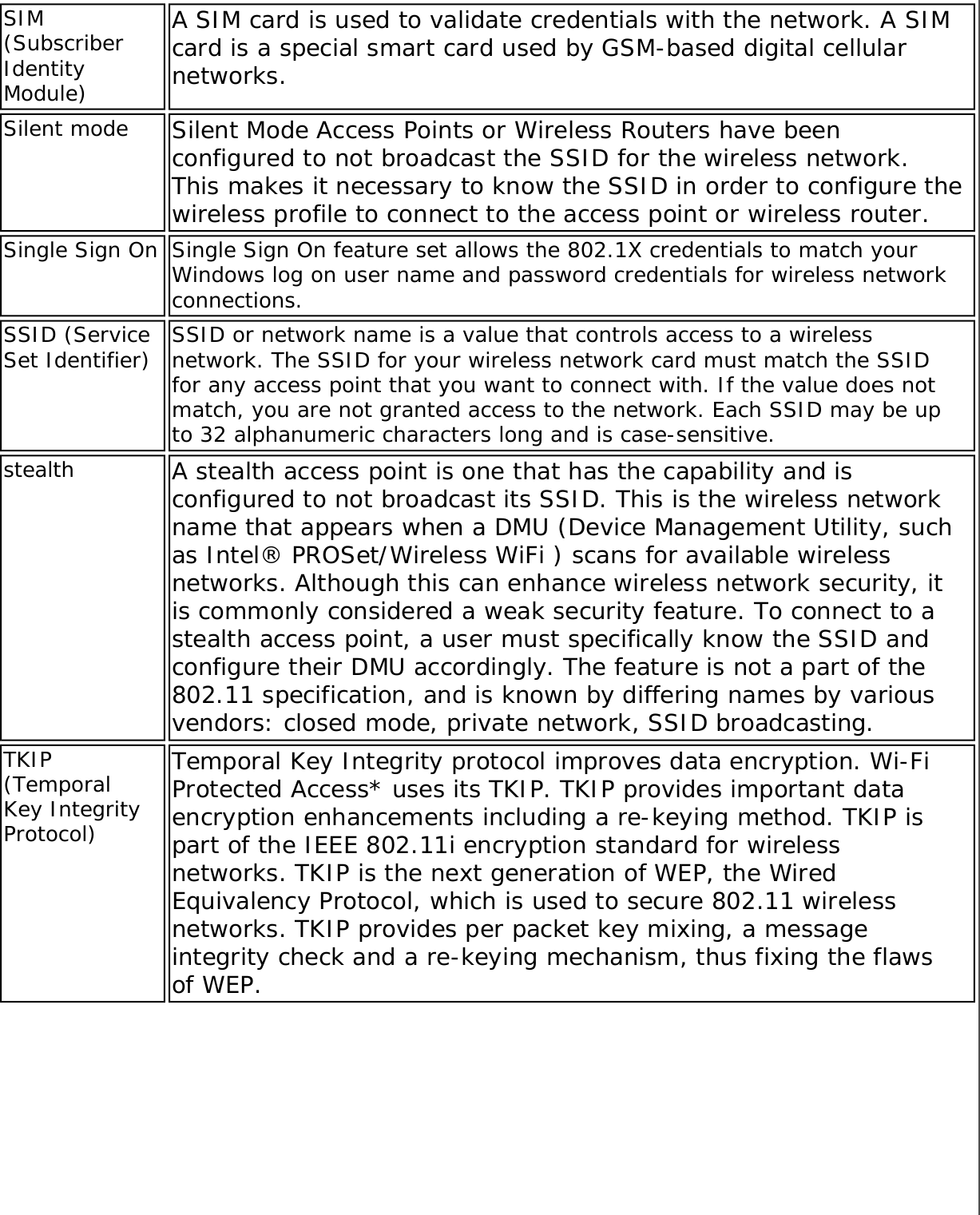
![TLS (Transport Layer Security)A type of authentication method using the Extensible Authentication Protocol (EAP) and a security protocol called the Transport Layer Security (TLS). EAP-TLS uses certificates which use passwords. EAP-TLS authentication supports dynamic WEP key management. The TLS protocol is intended to secure and authenticate communications across a public network through data encryption. The TLS Handshake Protocol allows the server and client to provide mutual authentication and to negotiate an encryption algorithm and cryptographic keys before data is transmitted.TTLS (Tunneled Transport Layer Security)These settings define the protocol and the credentials used to authenticate a user. In TTLS, the client uses EAP-TLS to validate the server and create a TLS-encrypted channel between the client and server. The client can use another authentication protocol. Typically password-based protocols challenge over this encrypted channel to enable server validation. The challenge and response packets are sent over a non-exposed TLS encrypted channel. TTLS implementations today support all methods defined by EAP, as well as several older methods (CHAP, PAP, MS-CHAP and MS-CHAP-V2). TTLS can easily be extended to work with new protocols by defining new attributes to support new protocols.WEP (Wired Equivalent Privacy)Wired Equivalent Privacy, 64- and 128-bit (64-bit is sometimes referred to as 40-bit). This is a low-level encryption technique designed to give the user about the same amount of privacy that he would expect from a LAN. WEP is a security protocol for wireless local area networks (WLANs) defined in the 802.11b standard. WEP is designed to provide the same level of security as that of a wired LAN. WEP aims to provide security by data over radio waves so that it is protected as it is transmitted from one end point to another.WEP Key Either a pass phrase or hexadecimal key. The pass phrase must be 5 ASCII characters for 64-bit WEP or 13 ASCII characters for 128-bit WEP. For pass phrases, 0-9, a-z, A-Z, and ~!@#$%^&*()_+|`-={}|[]\:";'<>?,./ are all valid characters. The hex key must be 10 hexadecimal characters (0-9, A-F) for 64-bit WEP or 26 hexadecimal characters (0-9, A-F) for 128-bit WEP.Wi-Fi* (Wireless Fidelity)Is meant to be used generically when referring of any type to 802.11 network, whether 802.11b, 802.11a, or dual-band.](https://usermanual.wiki/Intel/533ANH.XP-User-Guide-2-of-2/User-Guide-964561-Page-67.png)
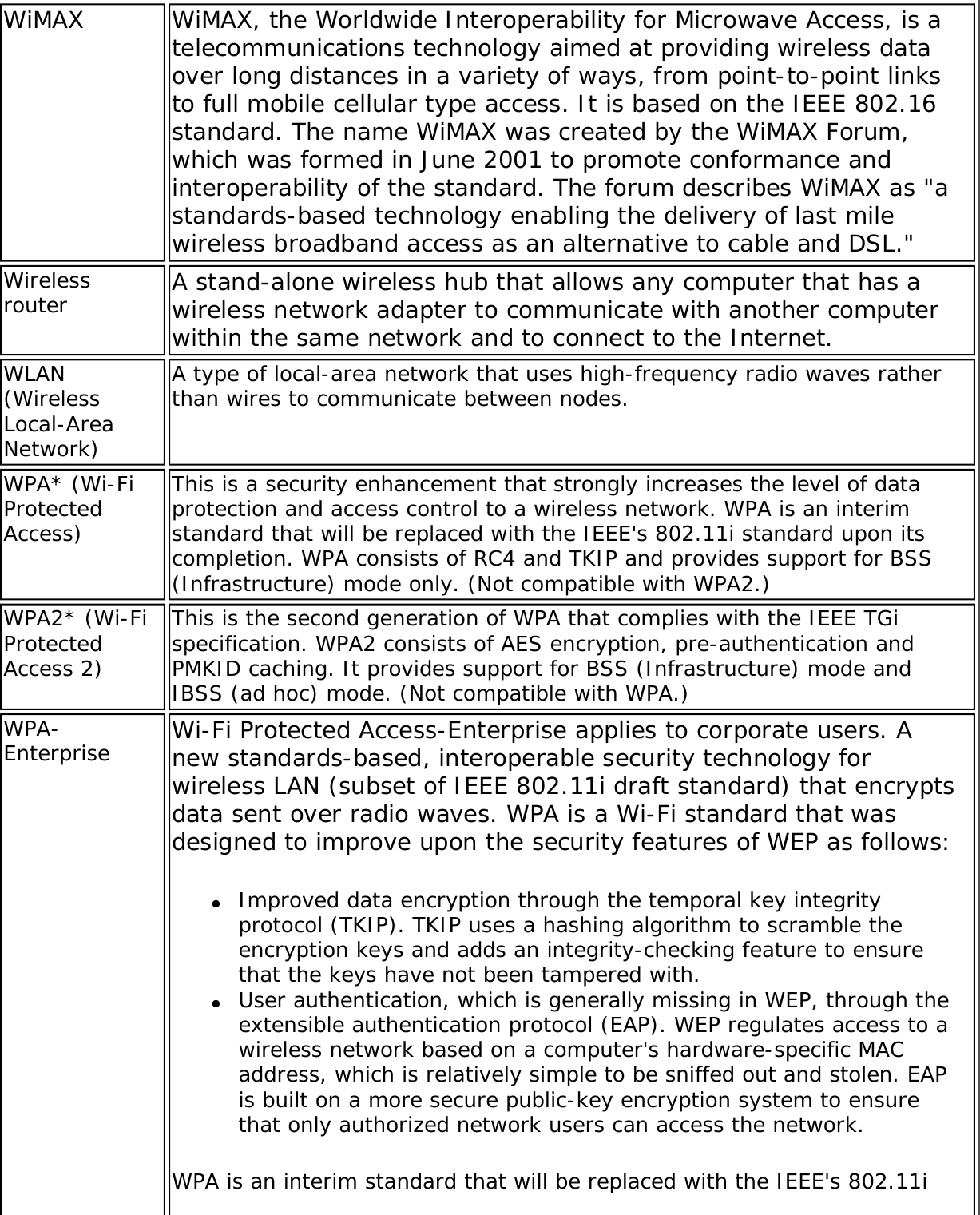
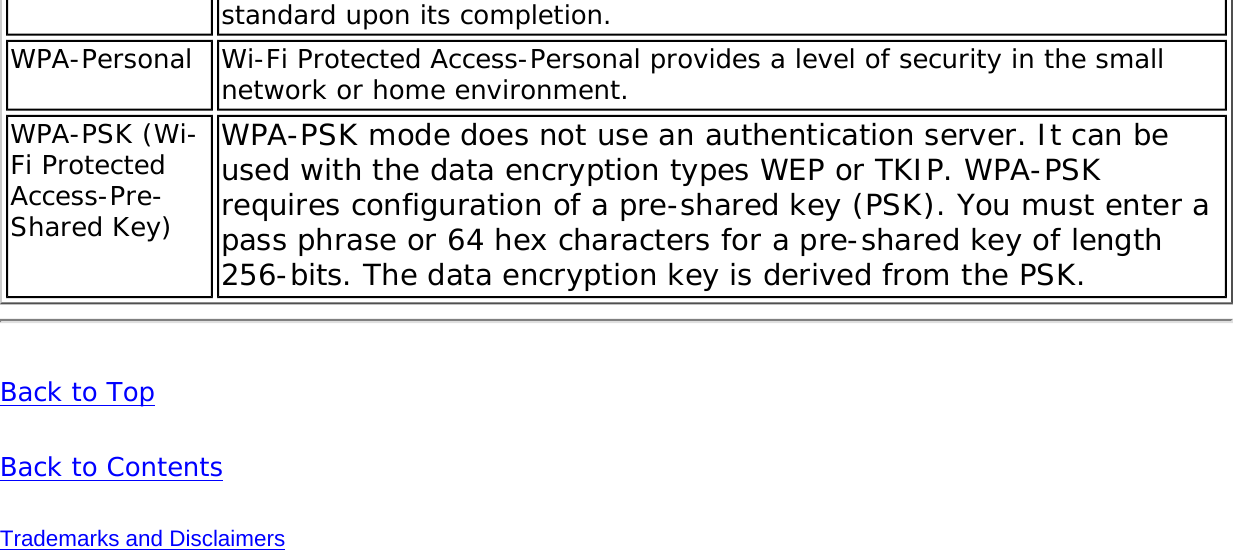
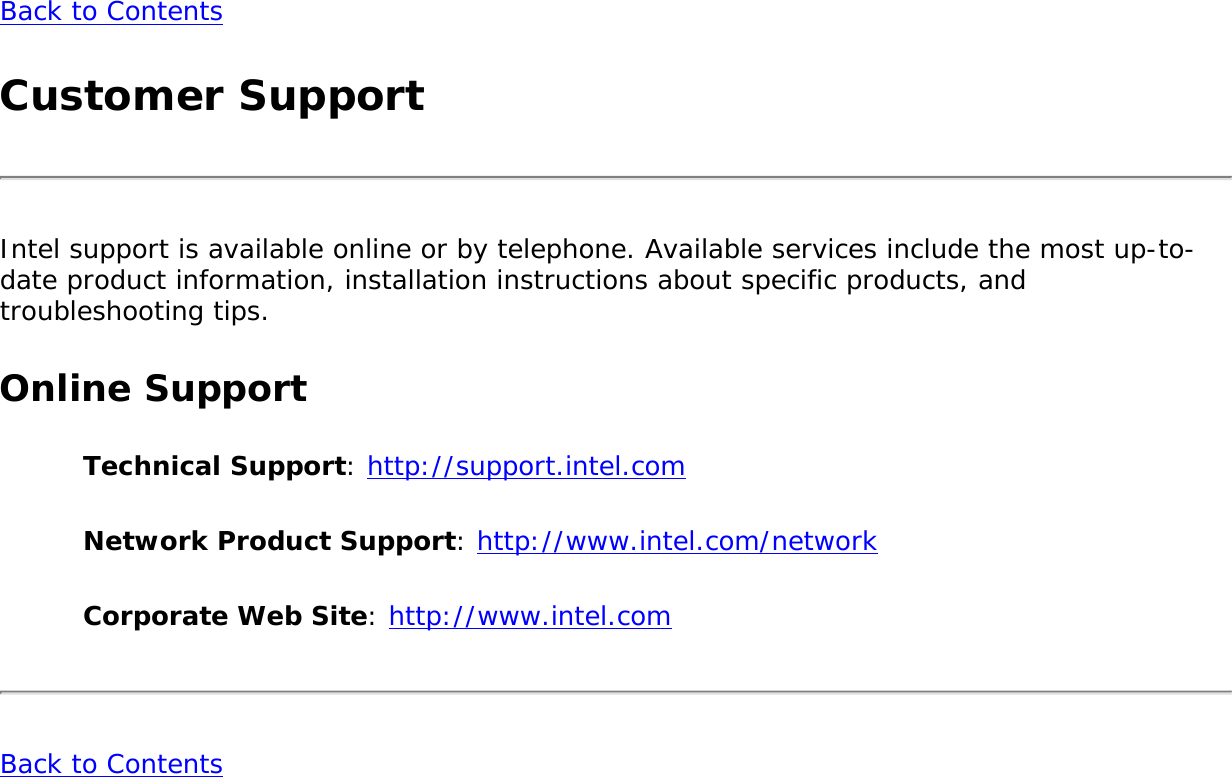
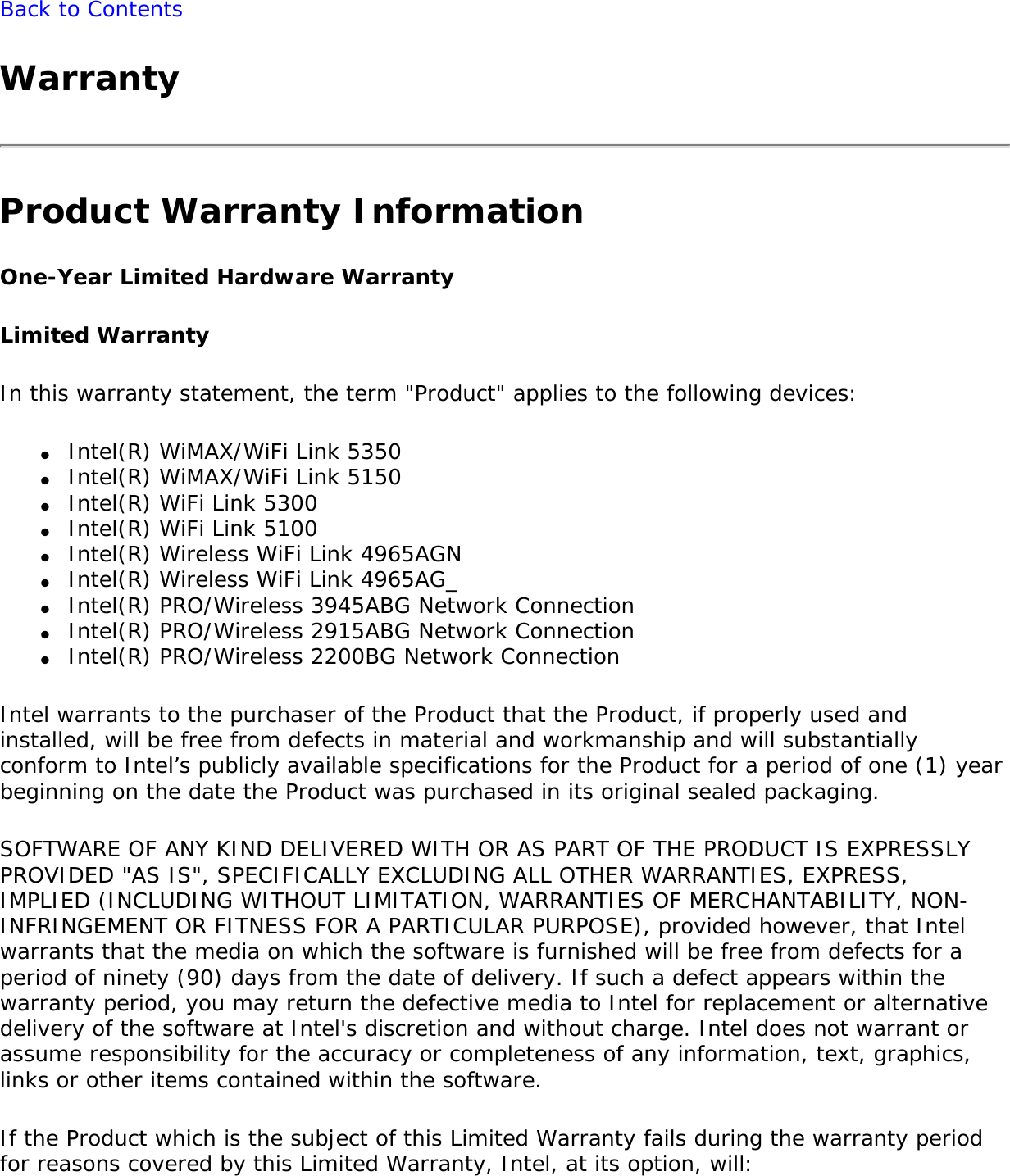
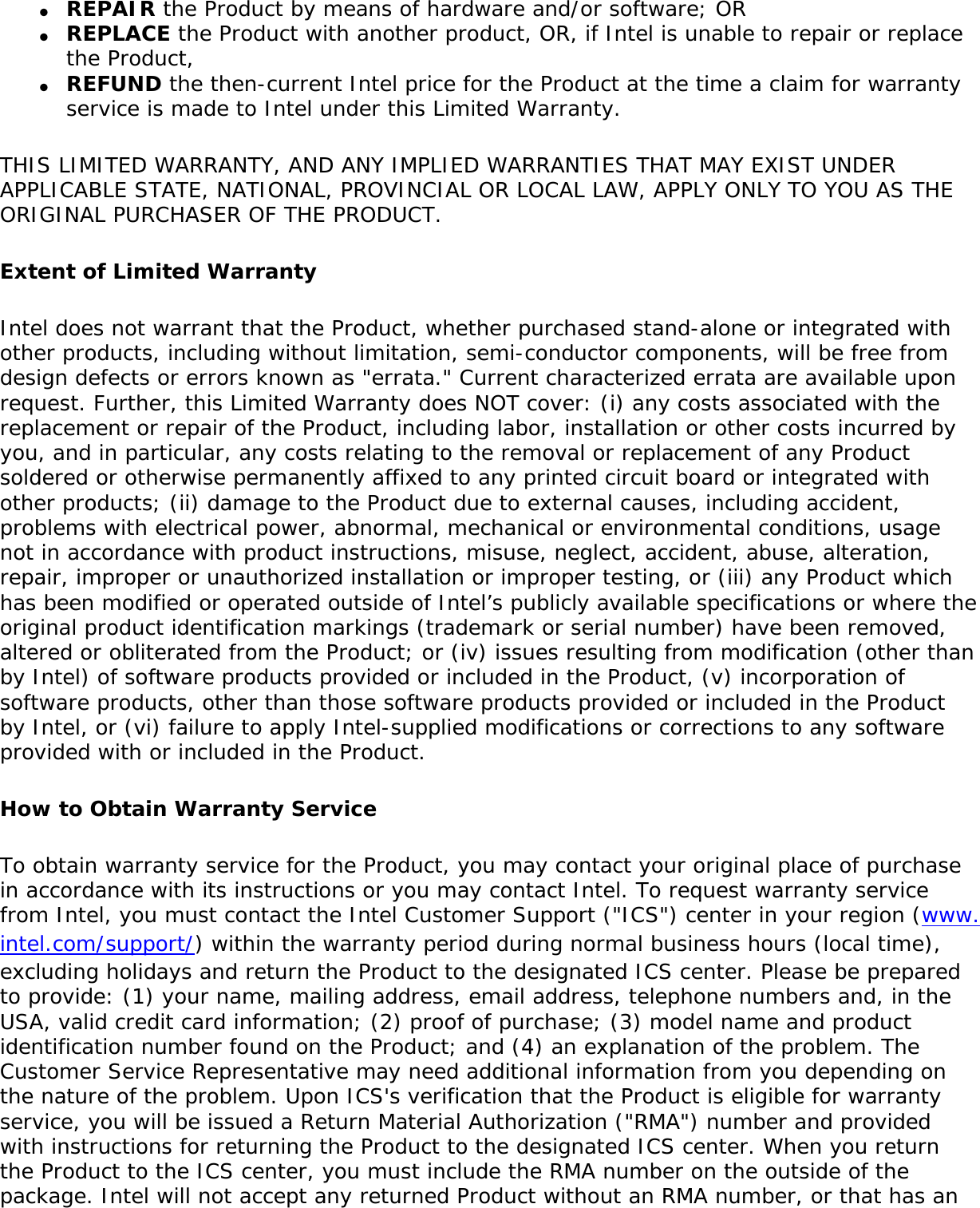
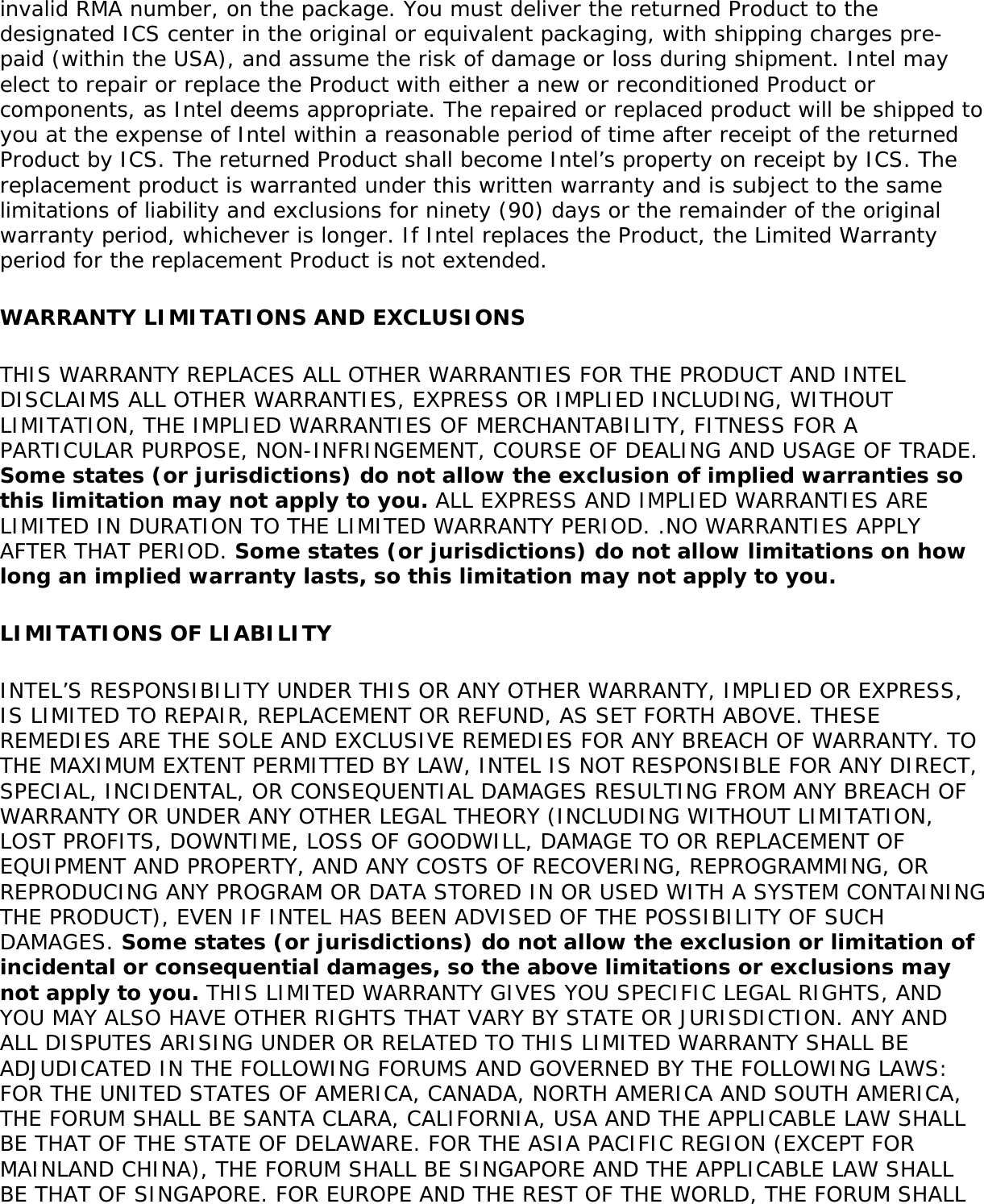
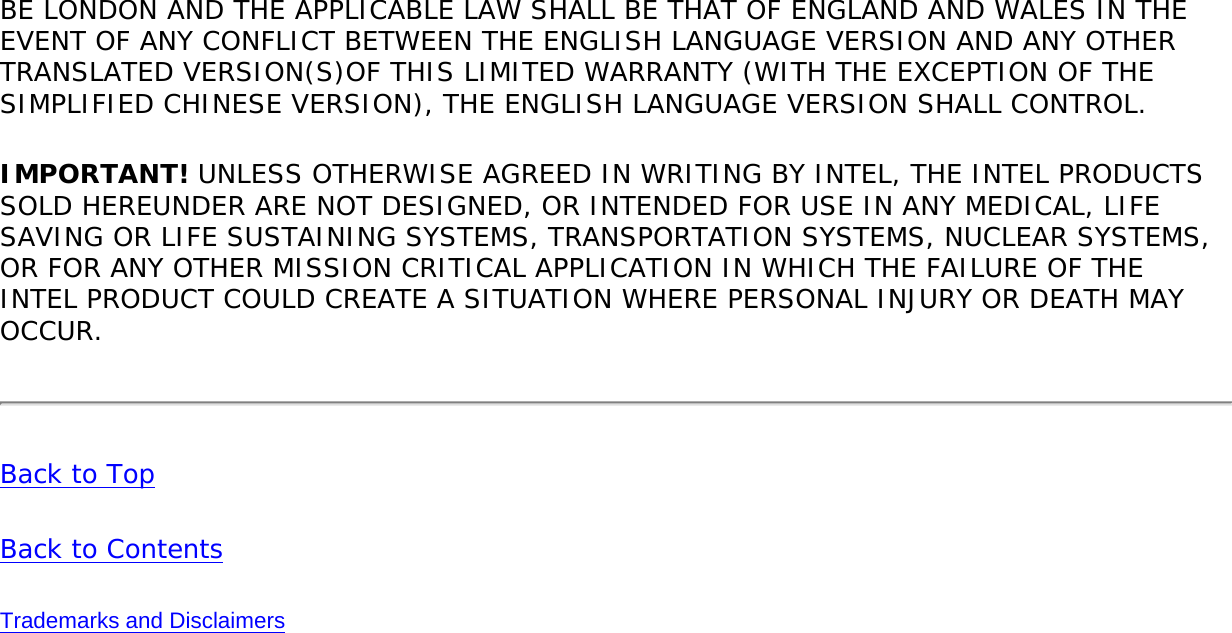
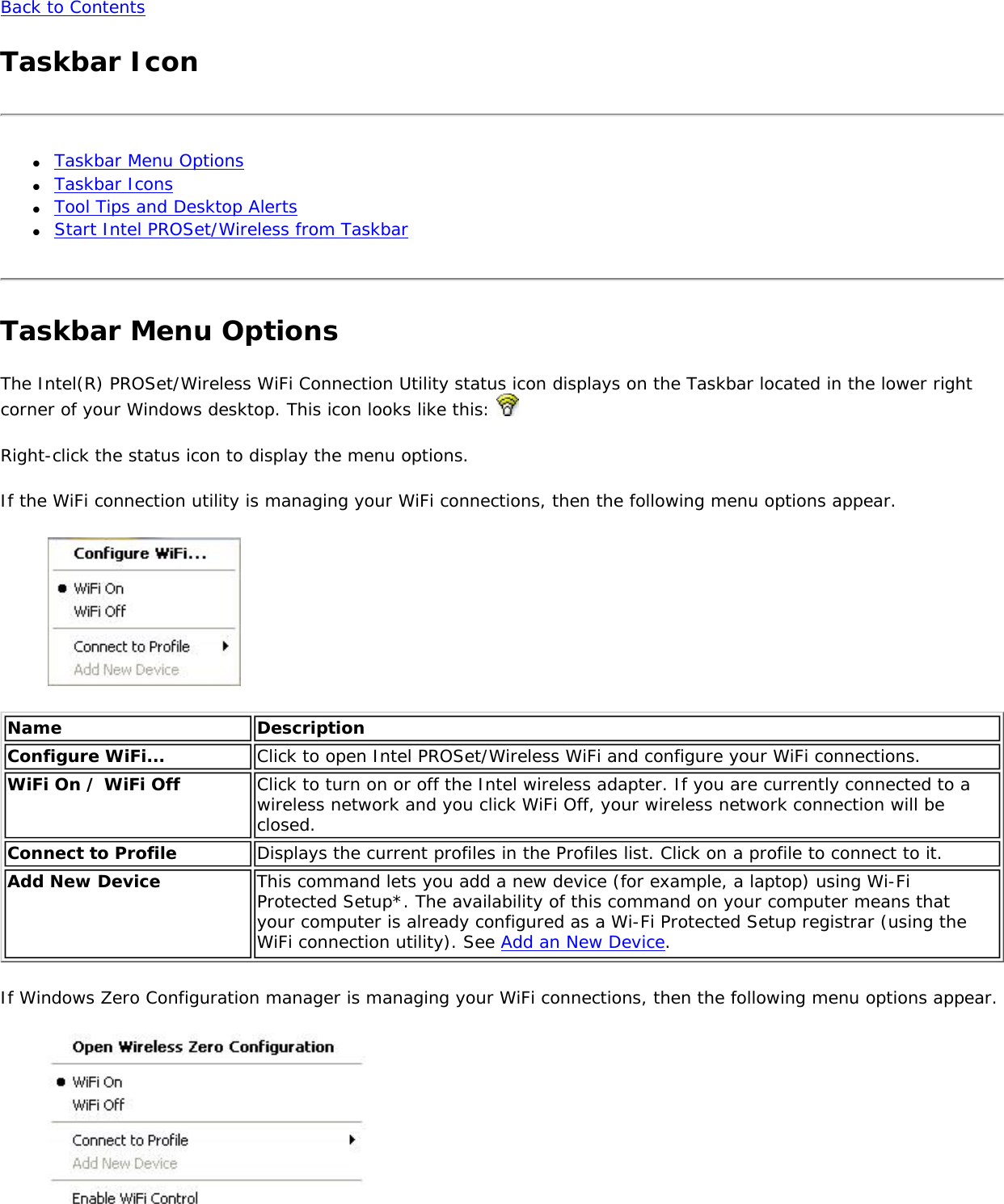
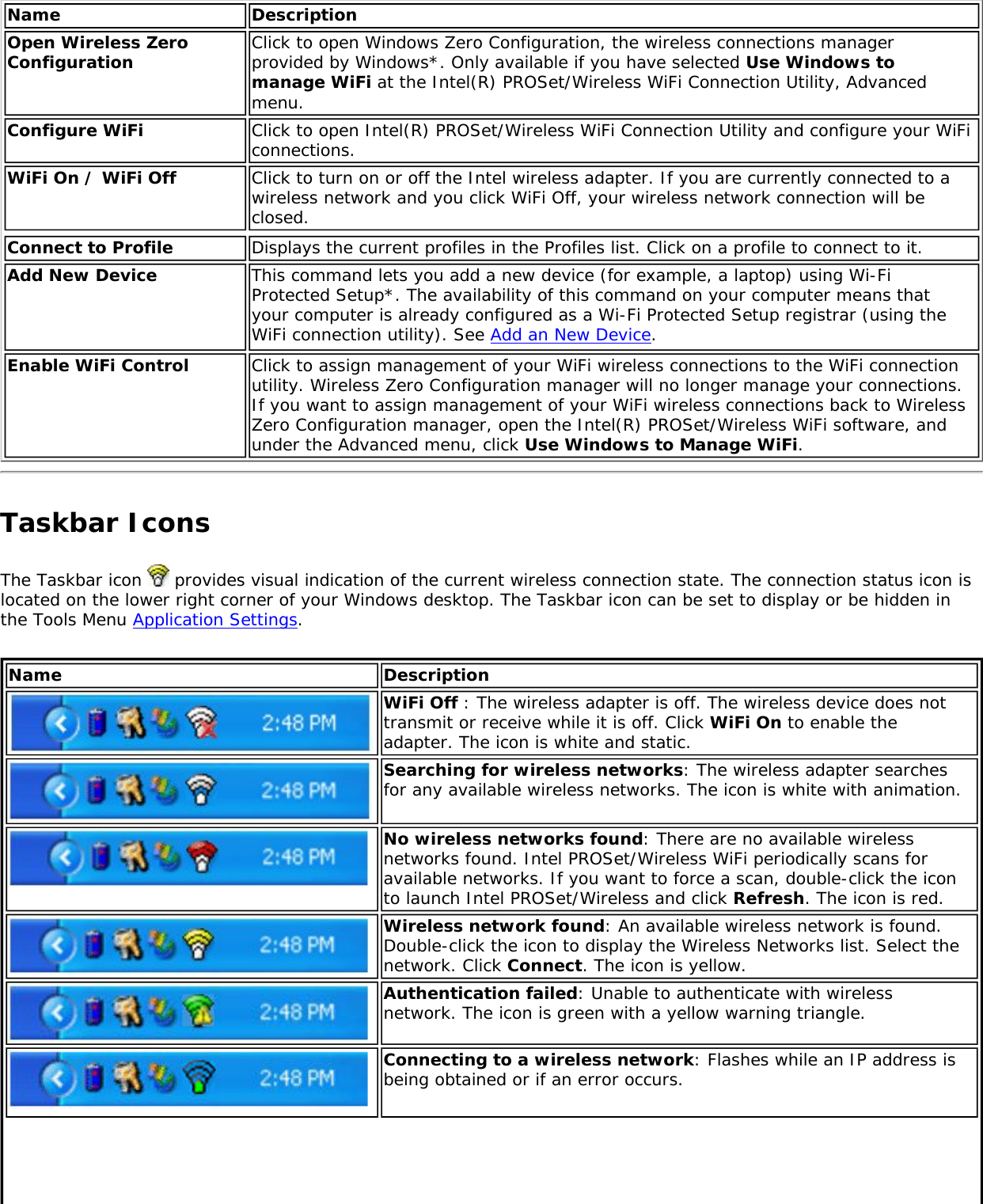
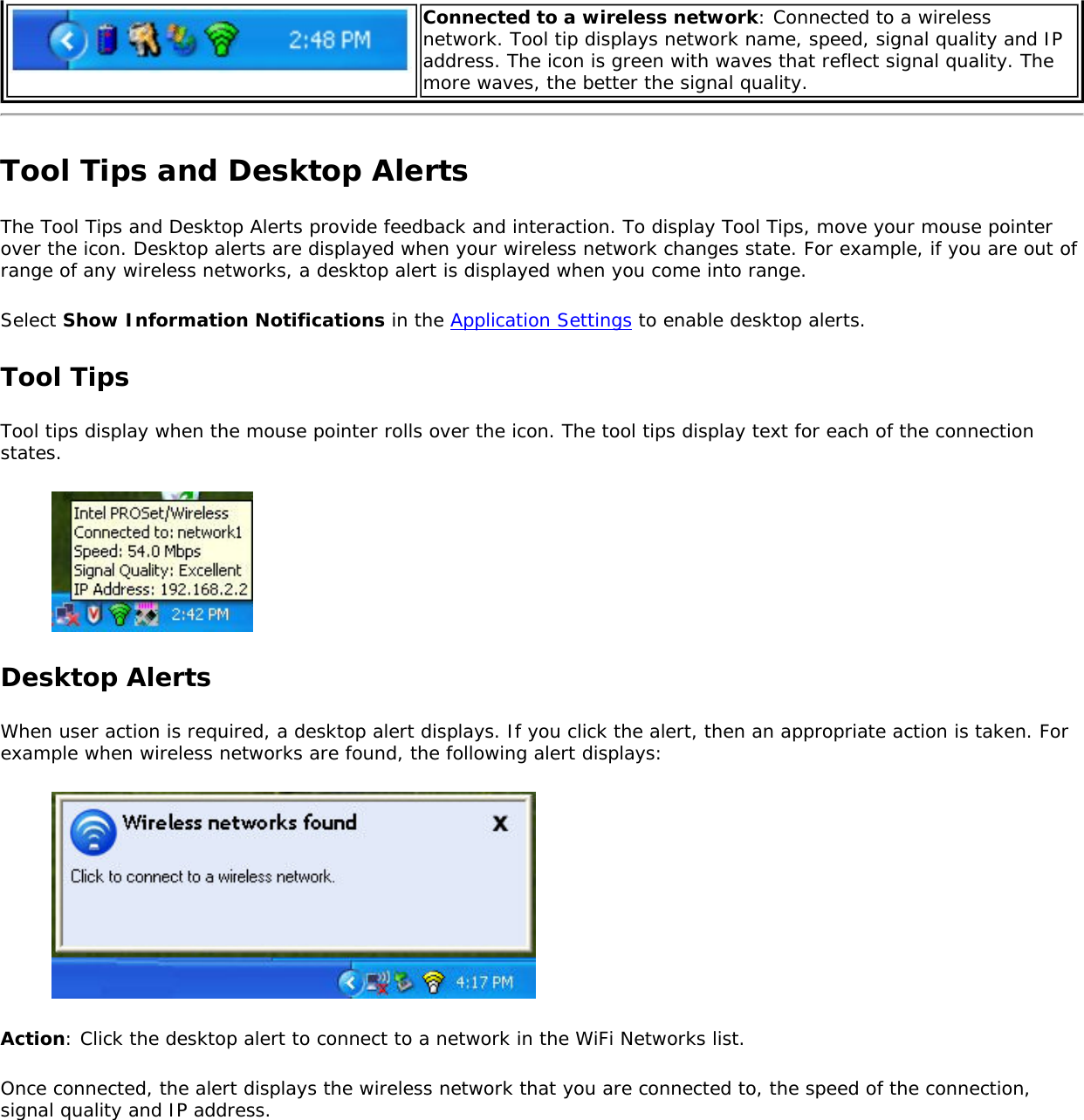
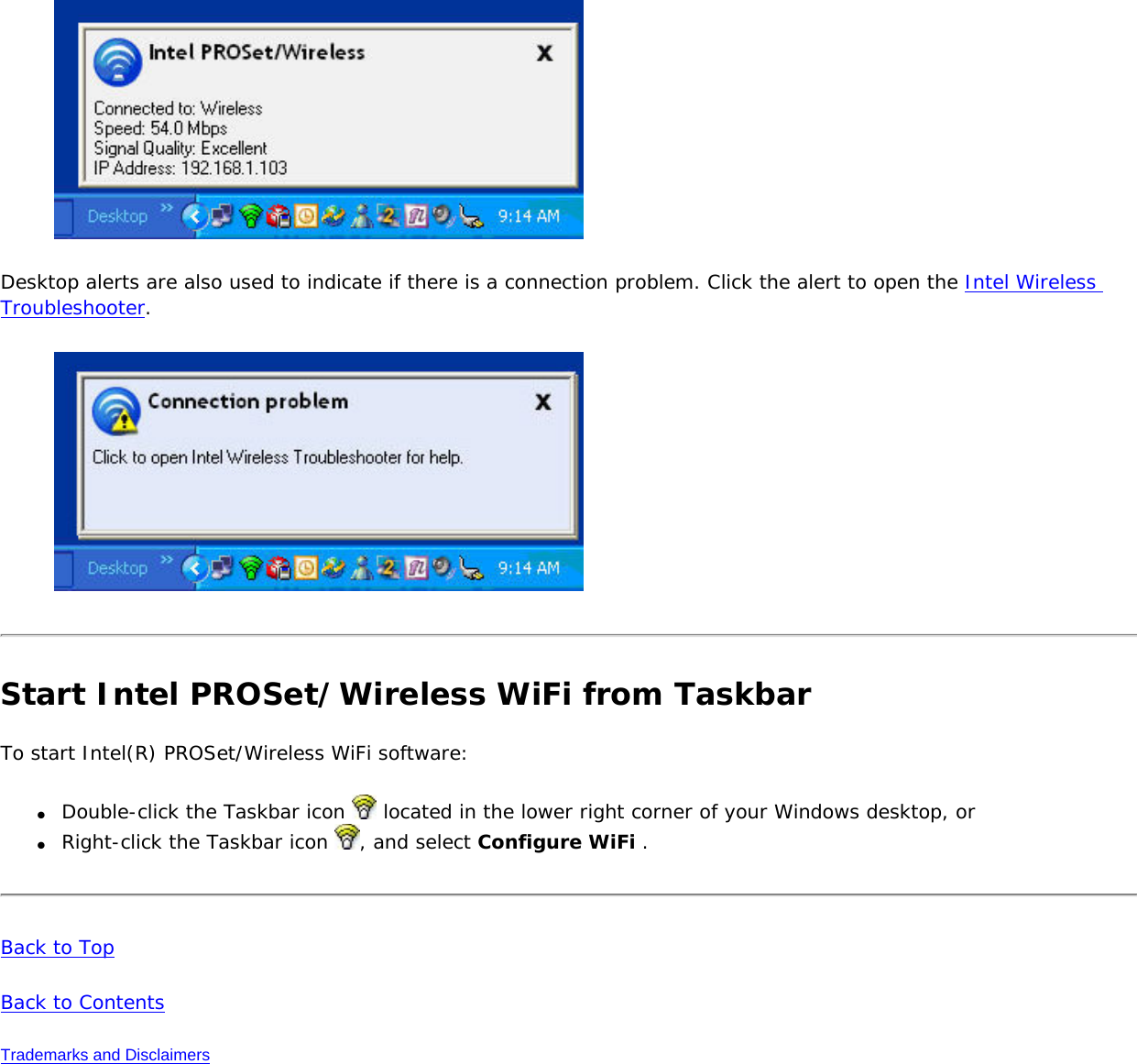
![Back to ContentsWiFi Networks listThe WiFi Networks list displays a list of wireless networks within range of the adapter. To update the list, click Refresh to rescan for wireless networks. Click Profile to launch the Profile Wizard and create a profile for the selected wireless network.Name DescriptionWireless Networks ( ) The number within the parentheses designates the number of wireless network found within range of your wireless network adapter.The signal strength of the wireless network access point or computer (Device to Device [ad hoc] mode). The signal strength icon bars indicate that the wireless network or computer is available for connection but is still not associated with an access point or computer (Device to Device [ad hoc] mode).Network Name Network Name (SSID): The name of the network that the adapter is connected to. The Network Name (SSID) must be the same as the SSID of the access point. If an access point does not broadcast its network name (SSID) or the wireless adapter receives a hidden network name from a stealth access point, <SSID not broadcast> is displayed in the WiFi Networks list. To associate with an <SSID not broadcast> network entry, a new profile must be created before connection. After connection, the <SSID not broadcast> is still displayed in the WiFi Networks list. The associated SSID profile is viewed in the Profiles list.Status Notification that the adapter is connecting to the wireless network. Once connected, the status is changed to Connected.Profiles: Identifies a network in the WiFi Networks list that is connected and has a profile in the profiles list.The wireless network uses Network (Infrastructure) mode.The wireless network uses Device to Device (ad hoc) mode.The wireless network uses Security encryption.](https://usermanual.wiki/Intel/533ANH.XP-User-Guide-2-of-2/User-Guide-964561-Page-79.png)
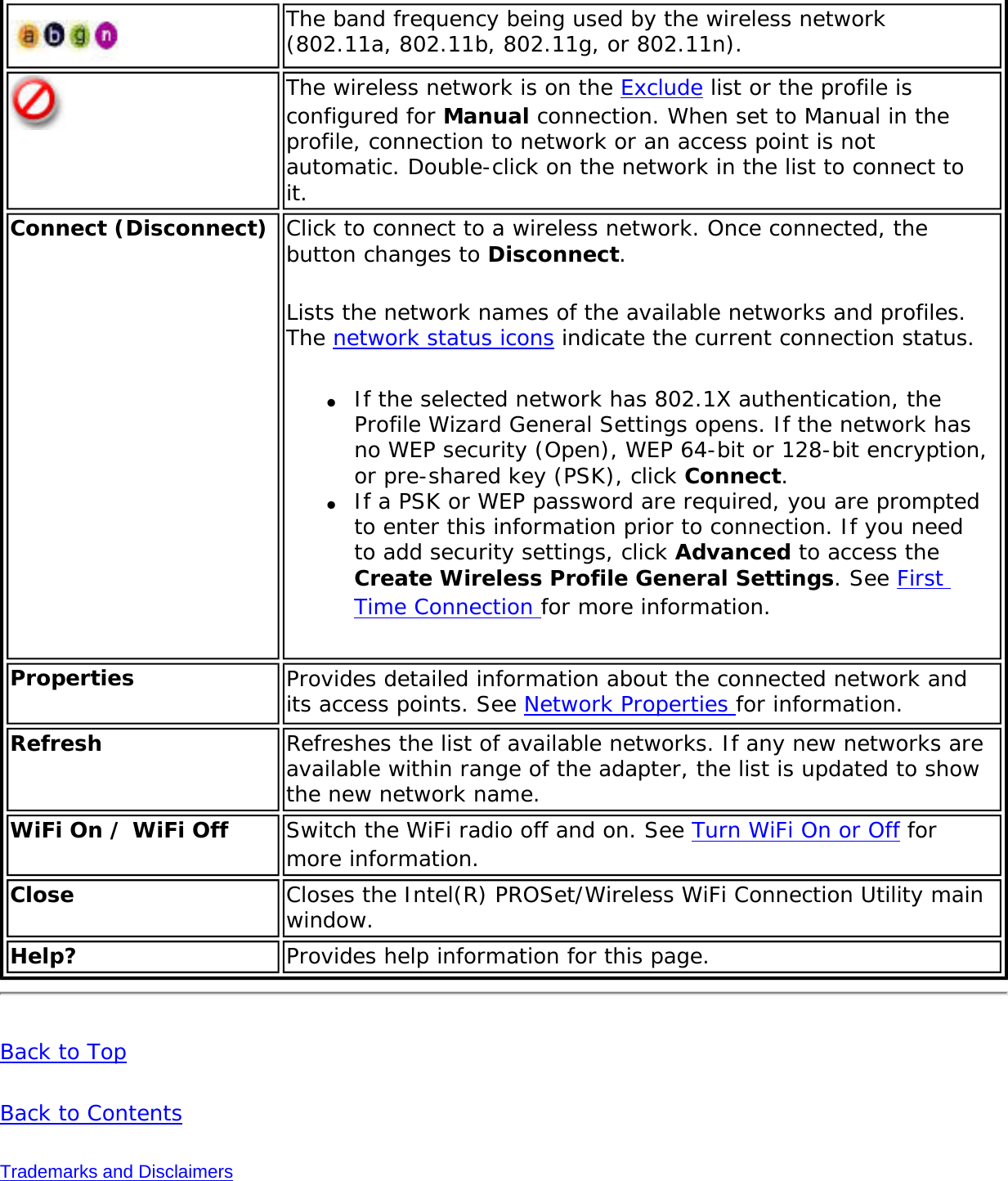
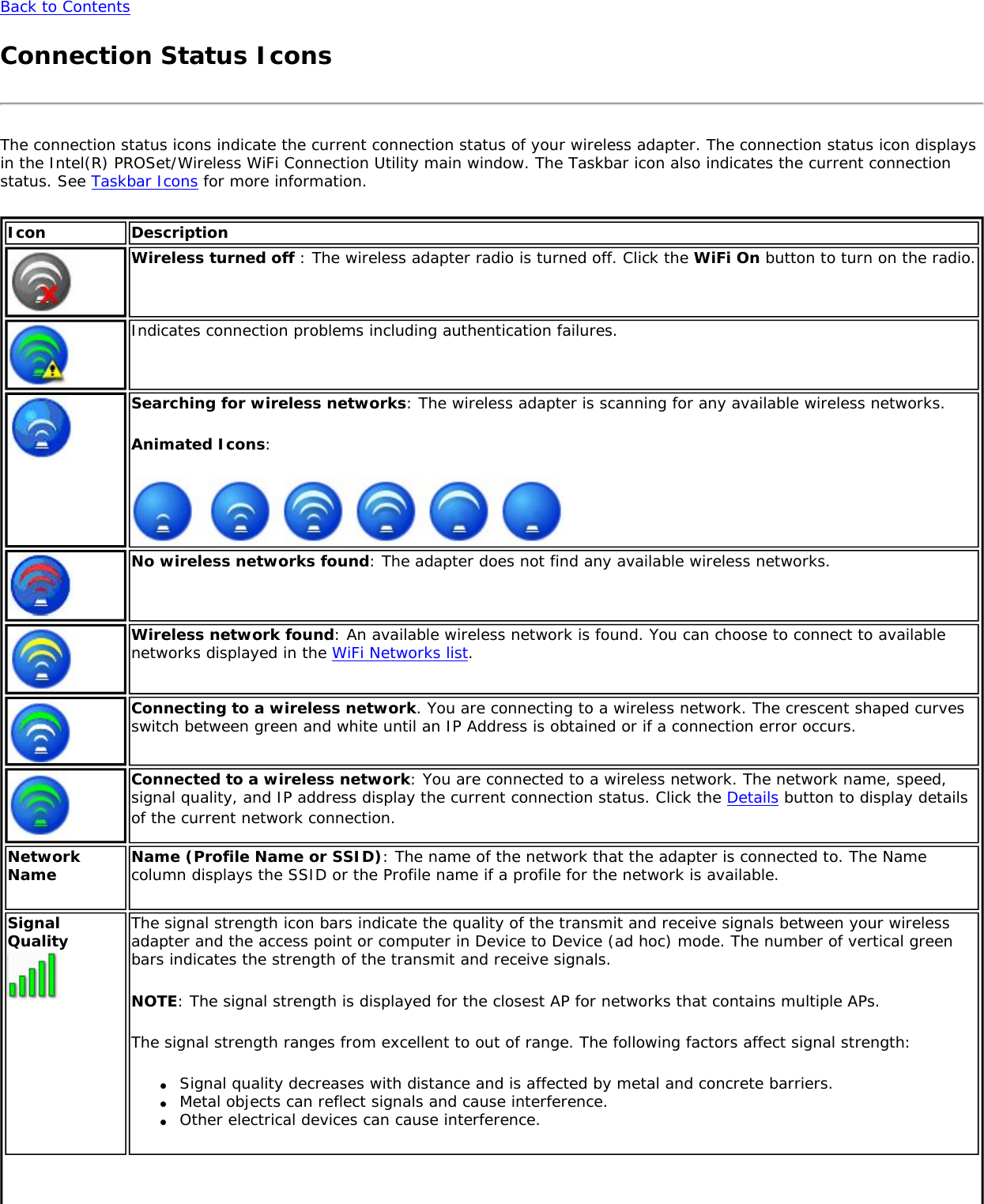

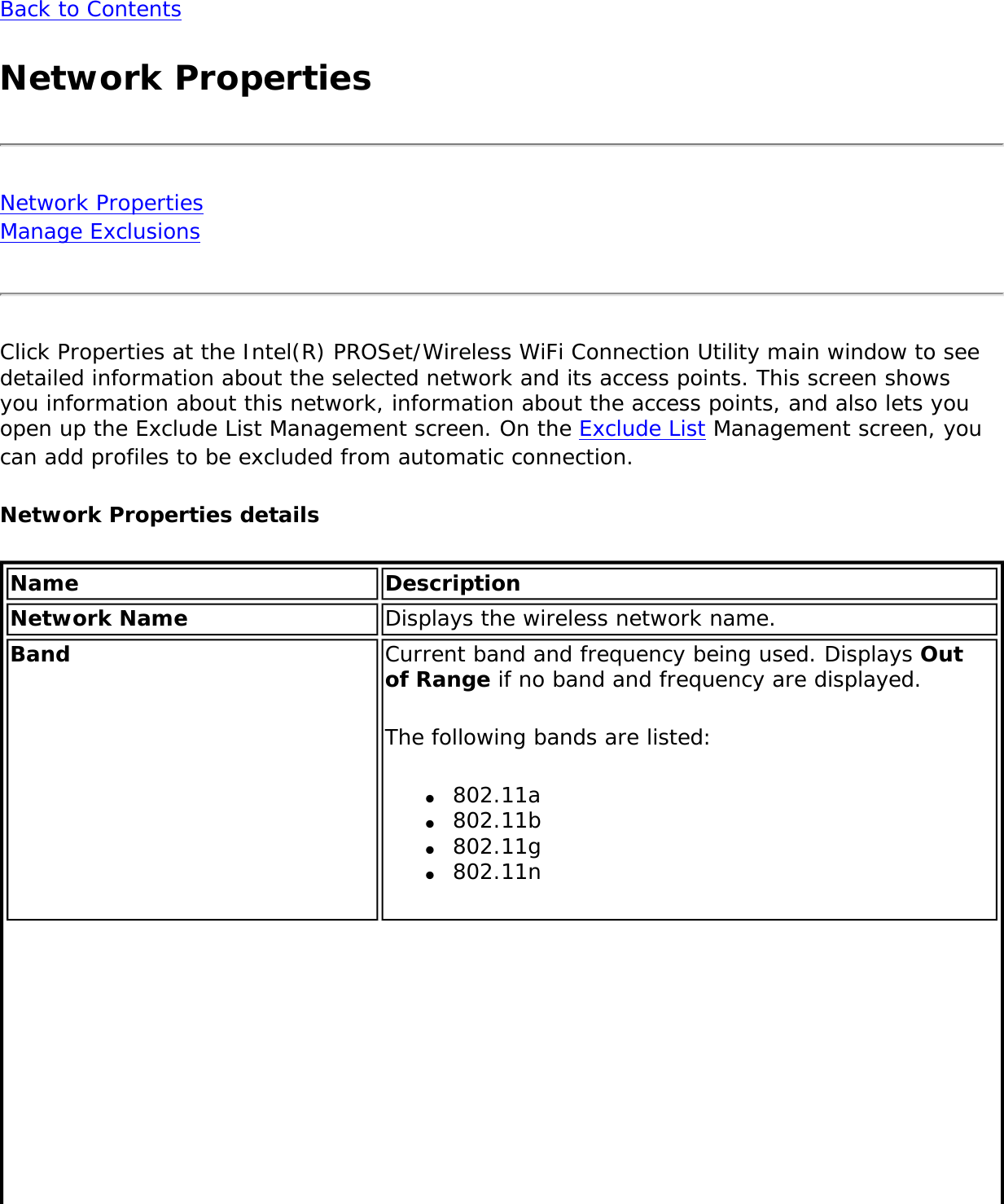
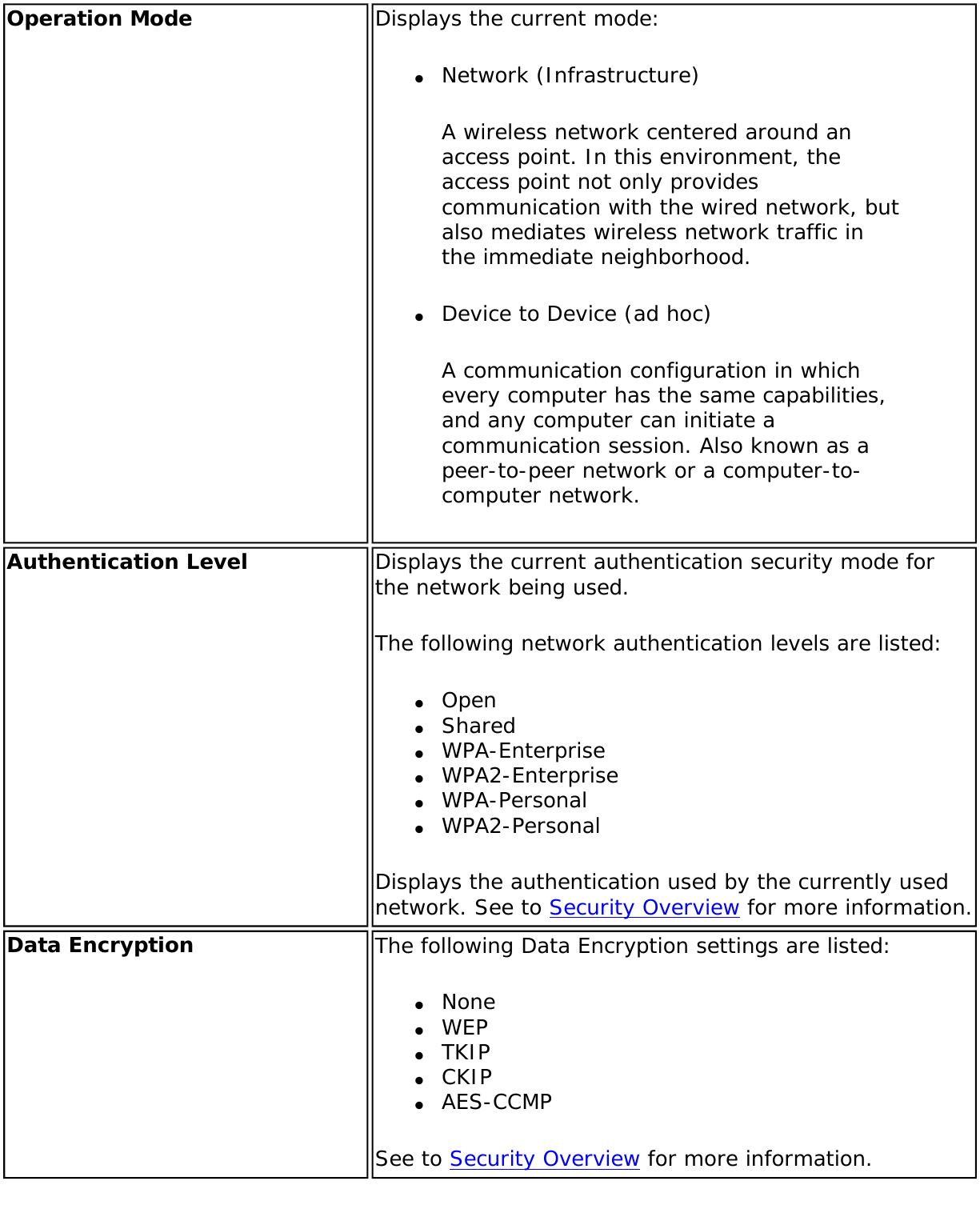
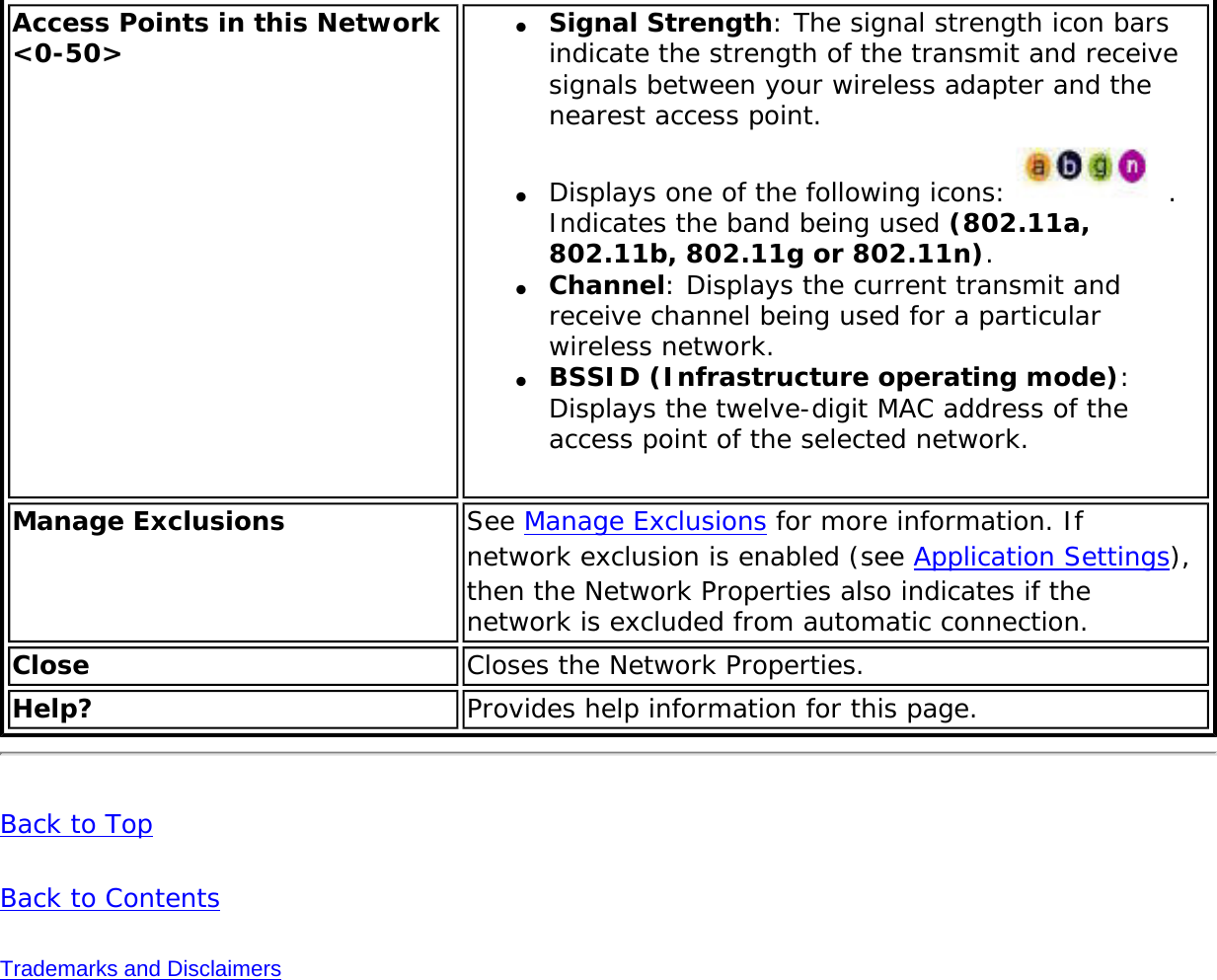
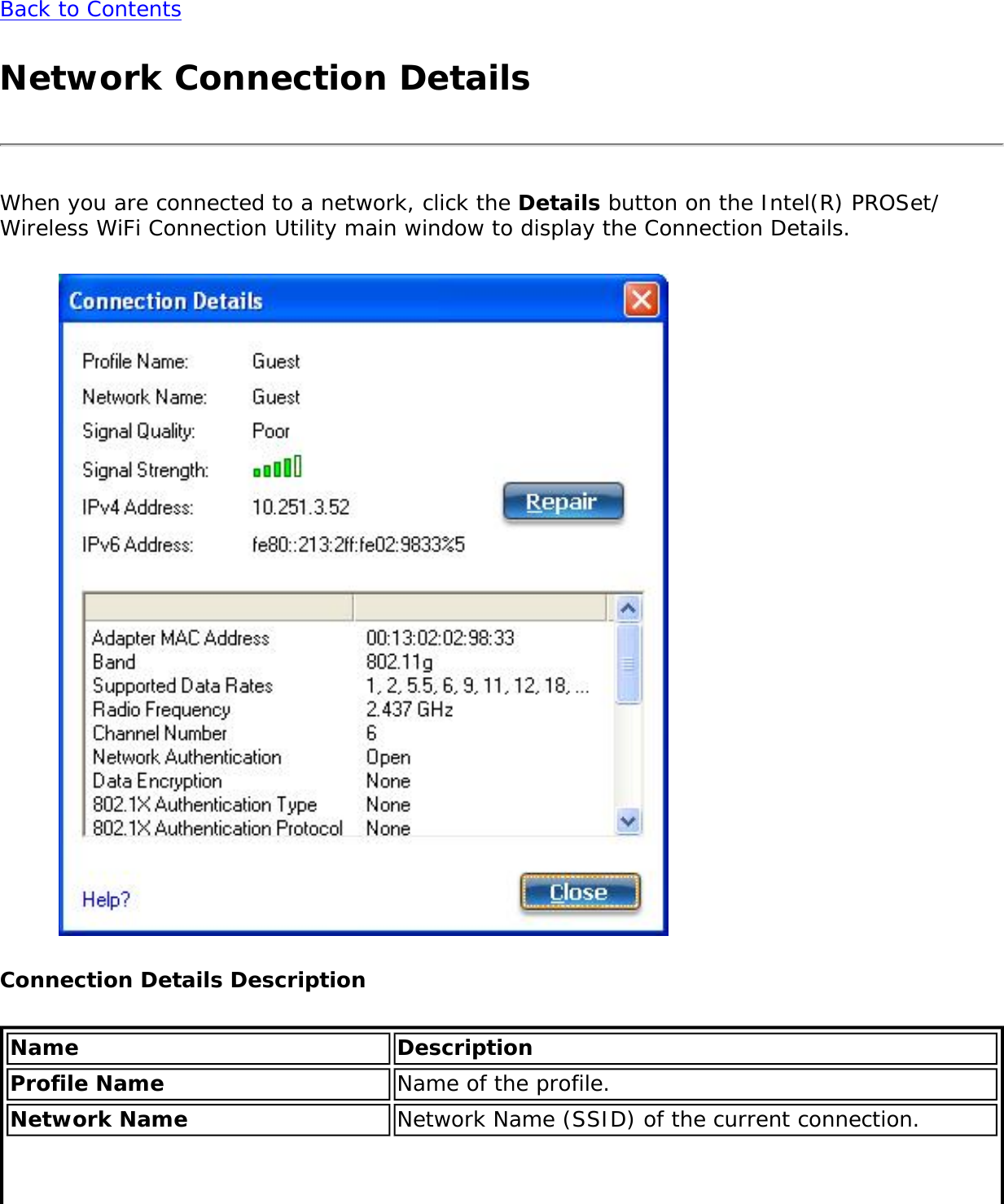
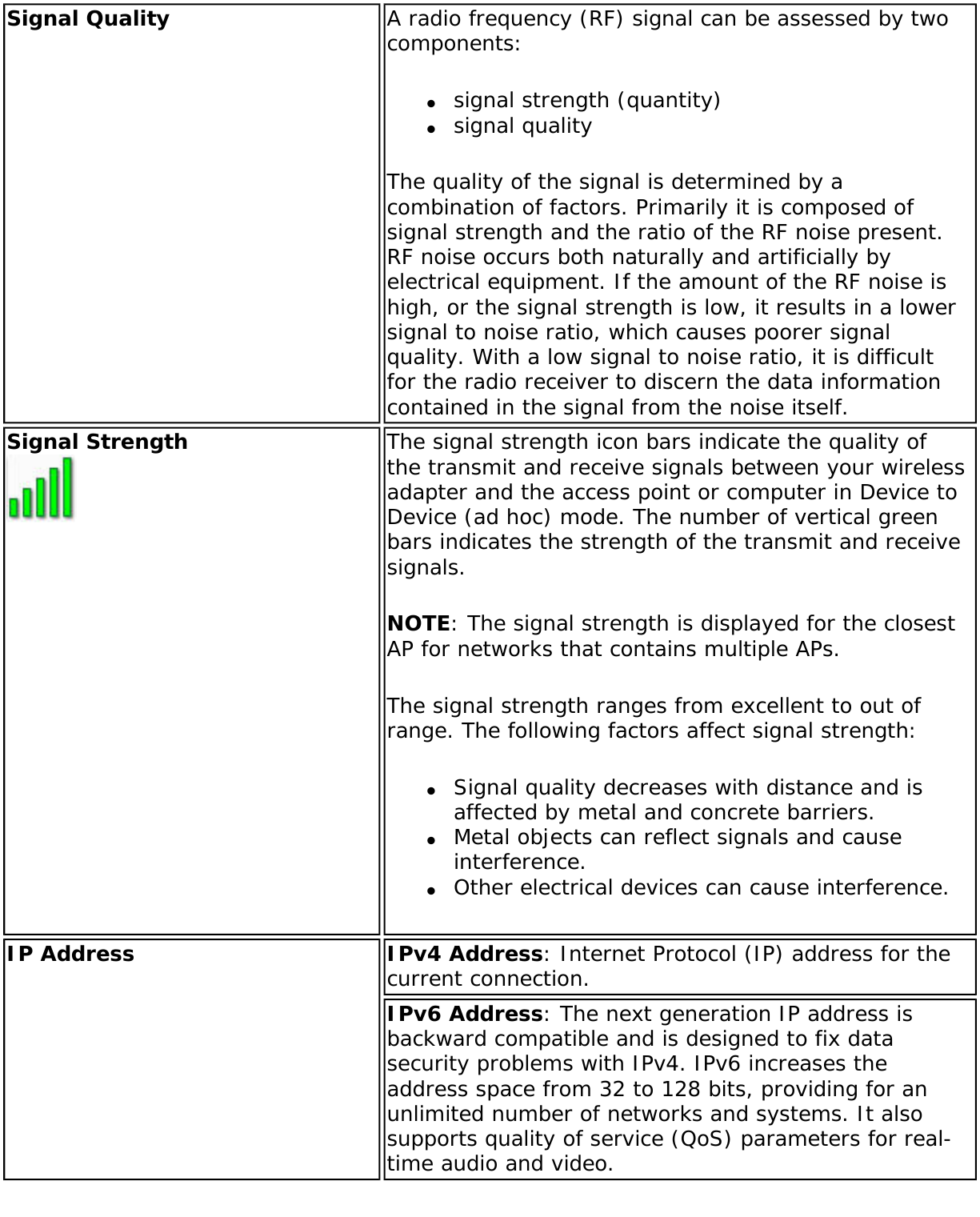
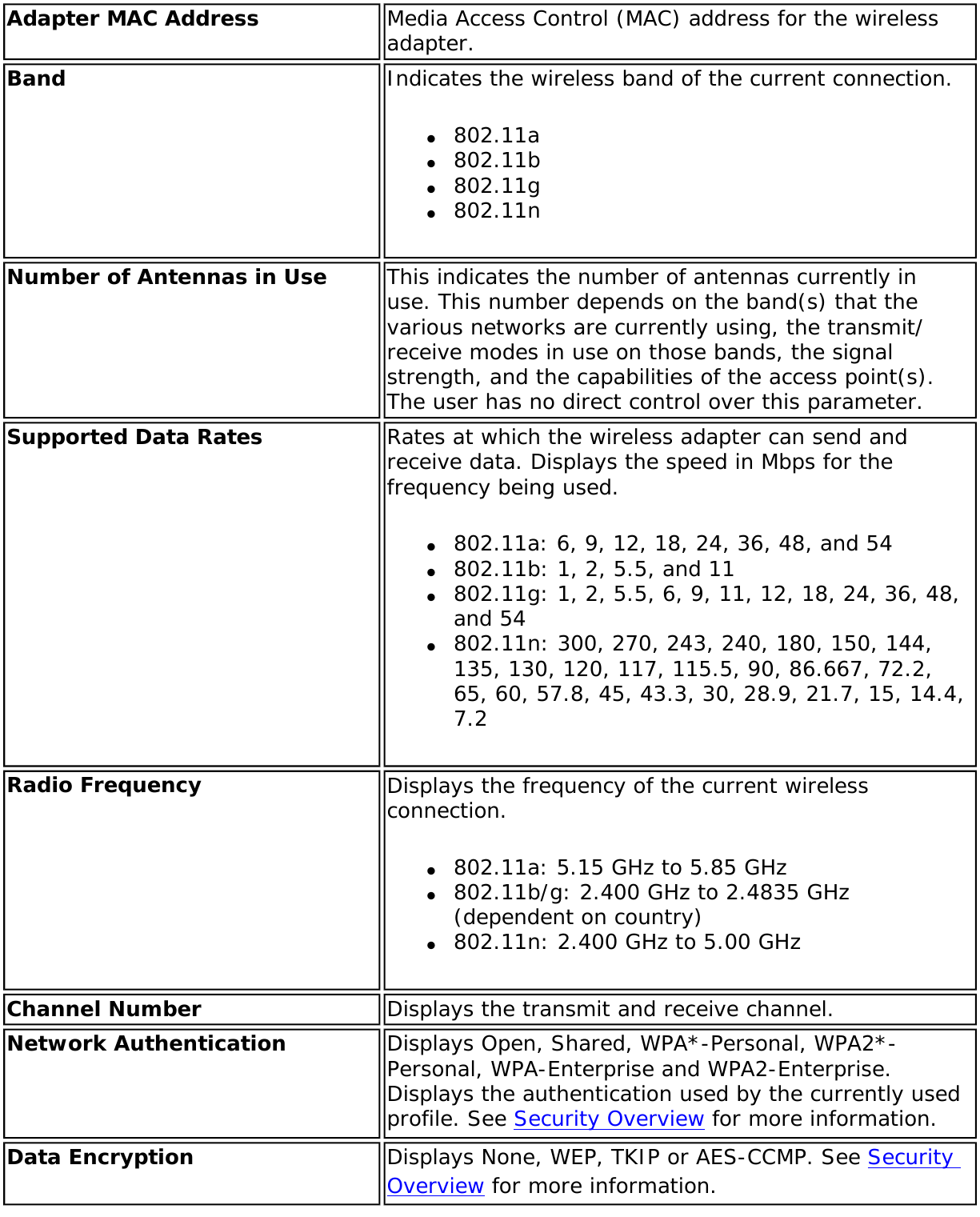
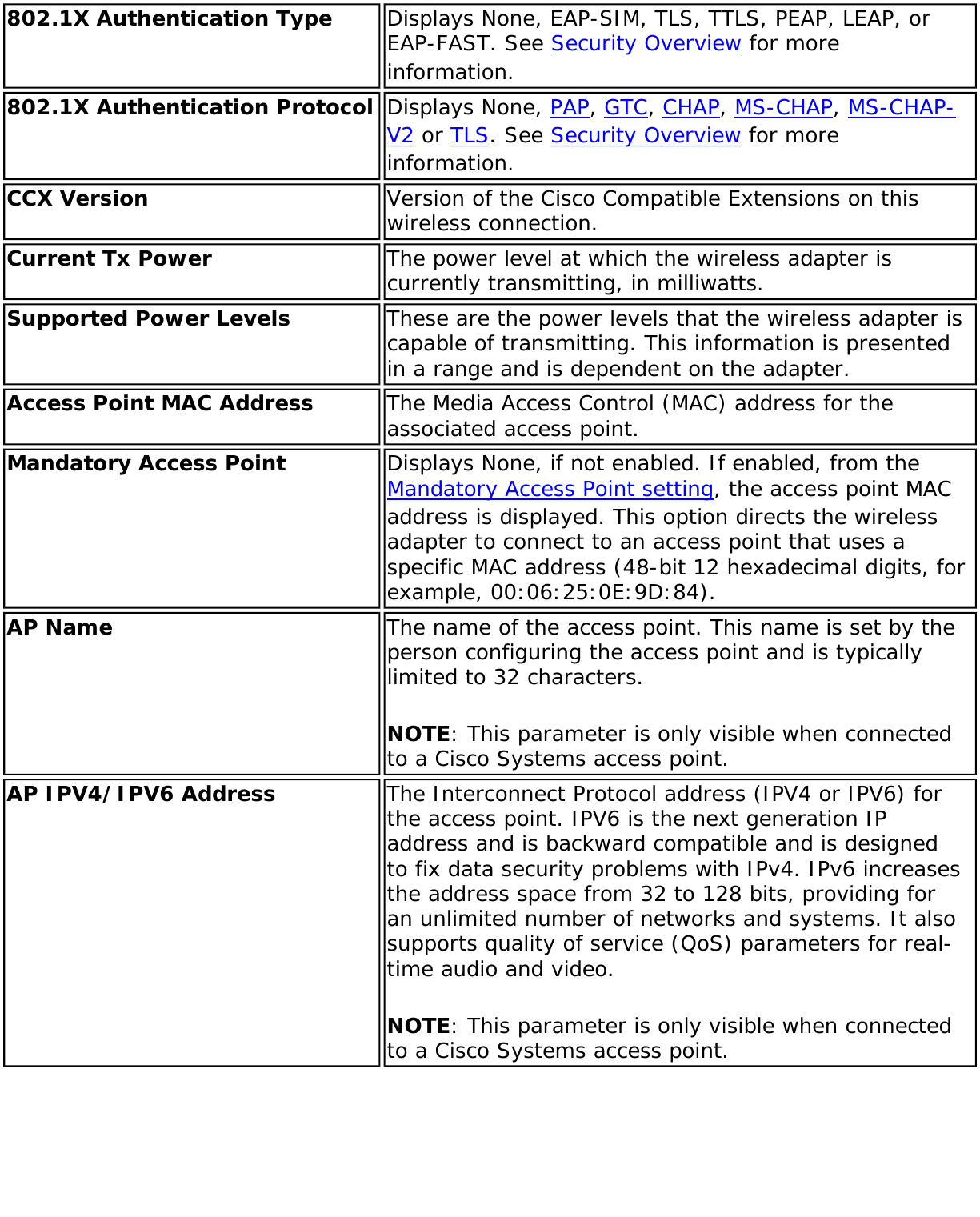
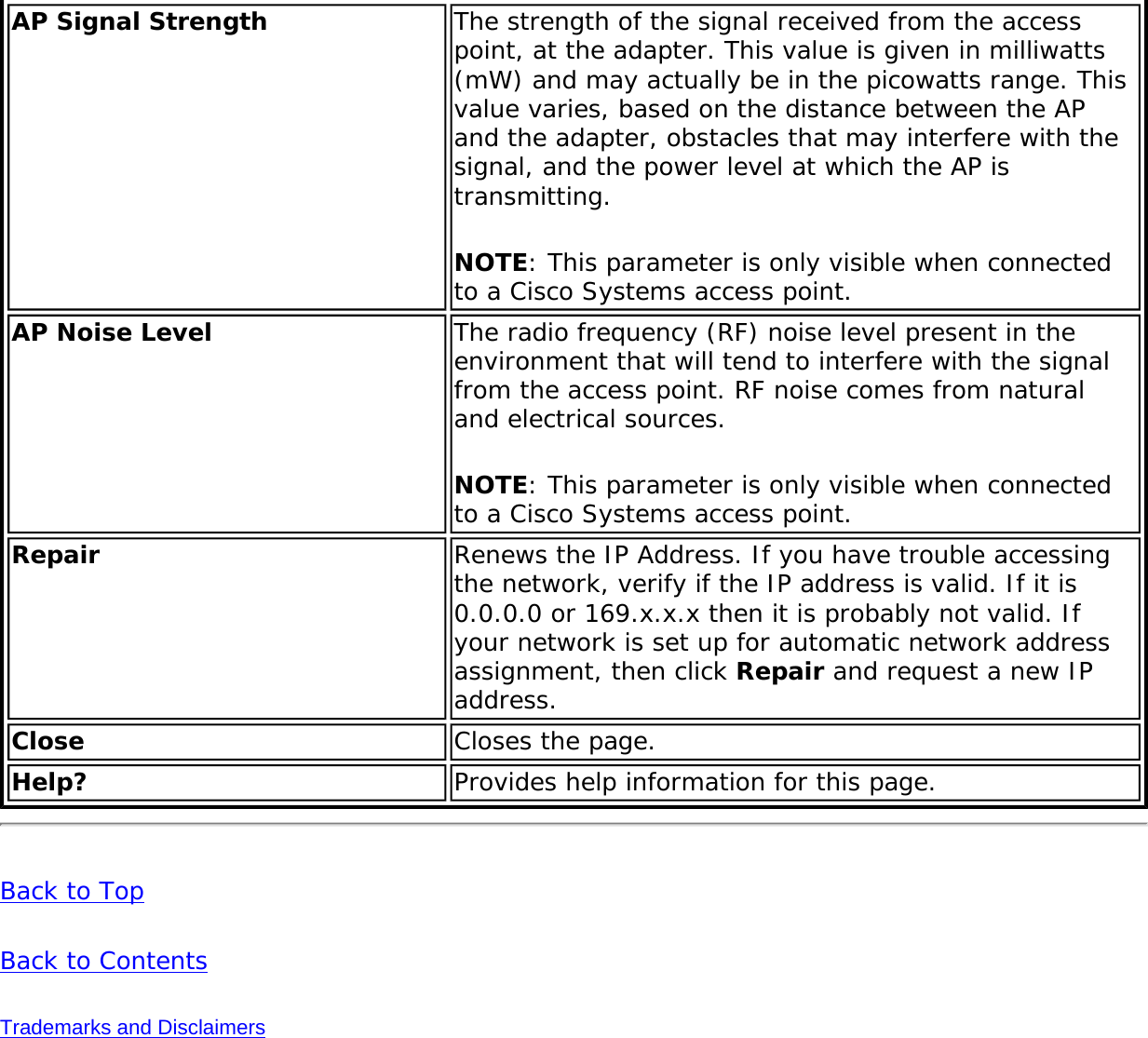
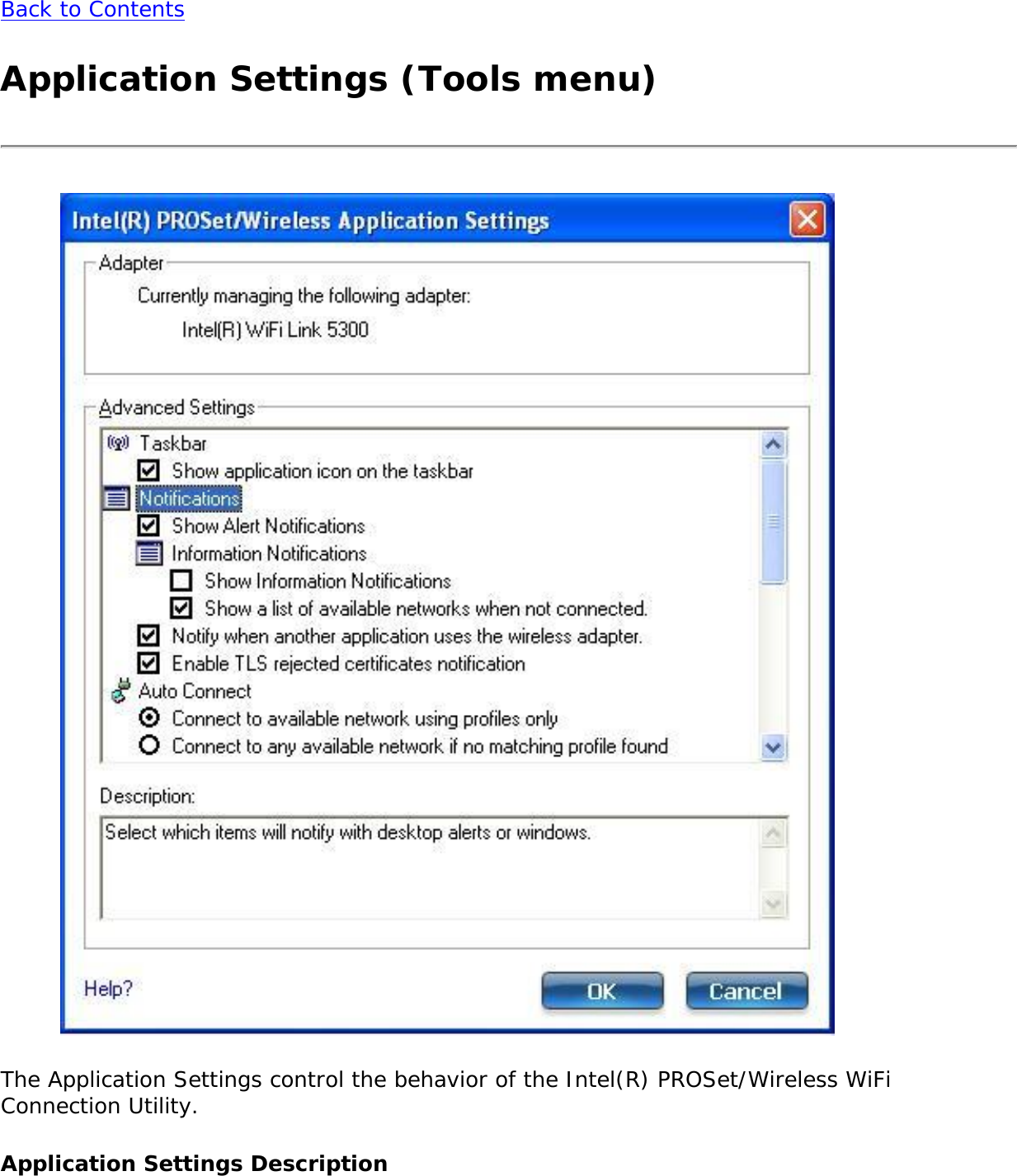
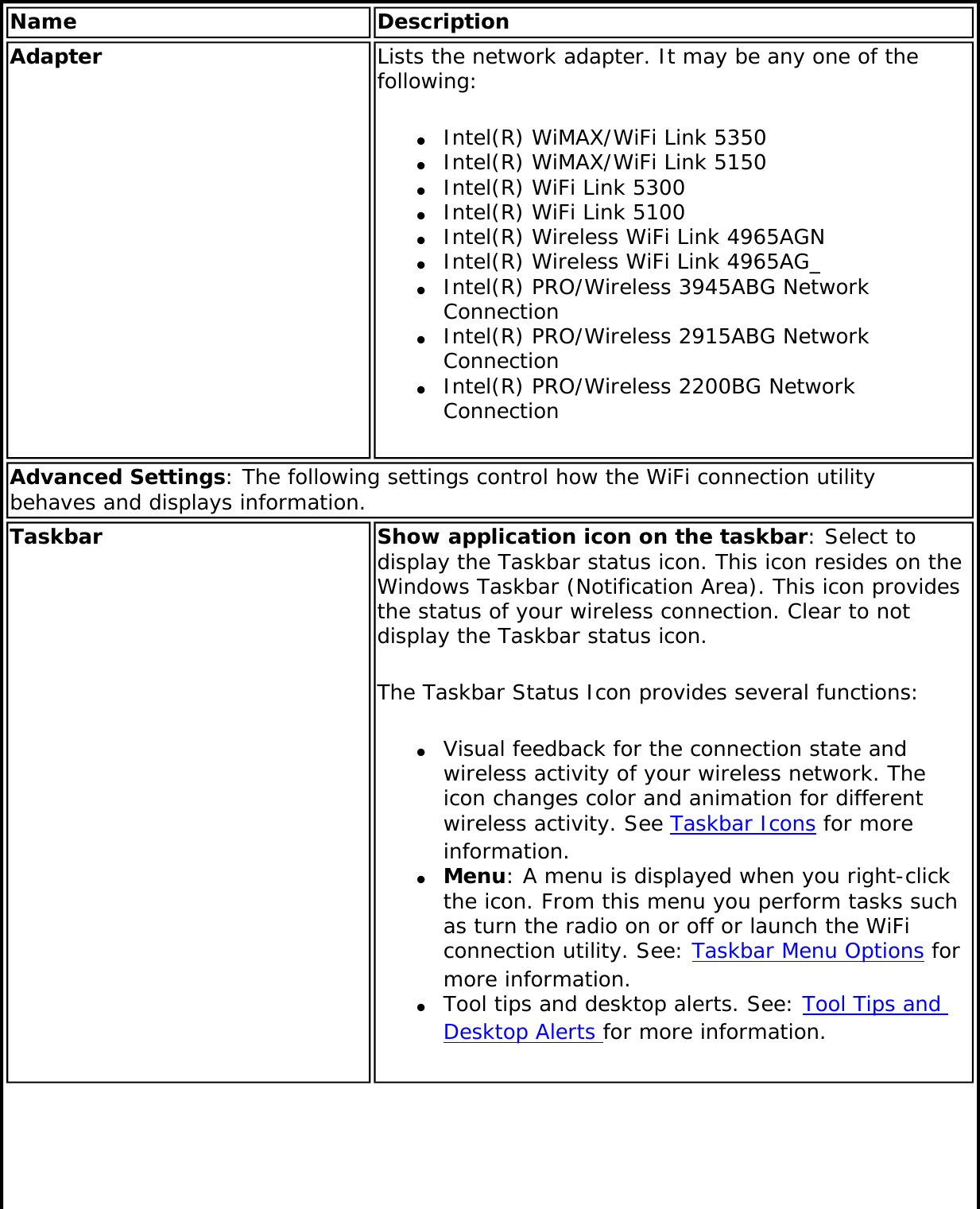
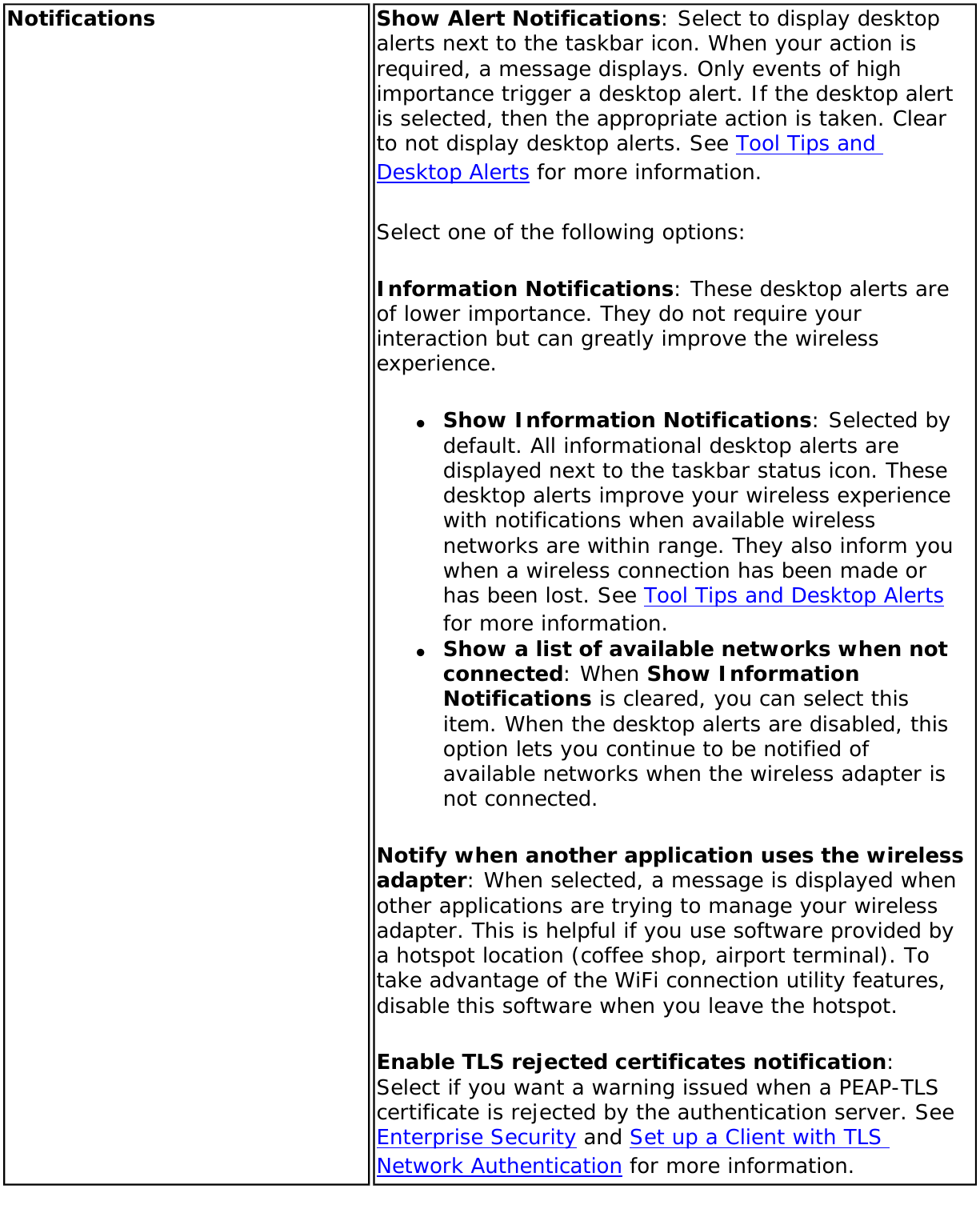
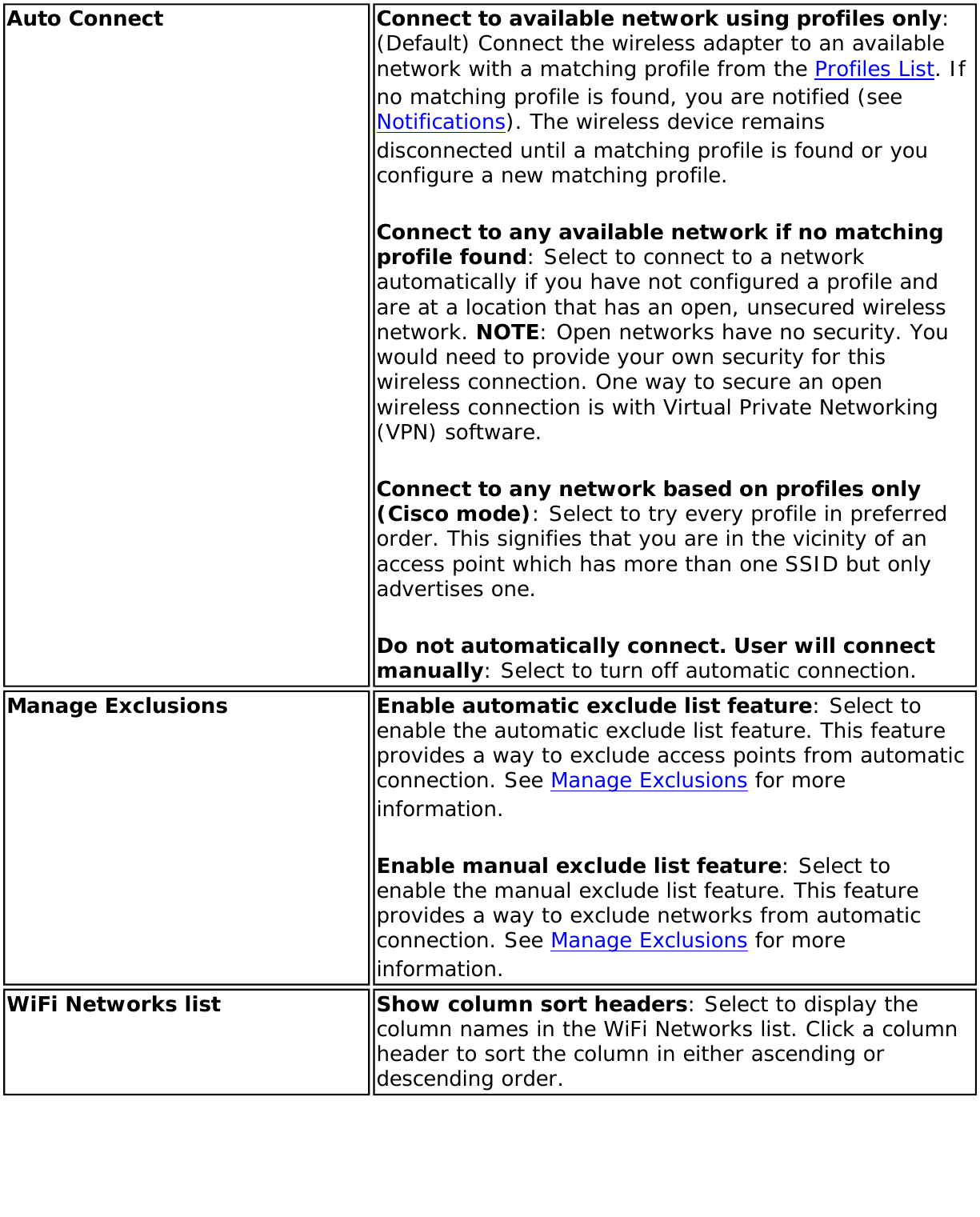
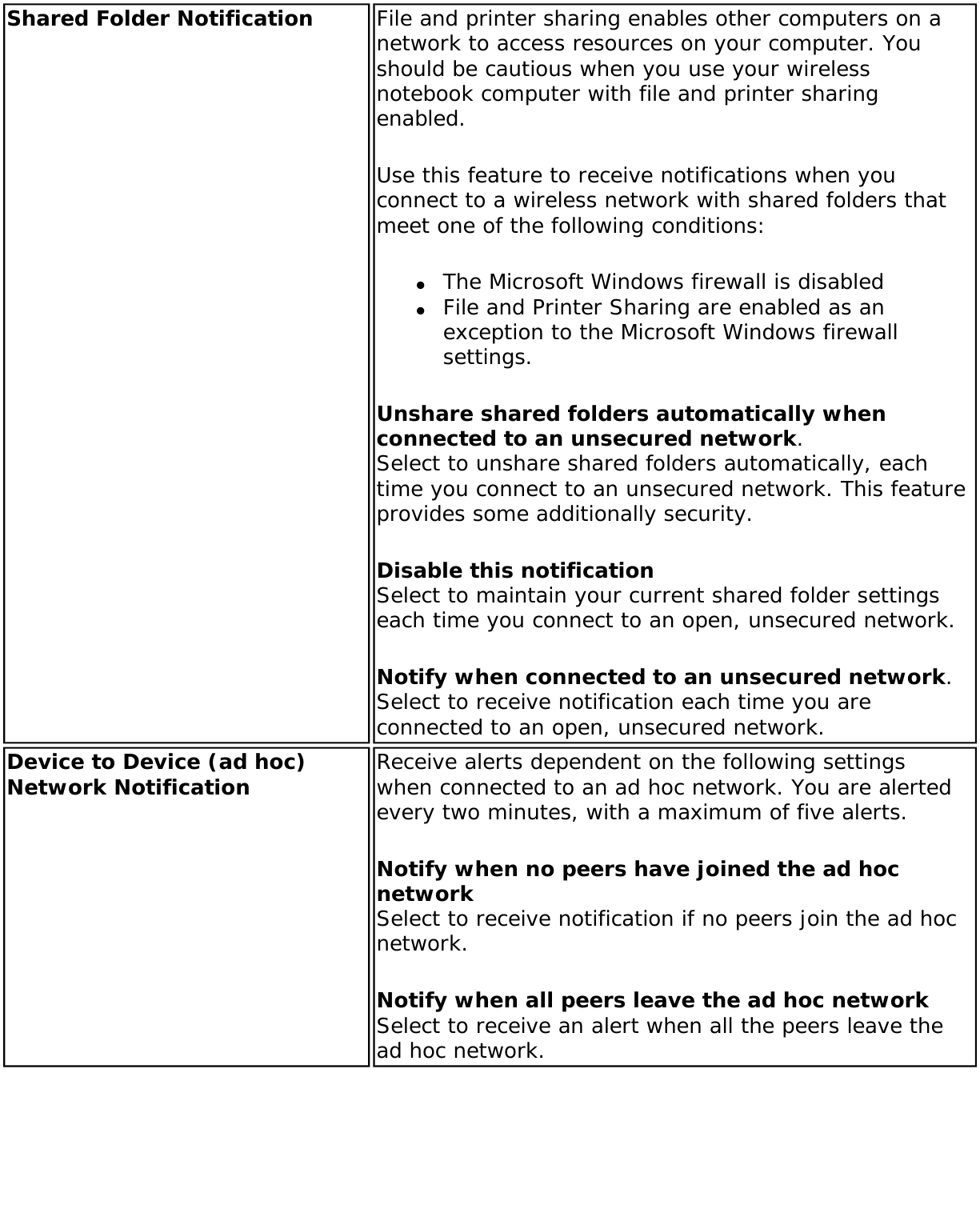
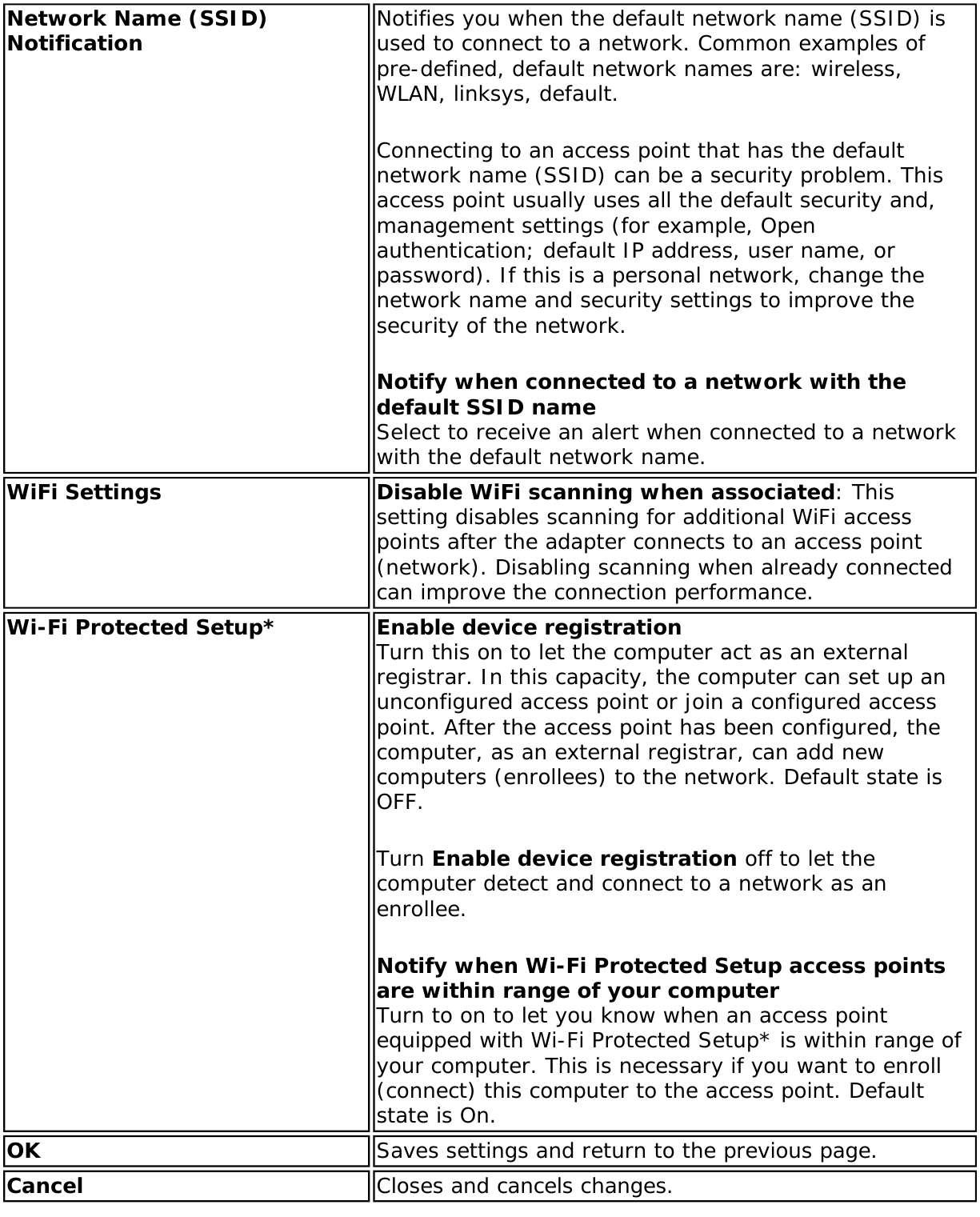

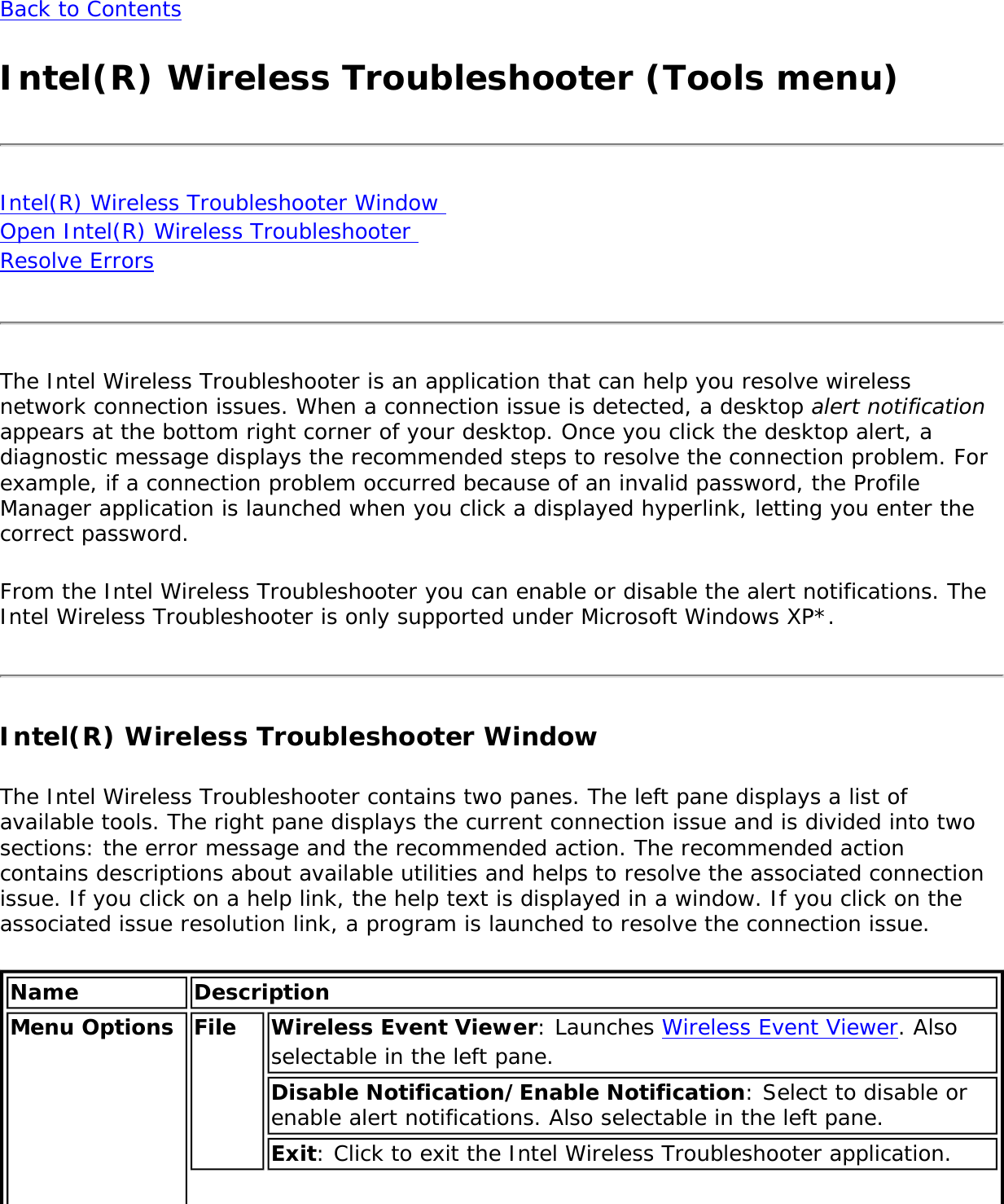
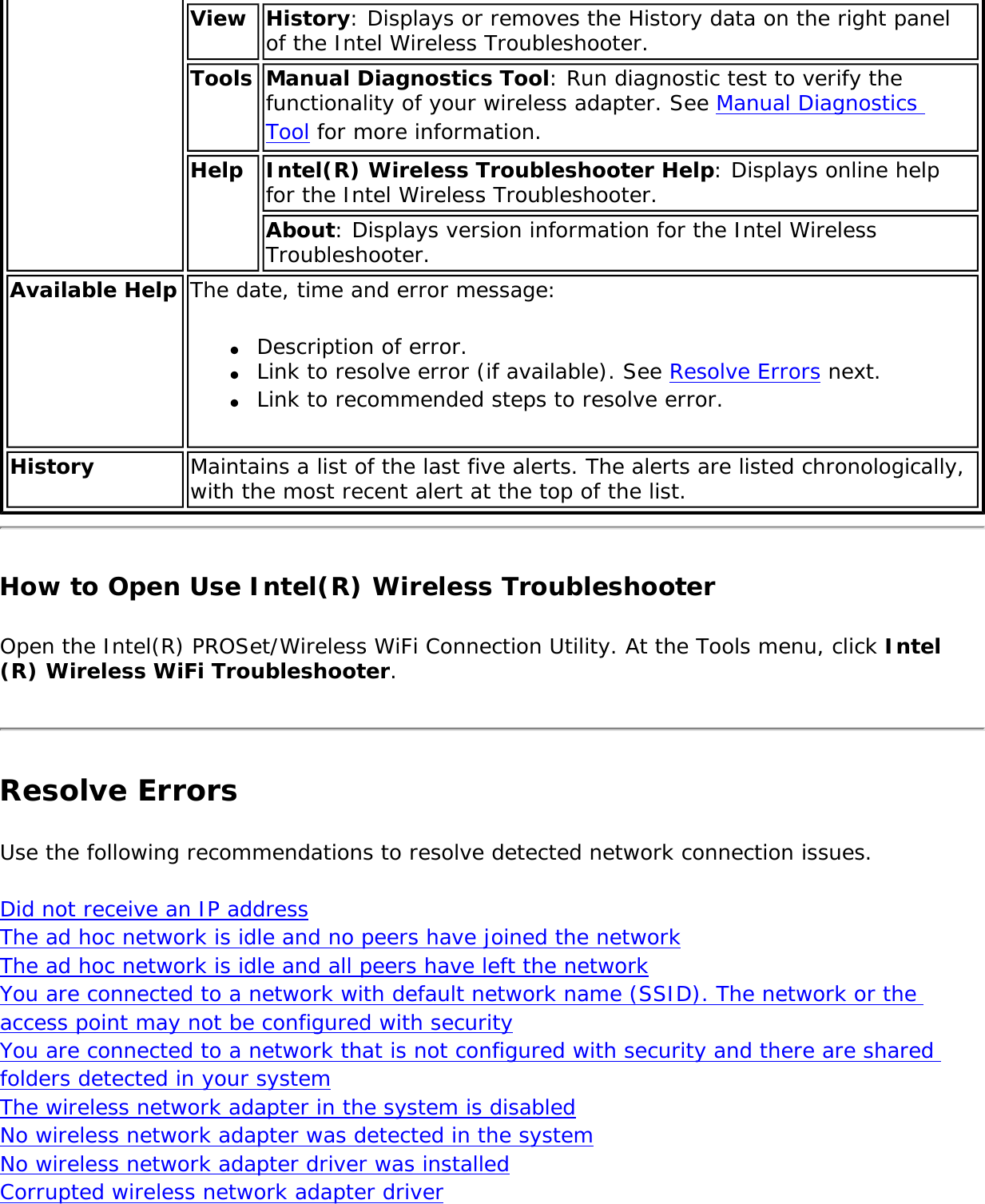
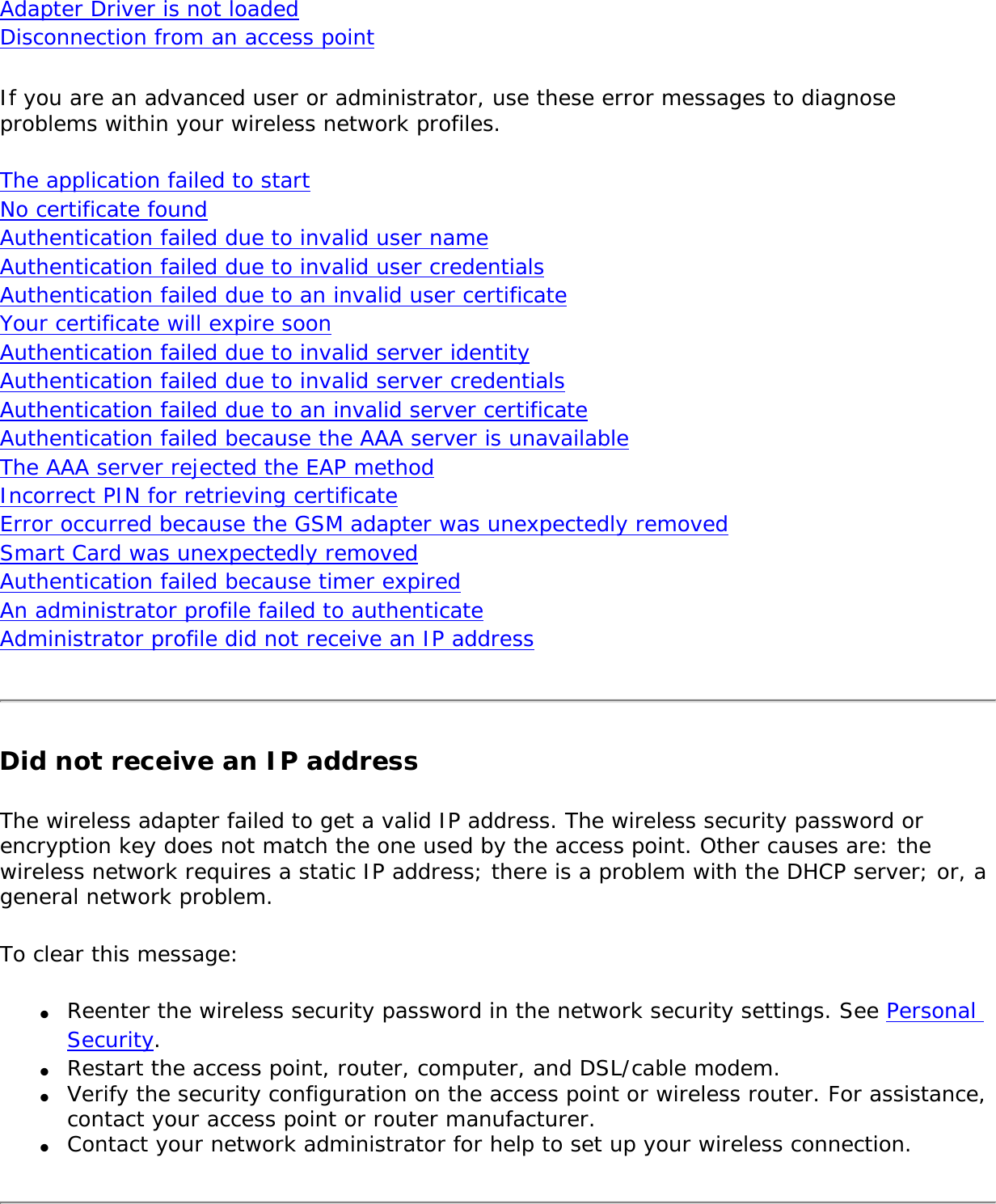
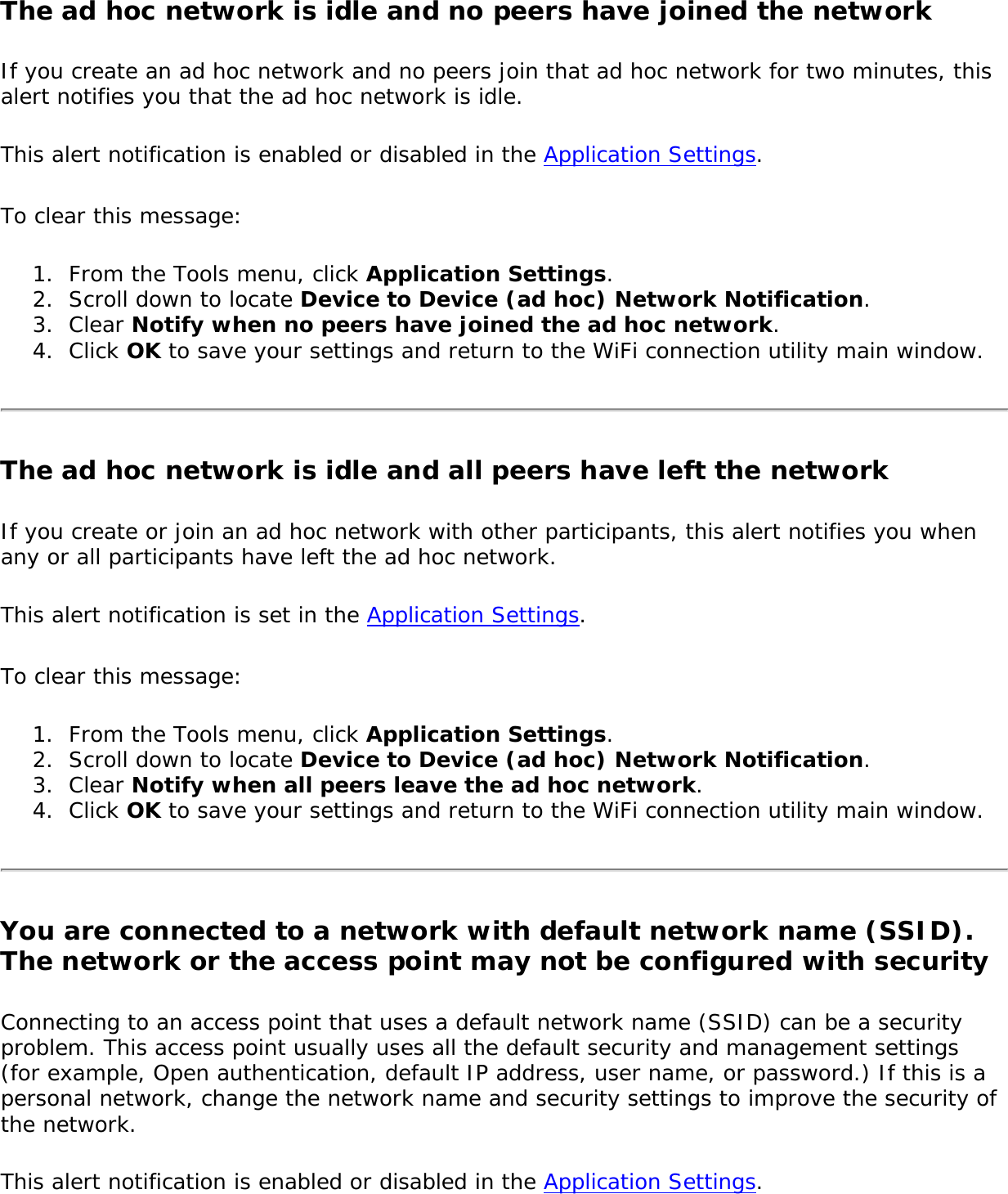
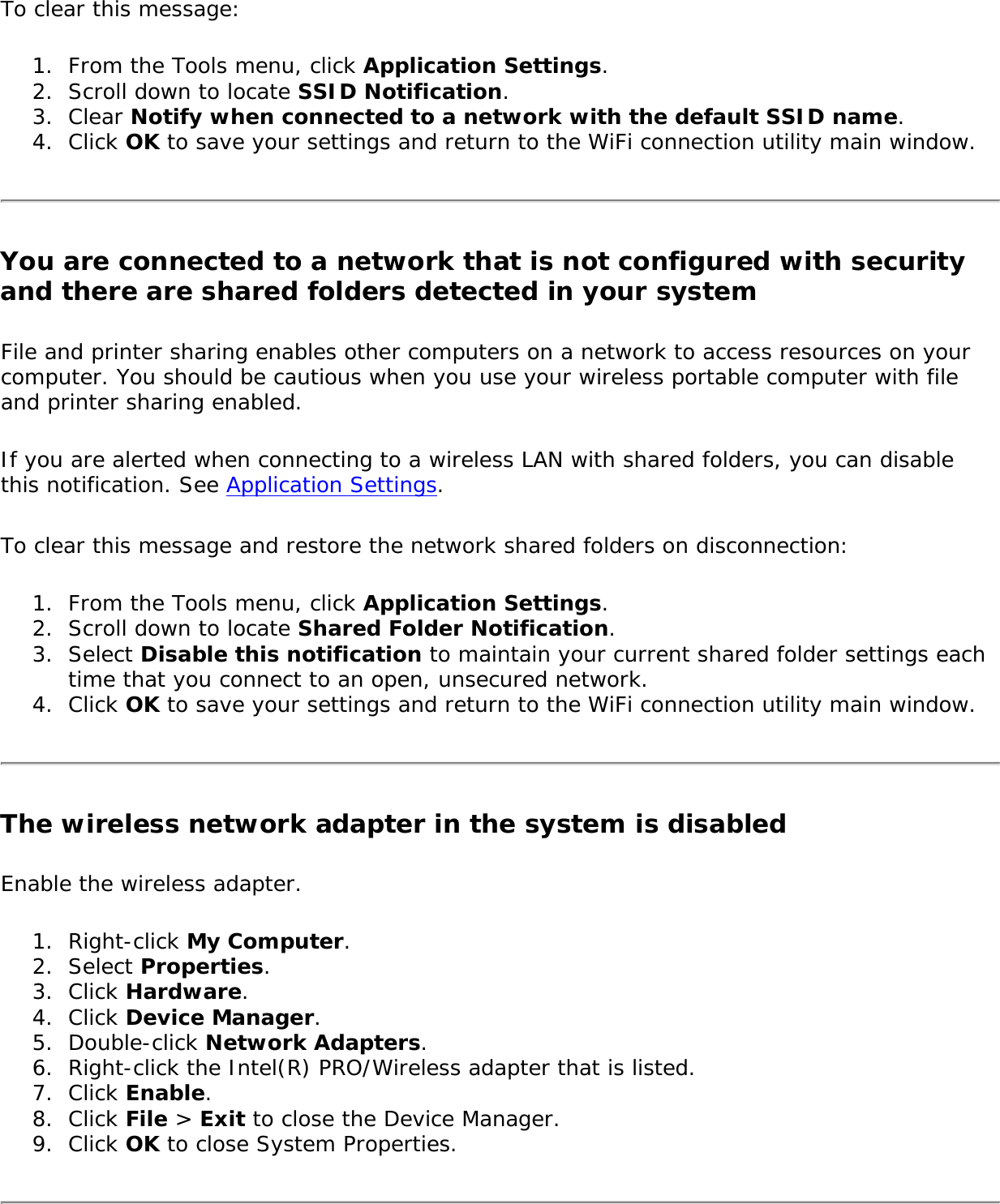
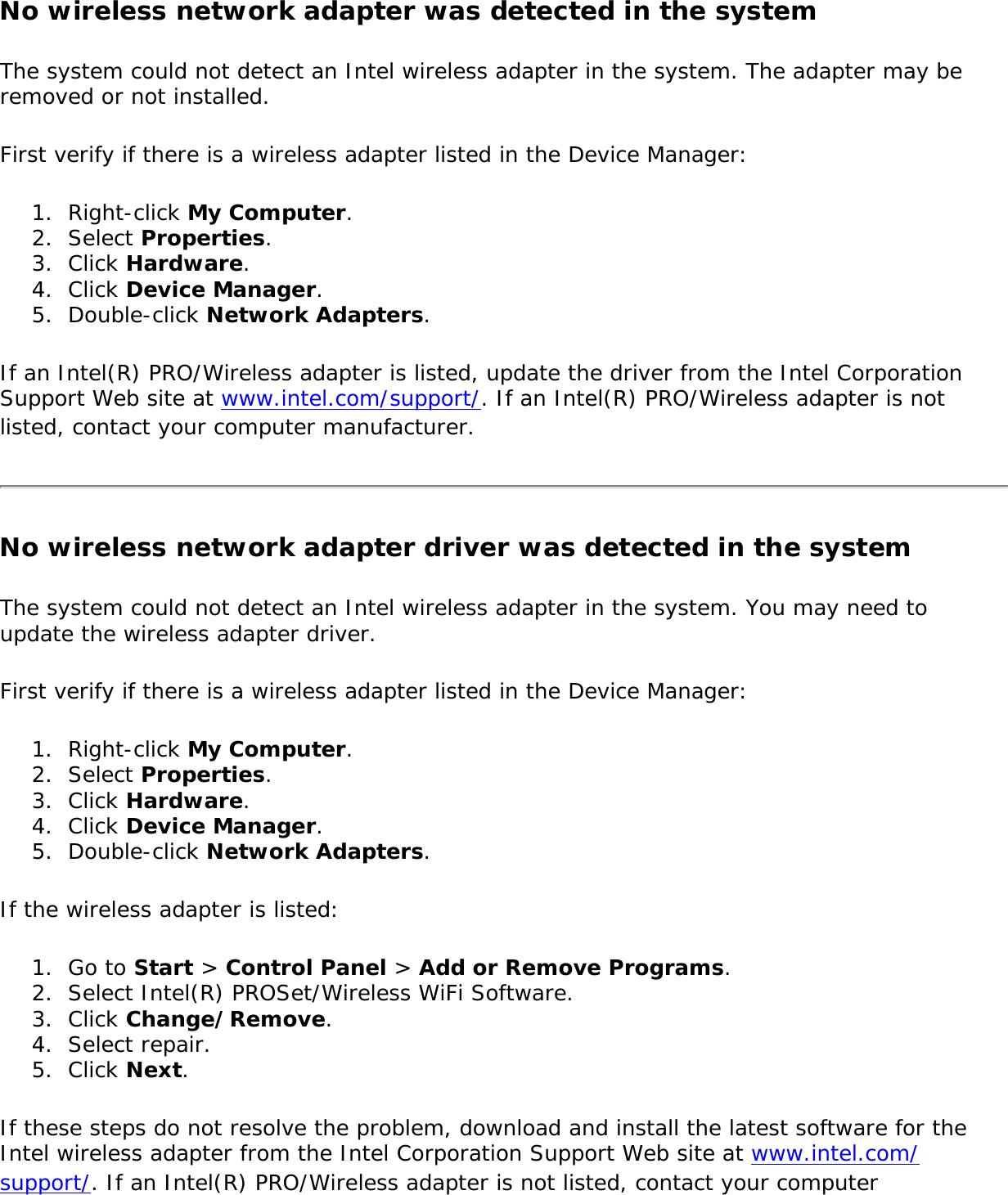
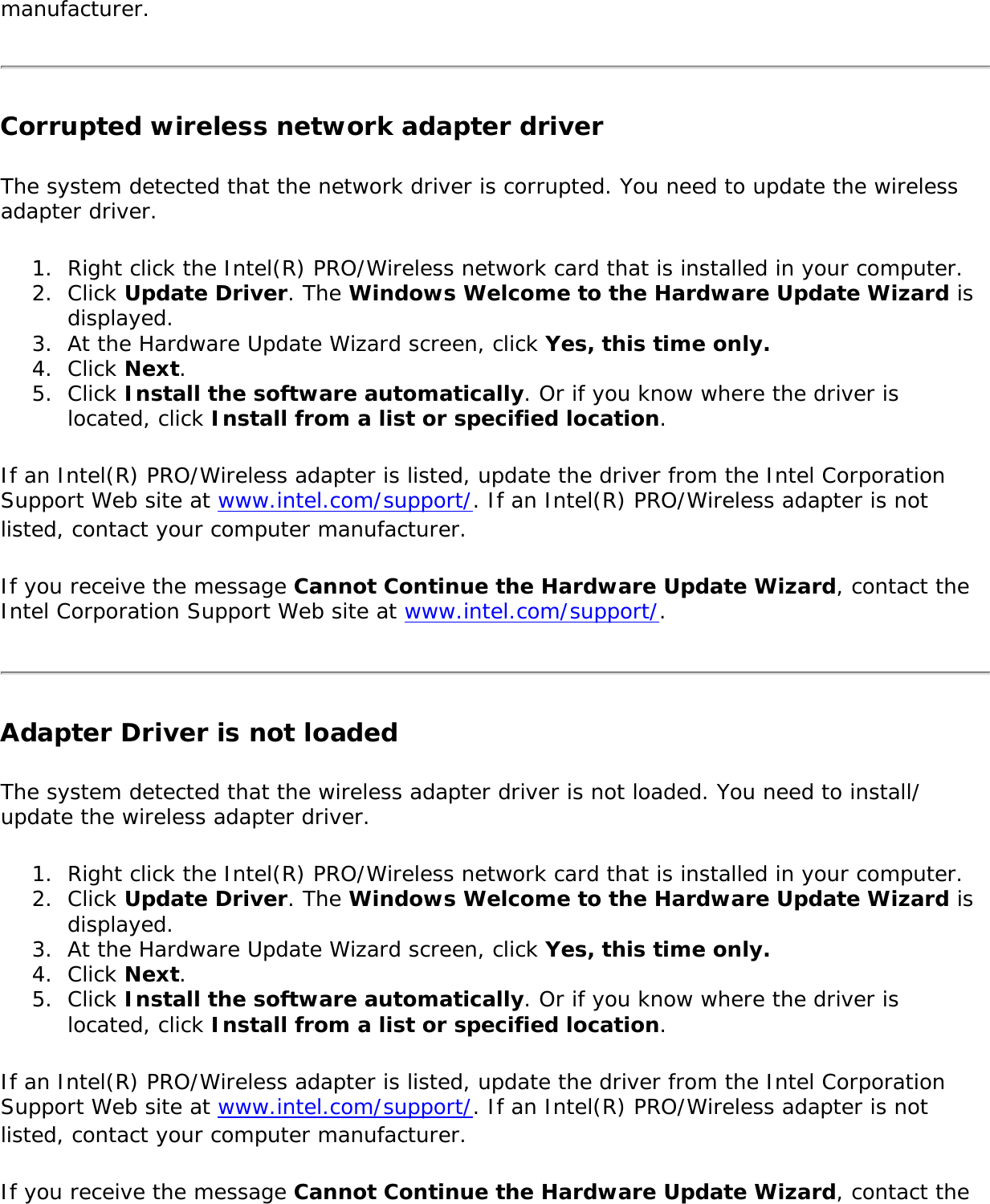
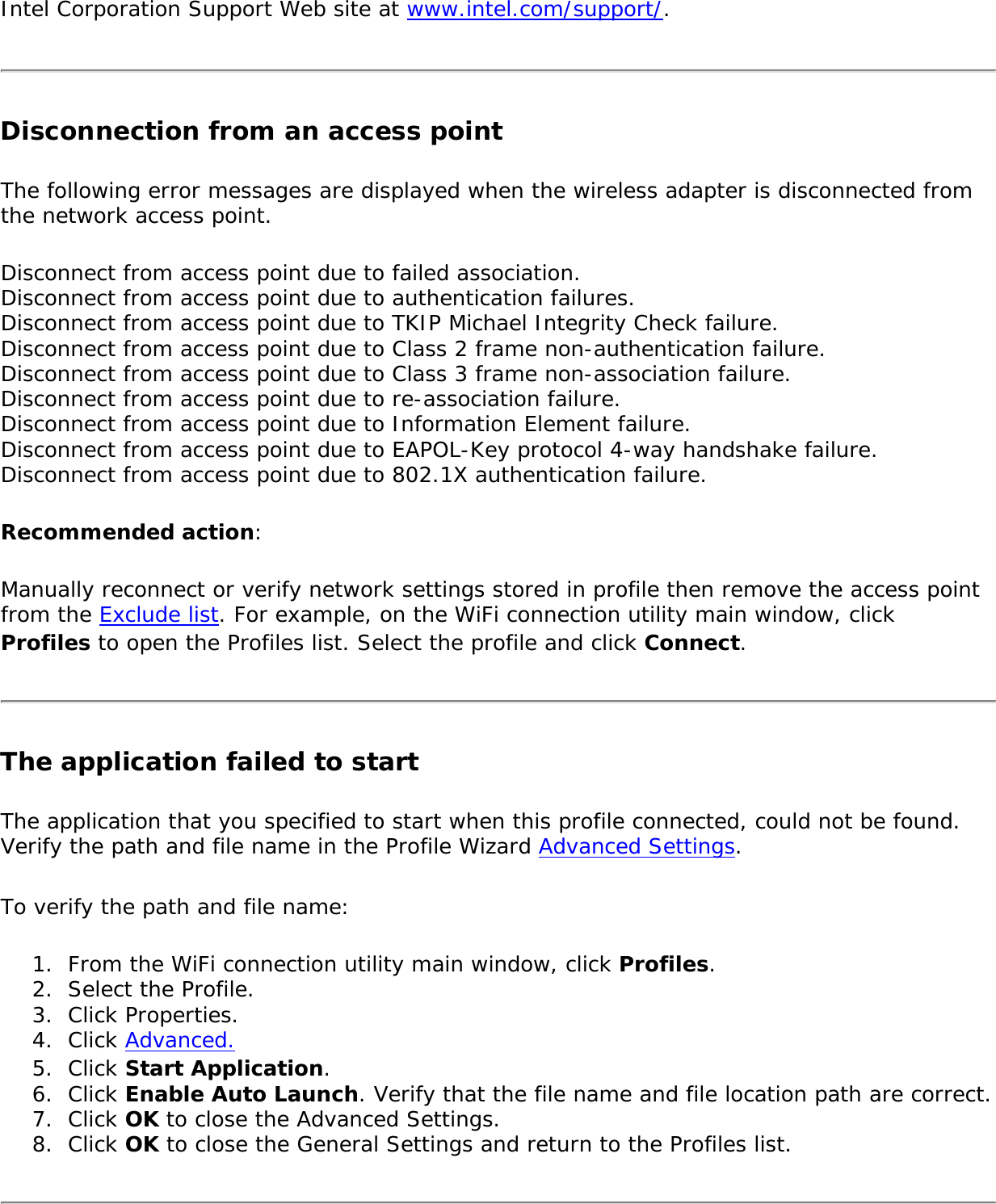
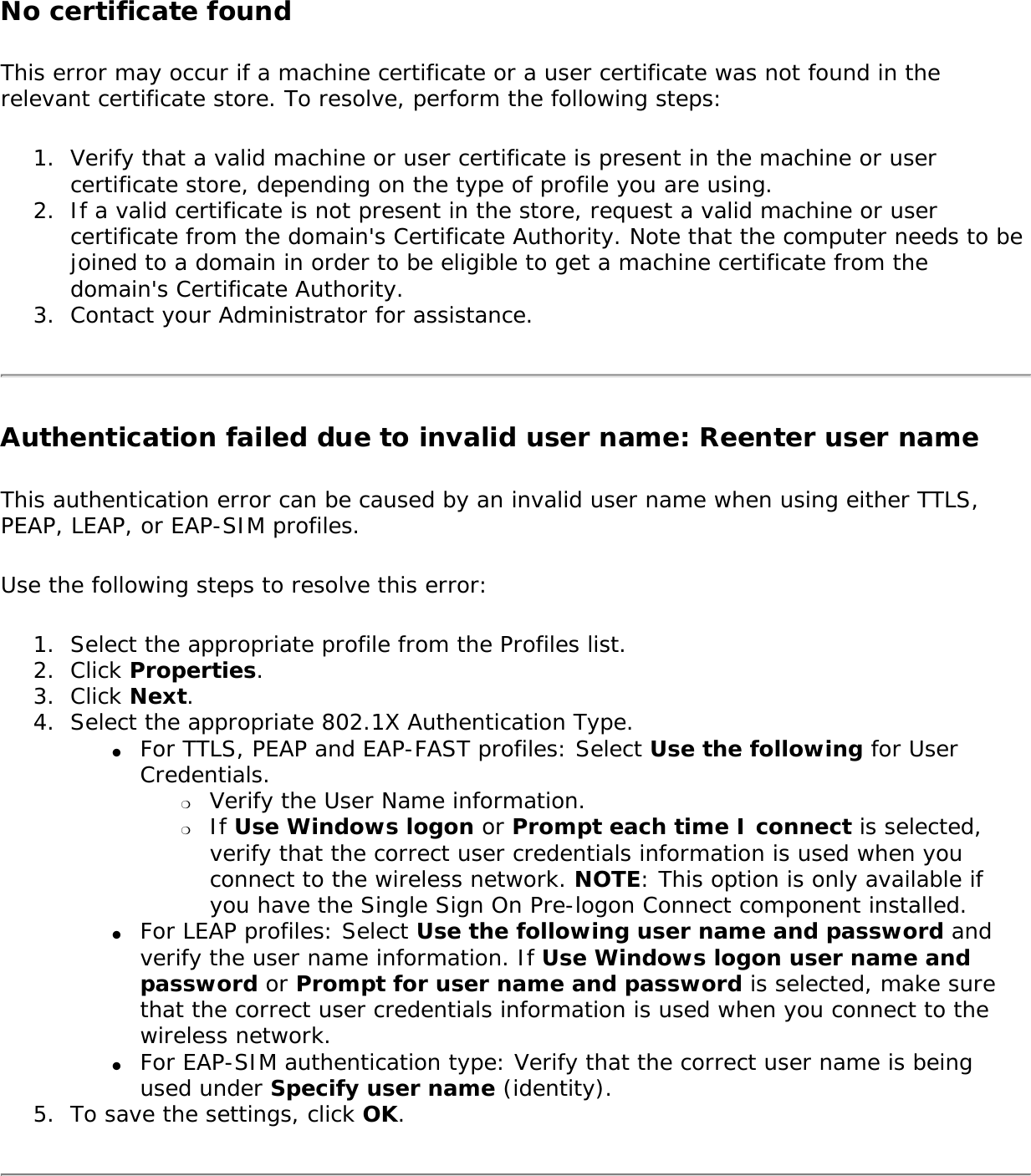
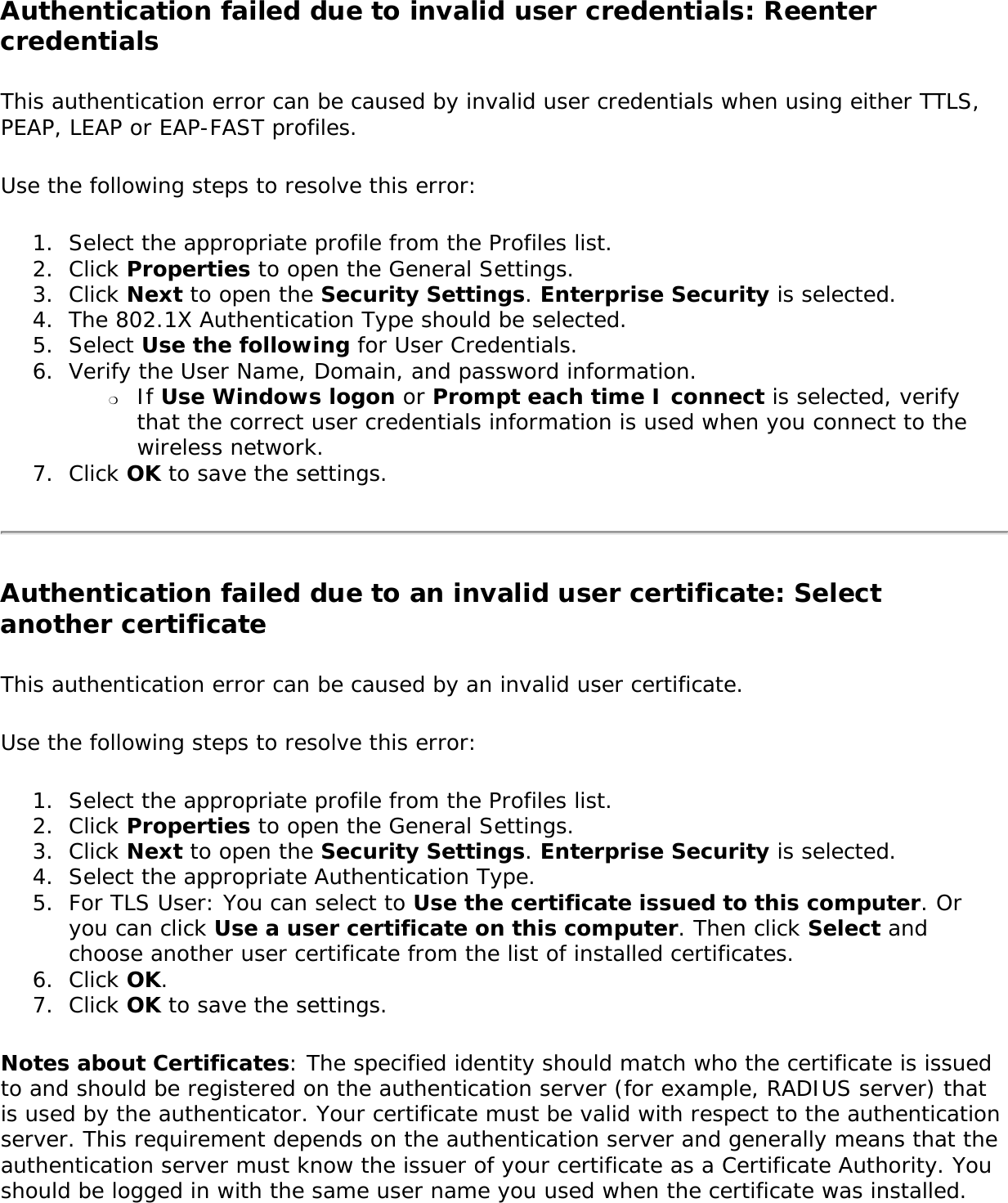
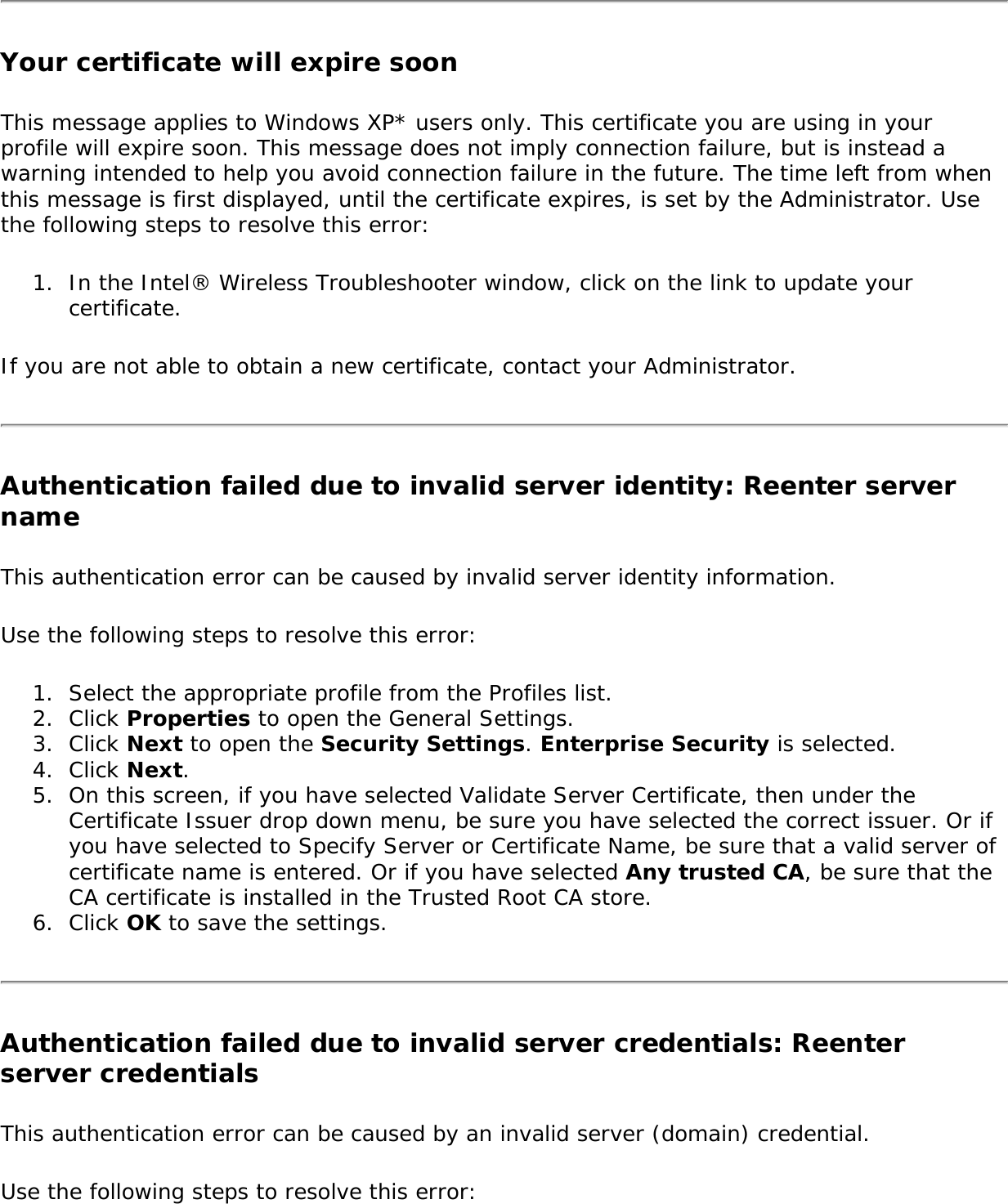
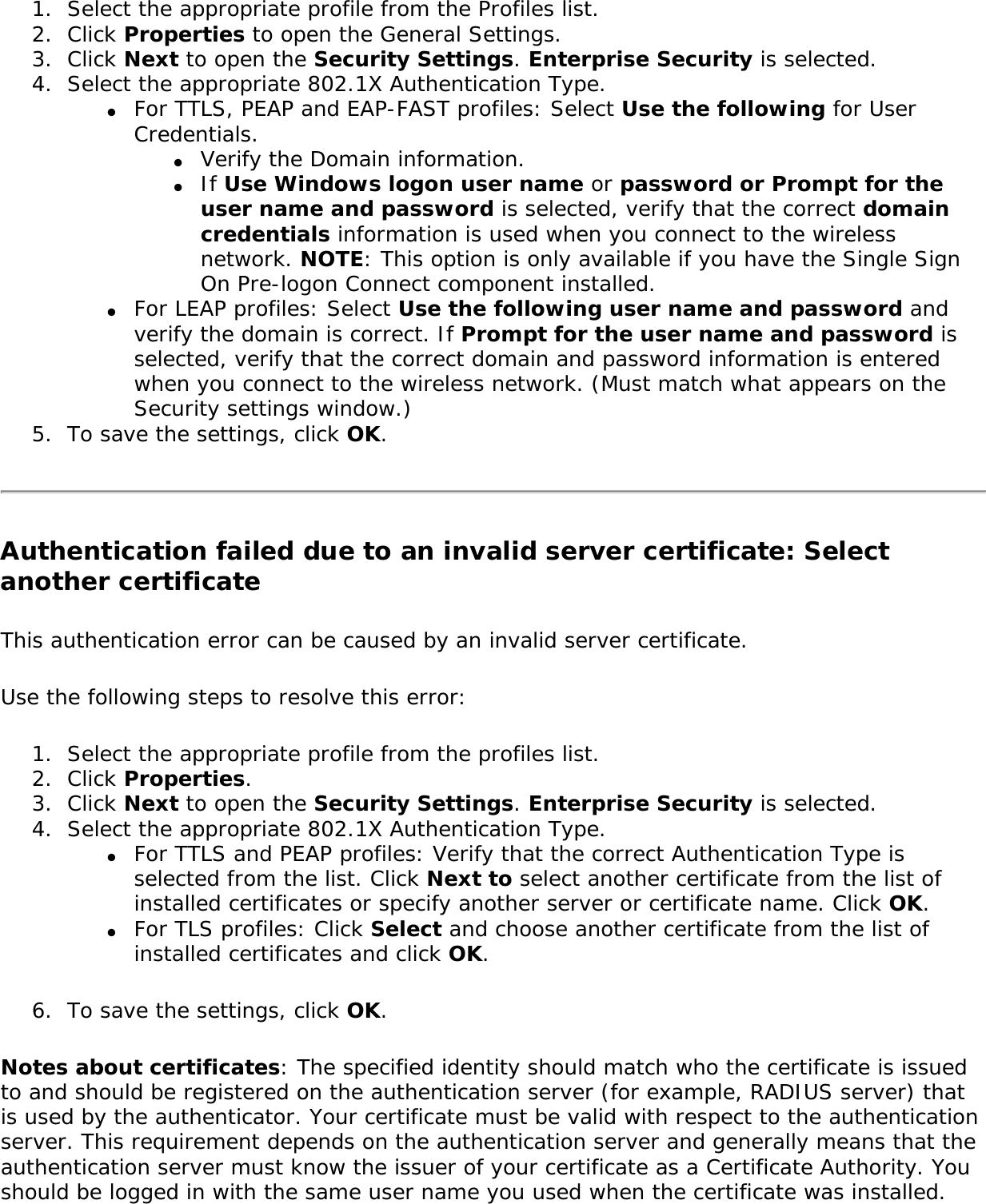
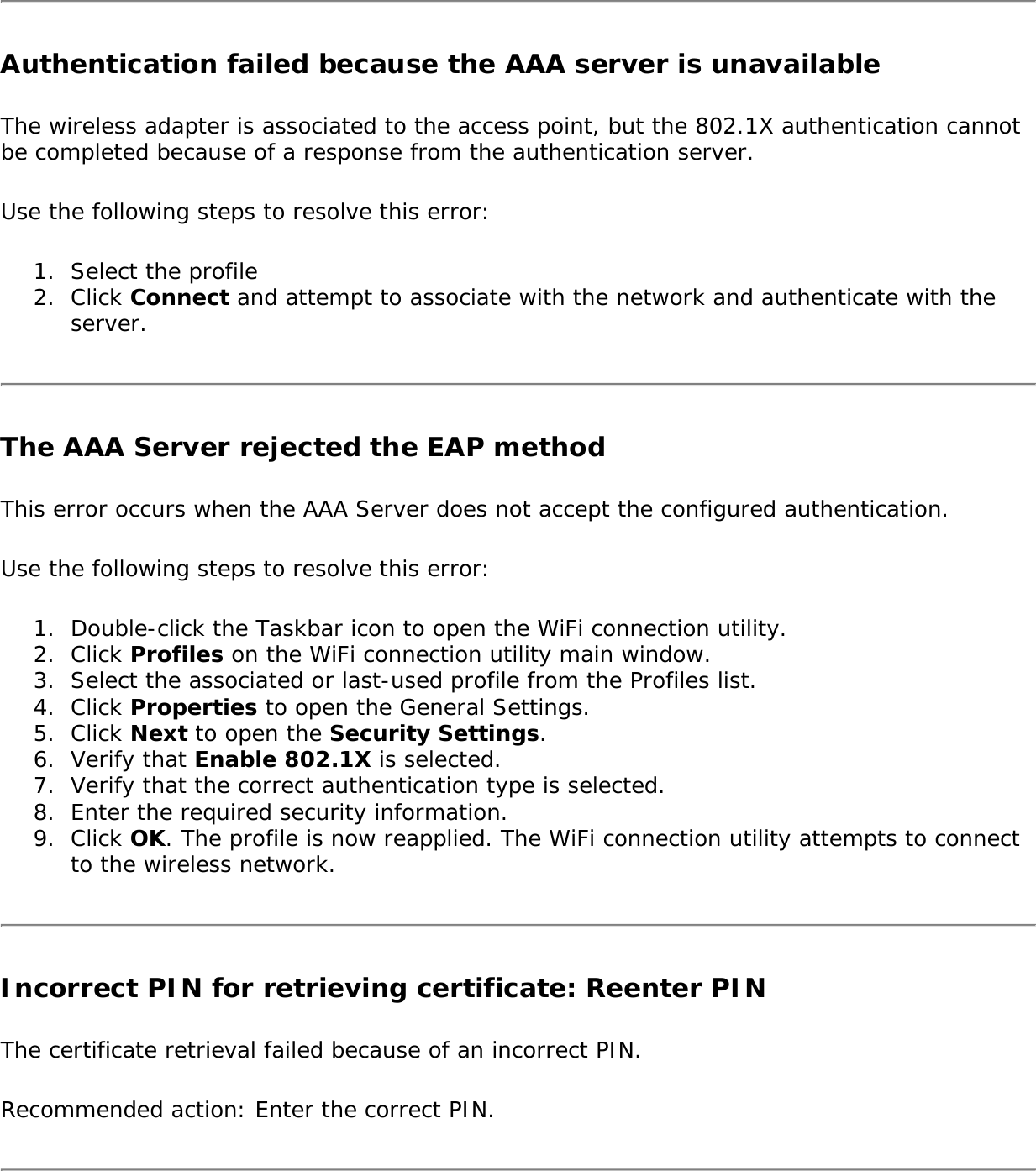
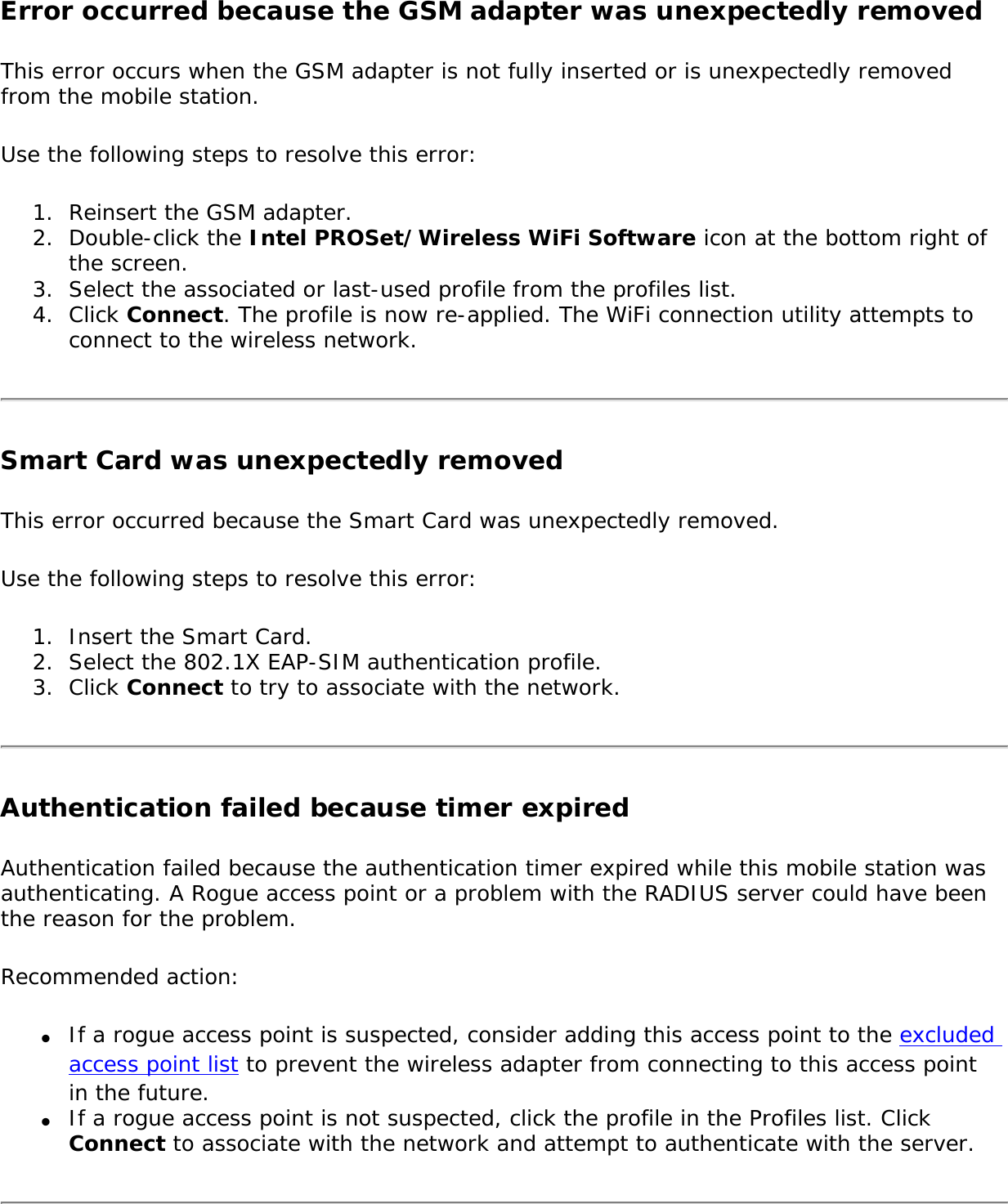
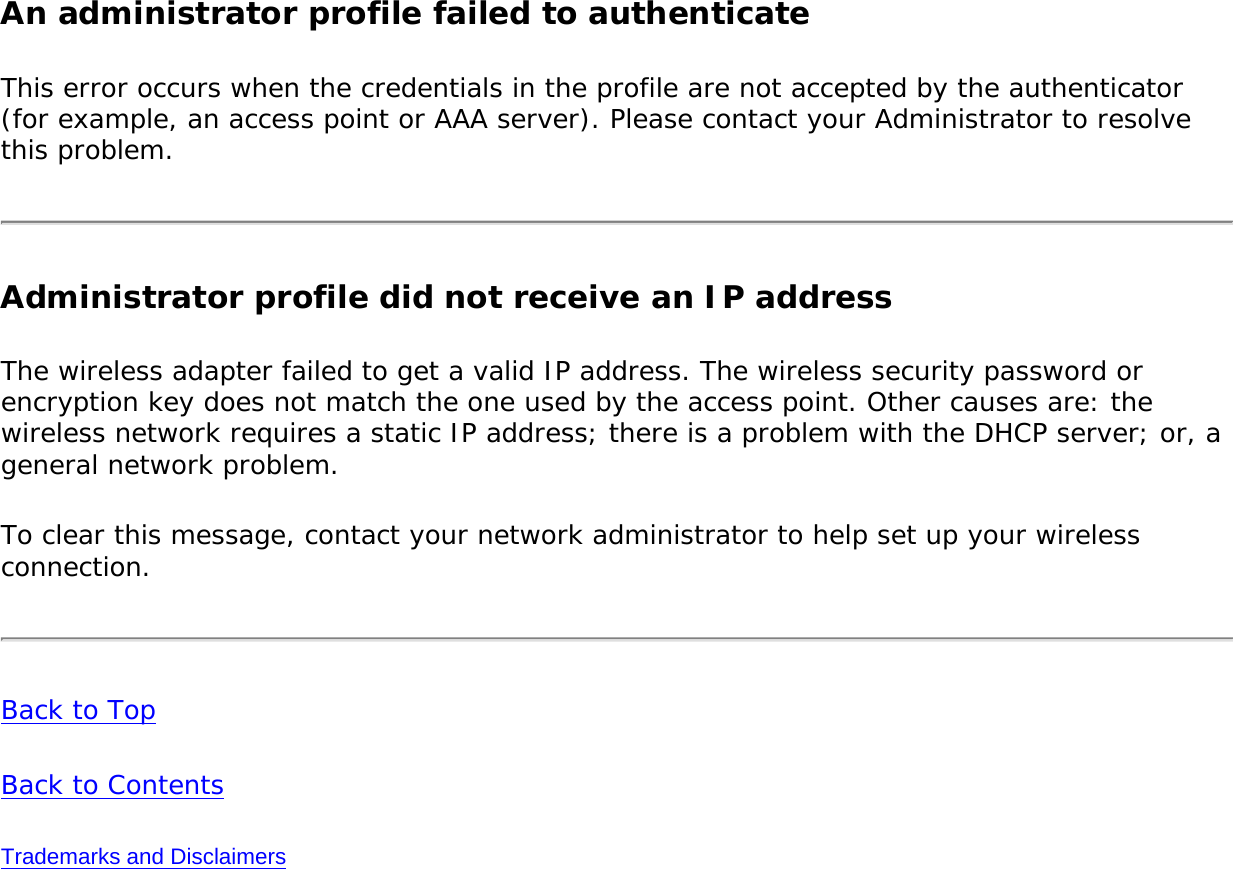
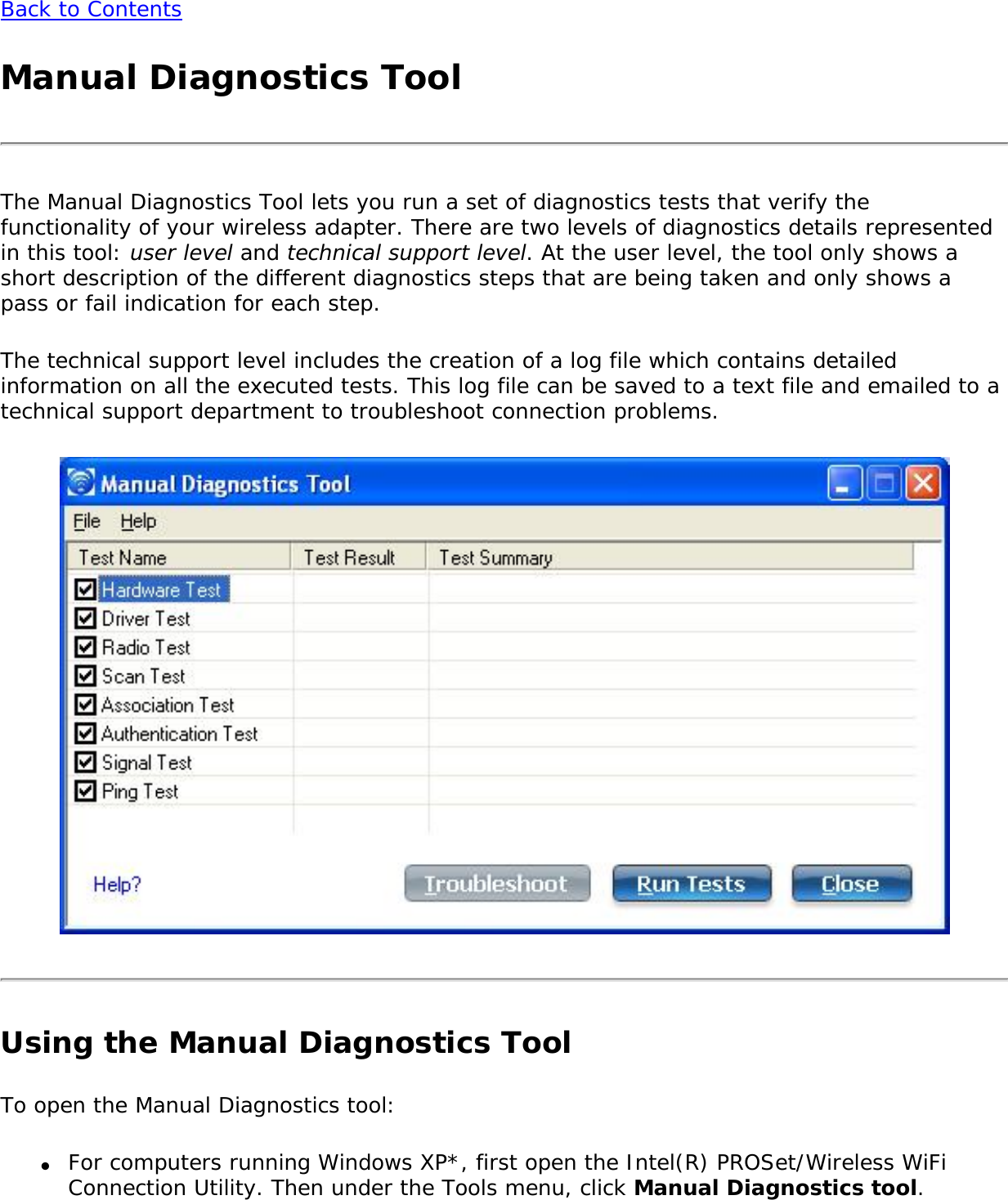
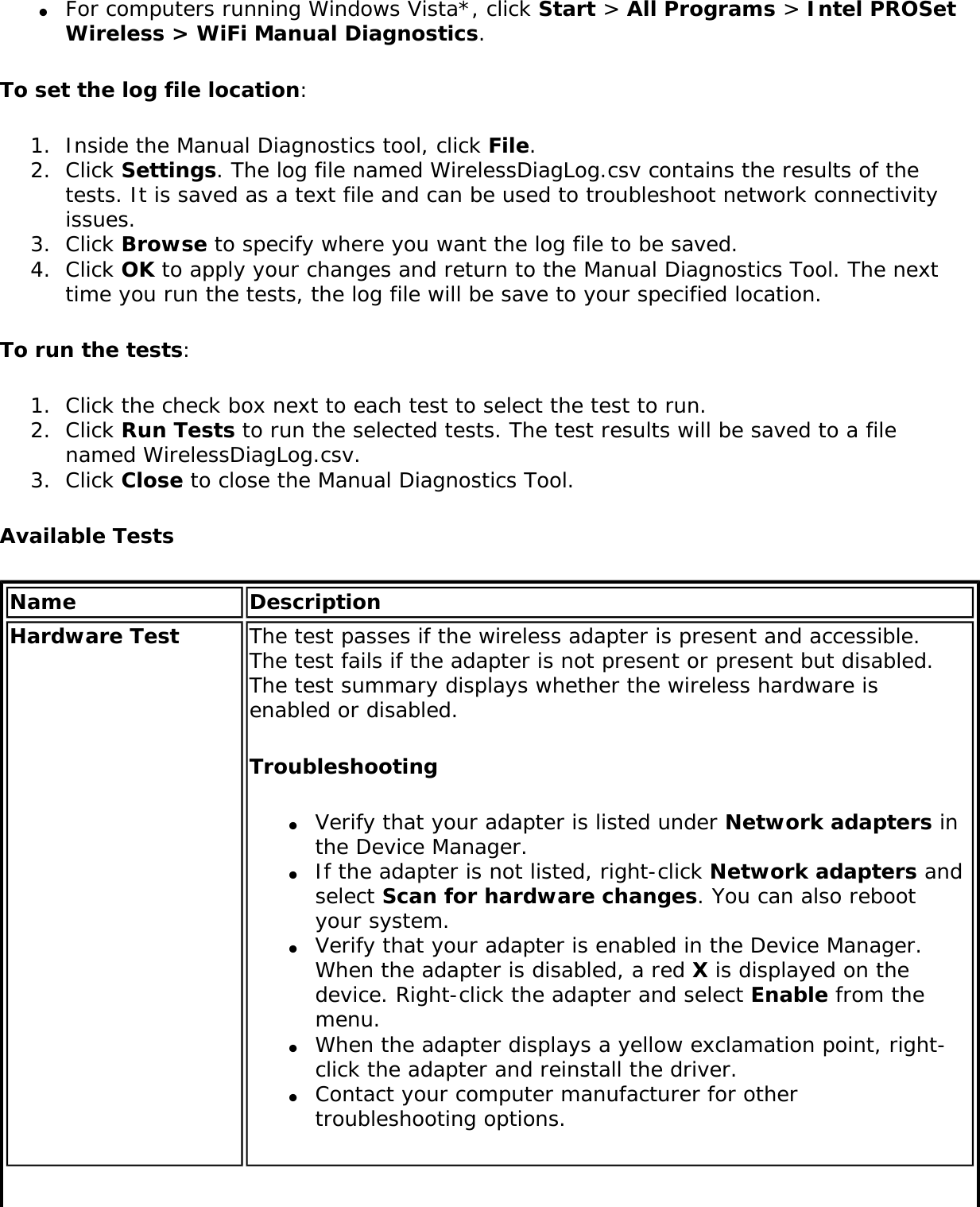
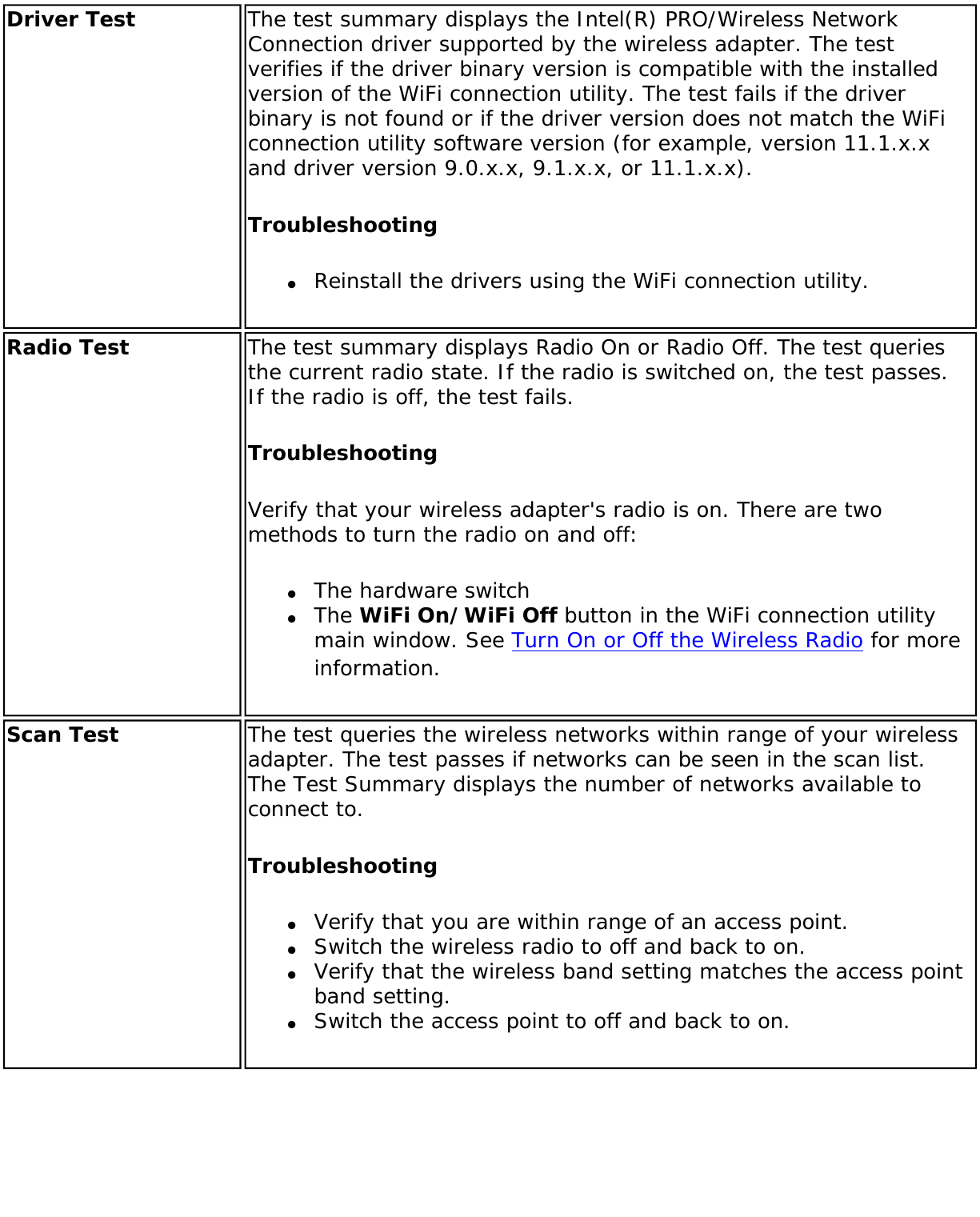
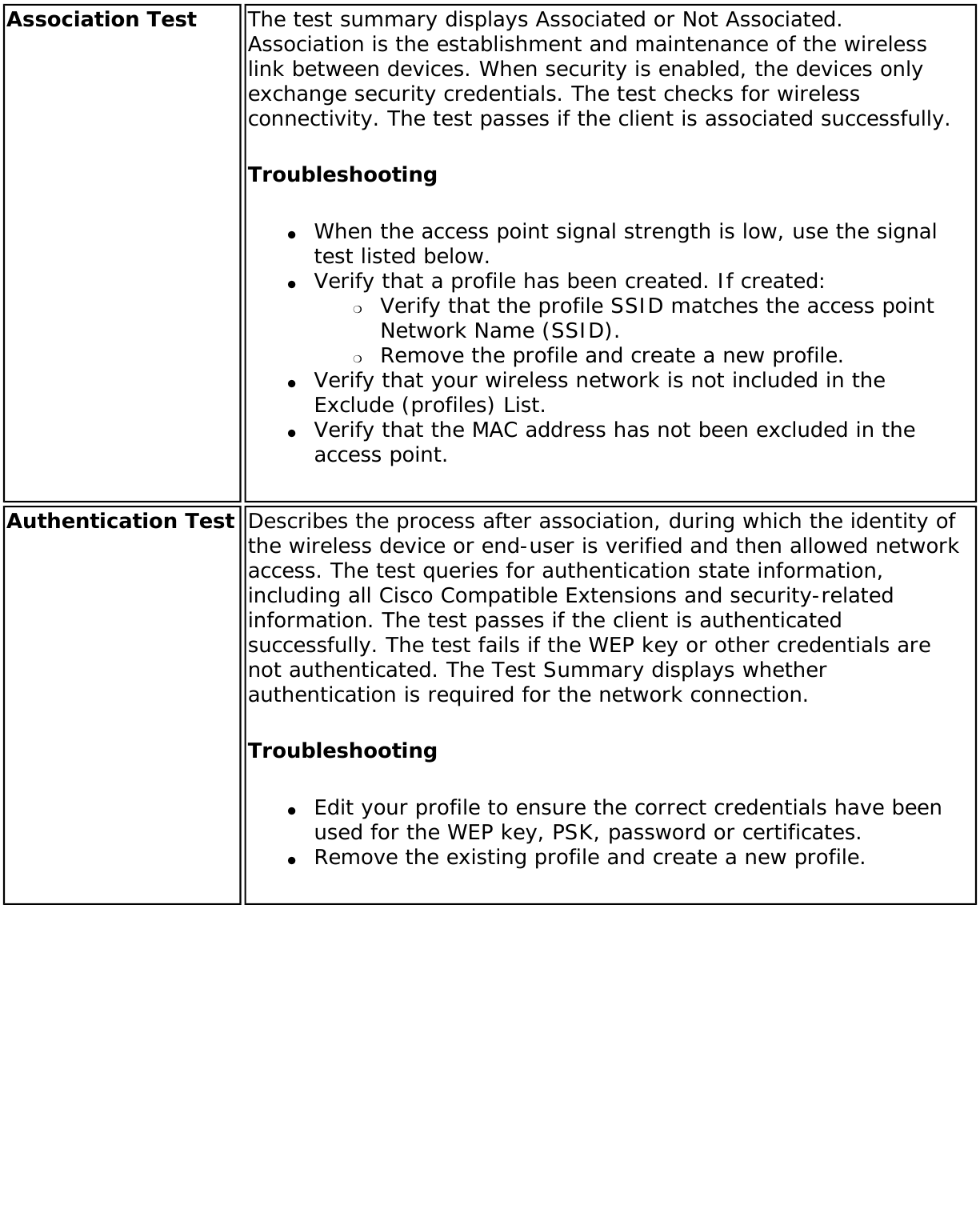
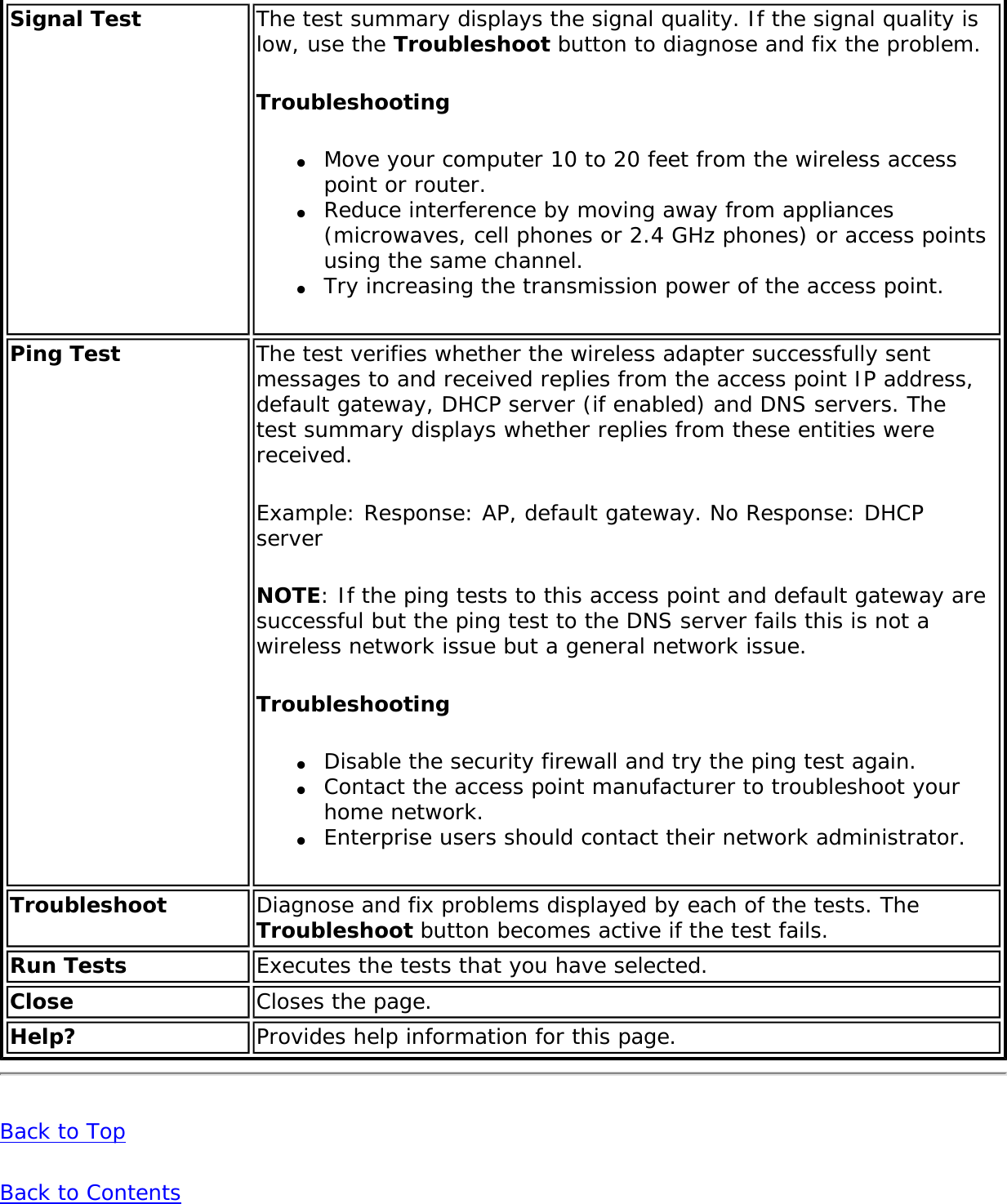

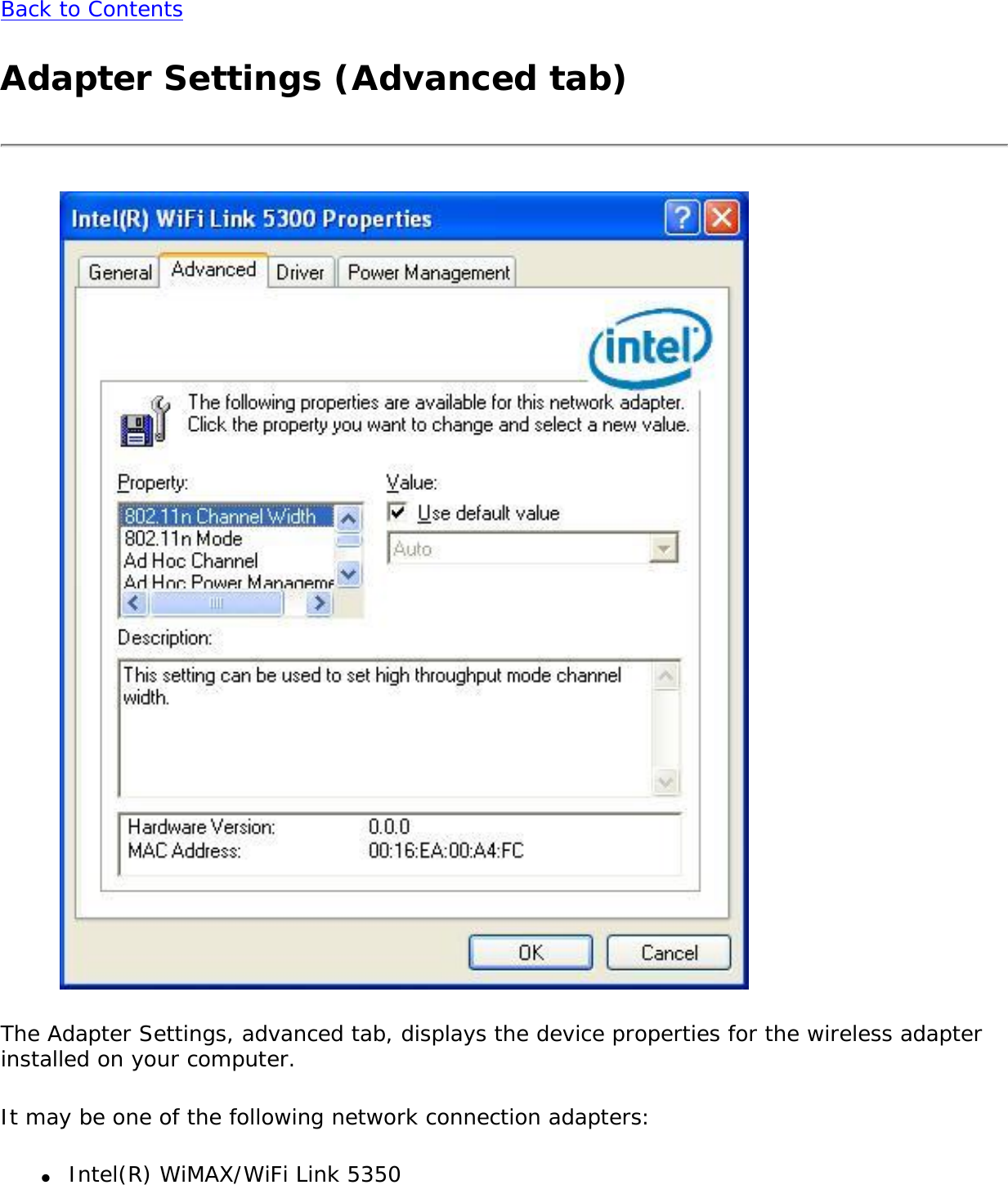
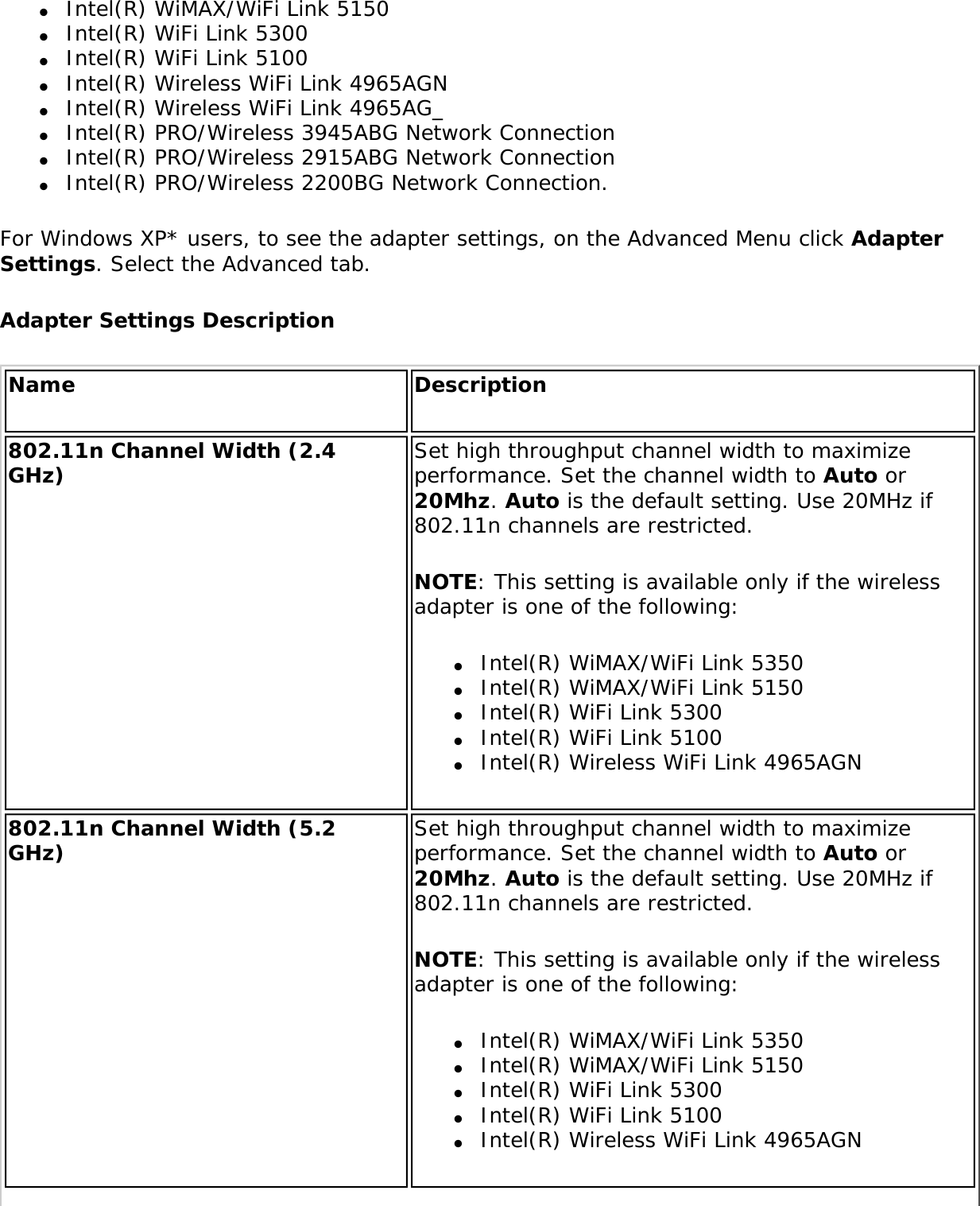
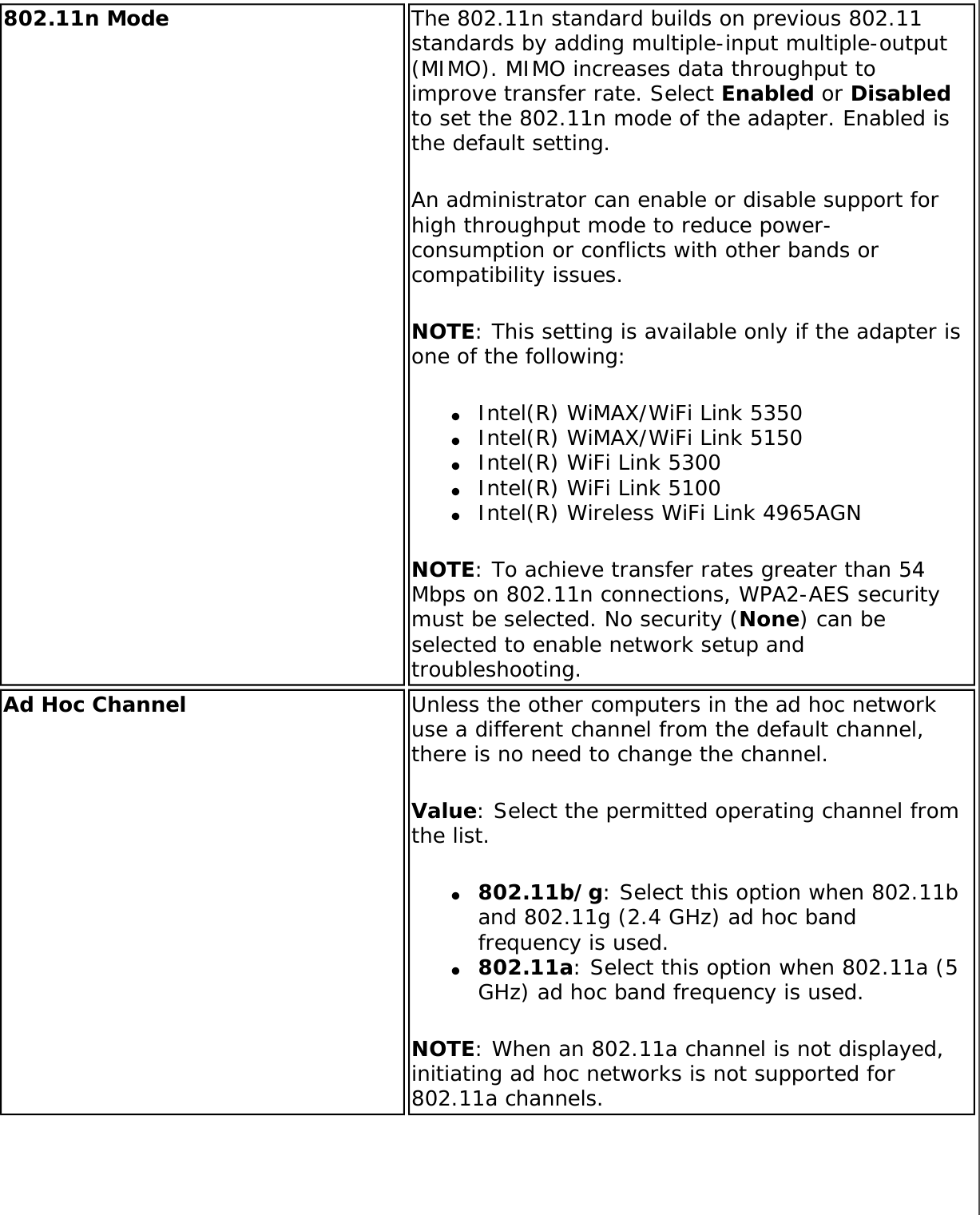
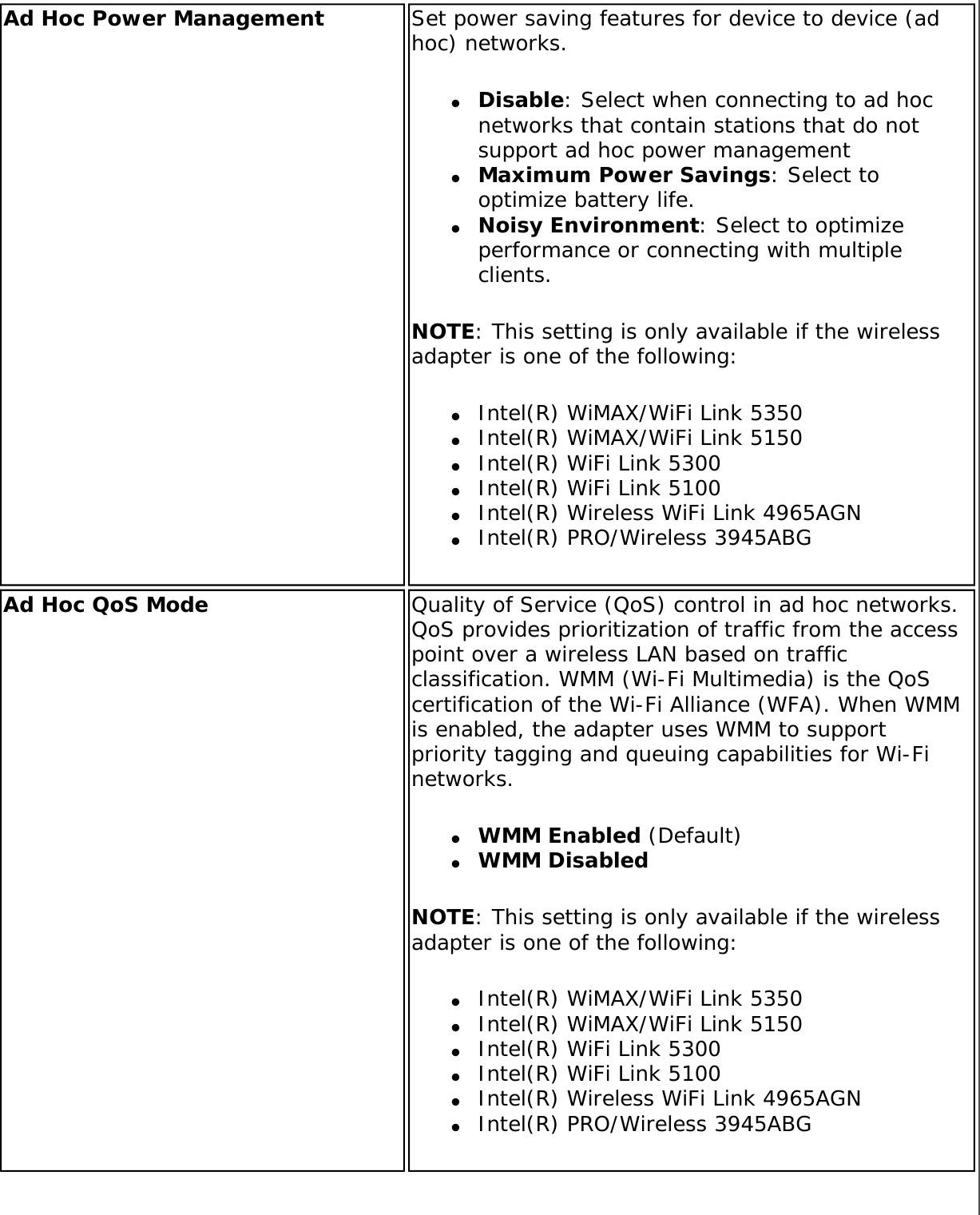
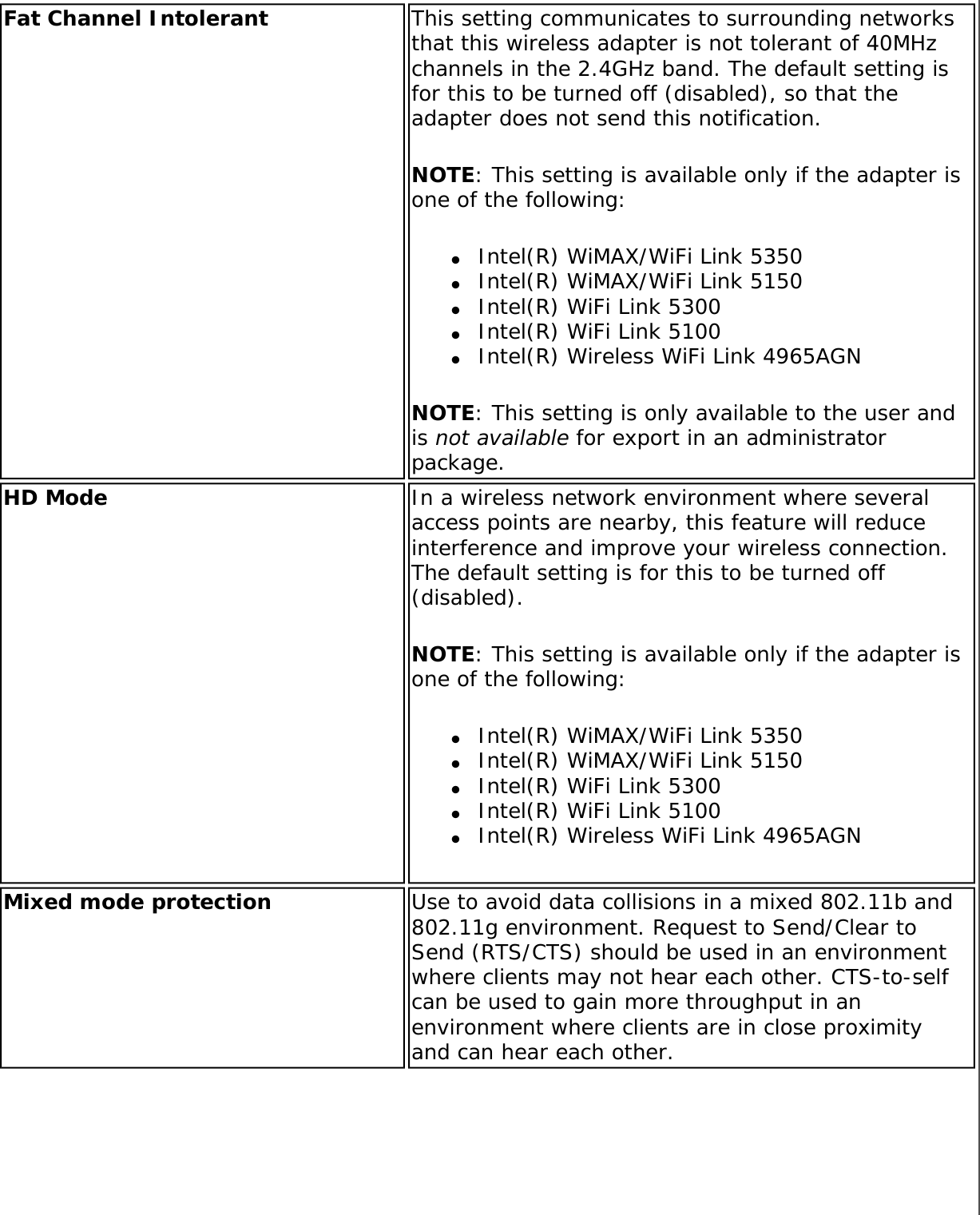
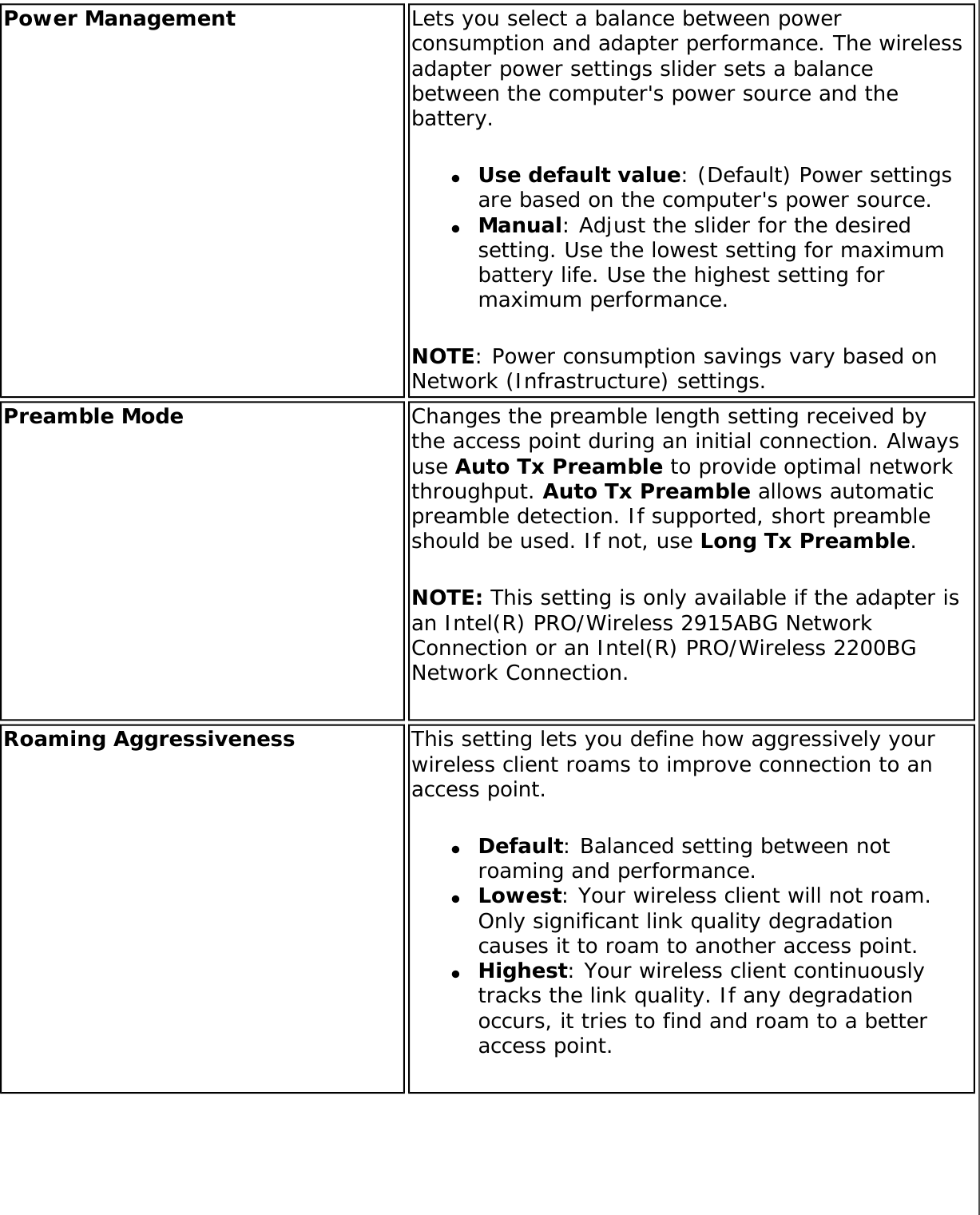
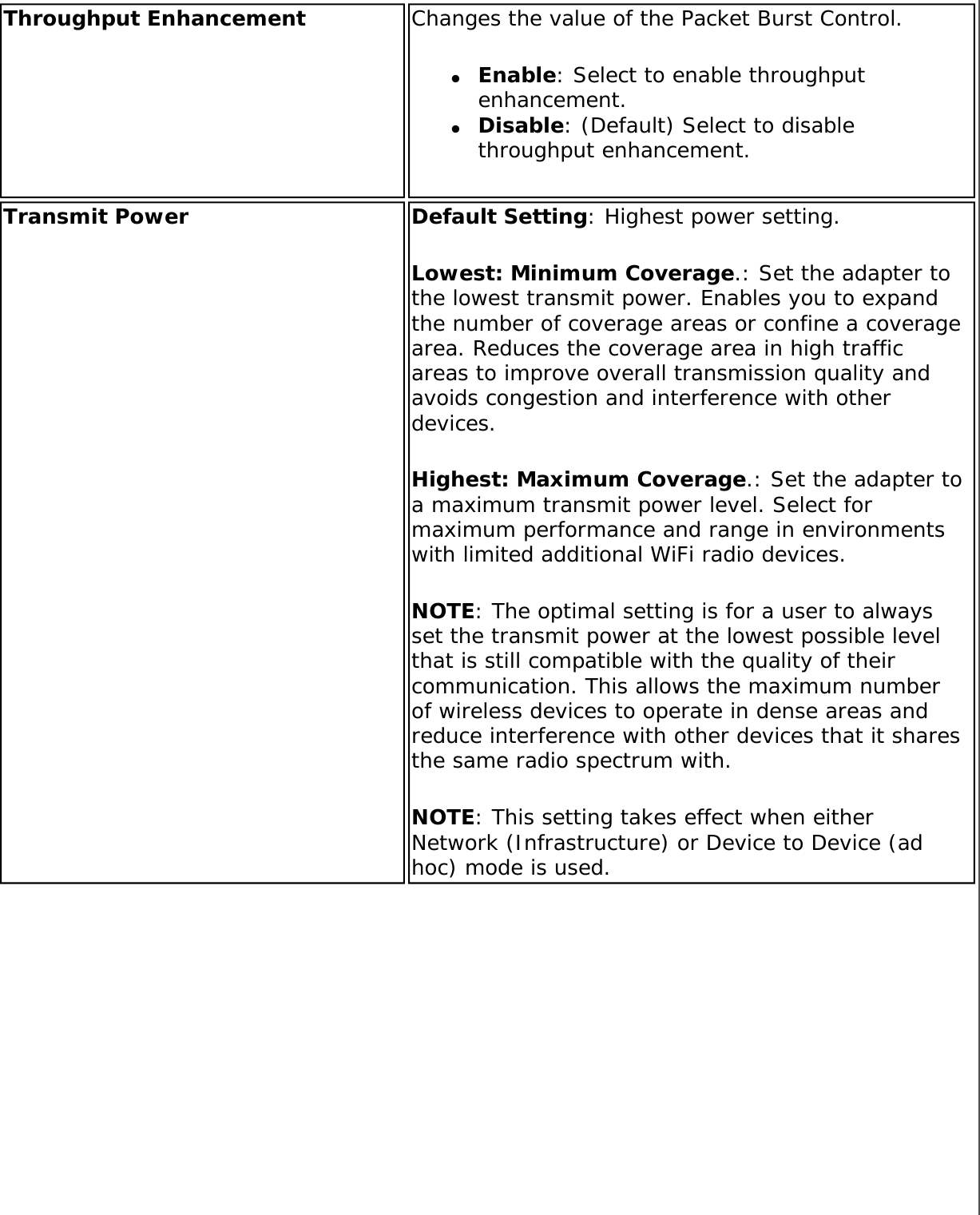
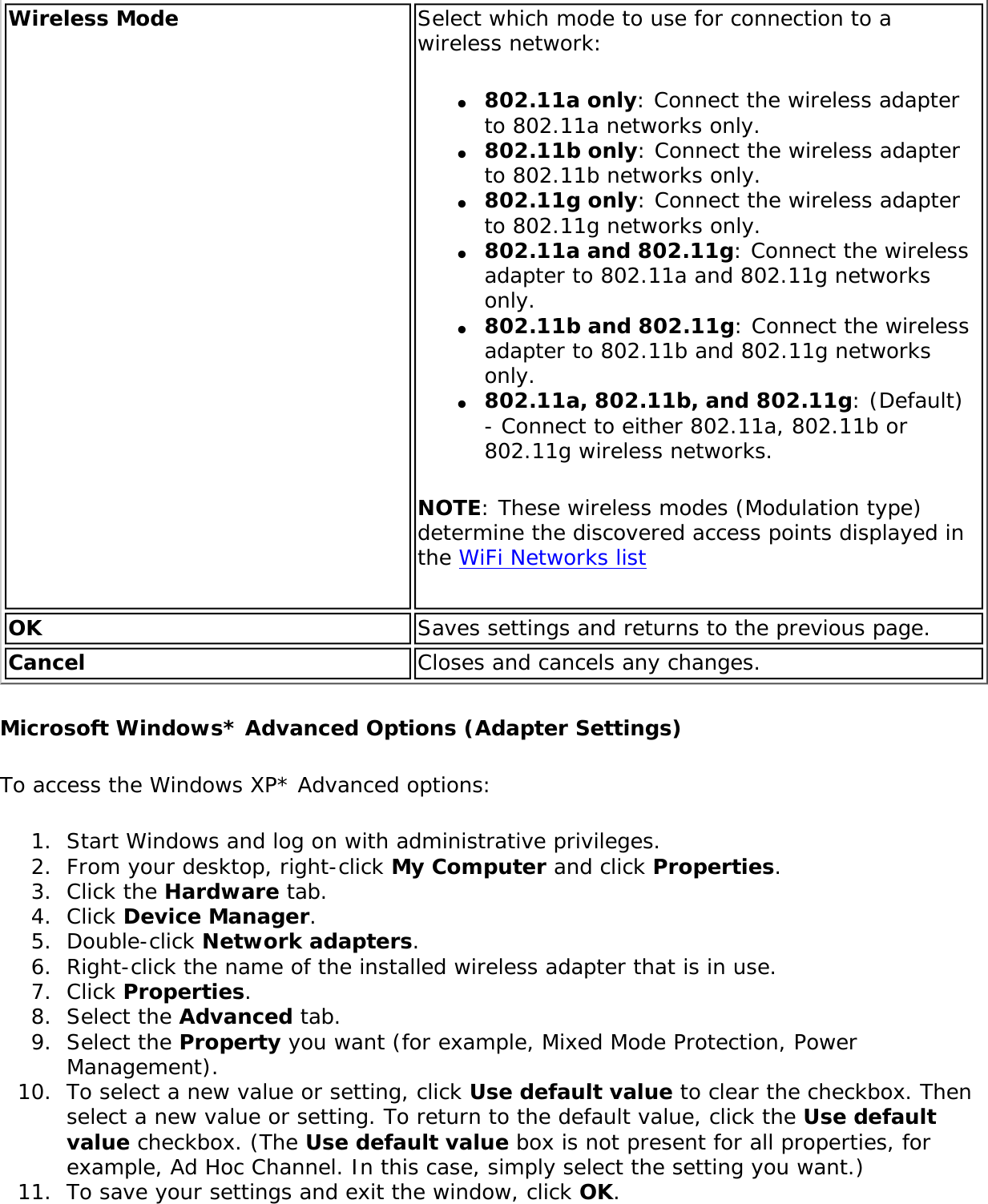

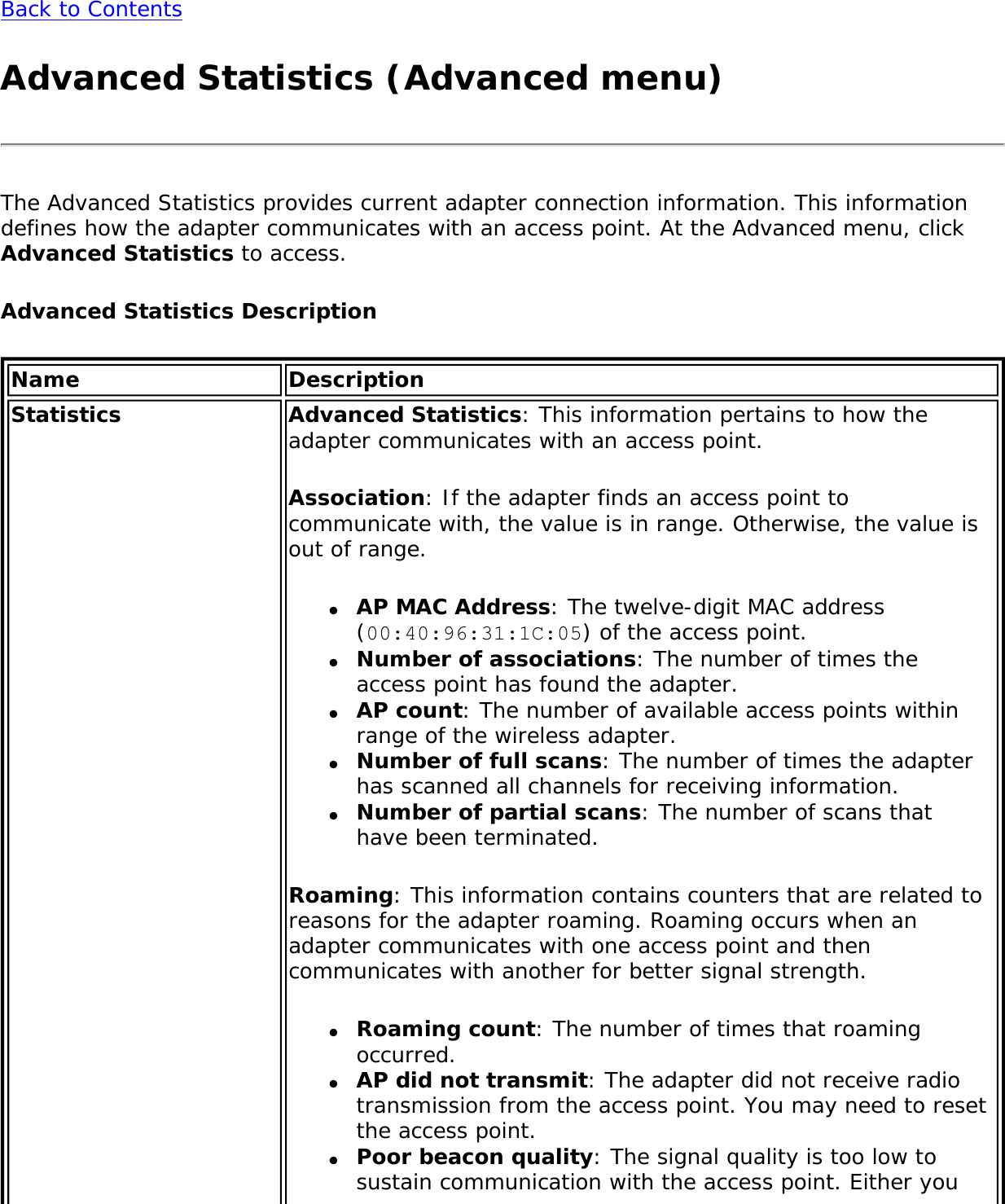
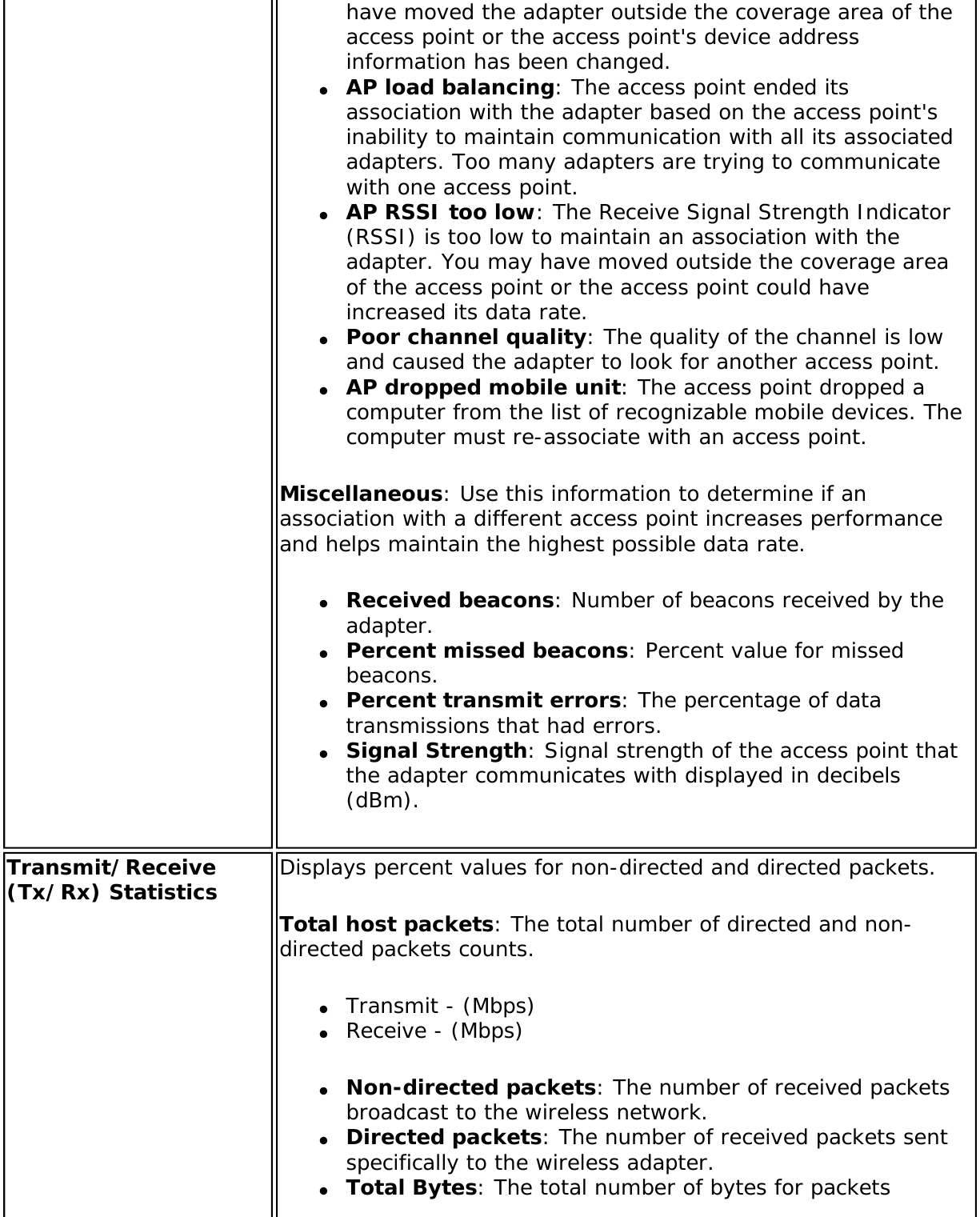
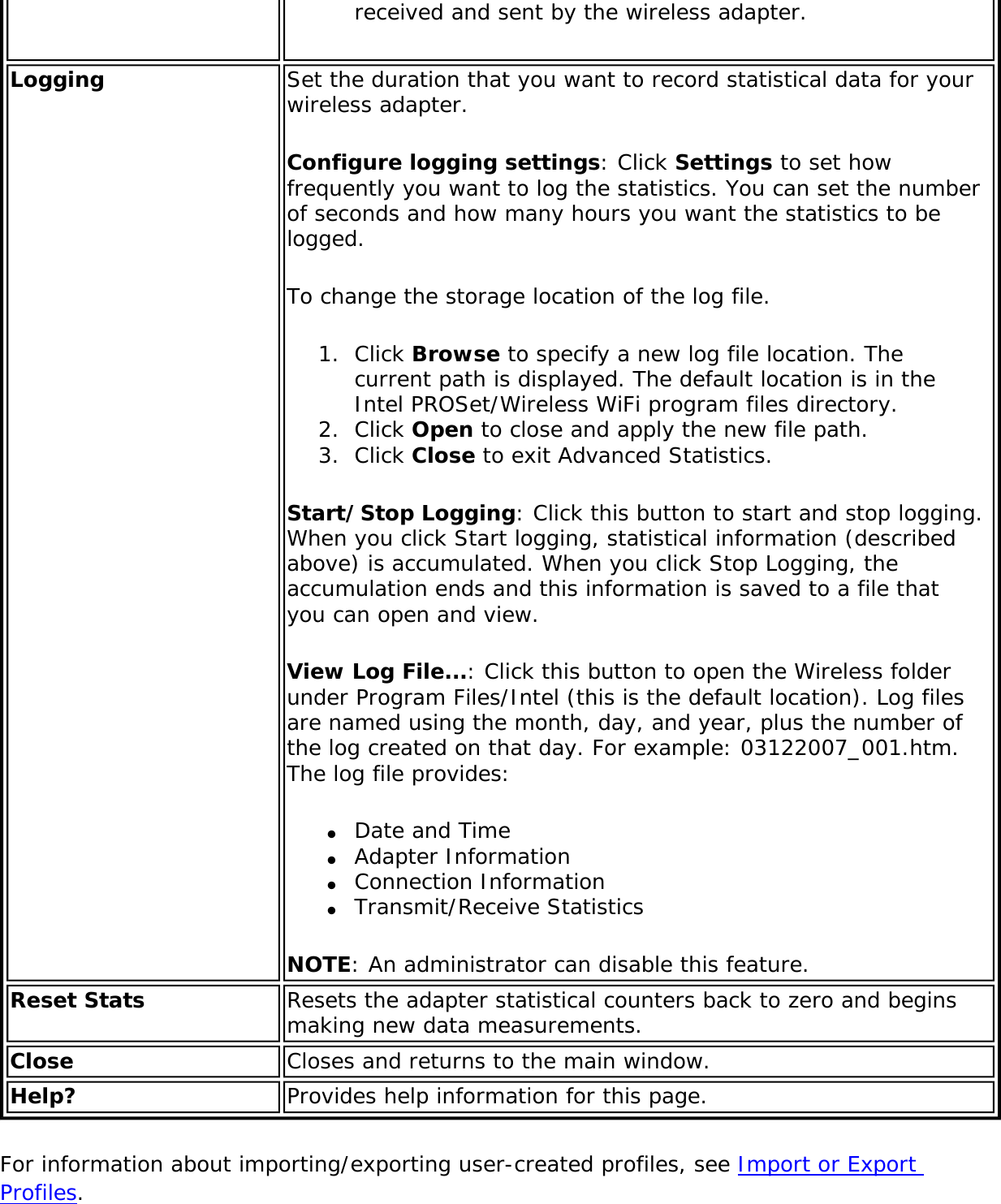

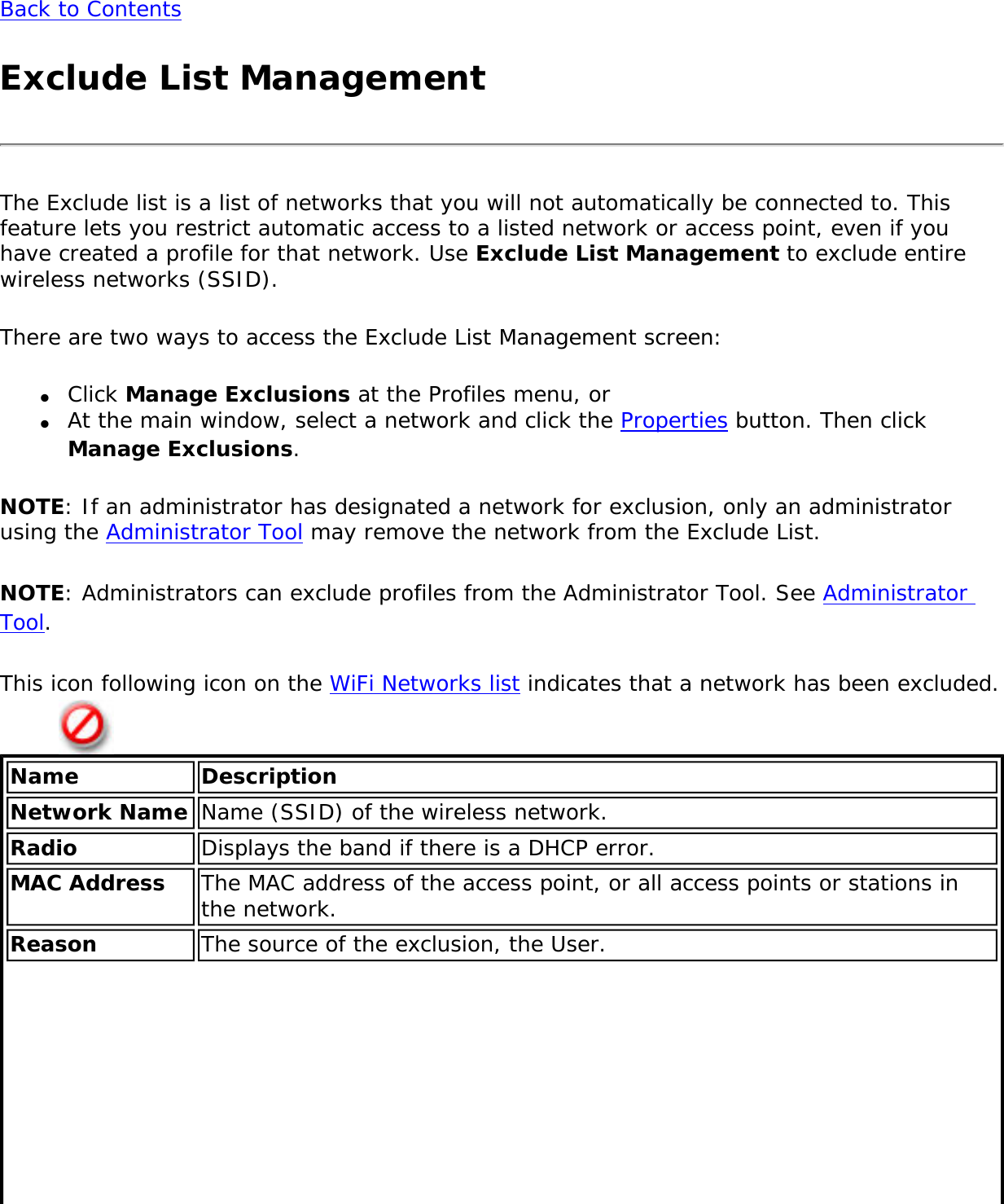
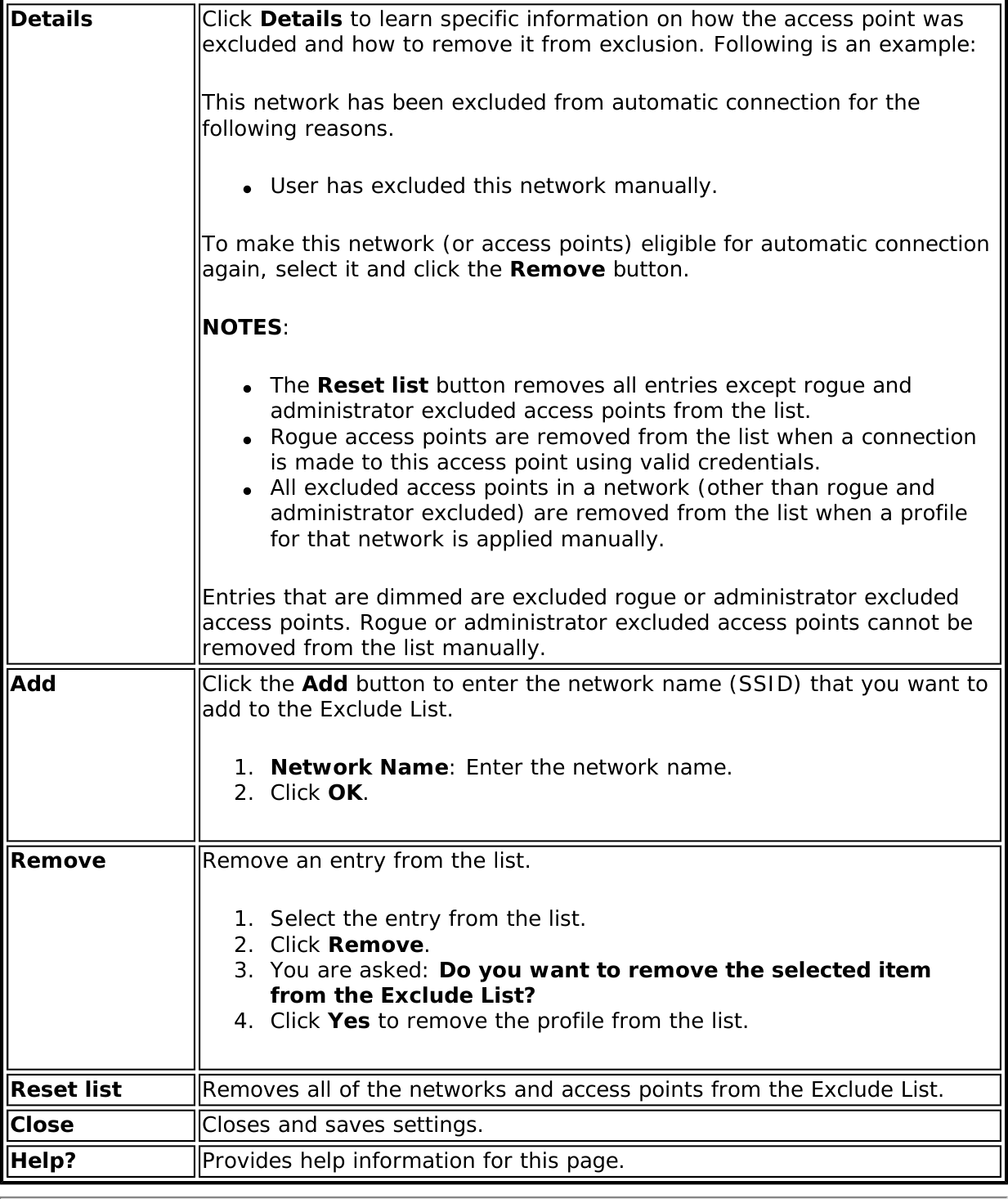

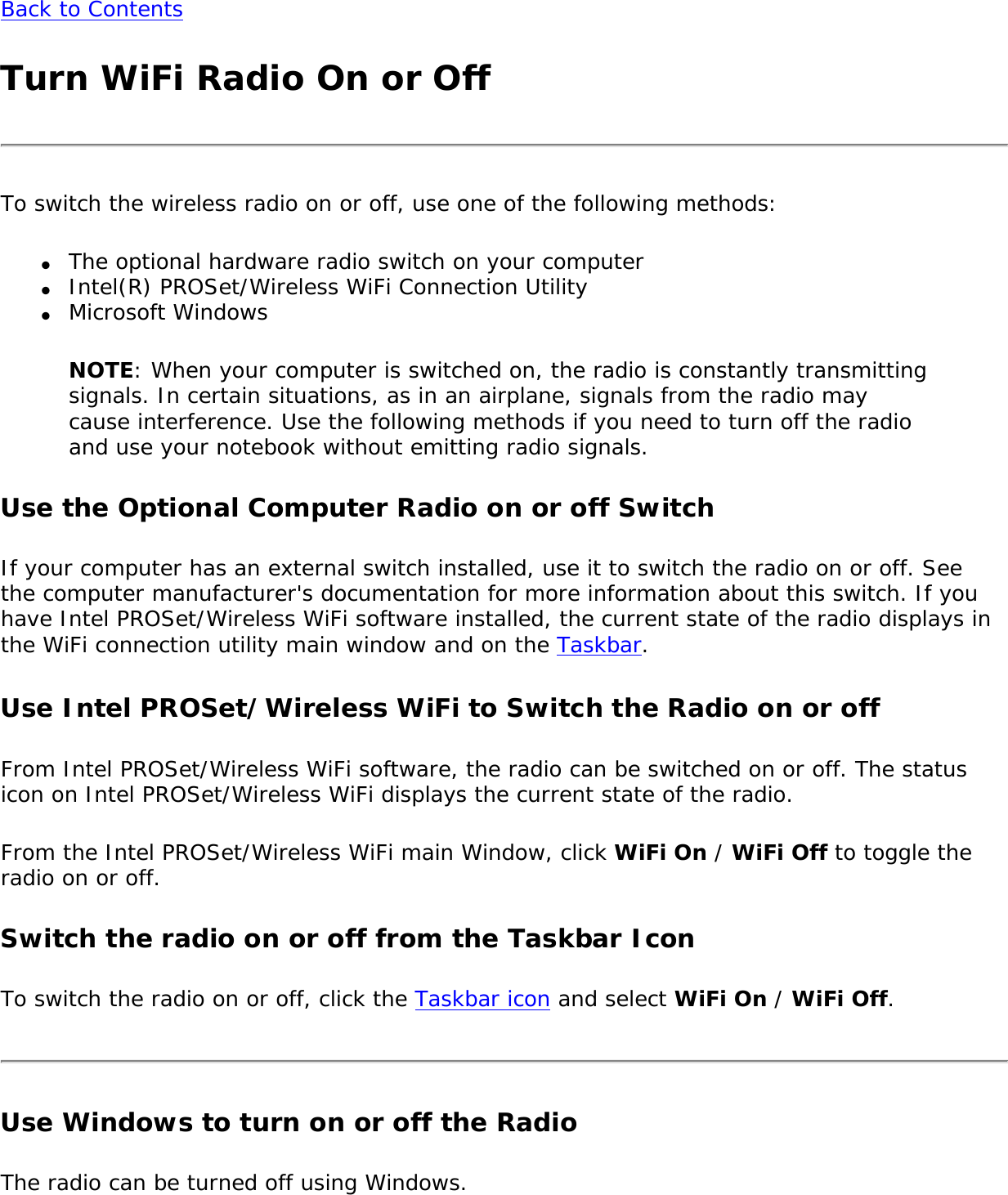
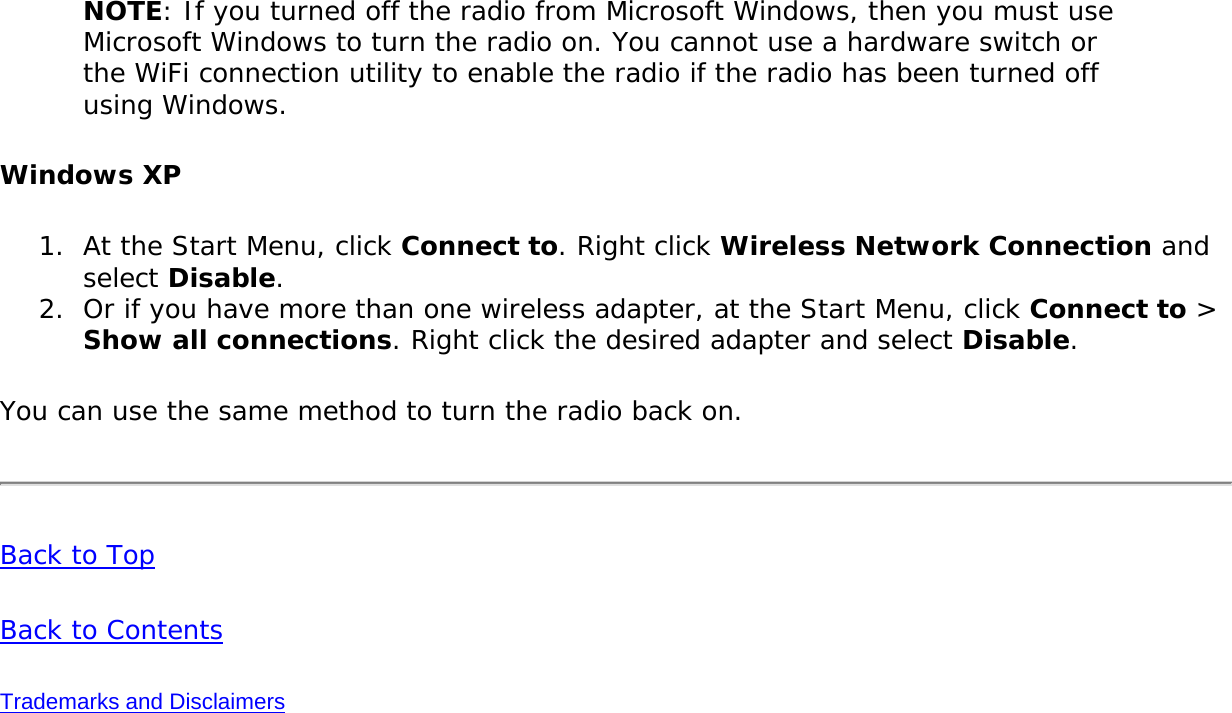
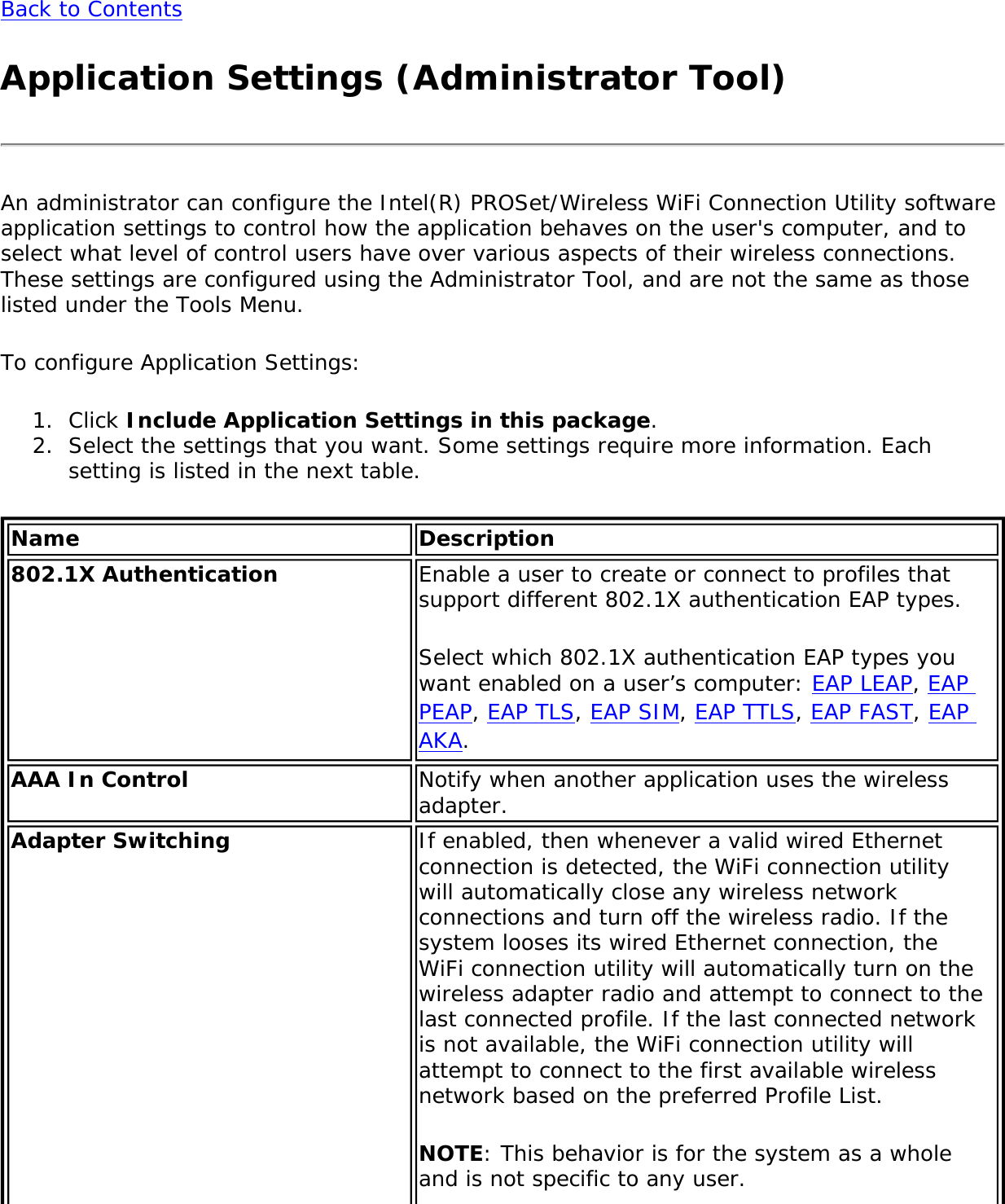
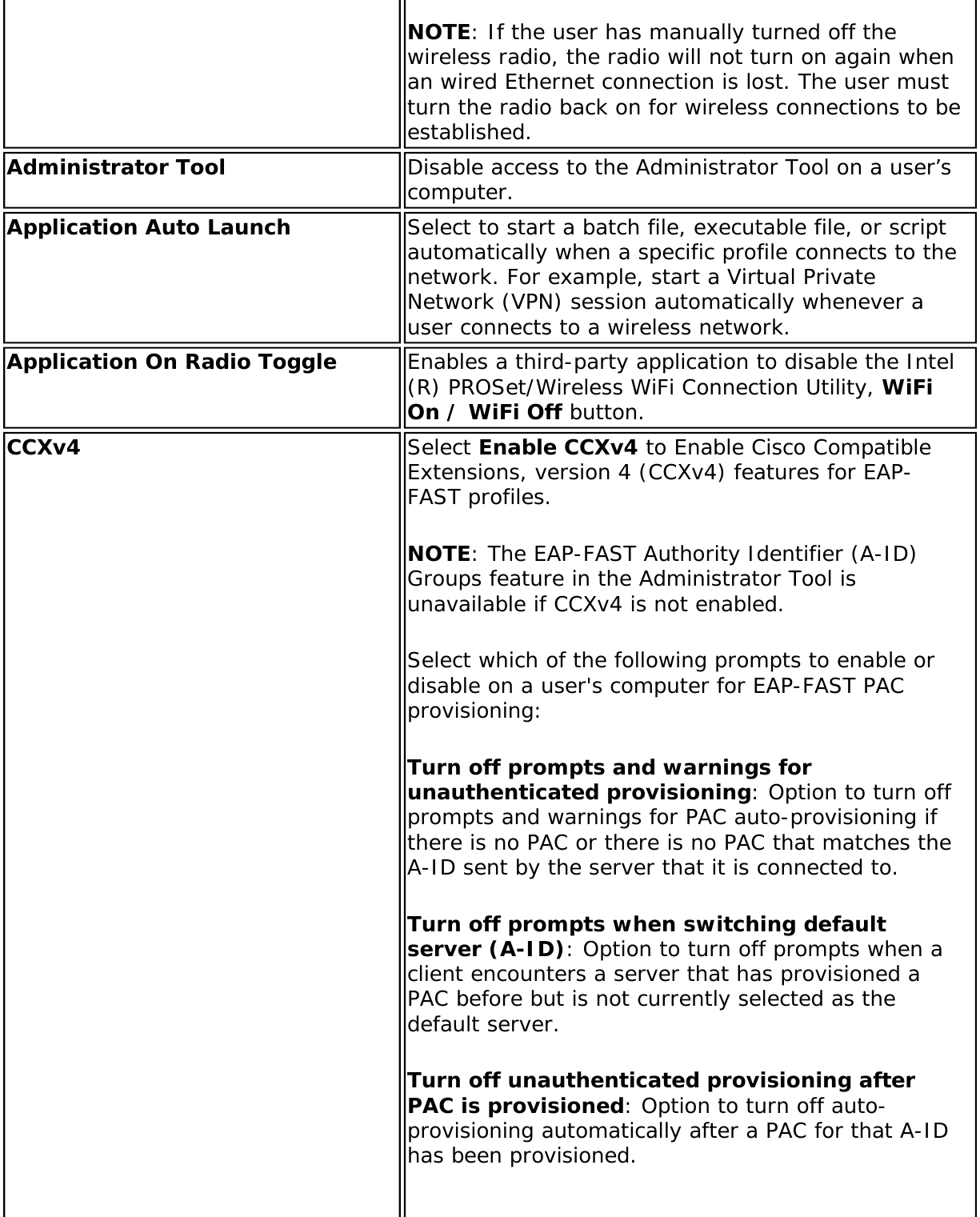
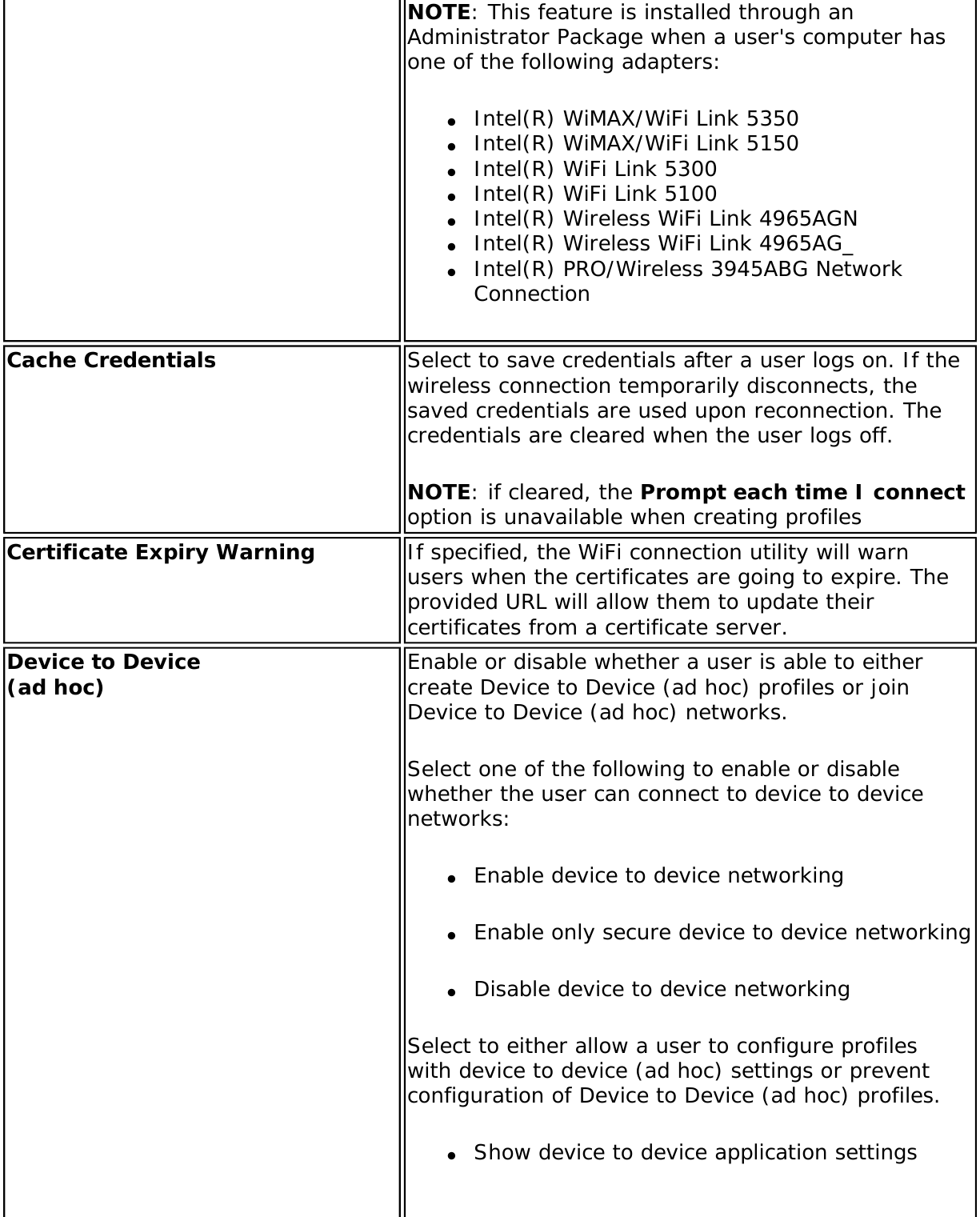
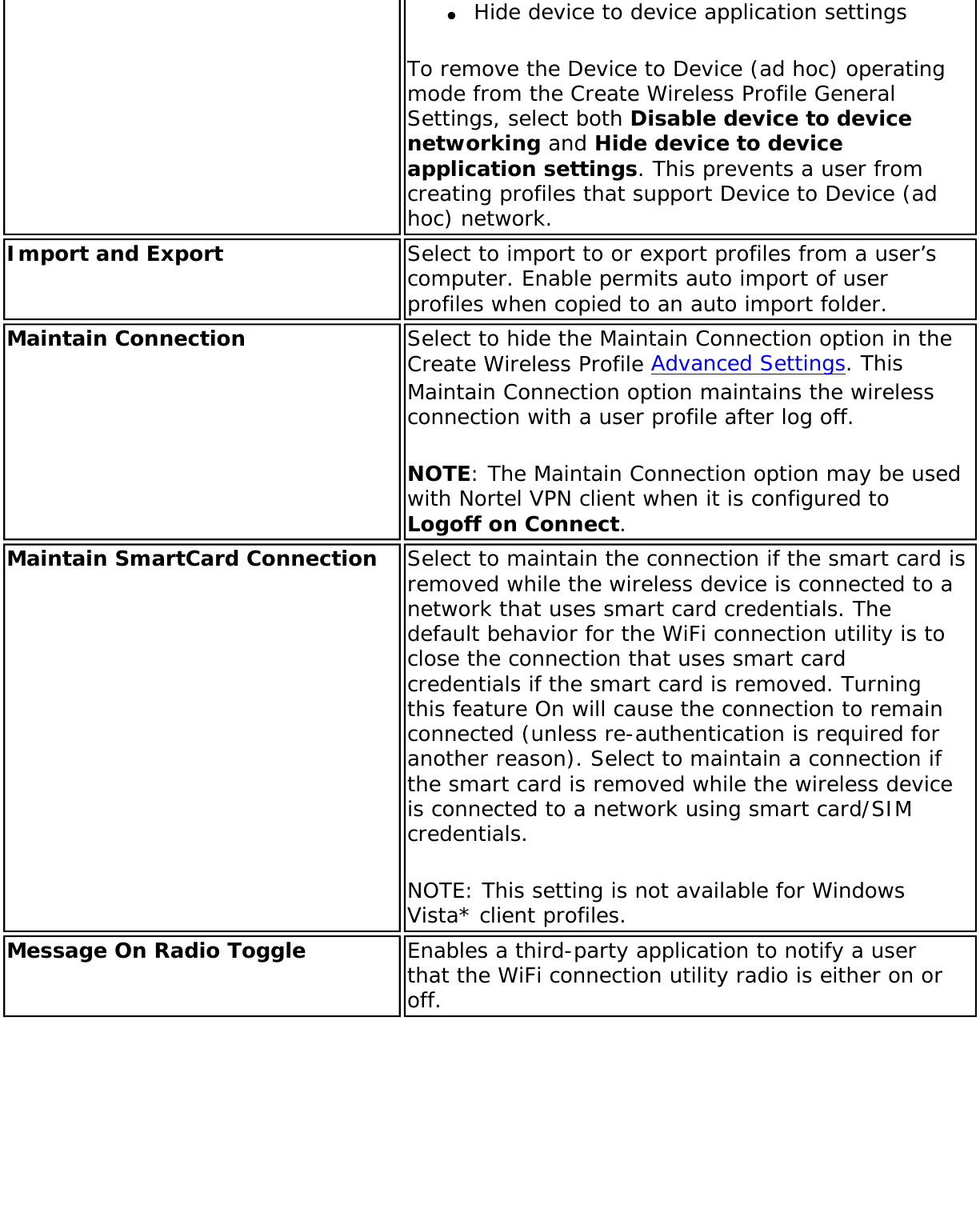
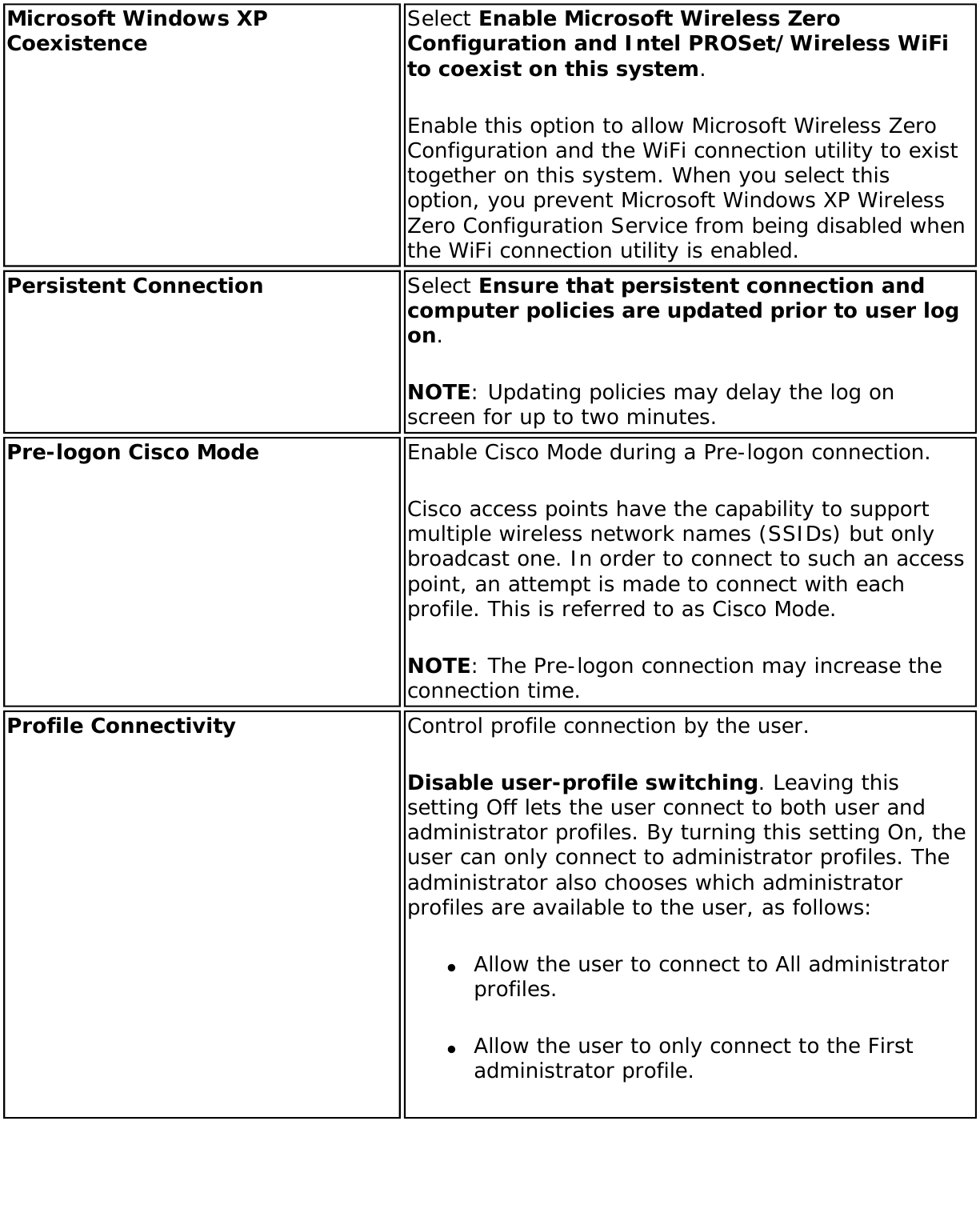
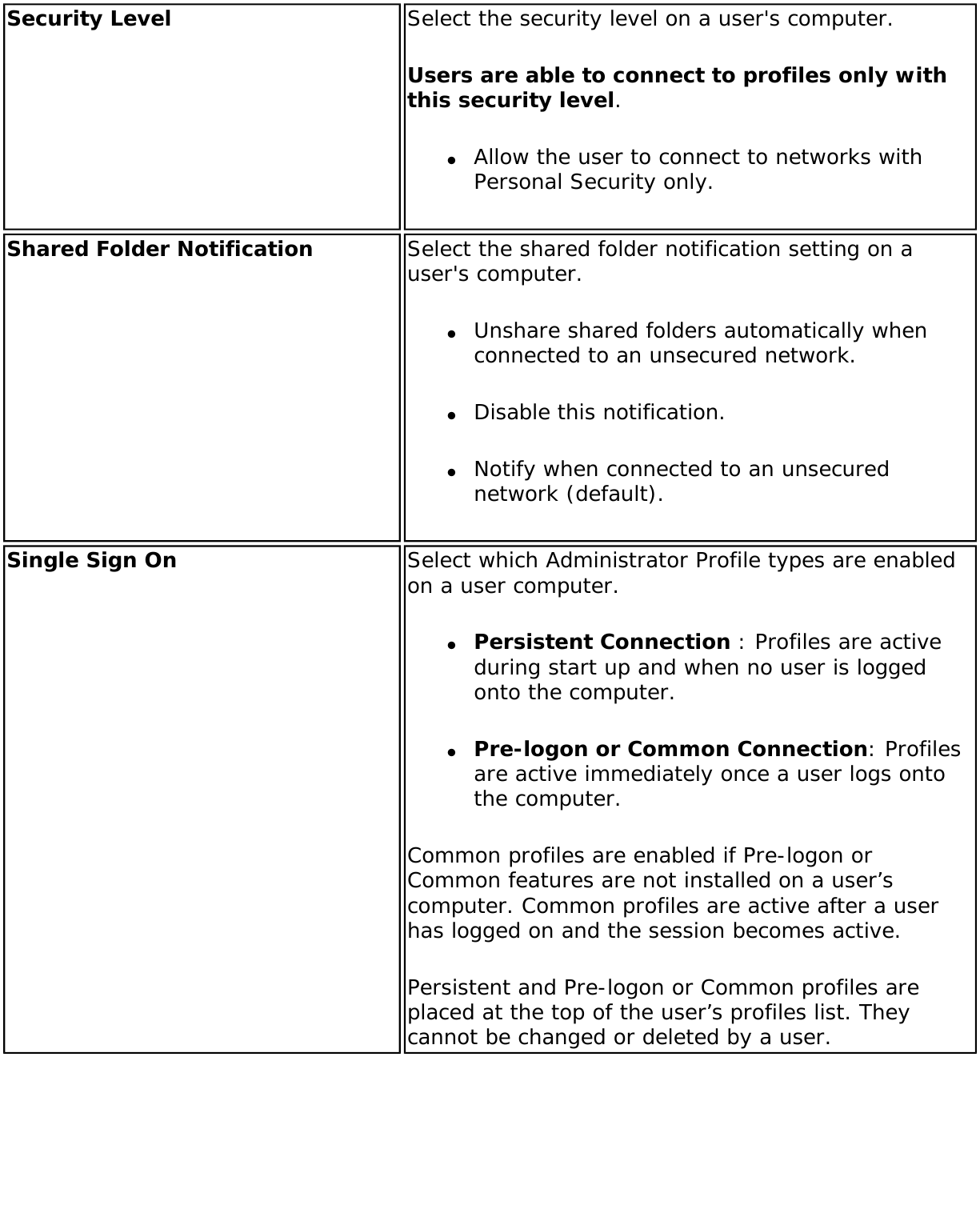
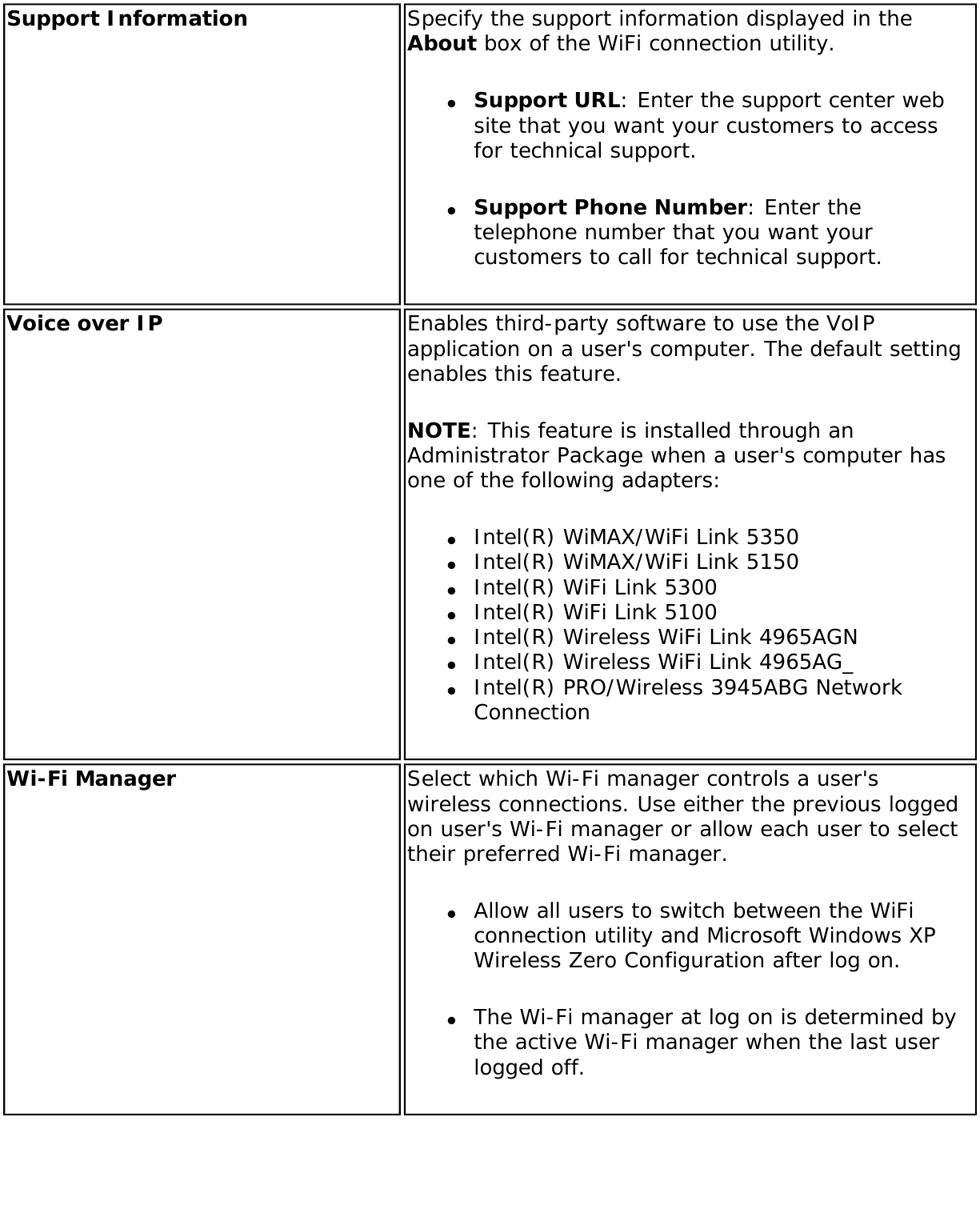
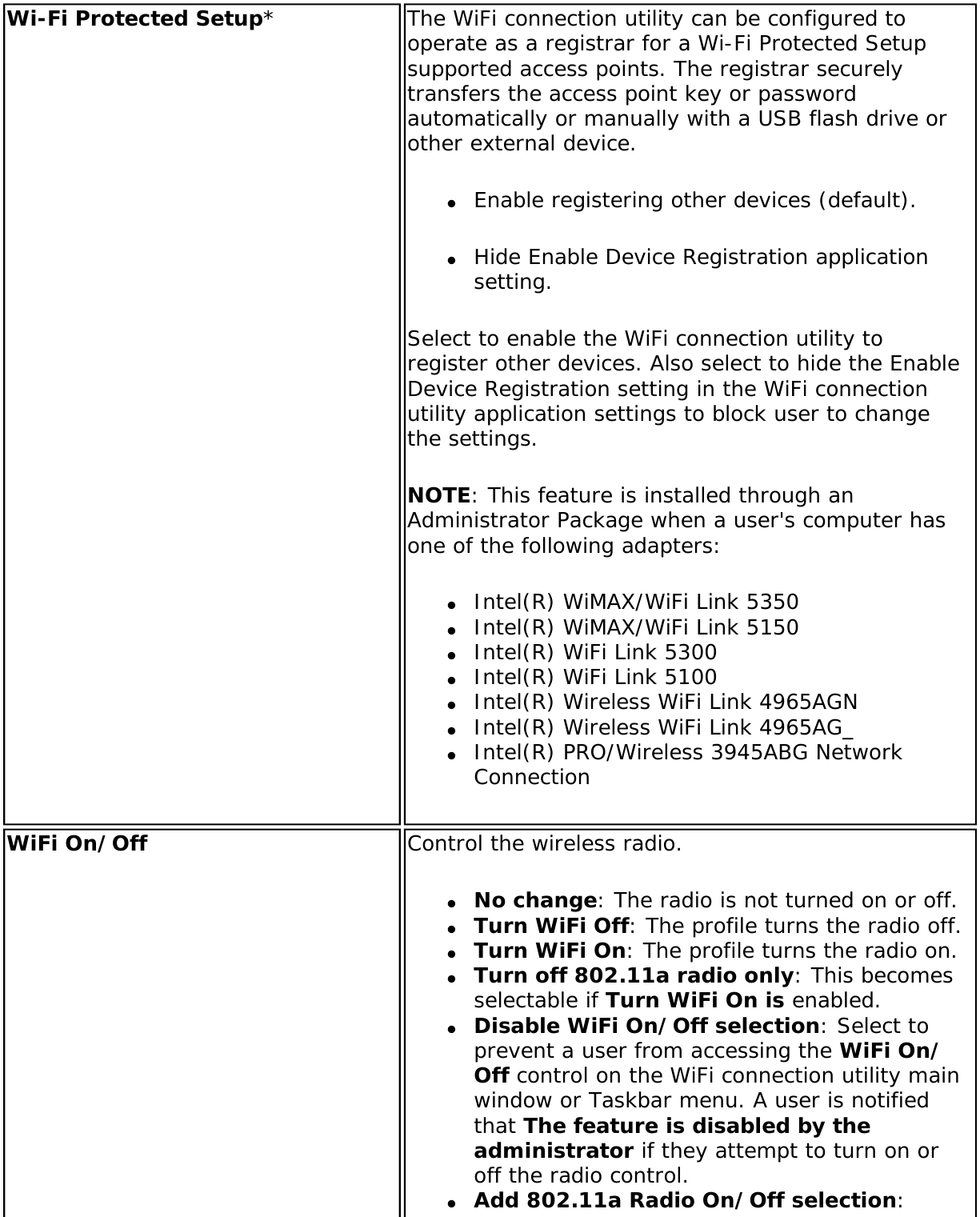
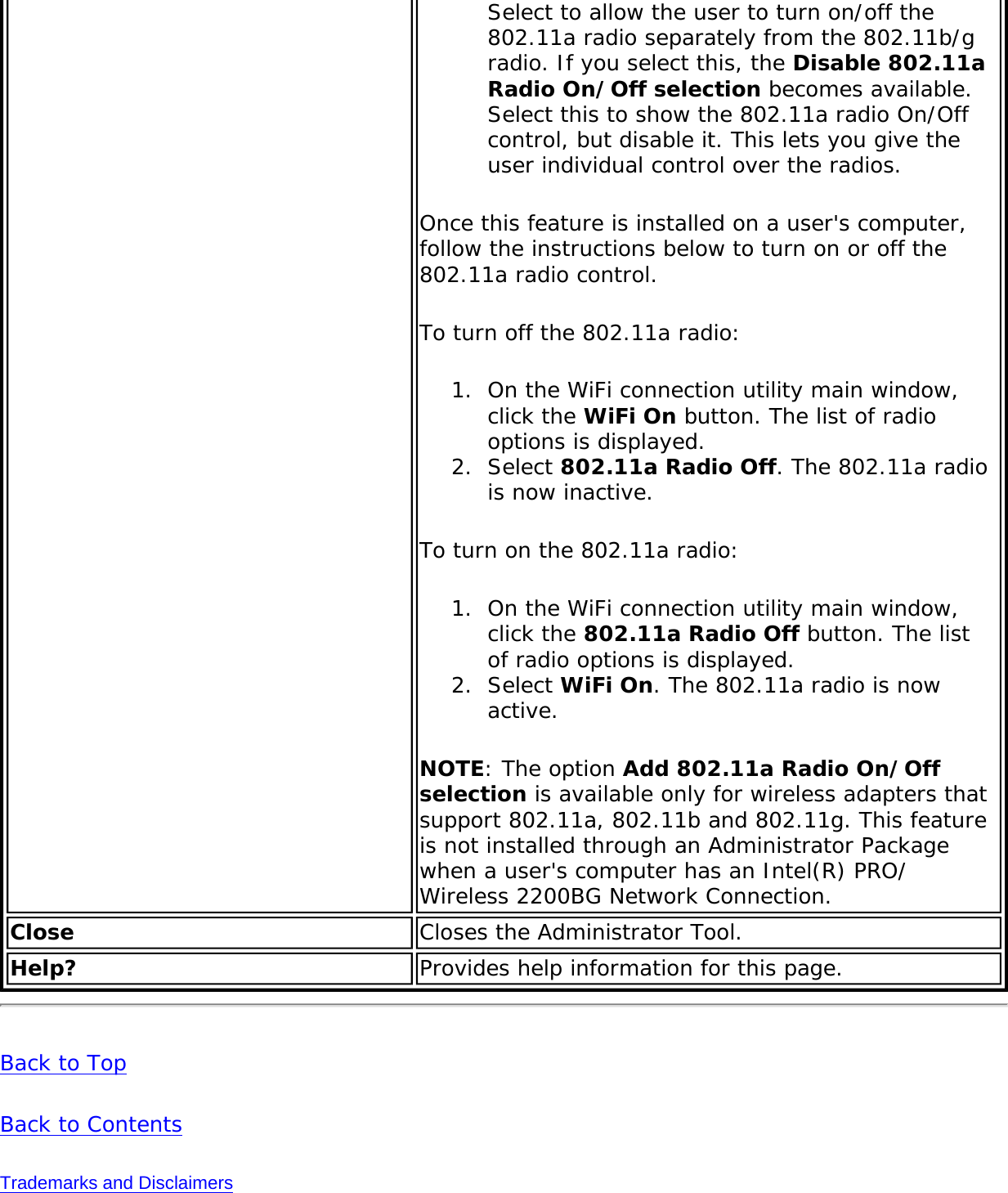
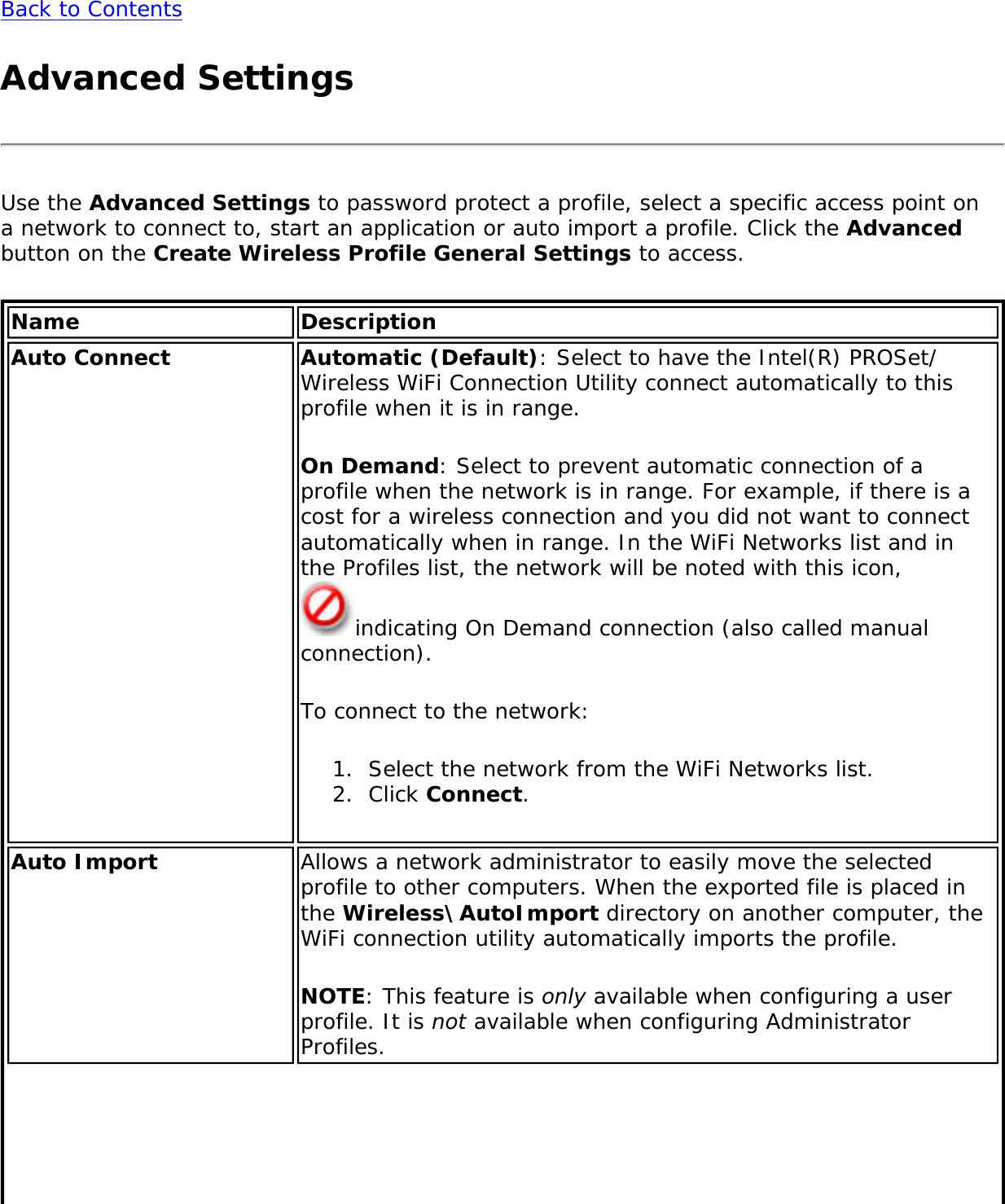
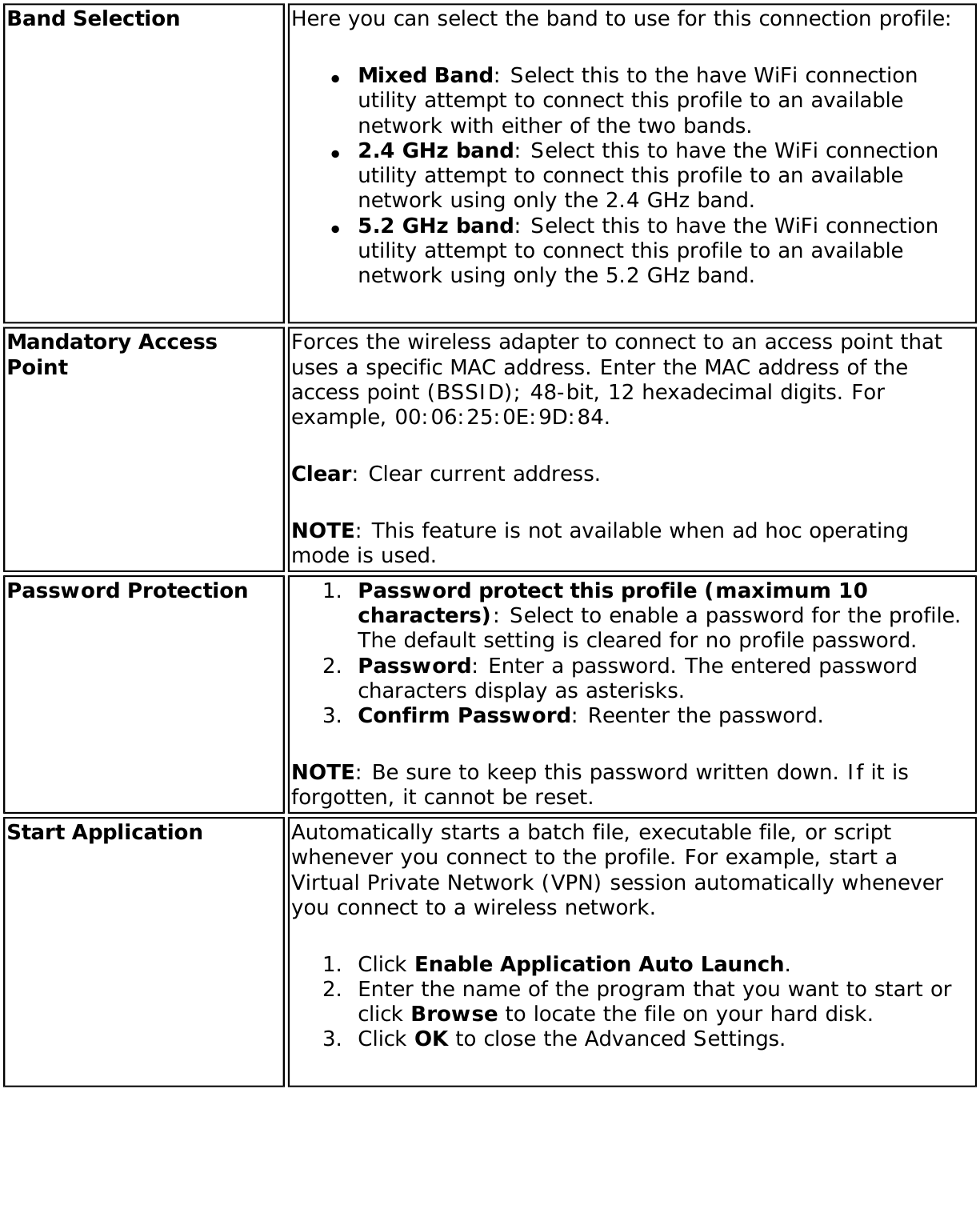
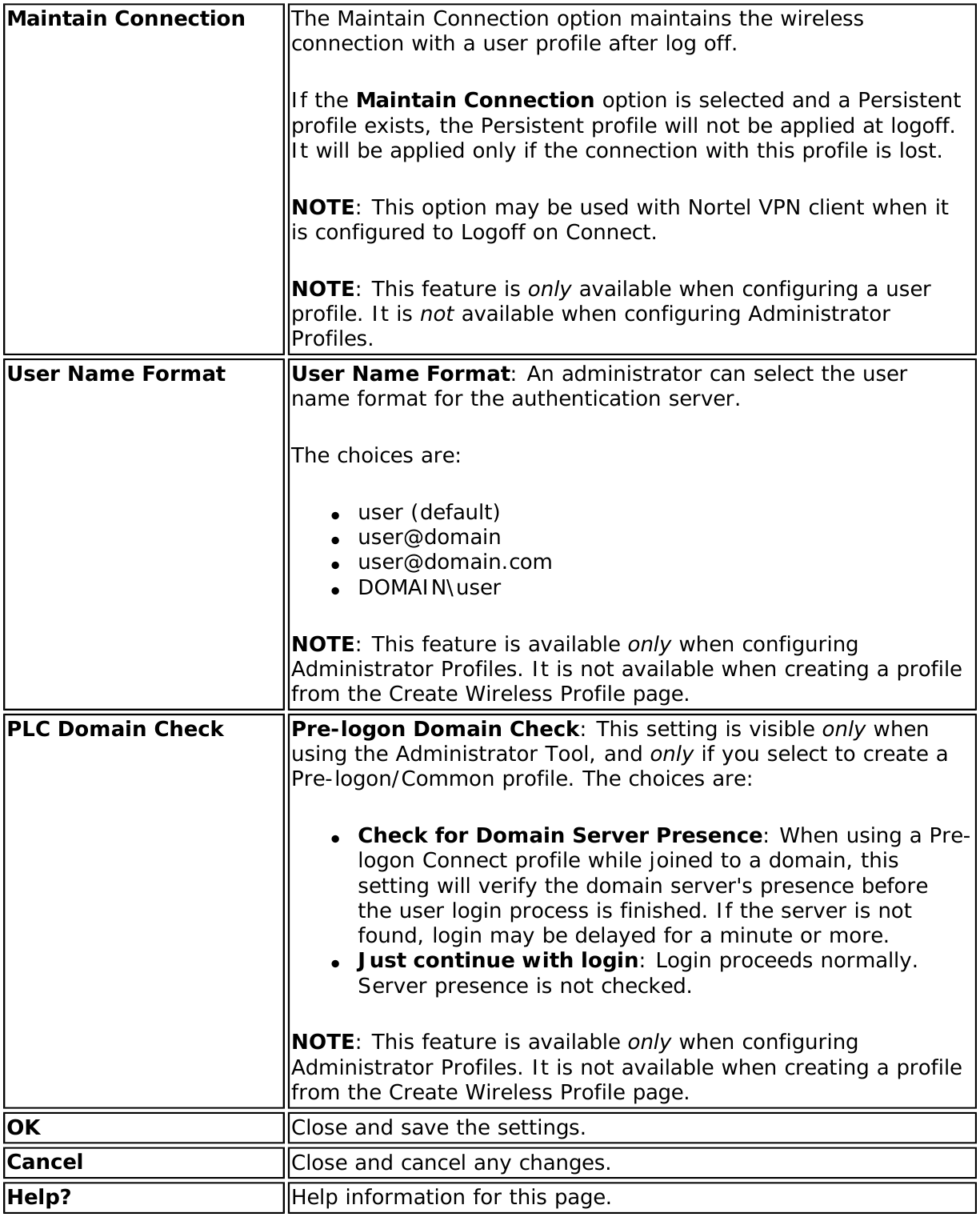

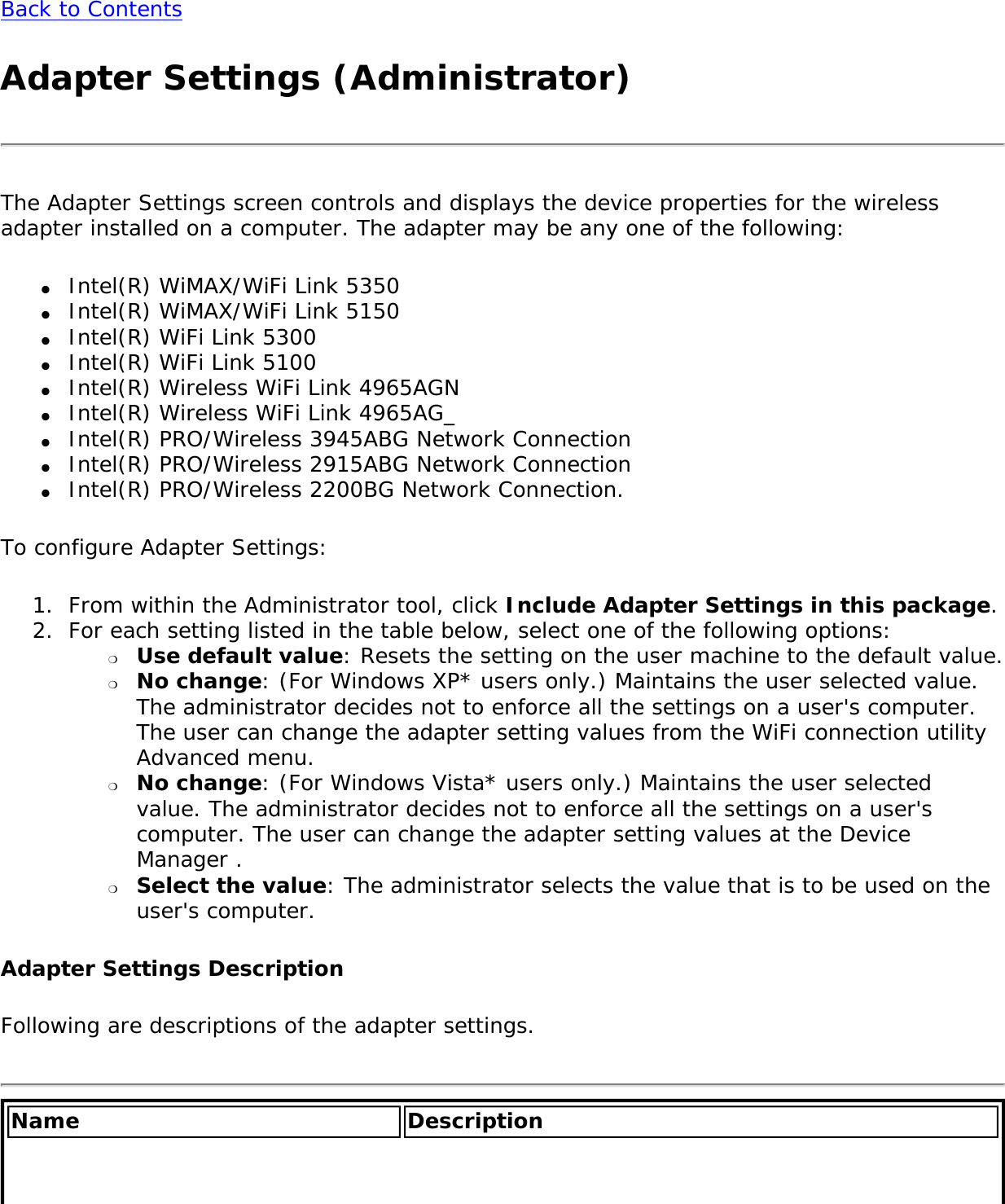
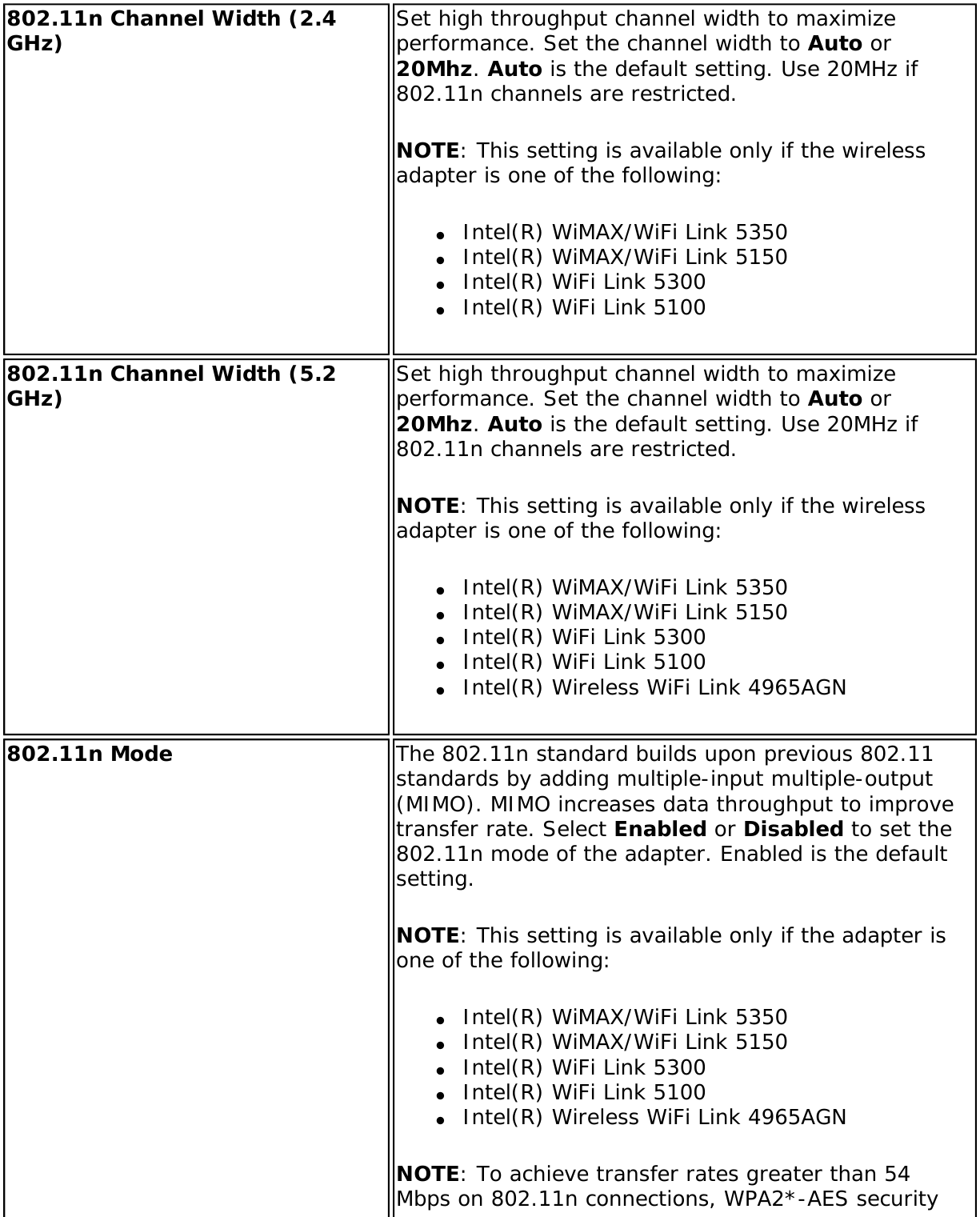
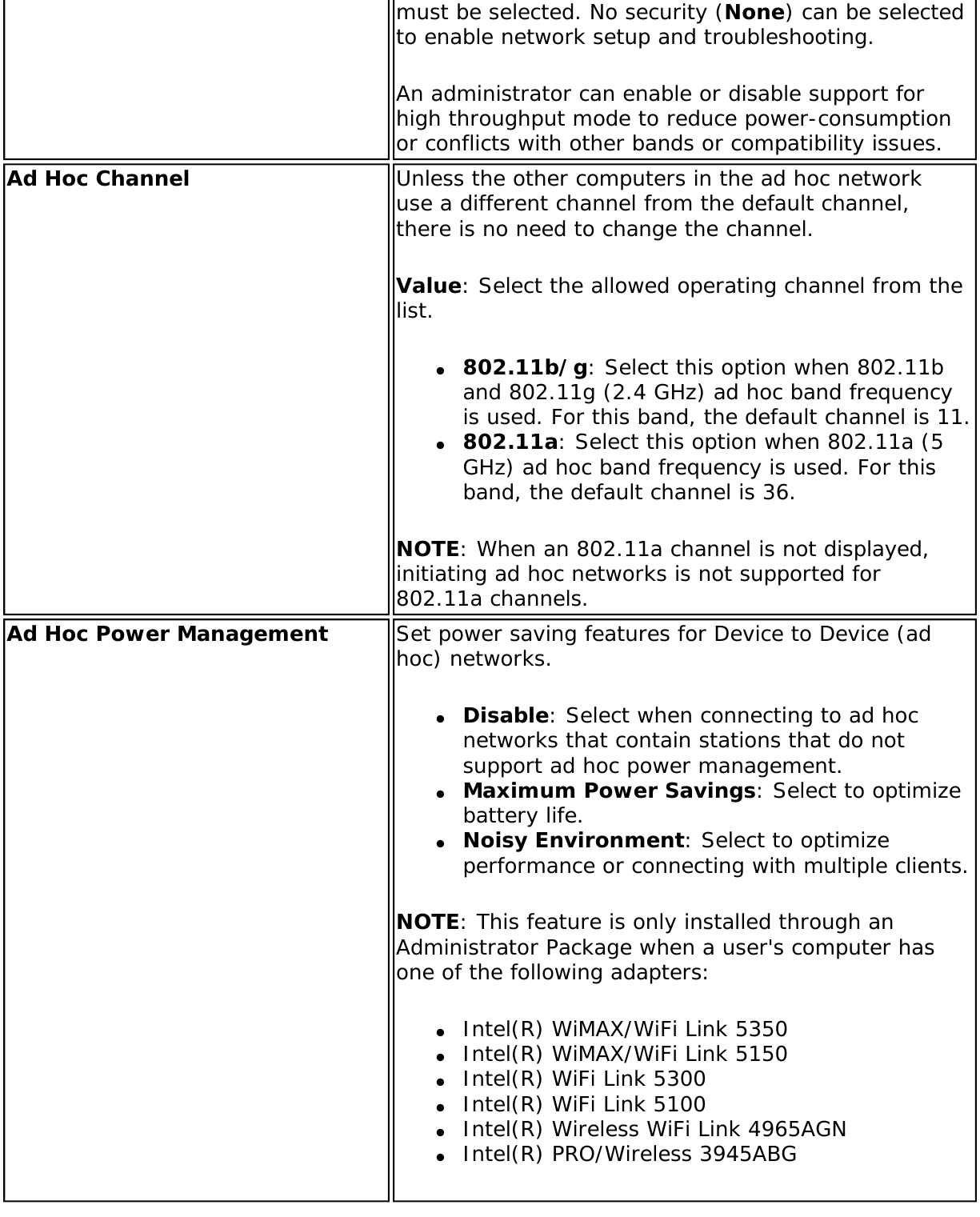
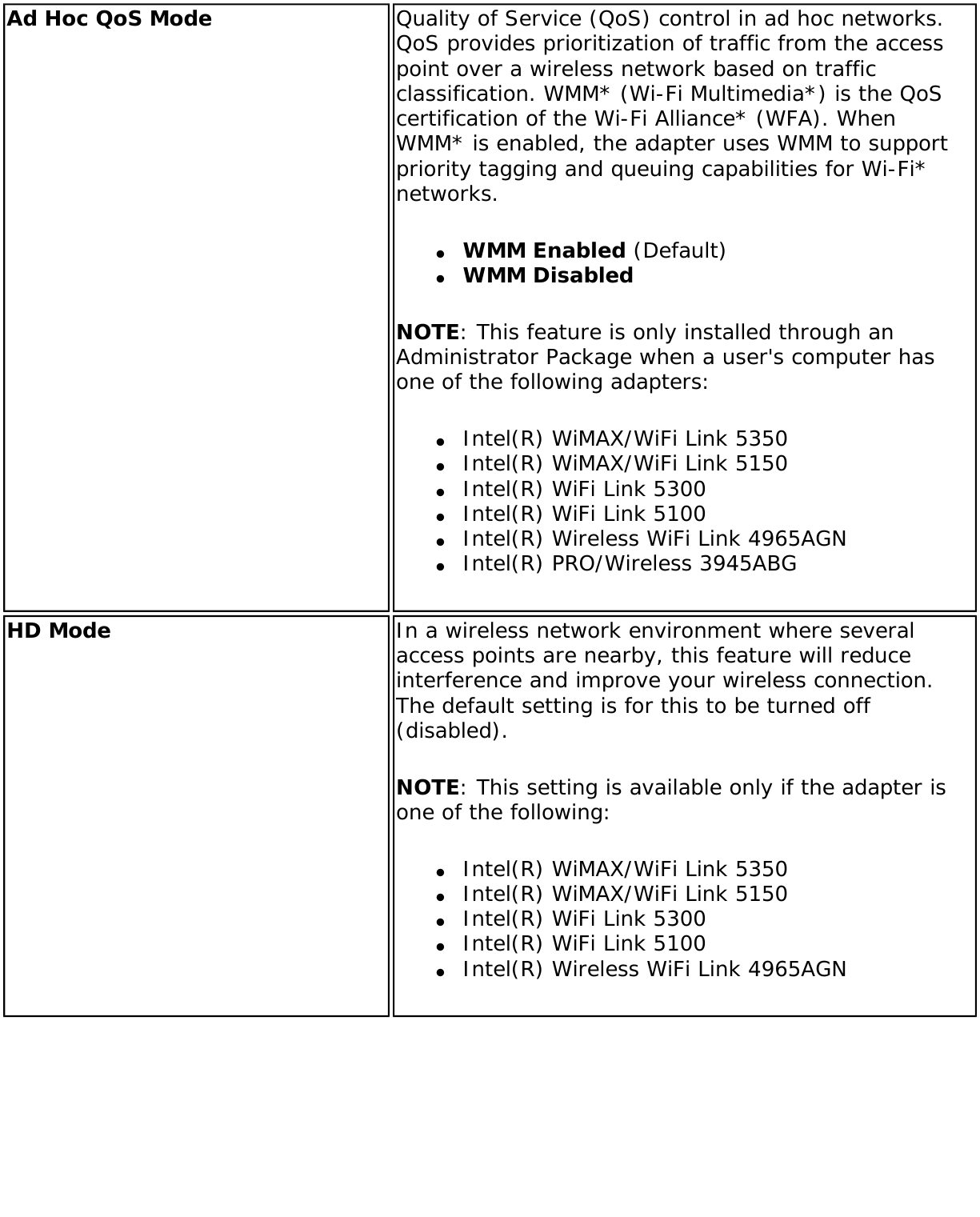
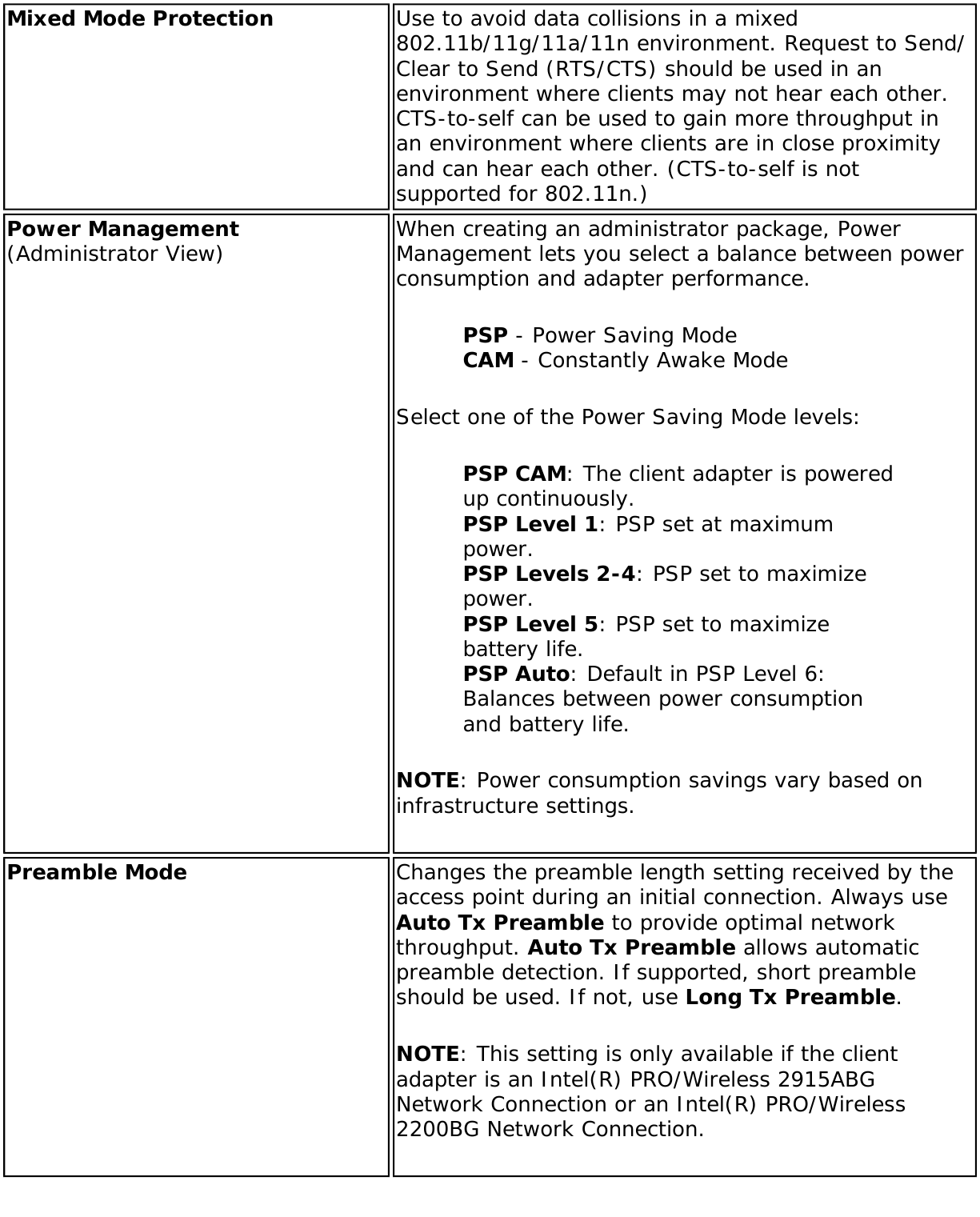
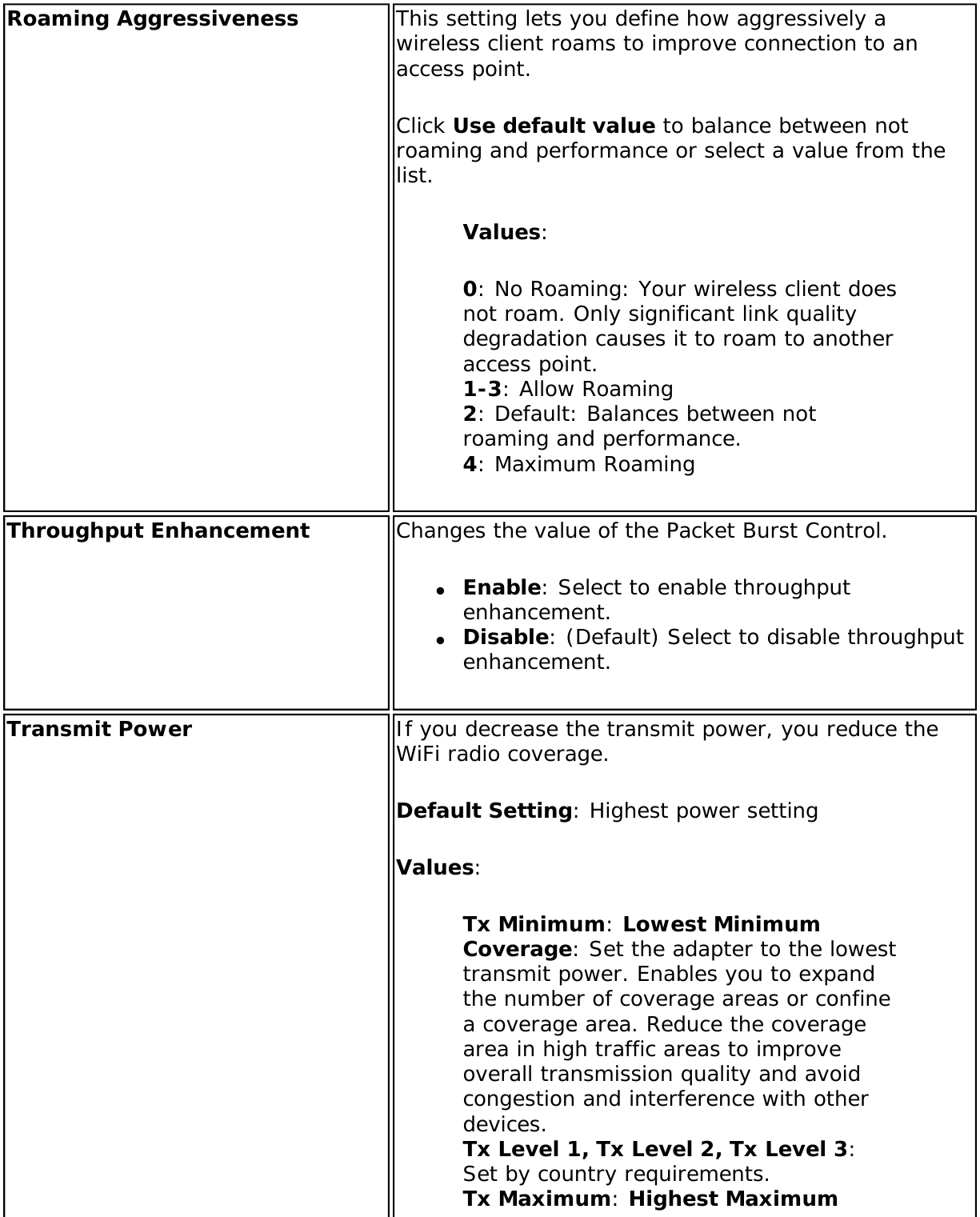
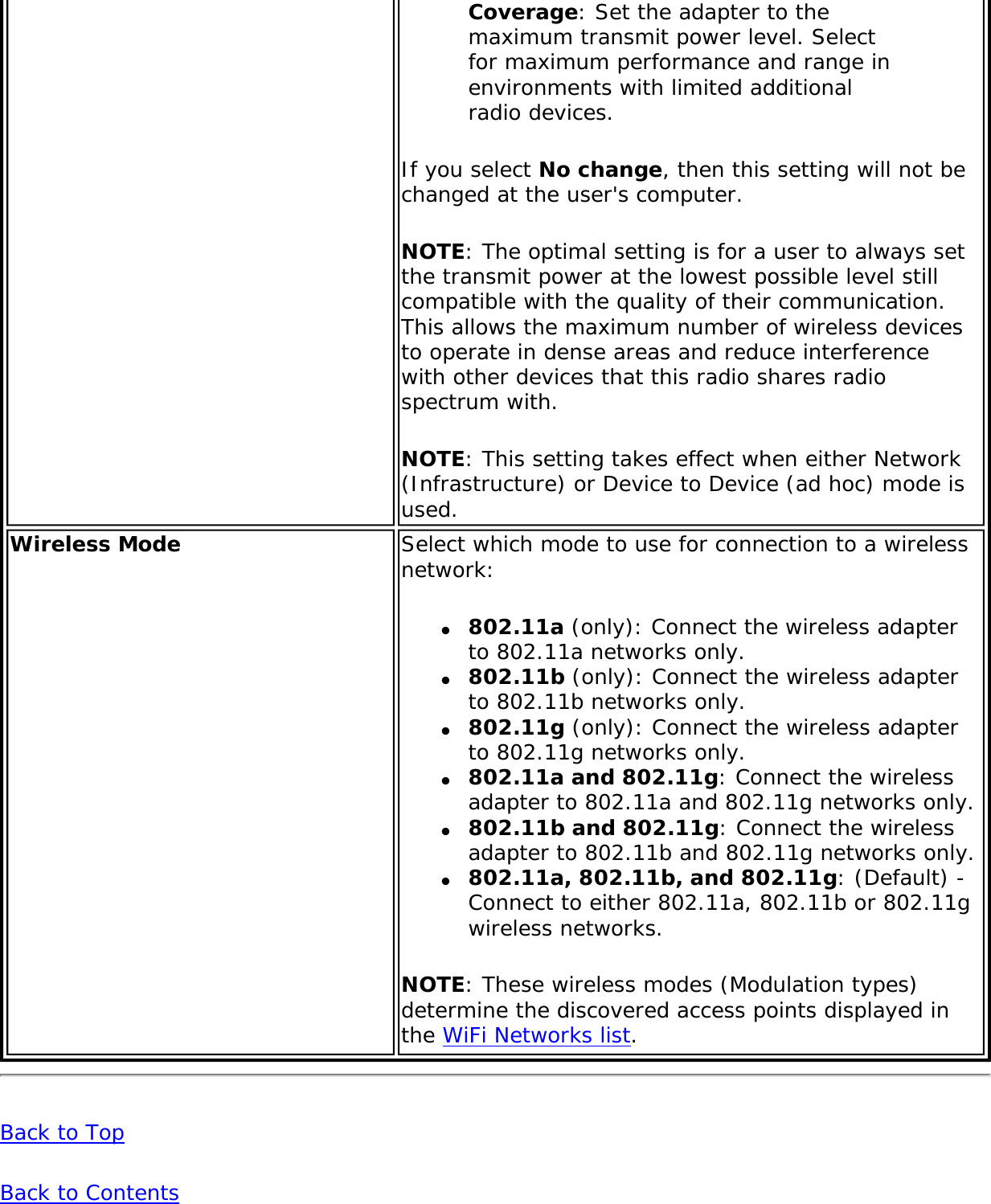

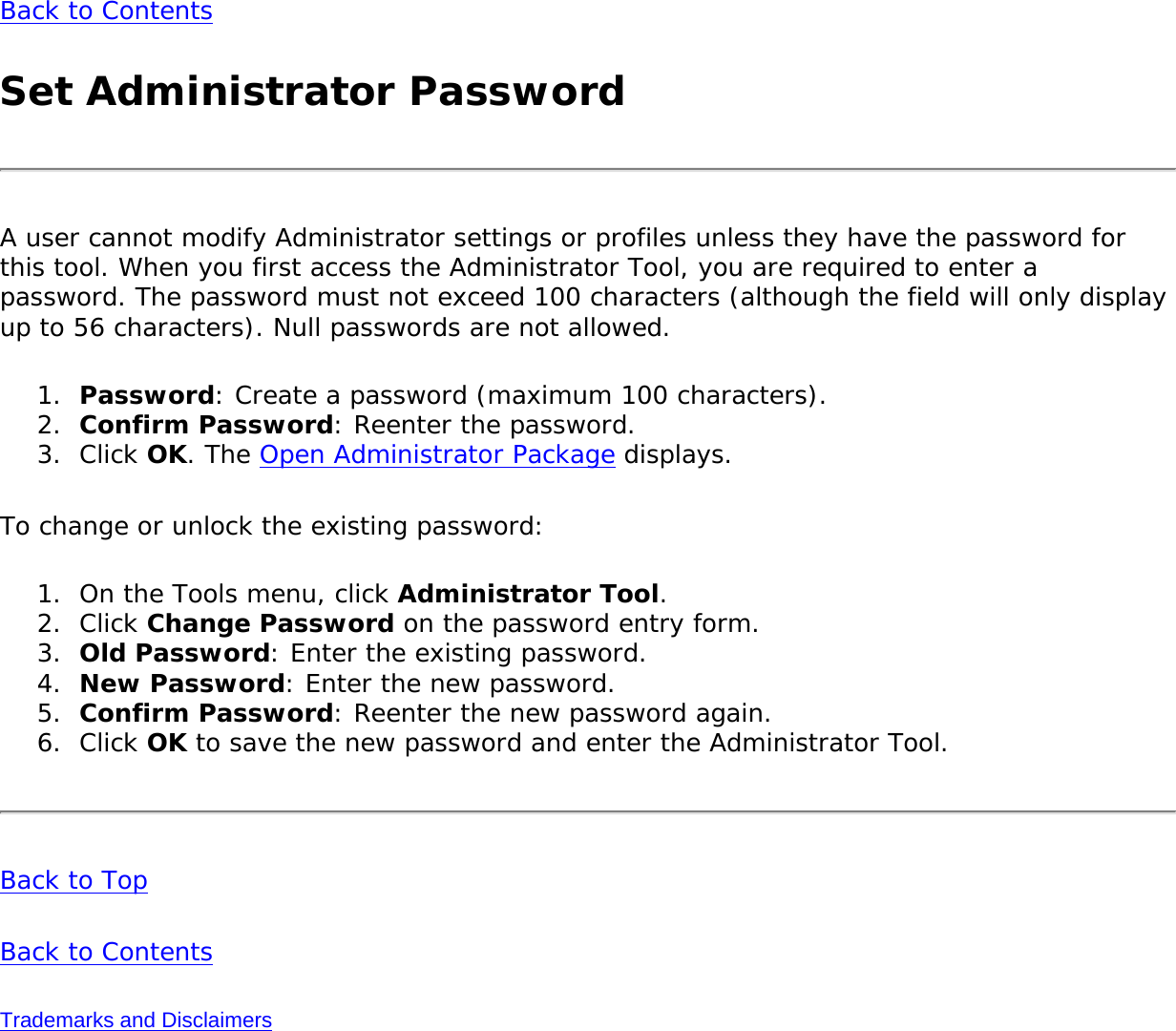
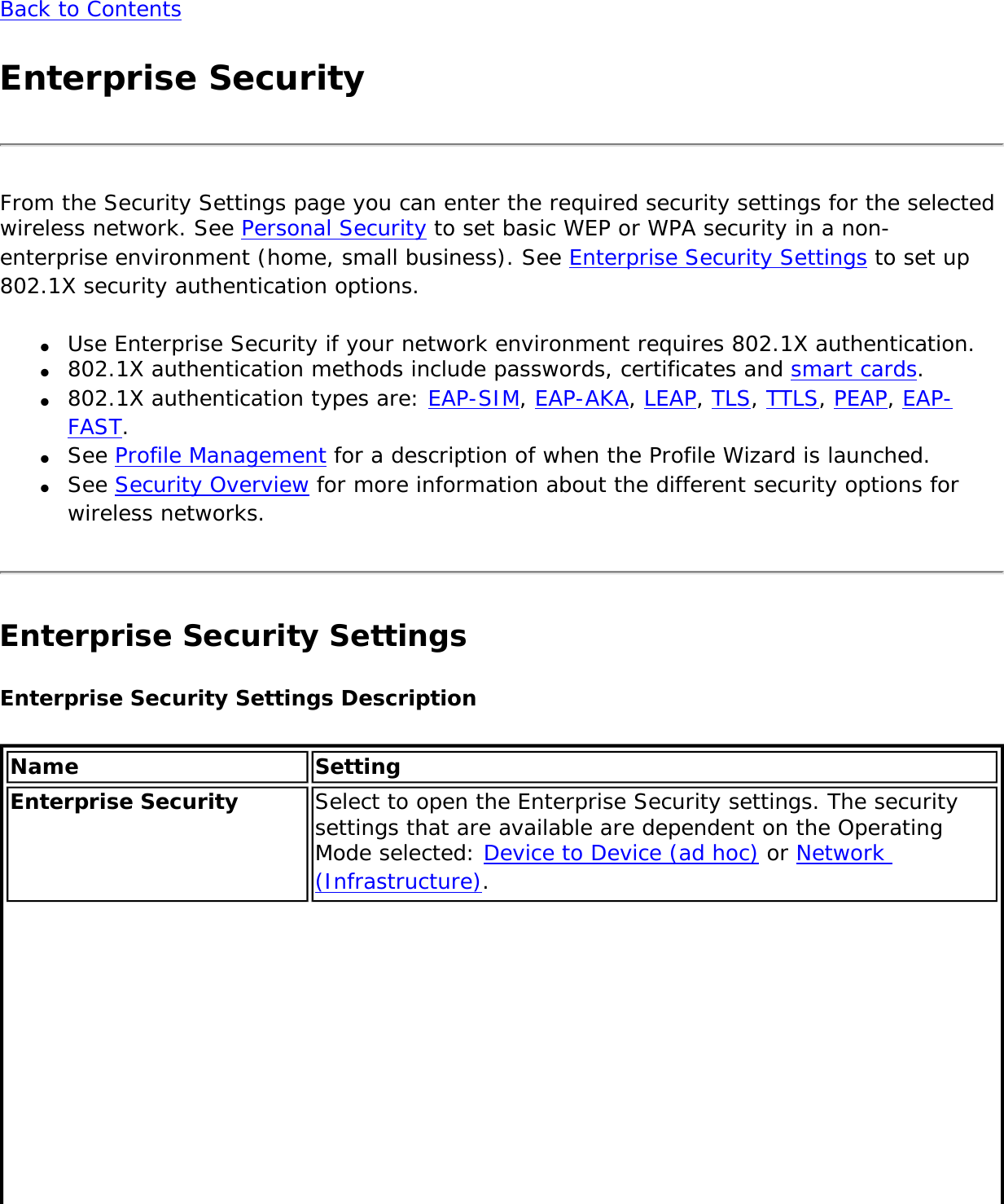
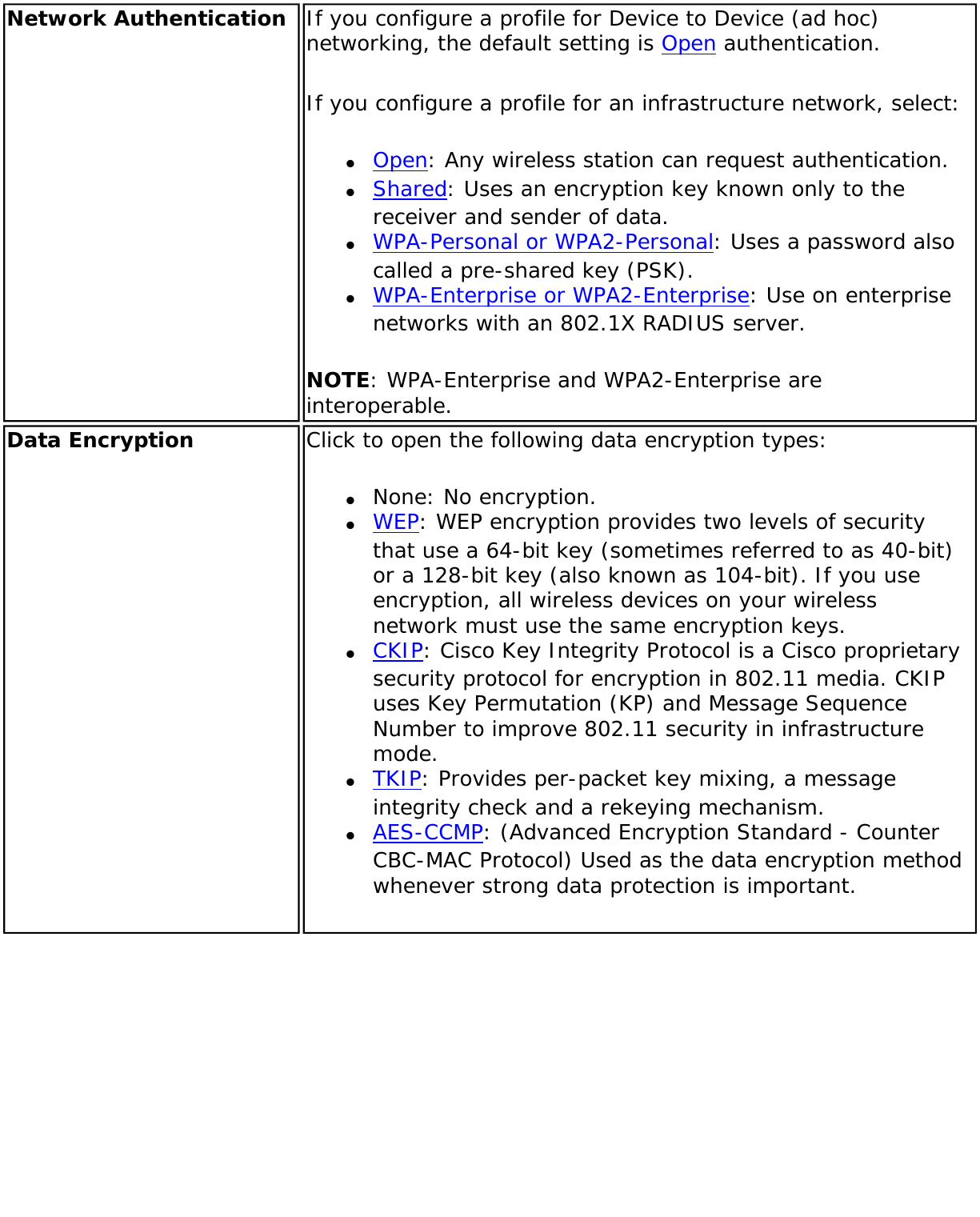
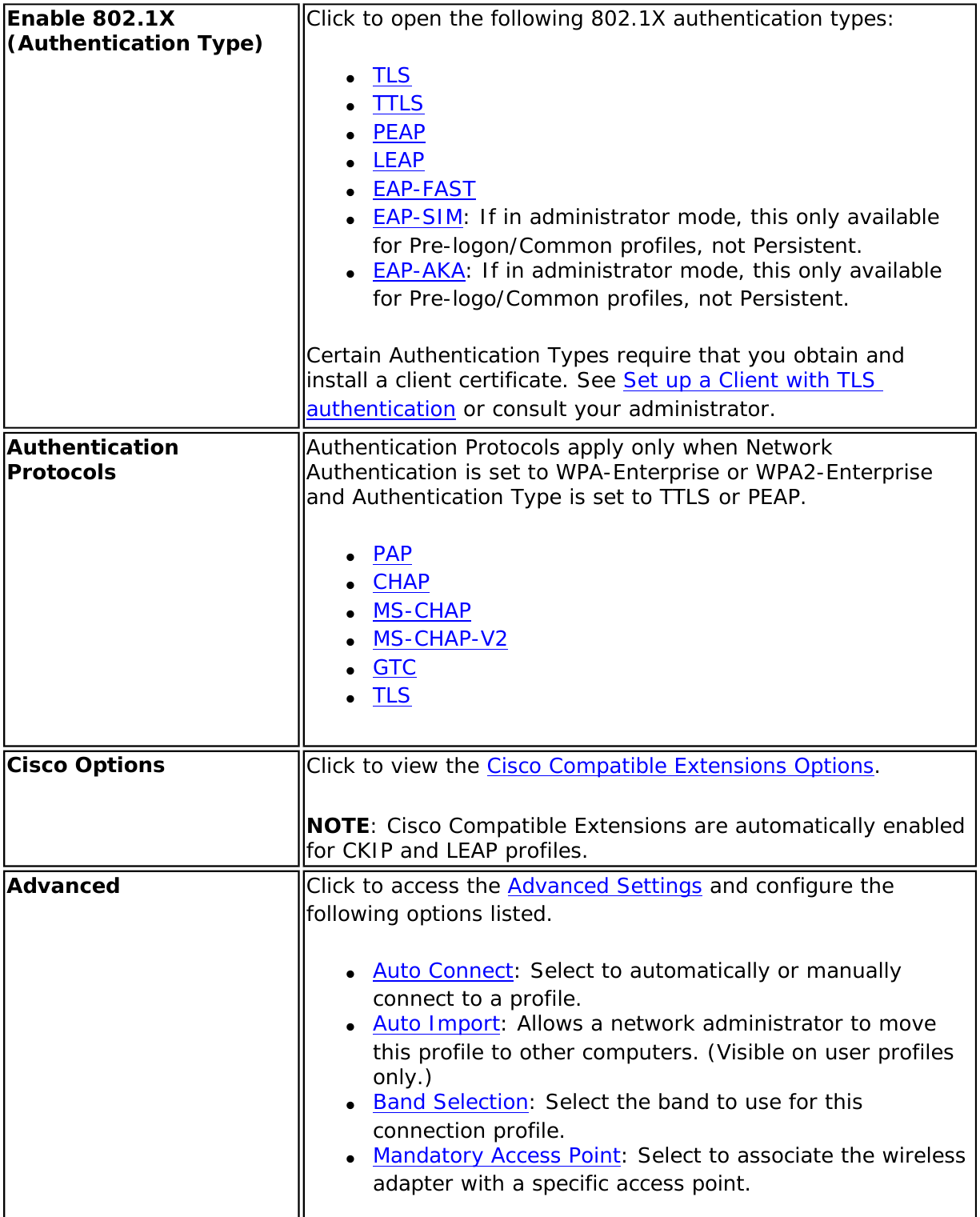
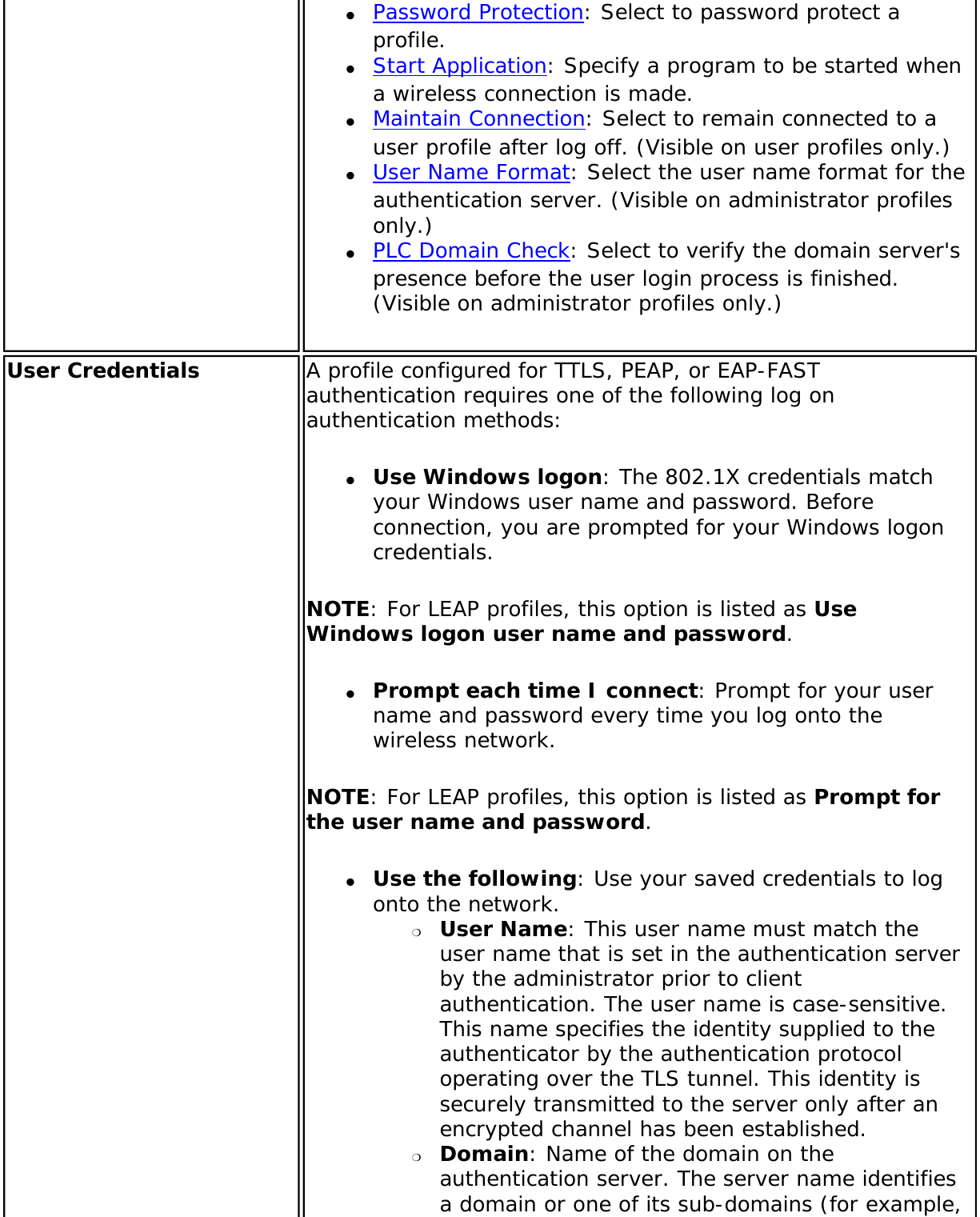
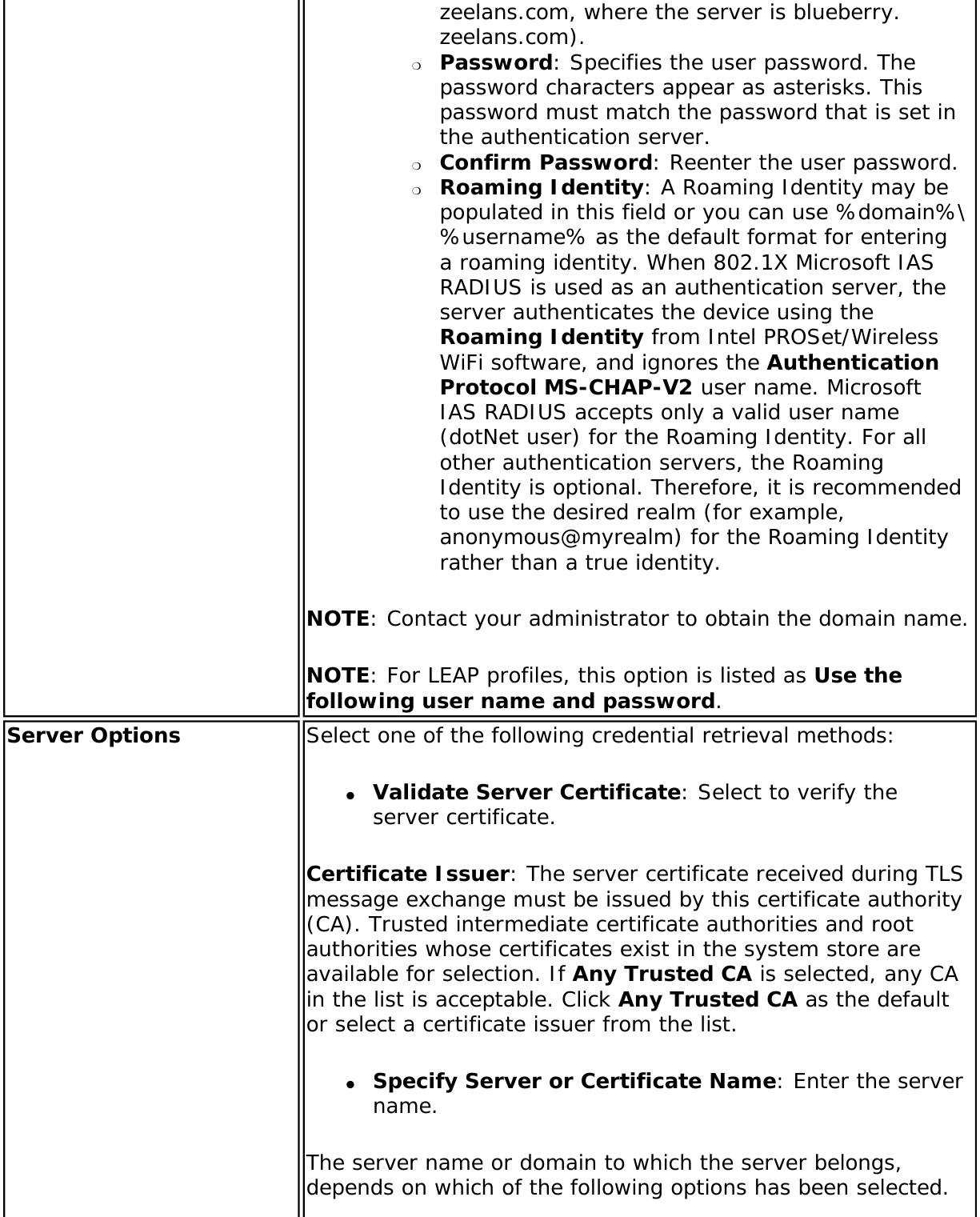
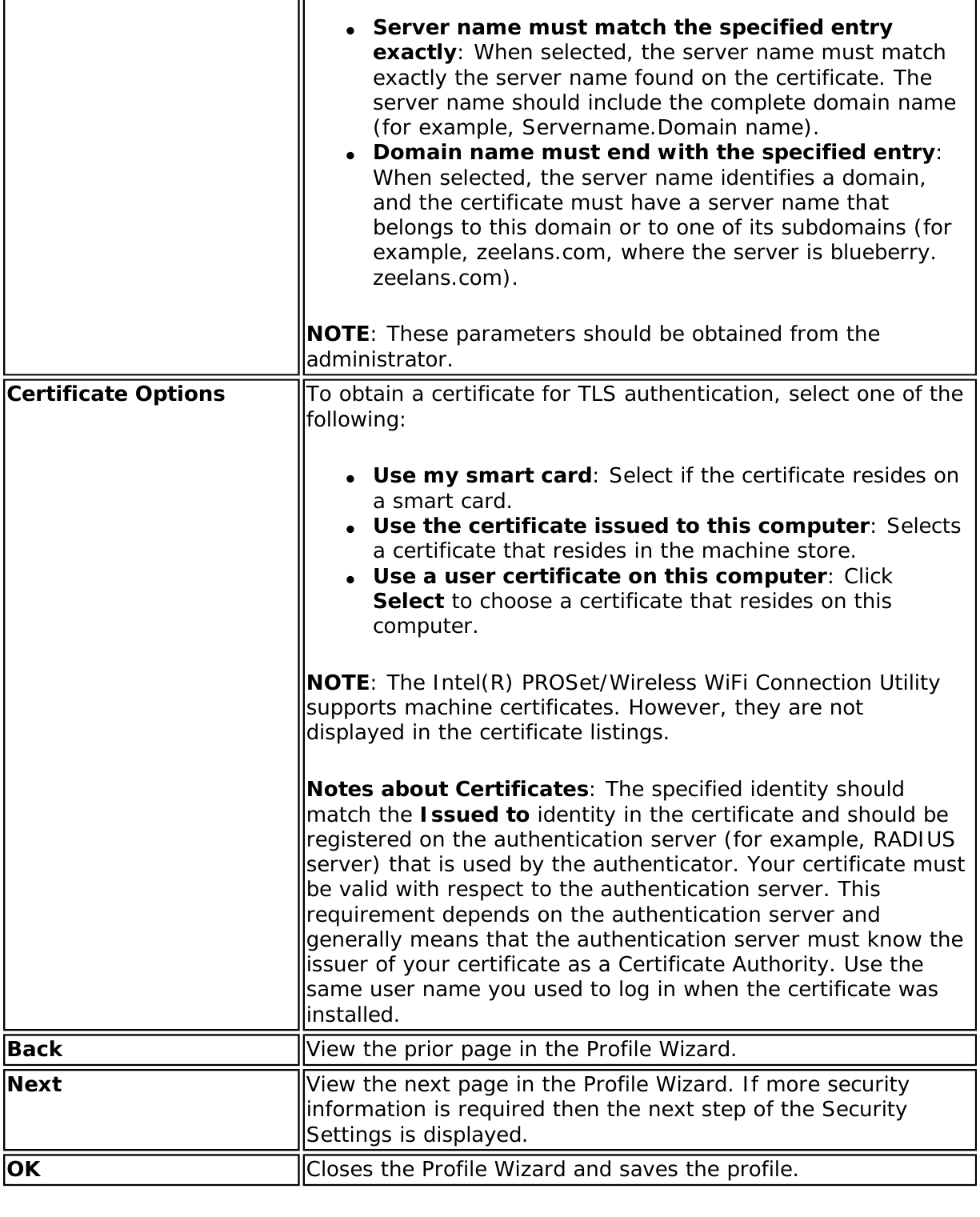

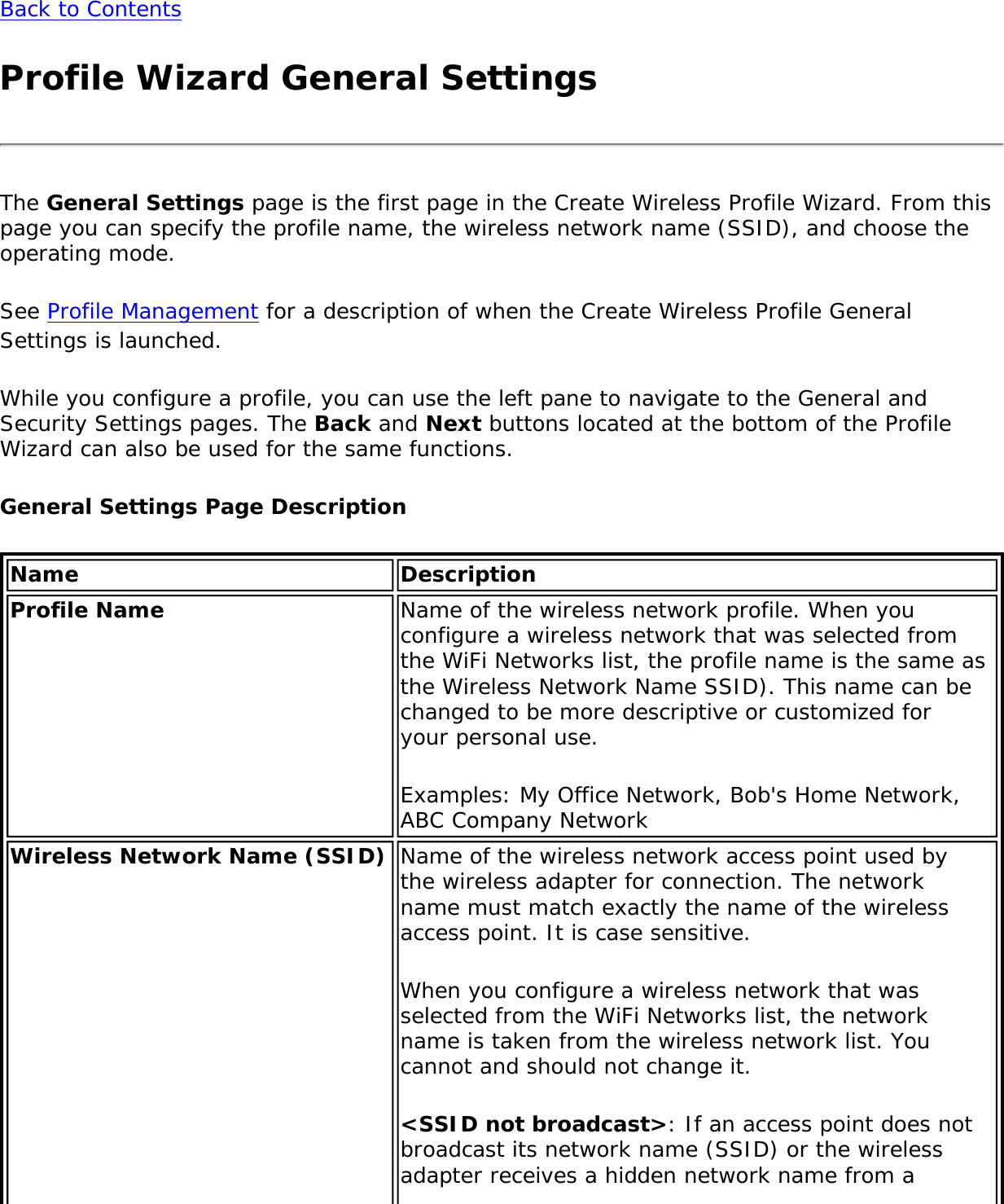
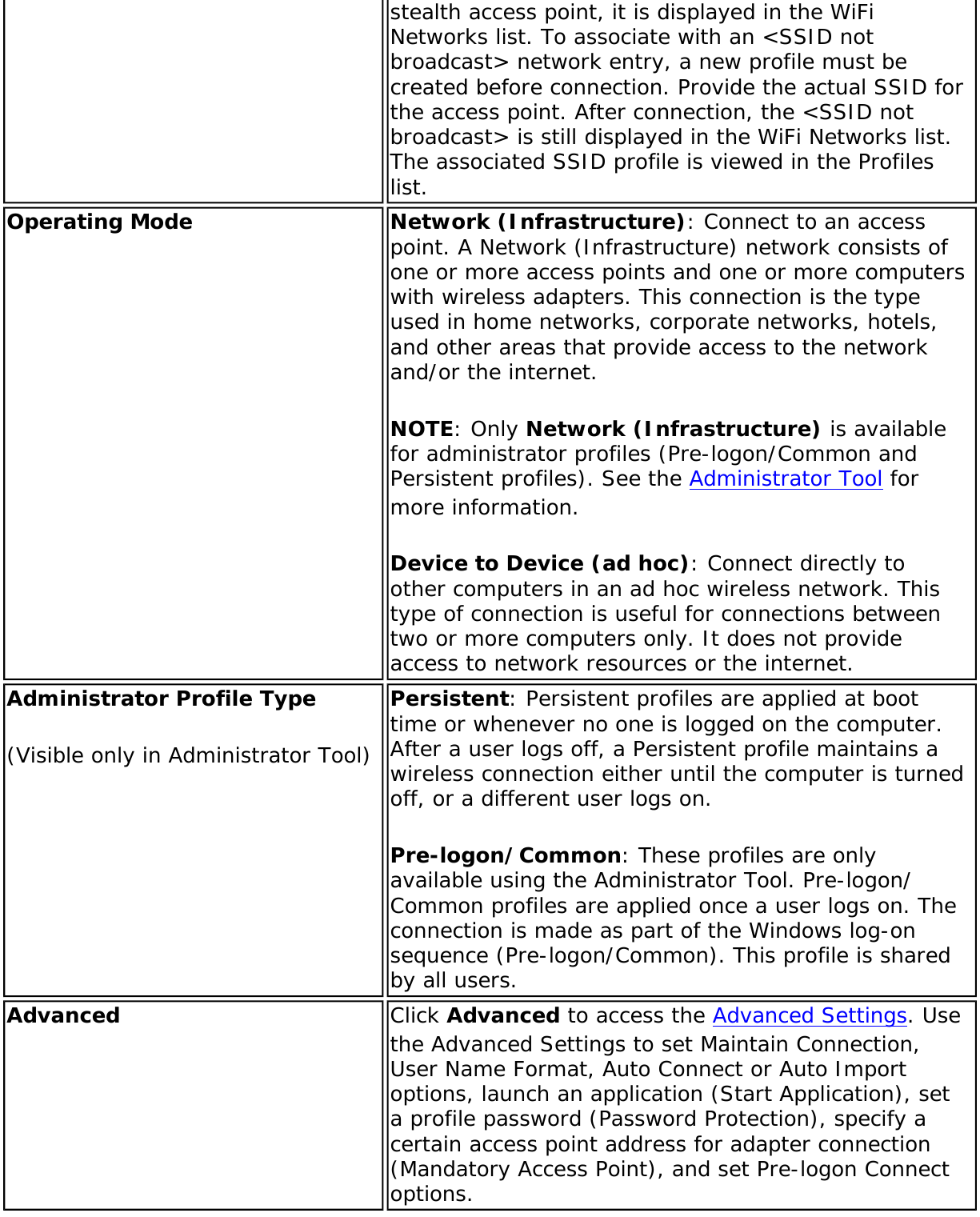
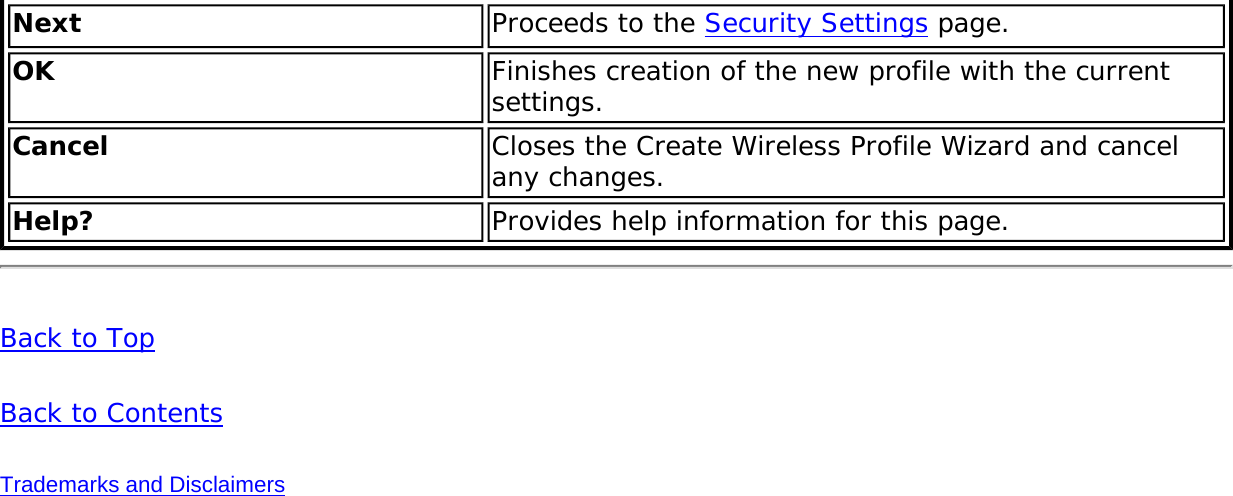
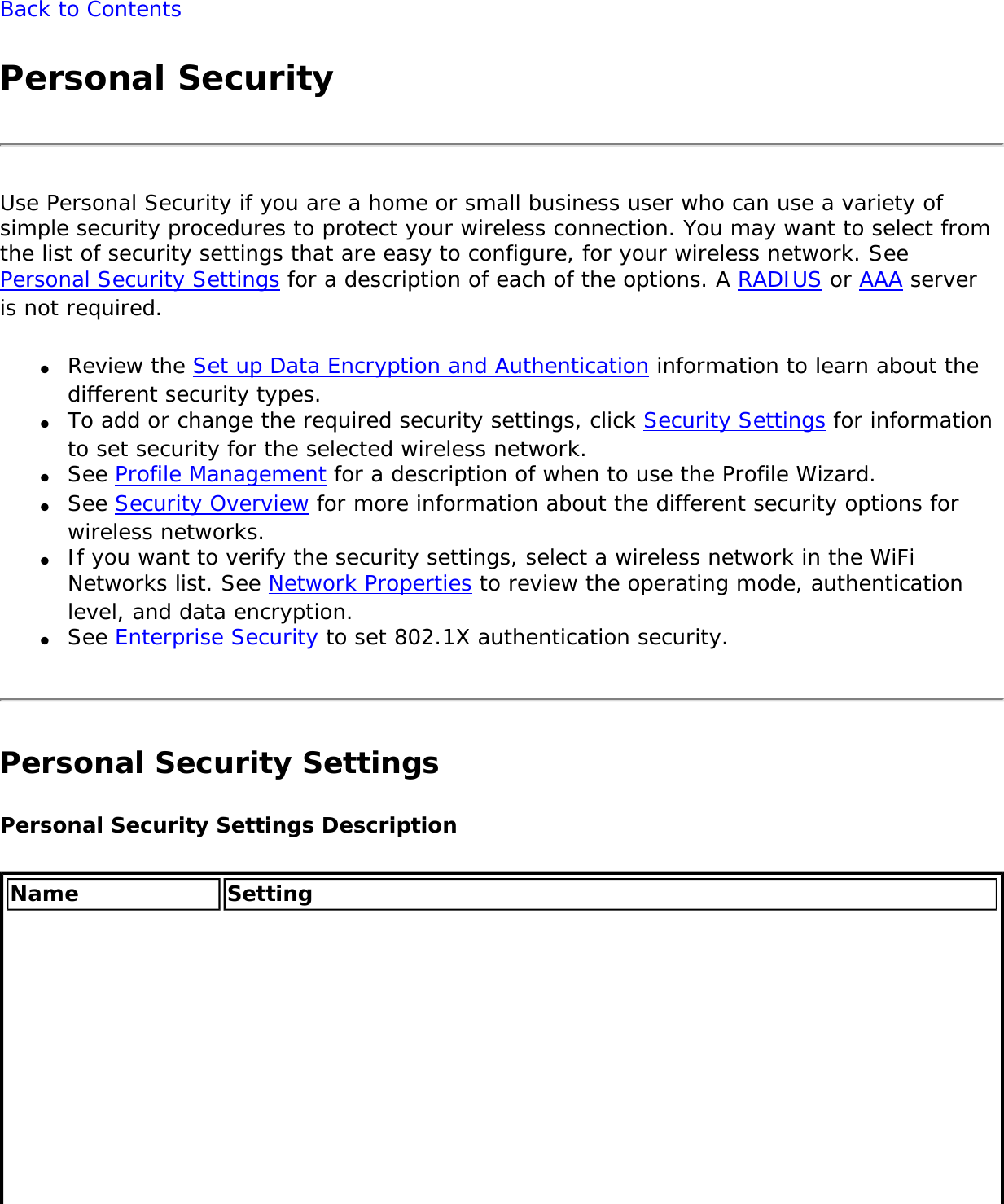
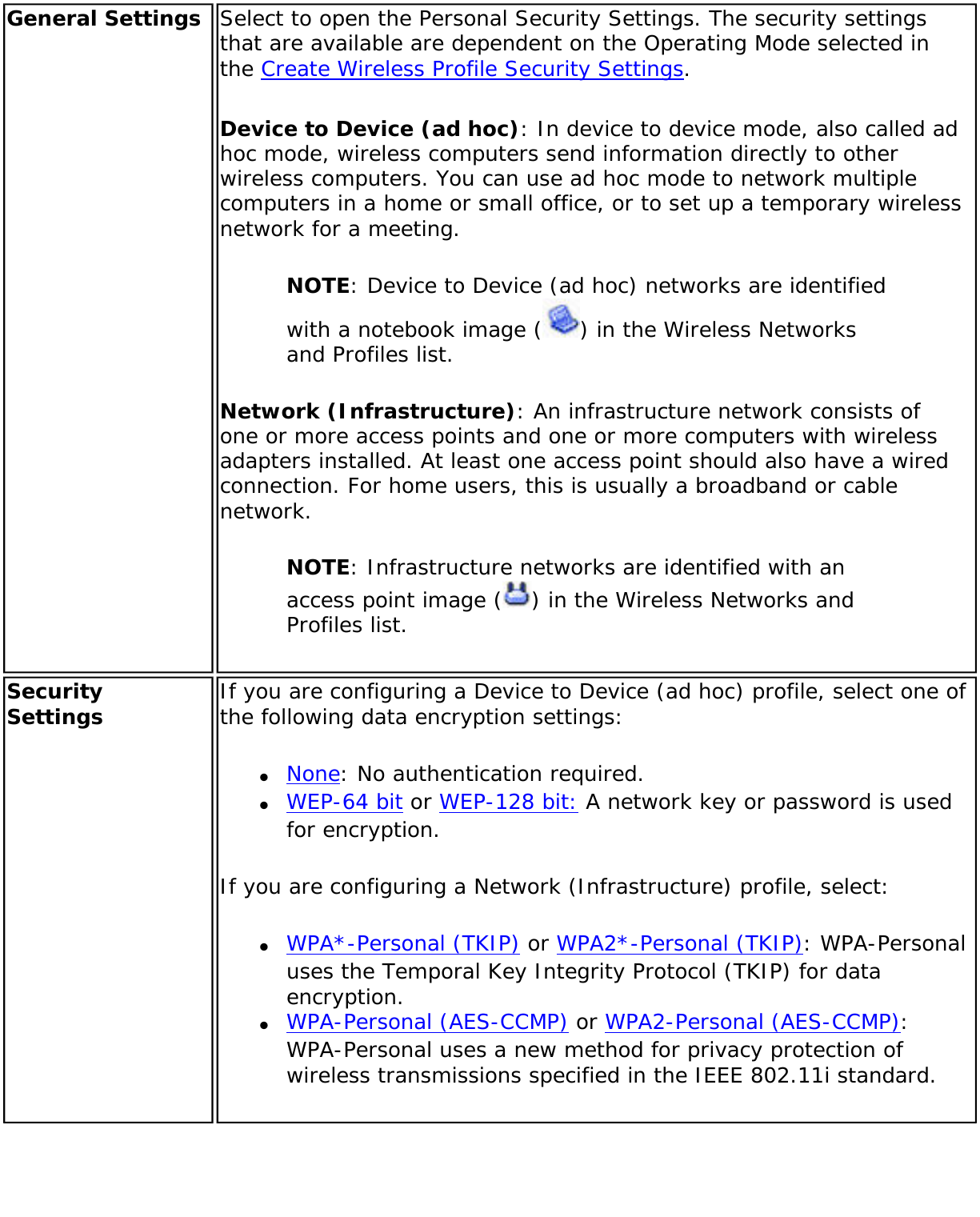
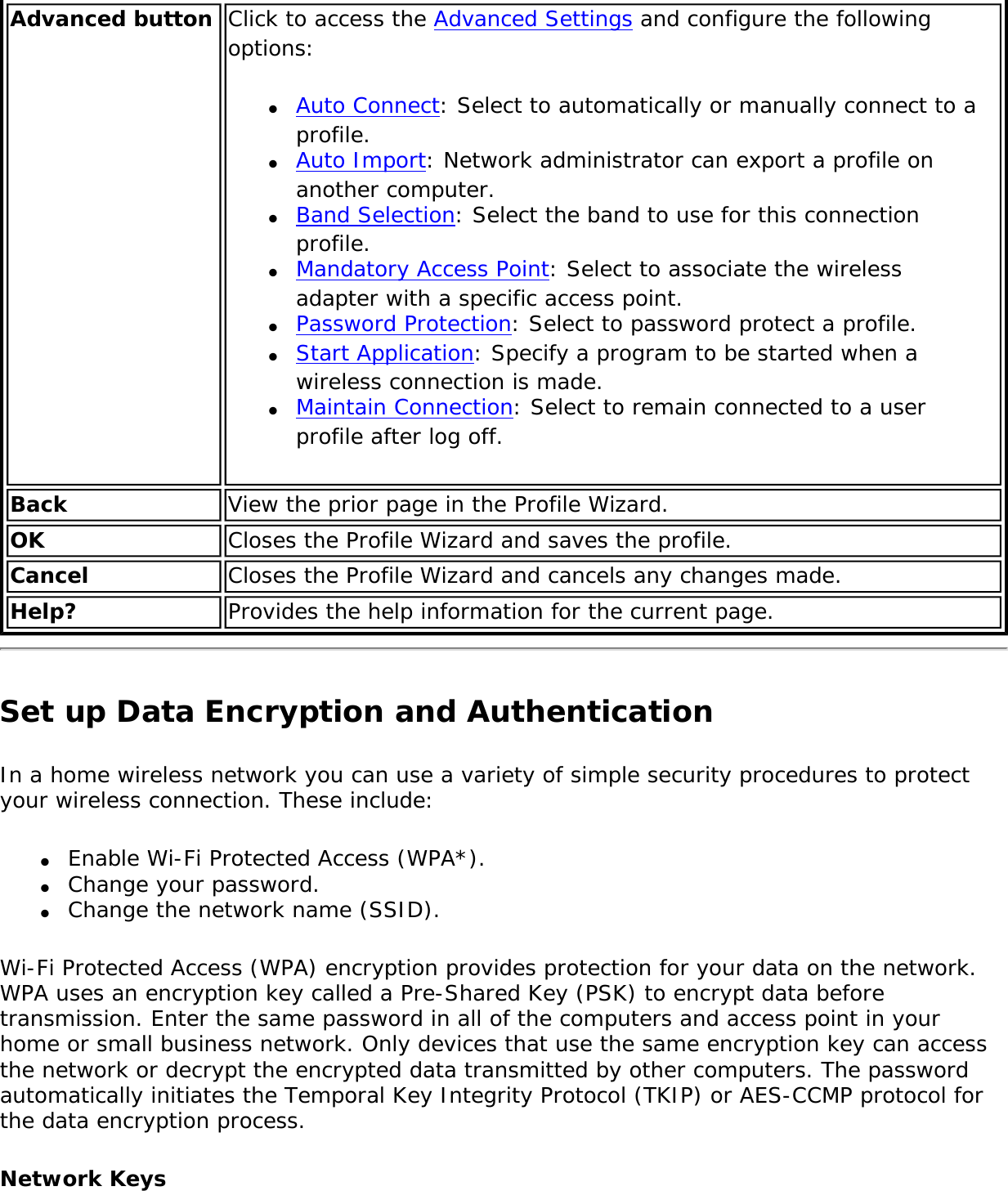
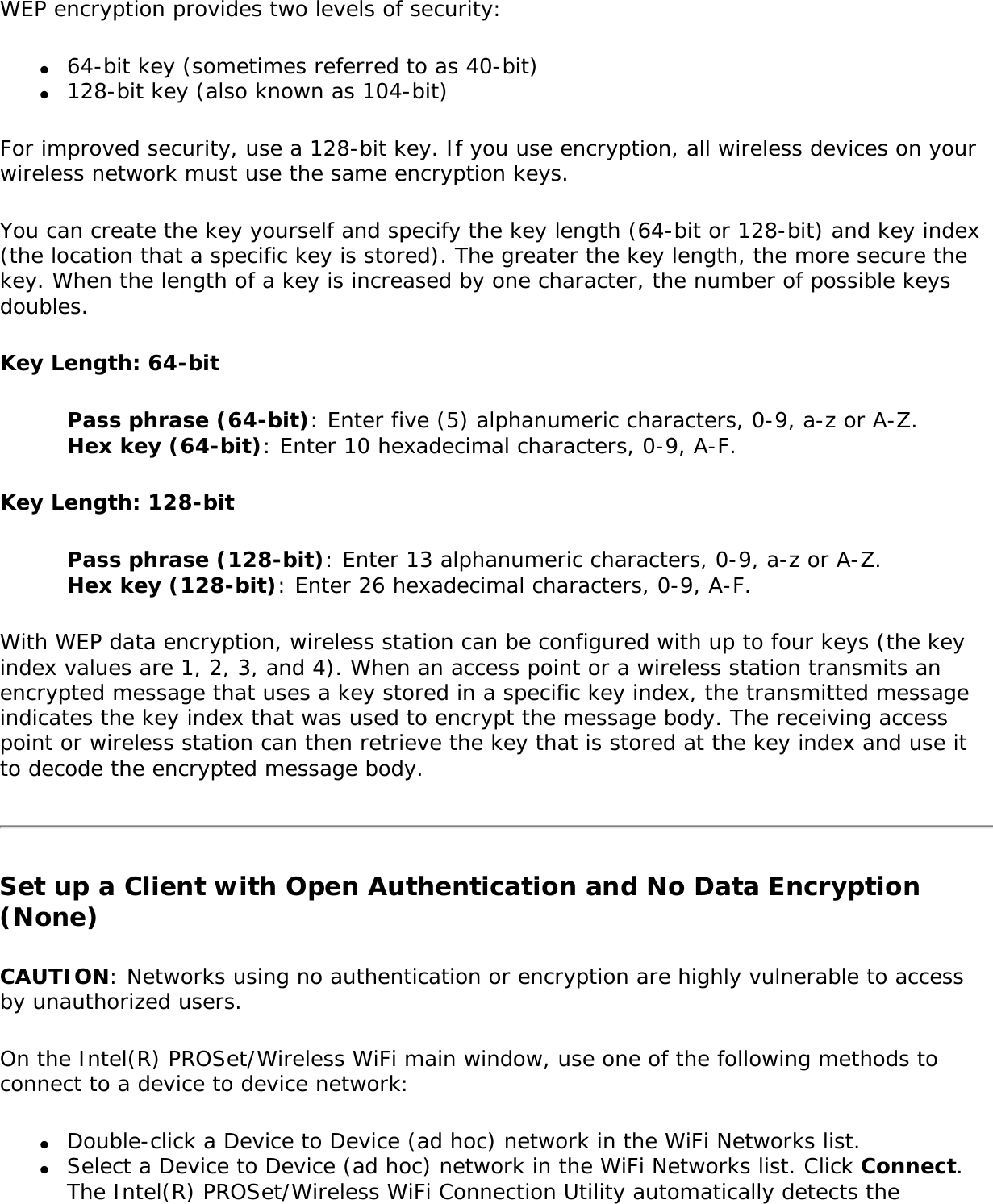
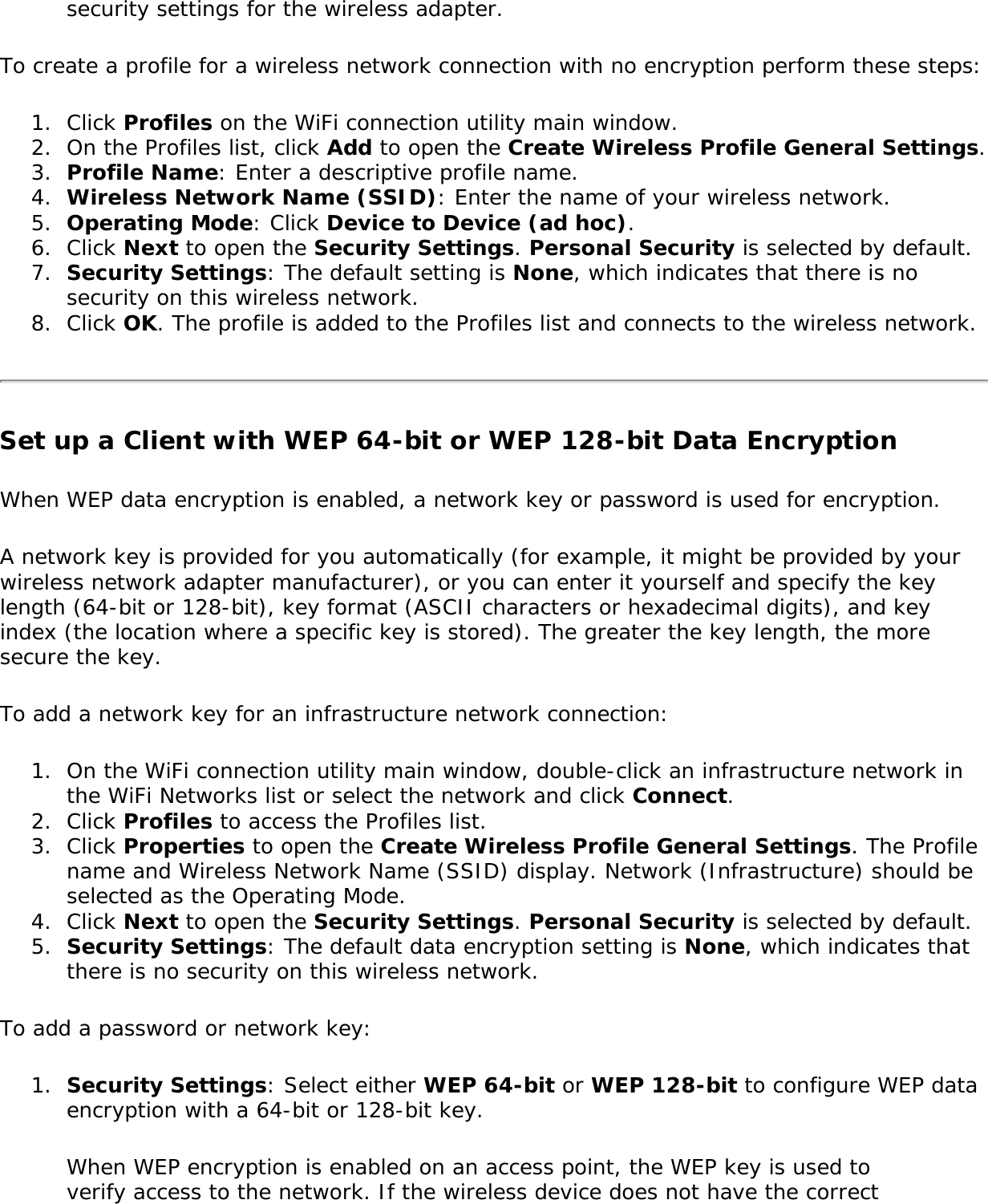
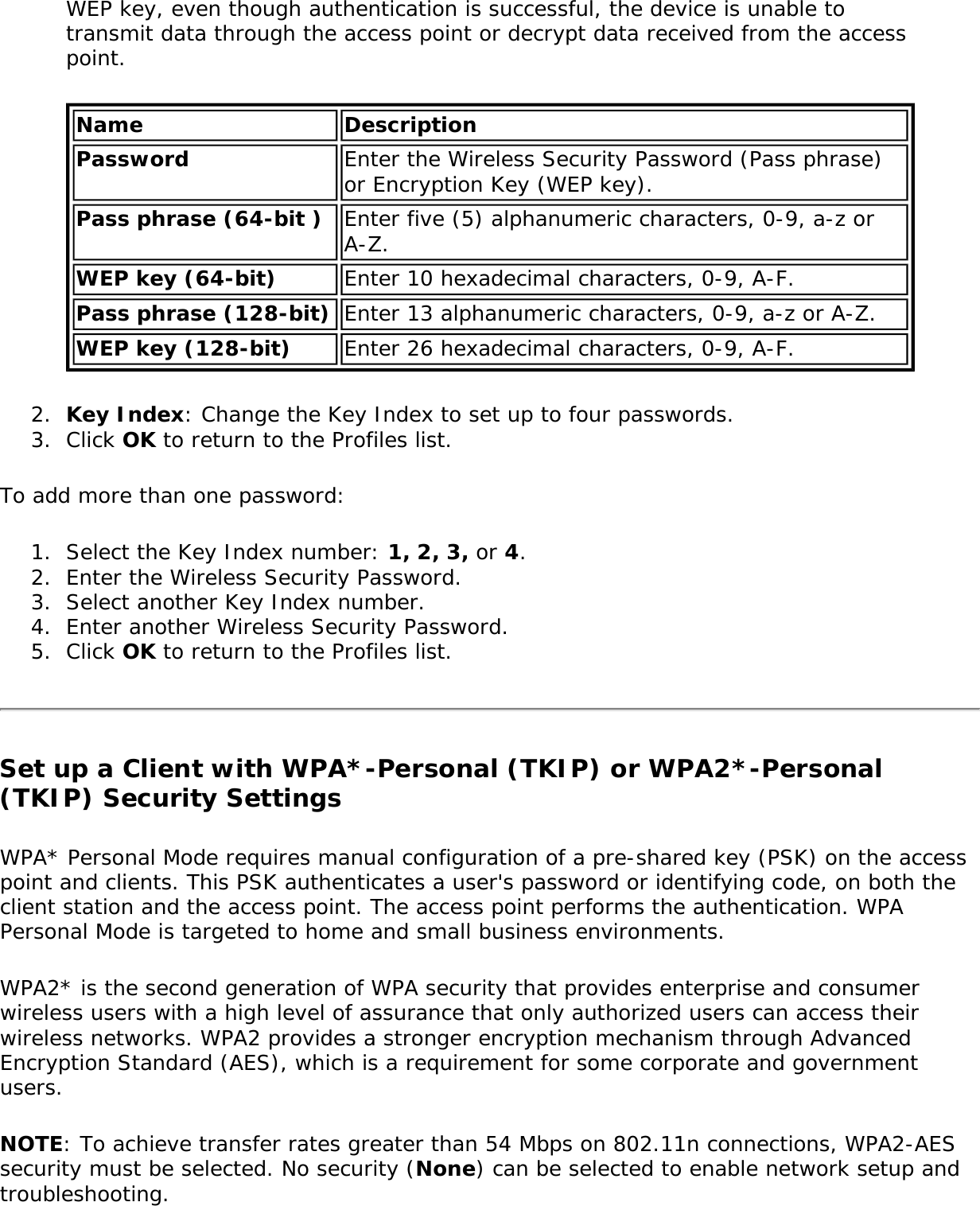
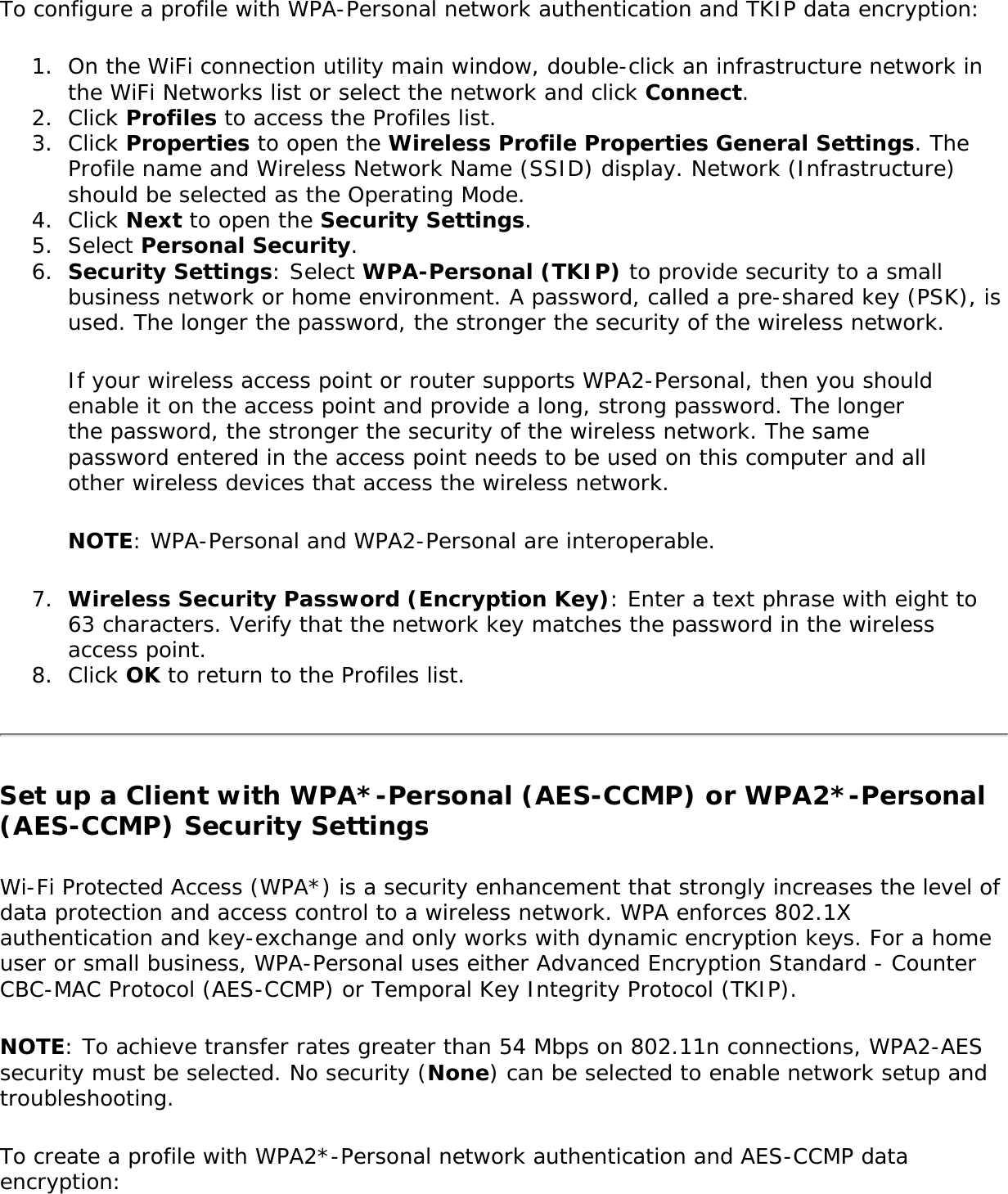
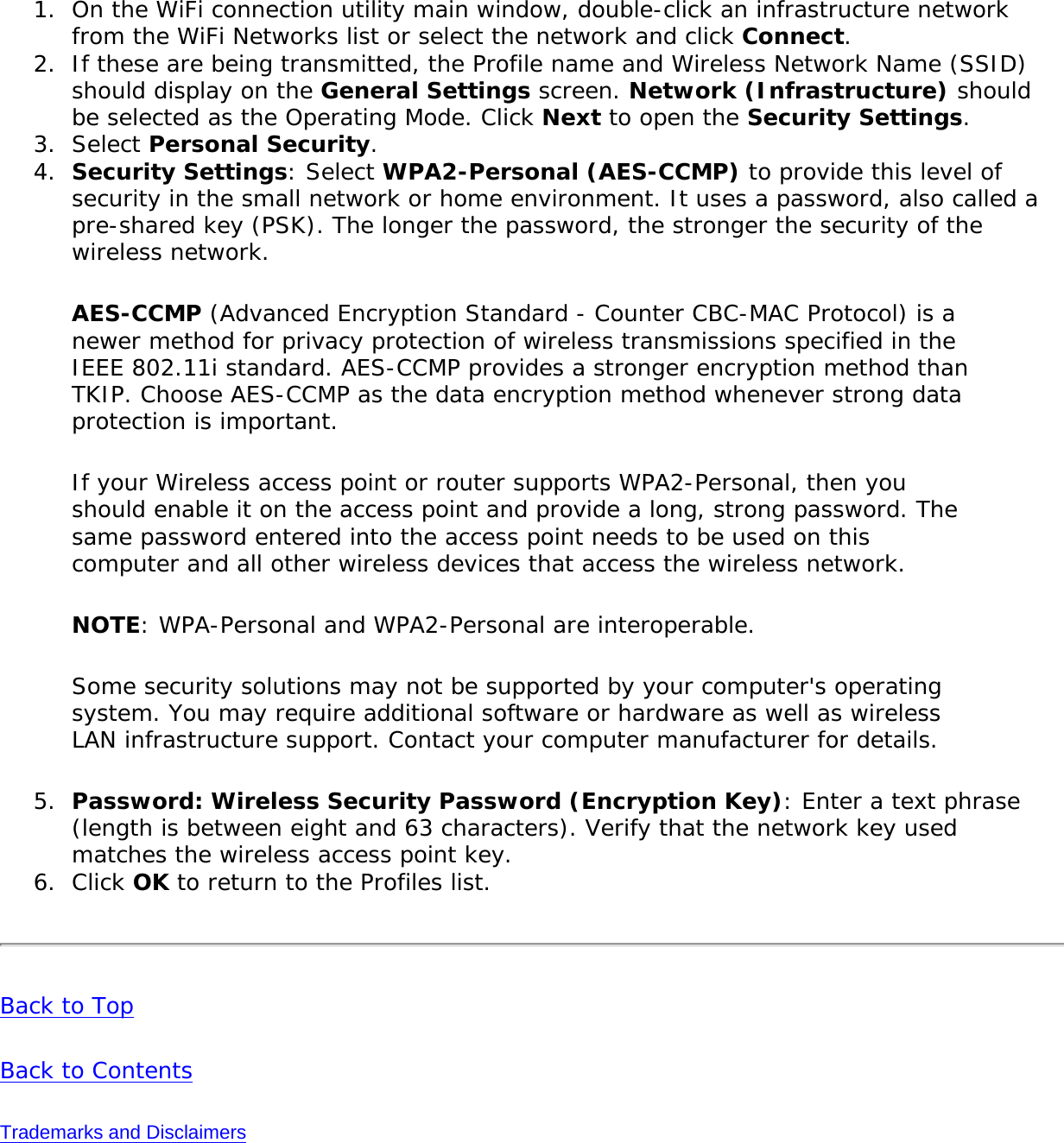
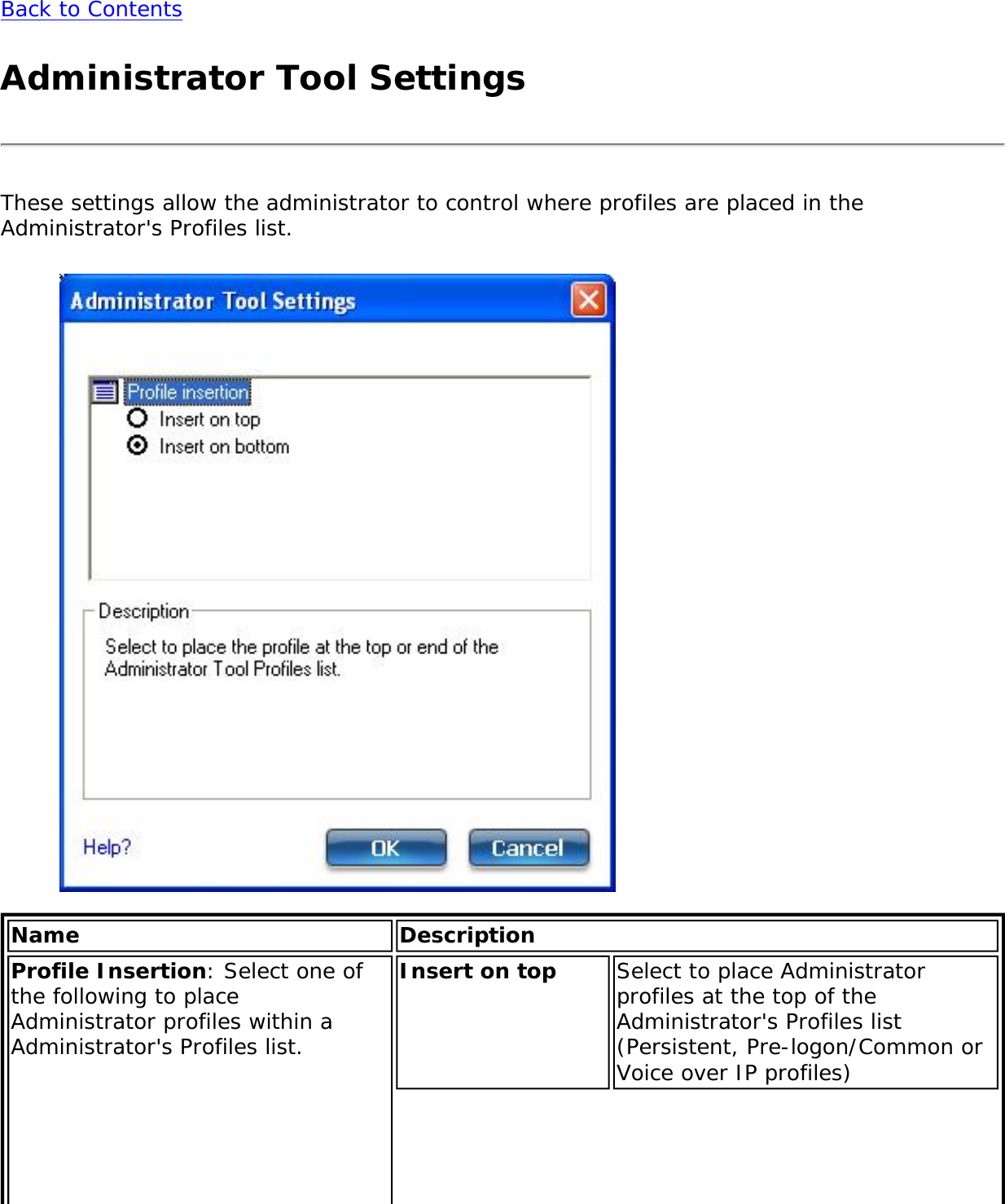
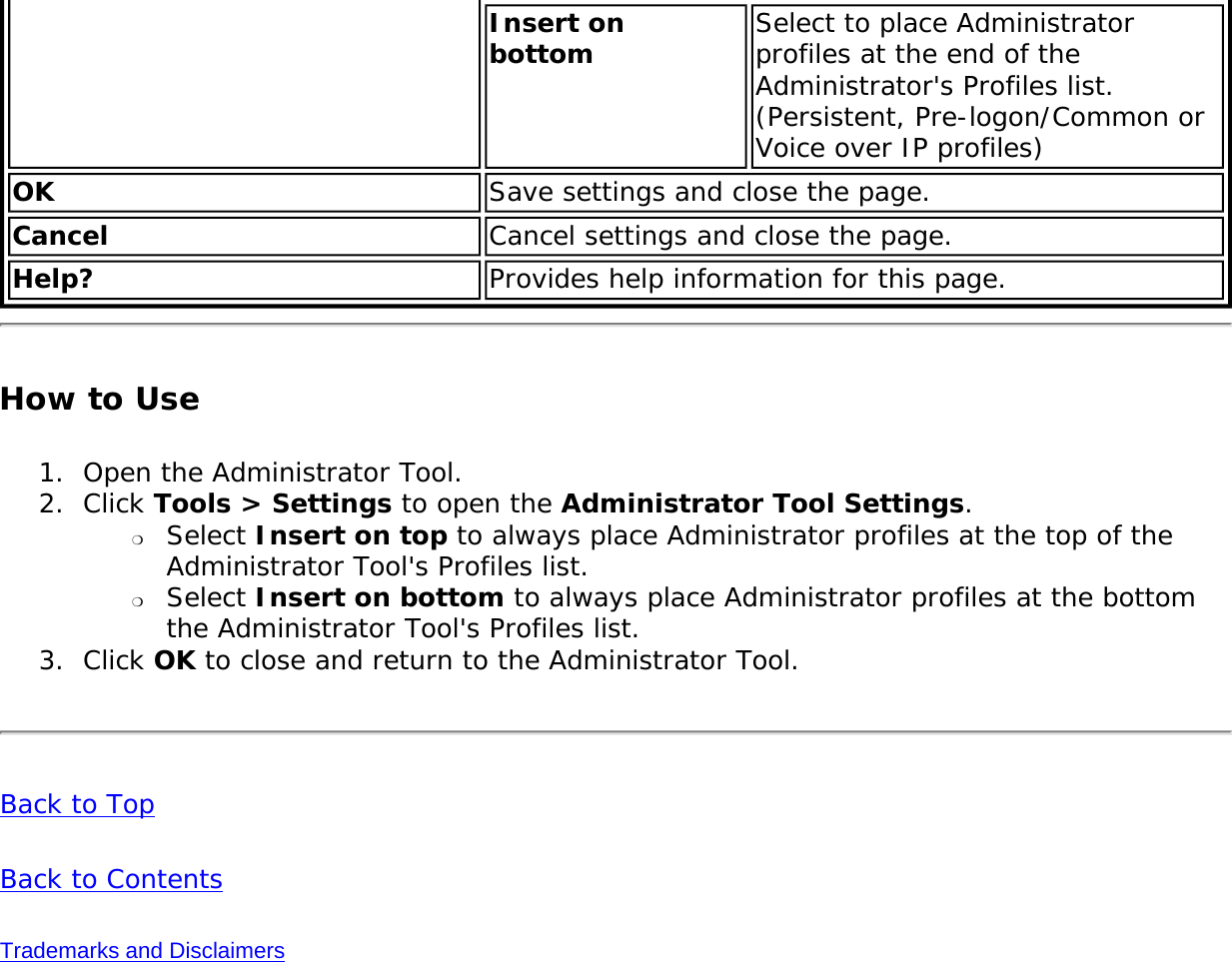
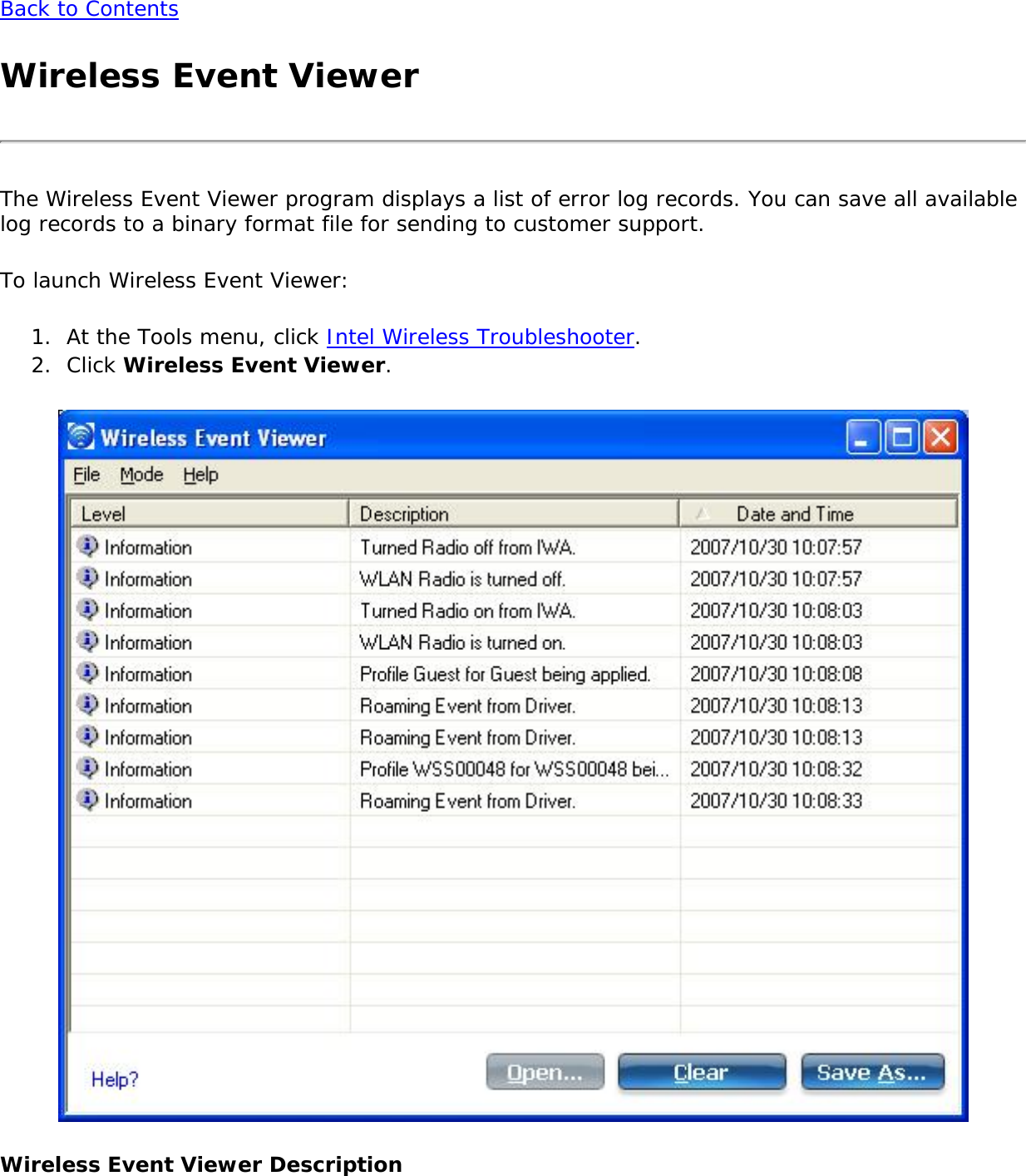
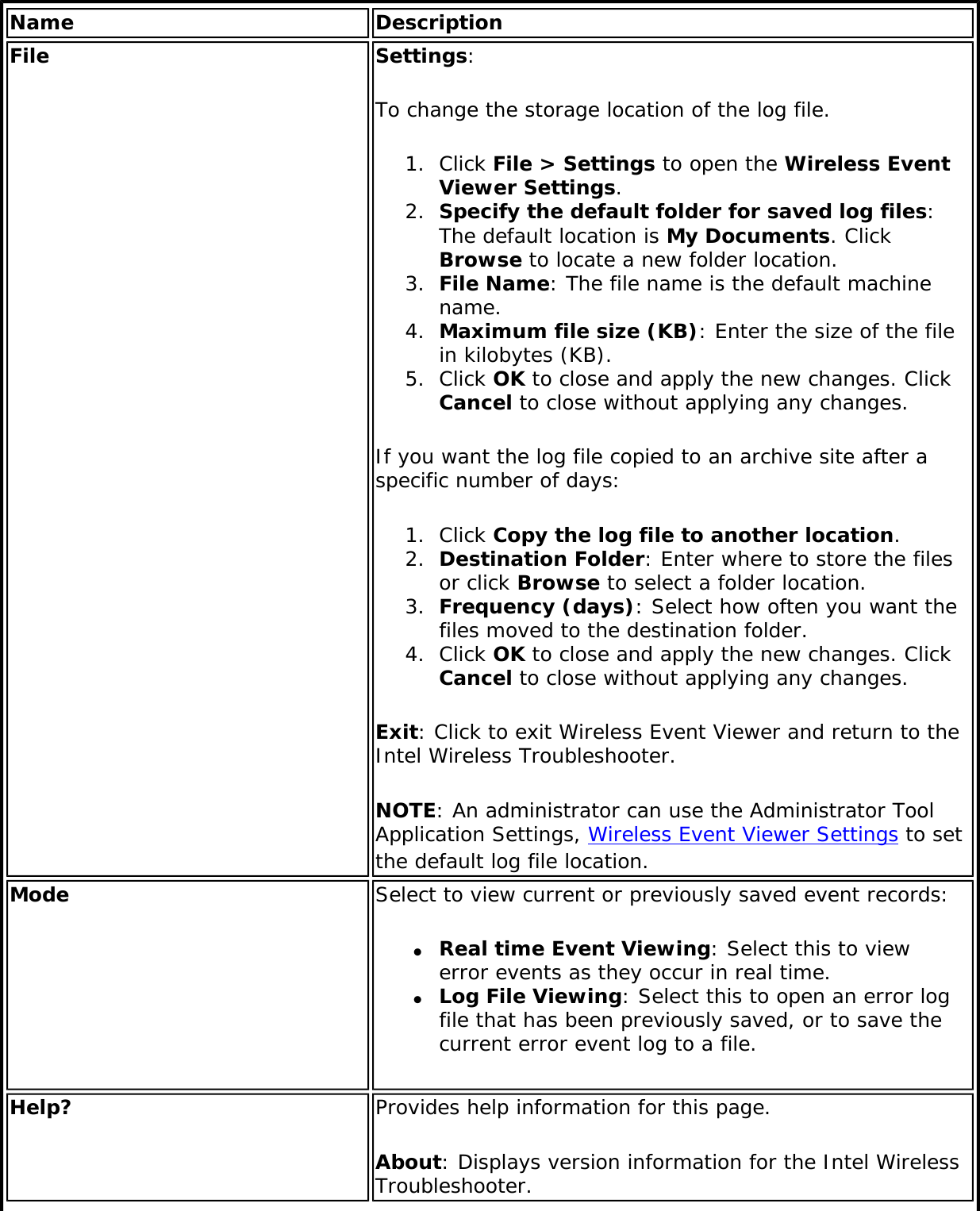
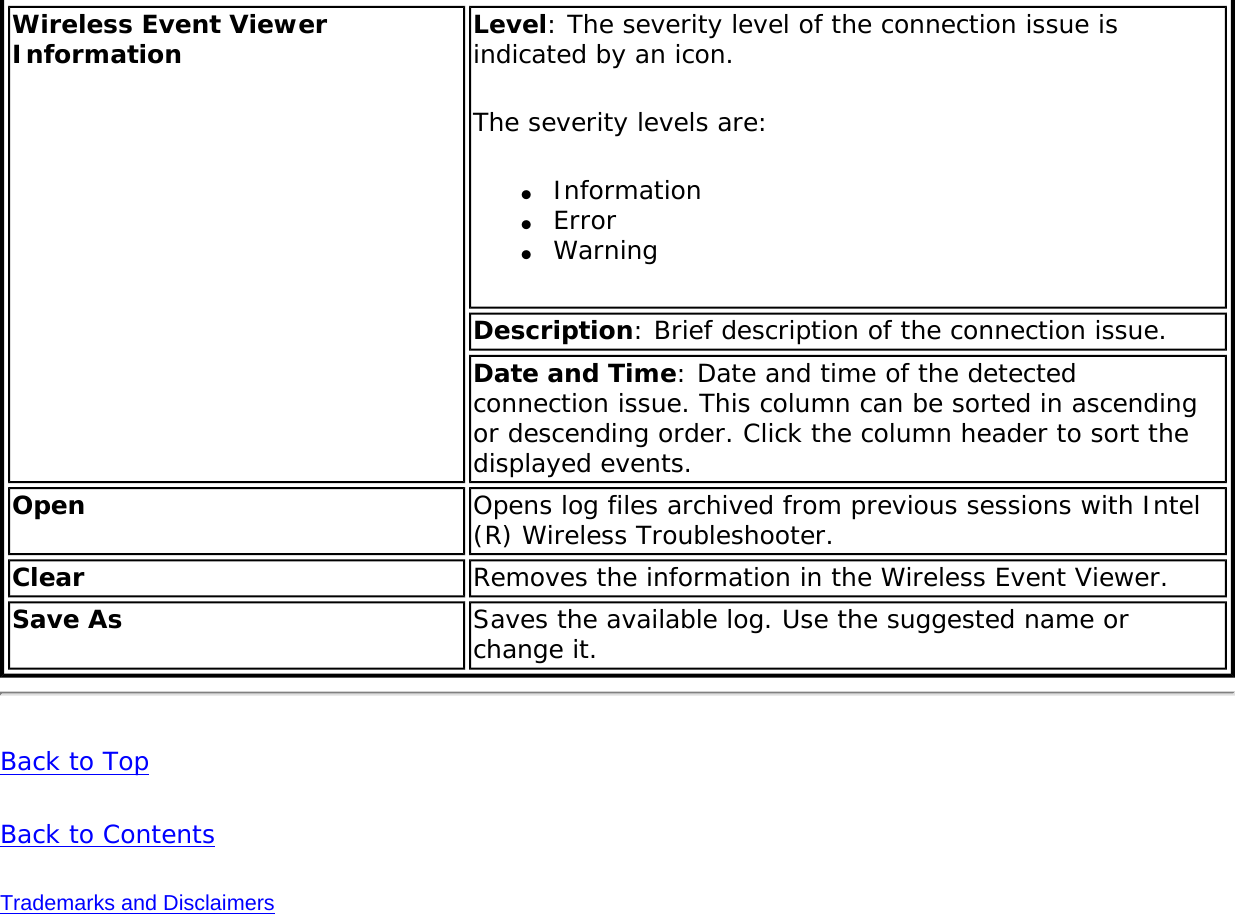
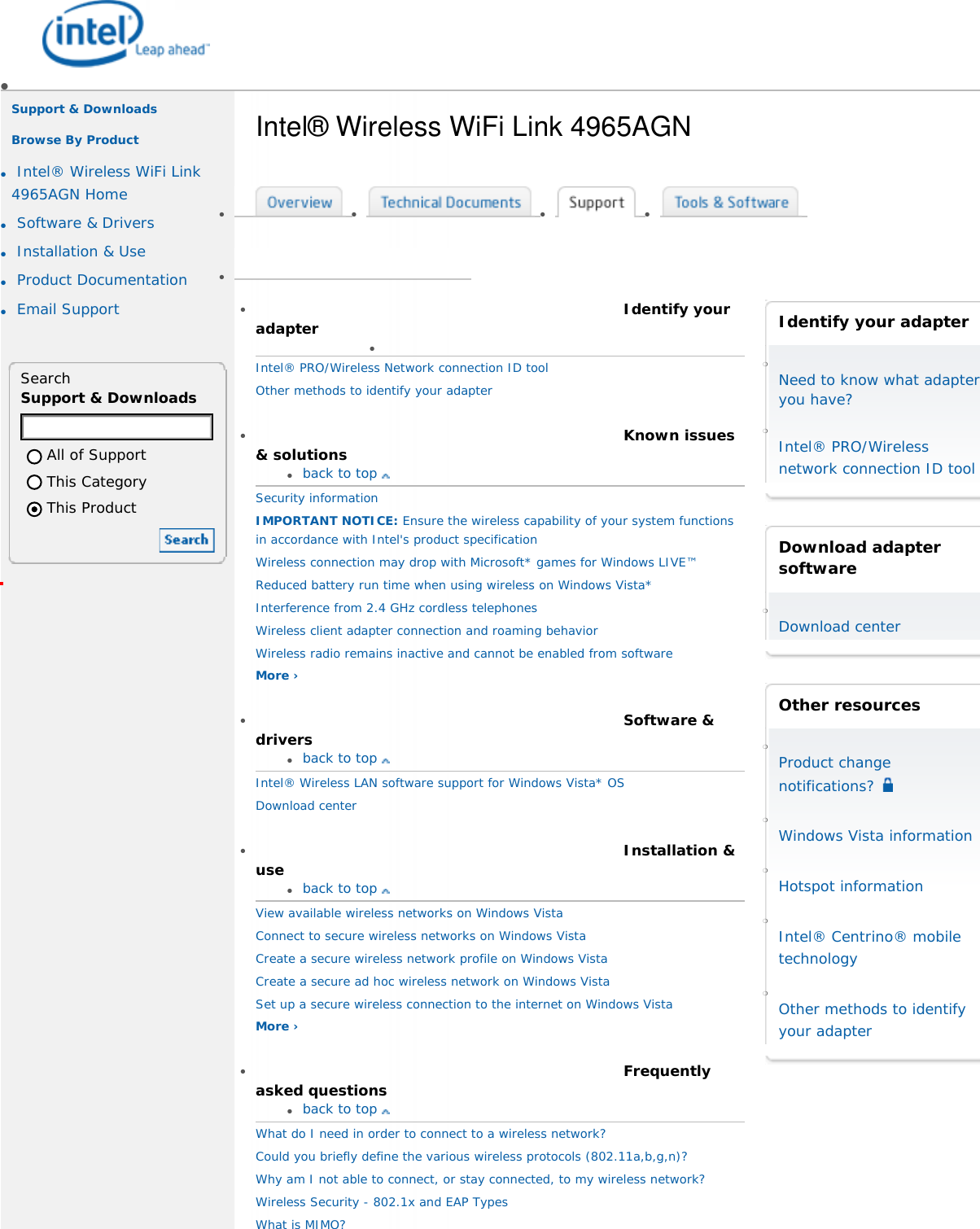
![More › ● Product documentation● back to top User guide Supported 802.11n APs Product brief [PDF]Currently supported 802.11 wireless LAN products More › ● ❍ Site Map ❍ RSS Feeds ❍ Jobs at Intel ❍ Investor Relations● ❍ *Legal Information ❍ Privacy Policy ❍ ©Intel Corporation](https://usermanual.wiki/Intel/533ANH.XP-User-Guide-2-of-2/User-Guide-964561-Page-183.png)